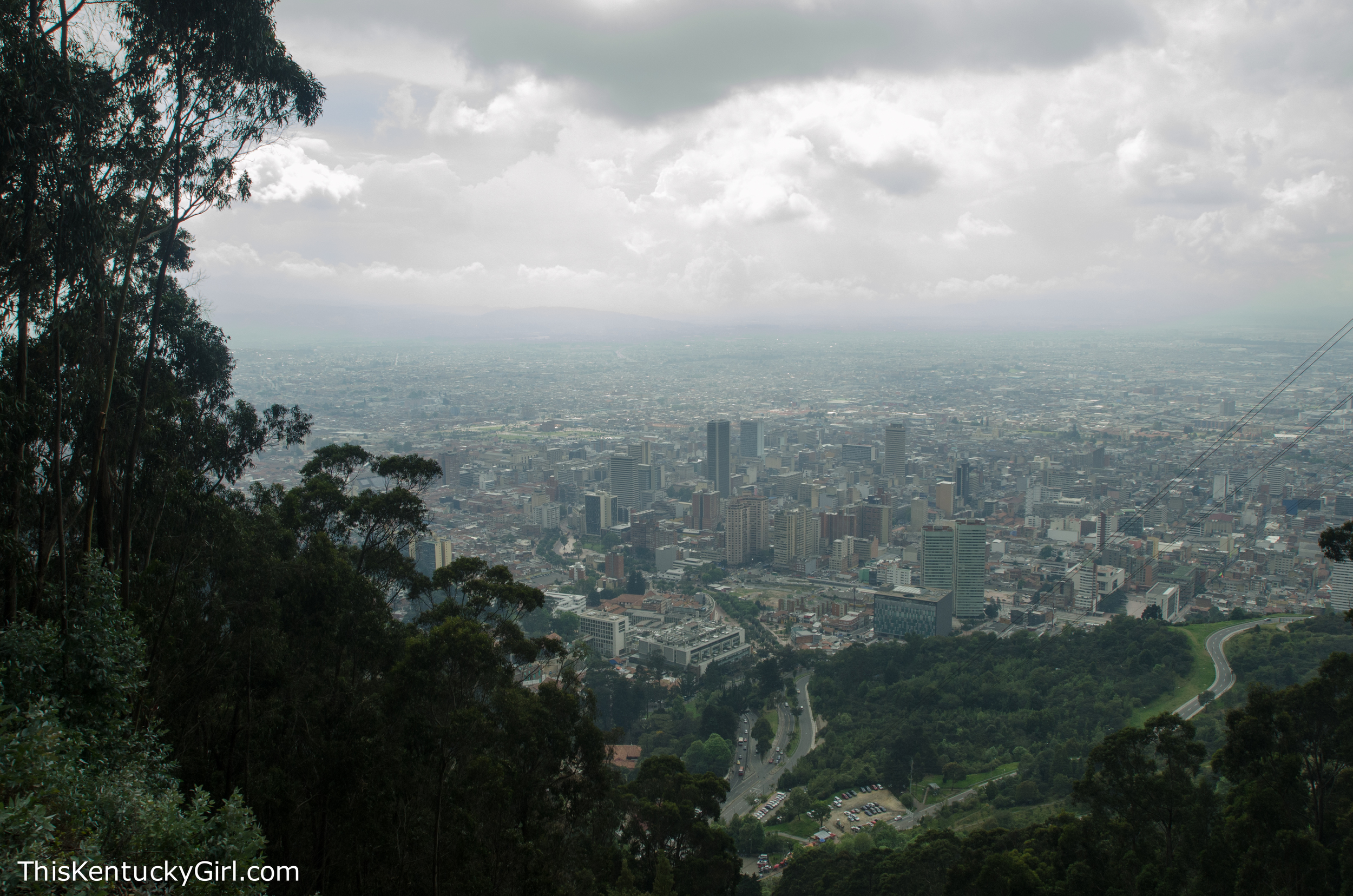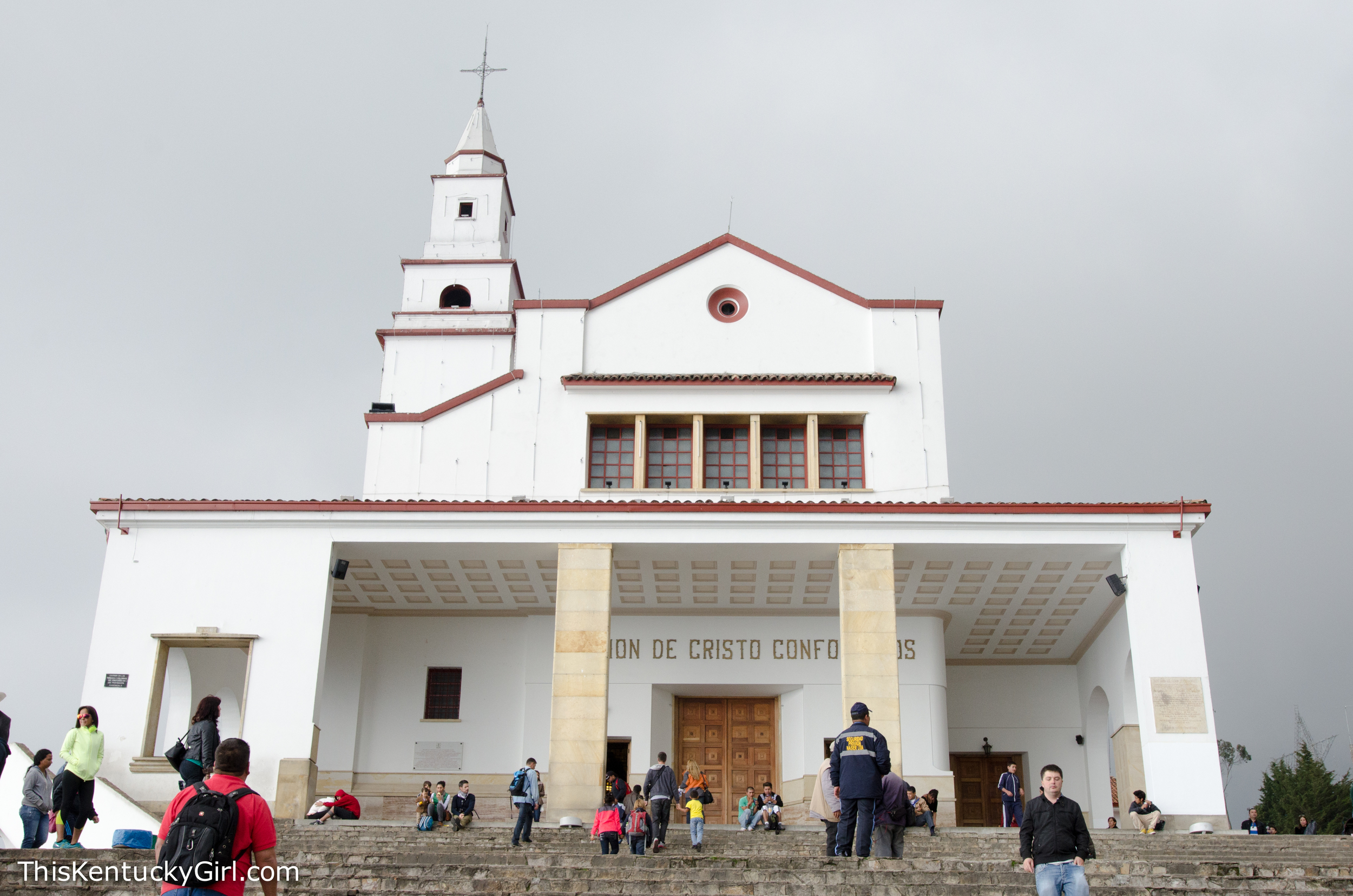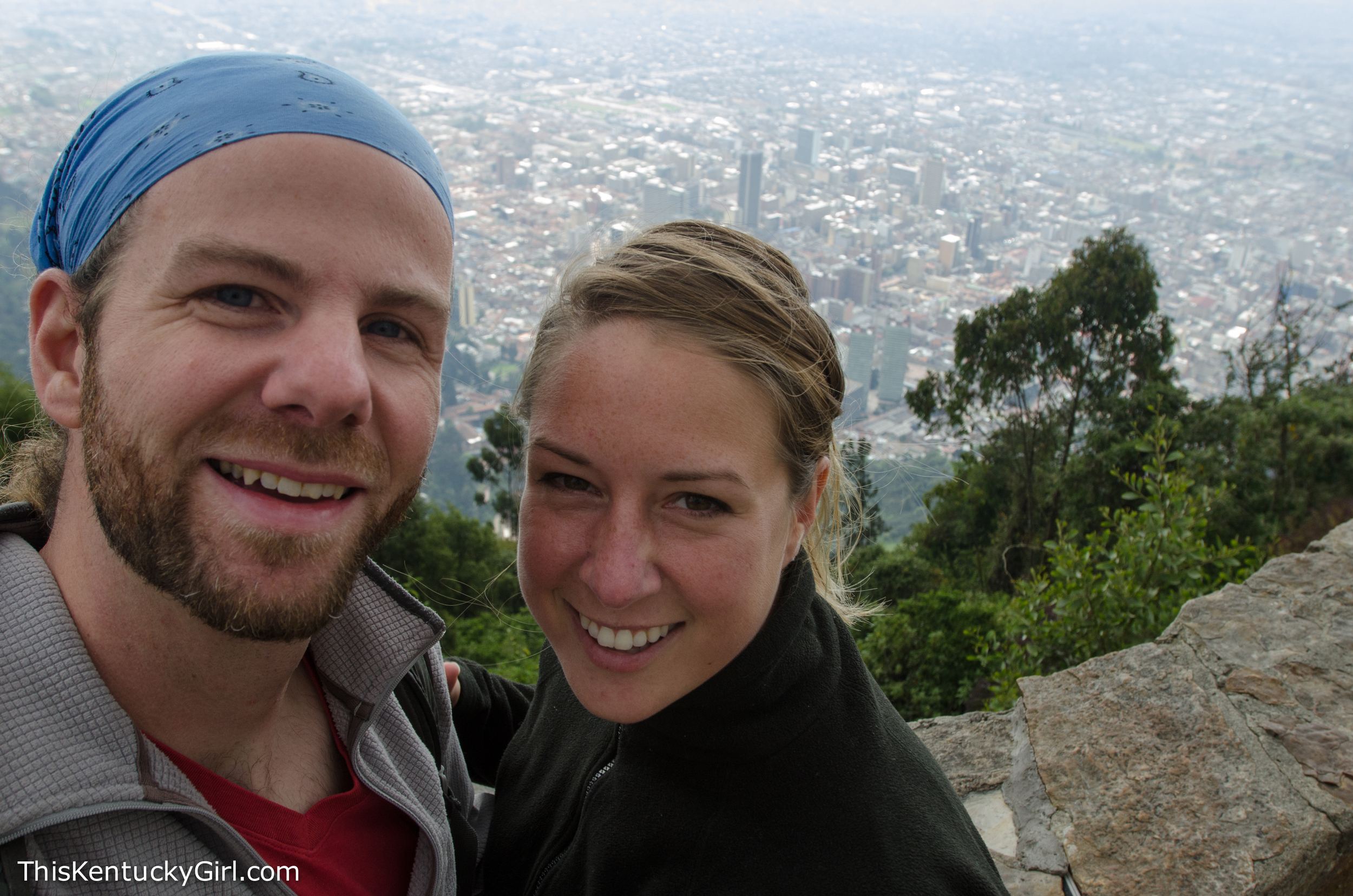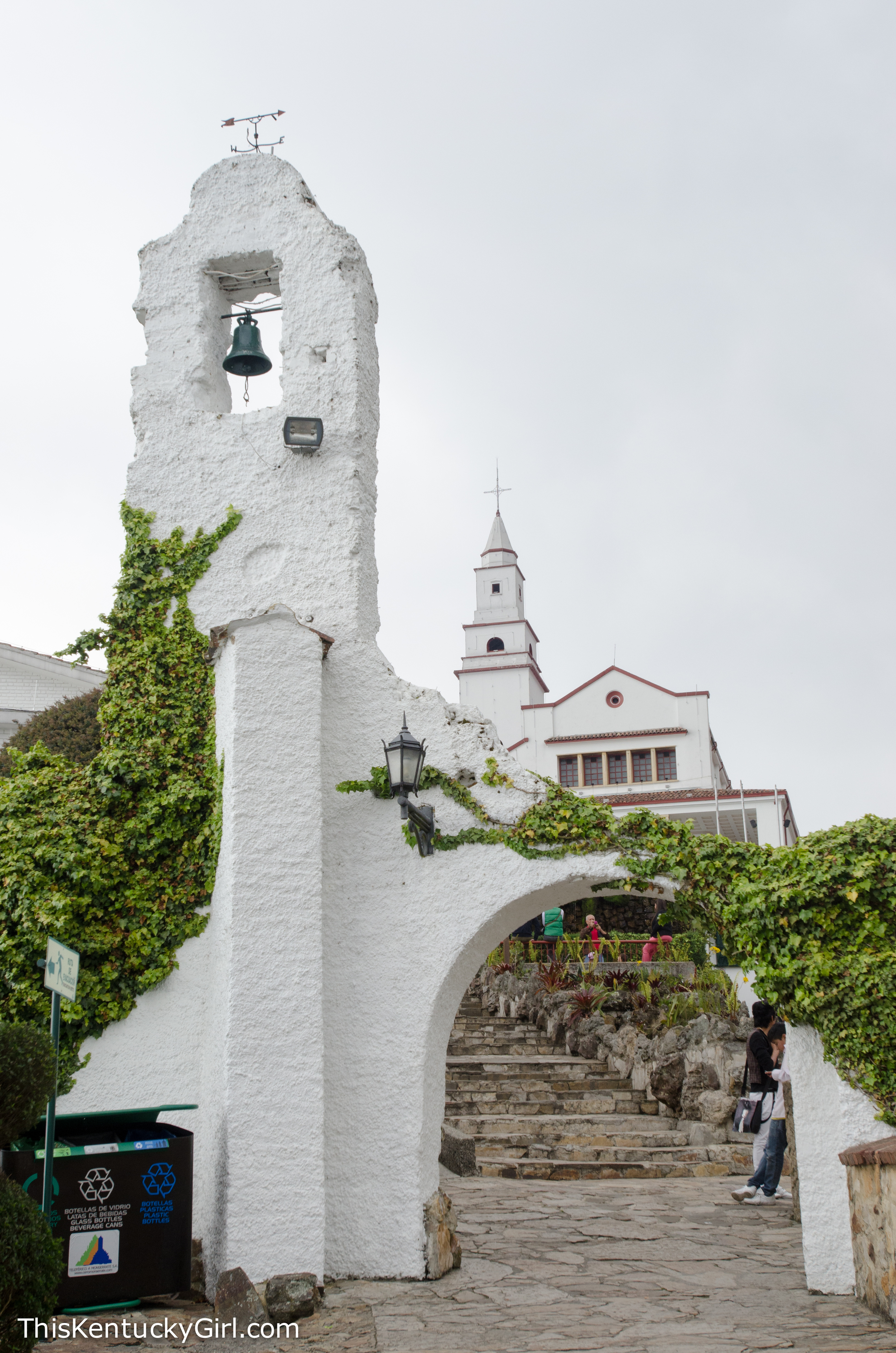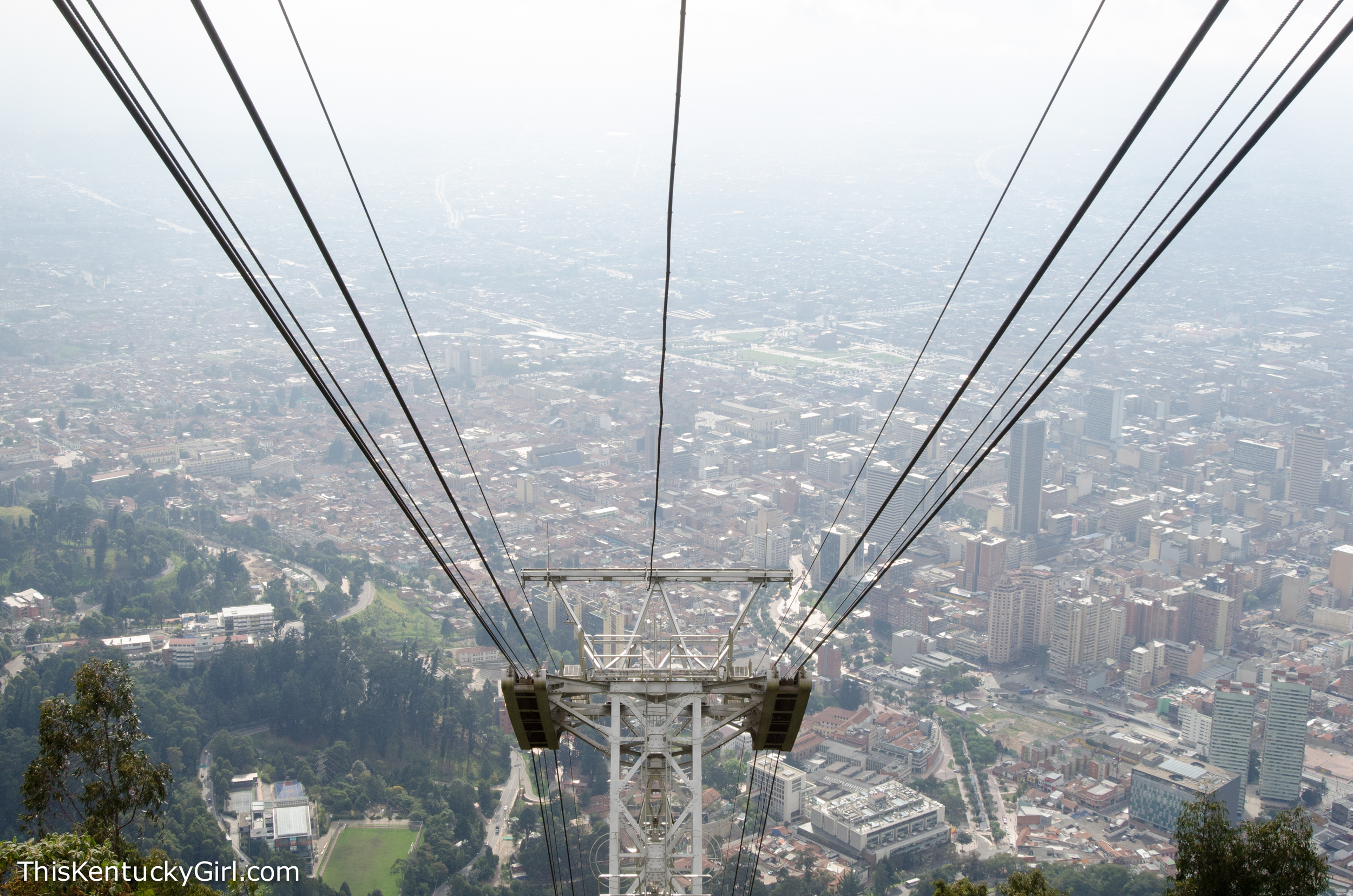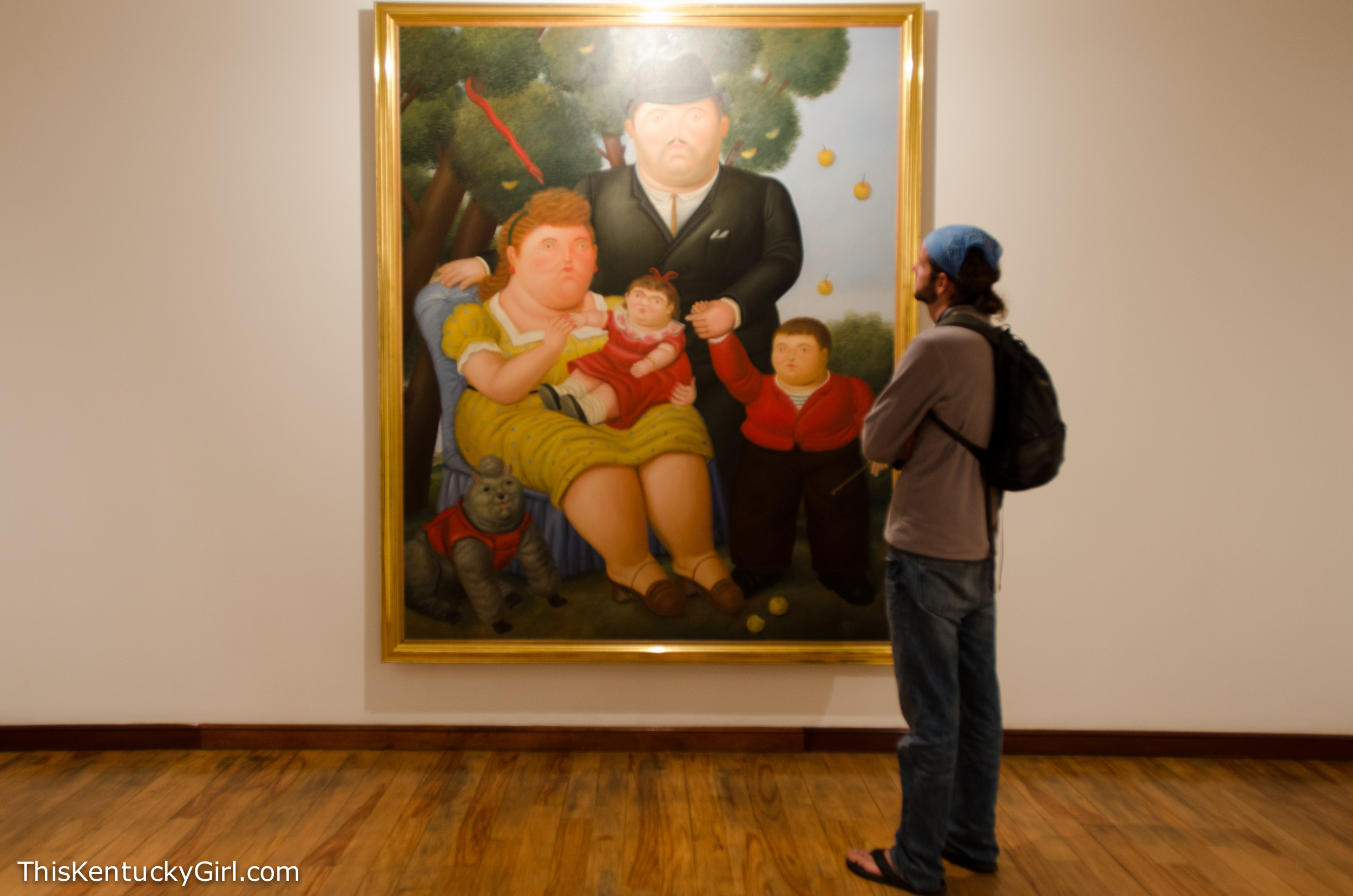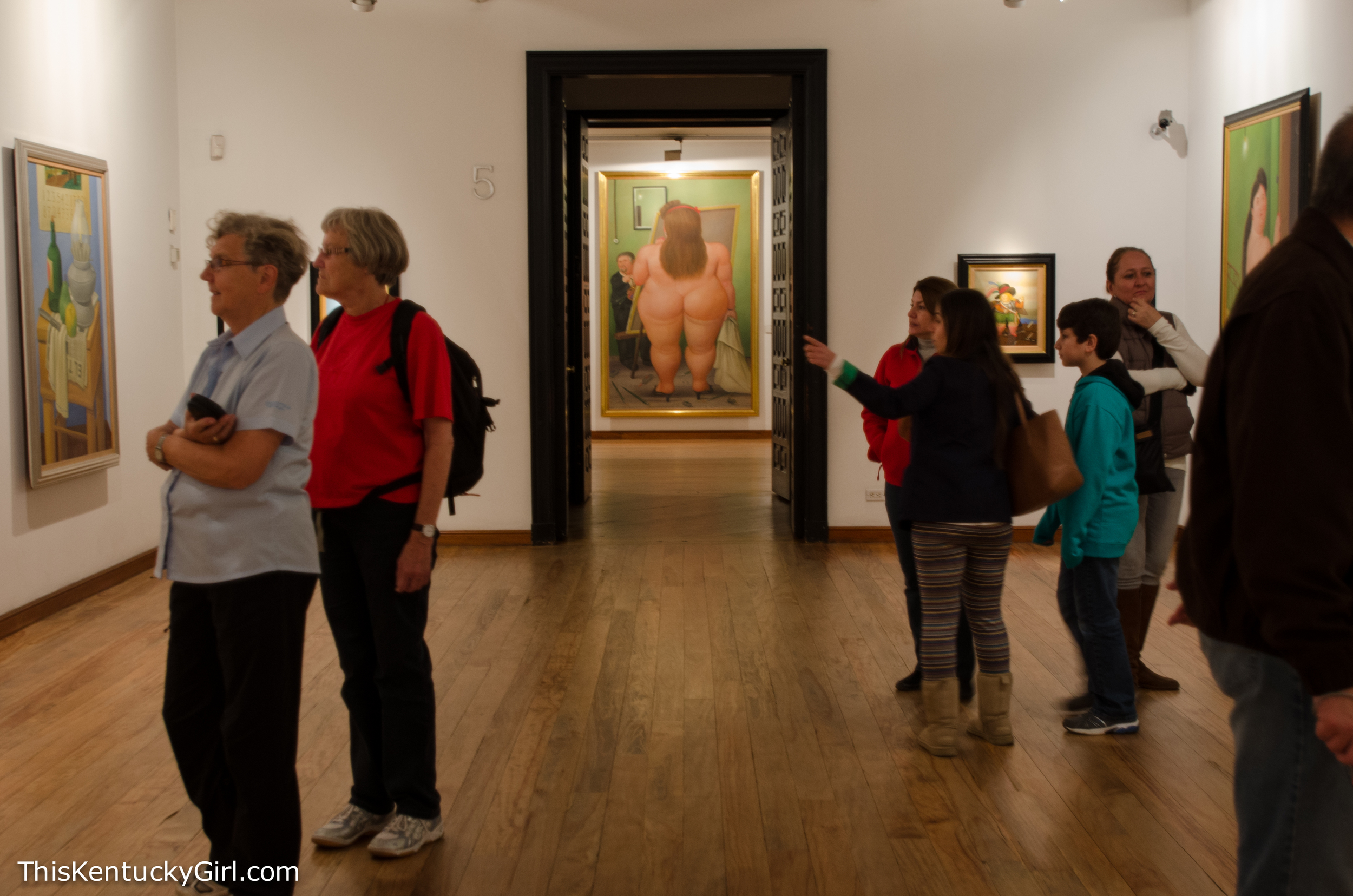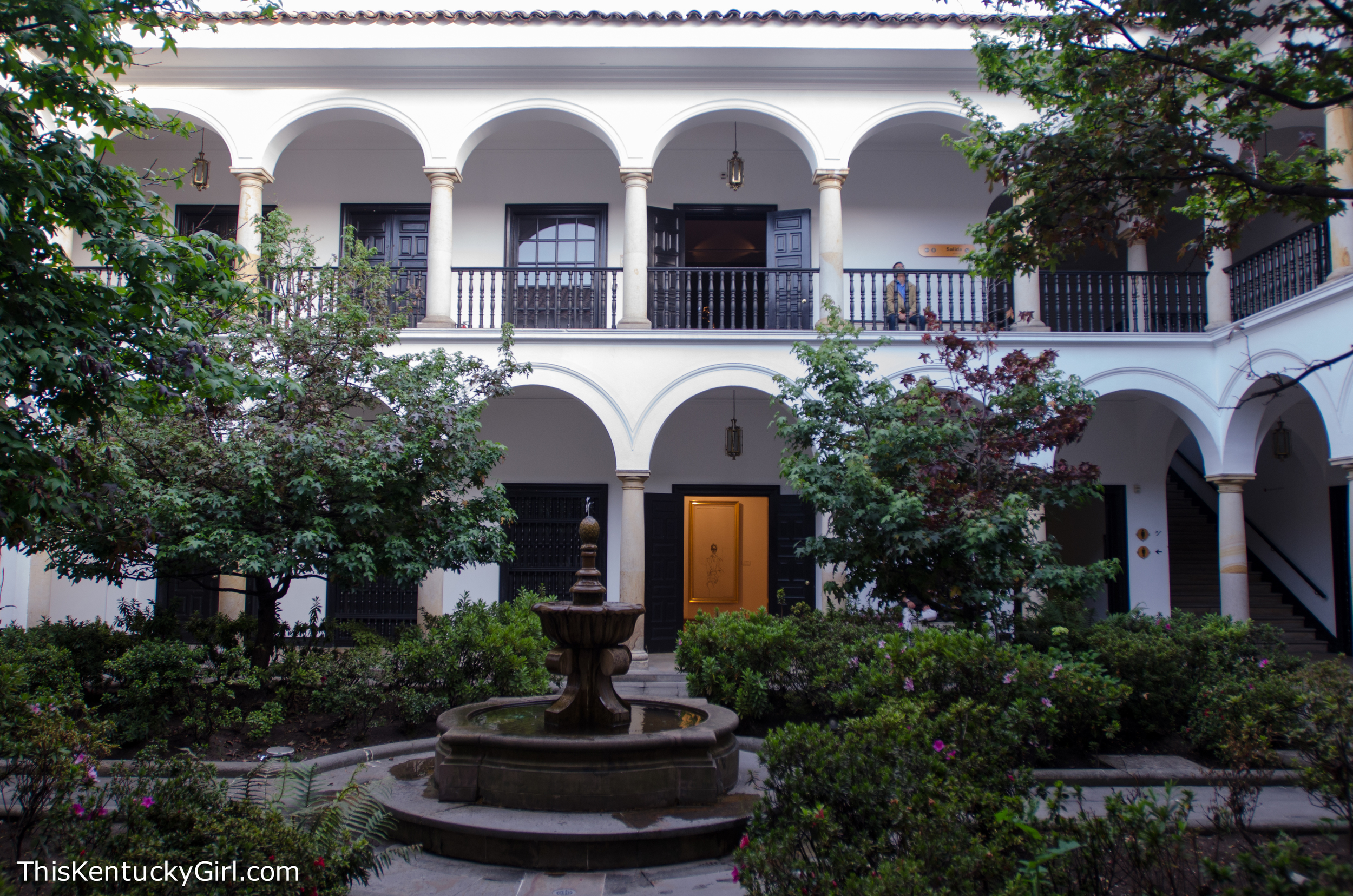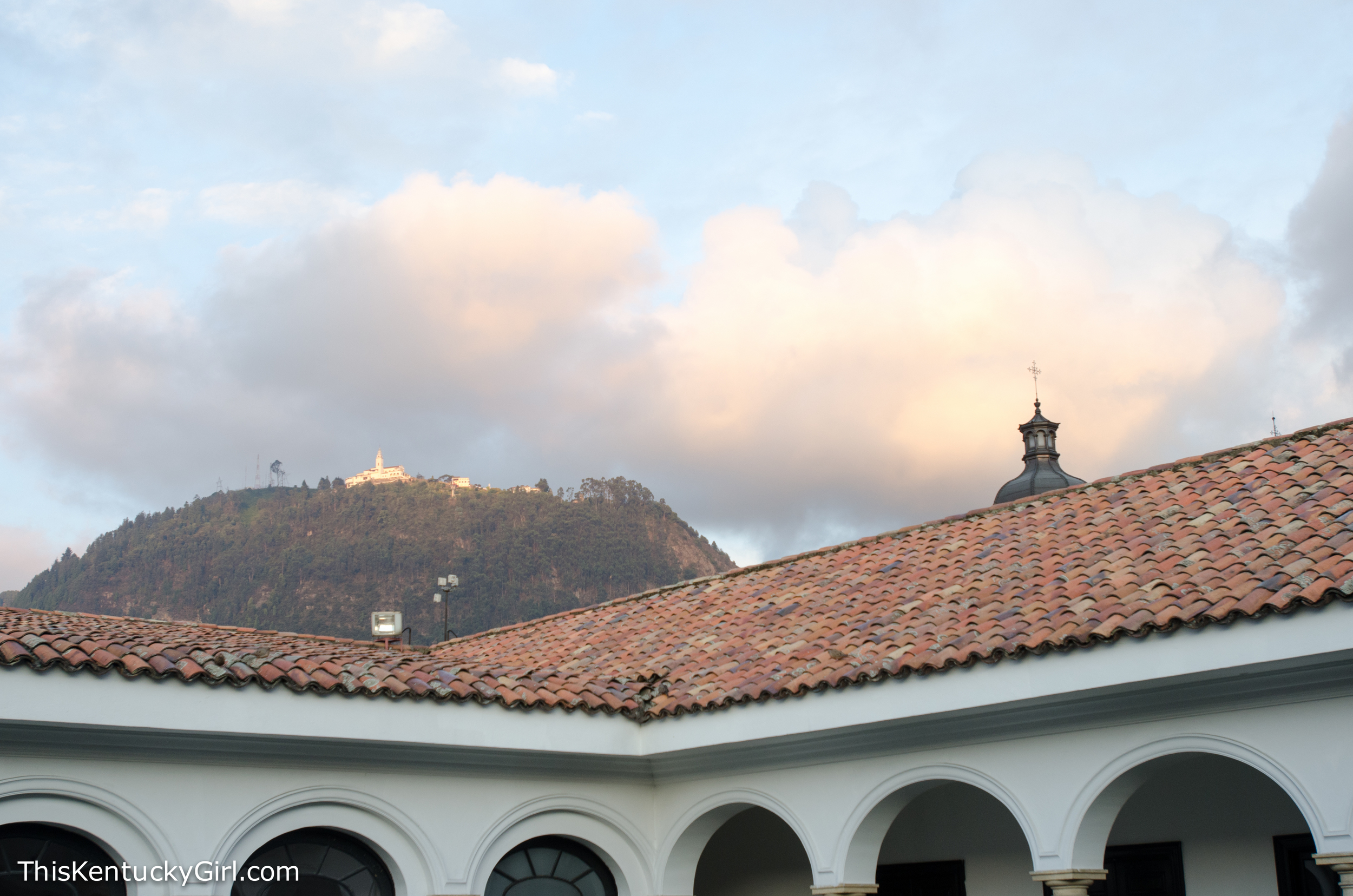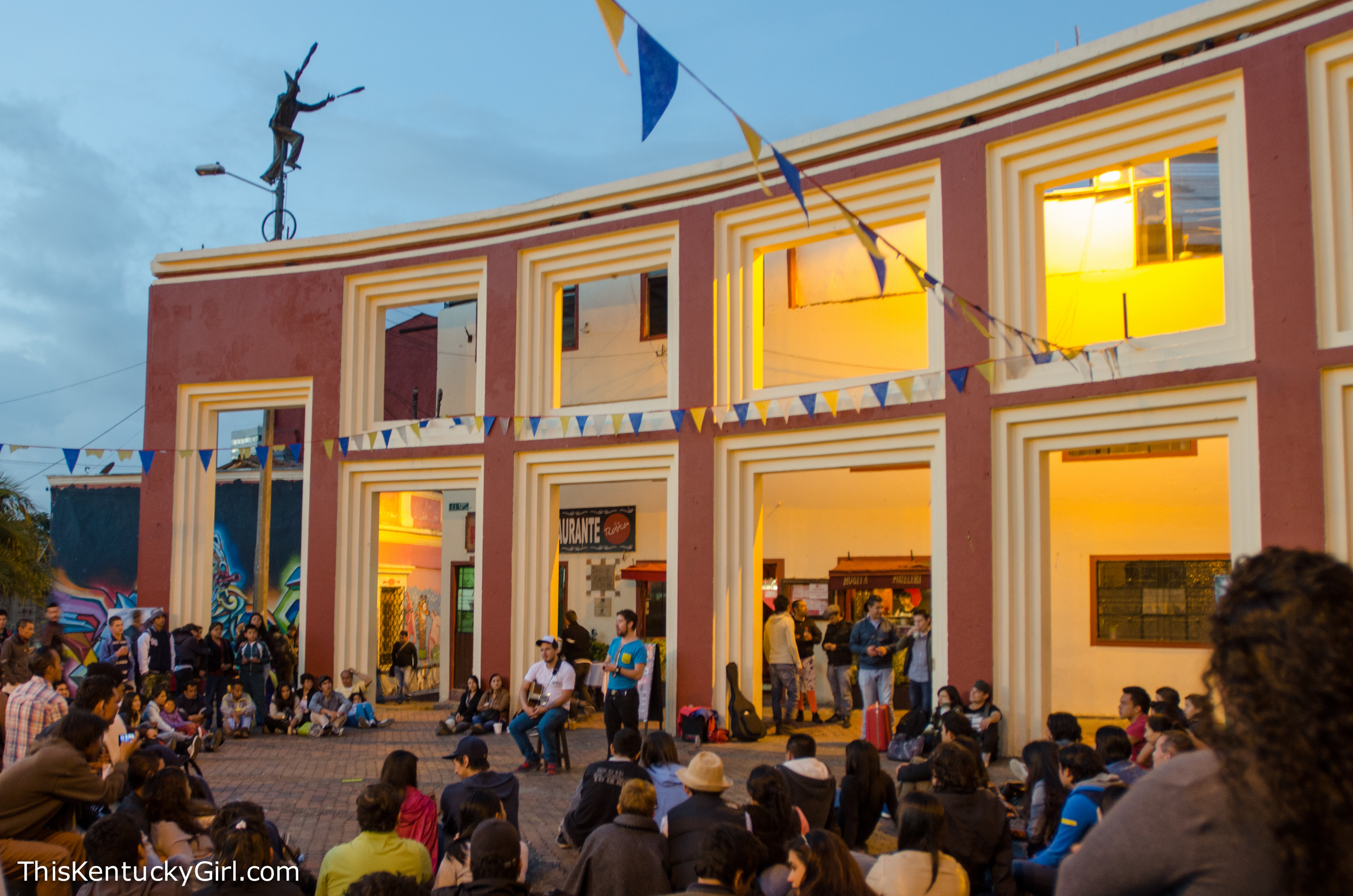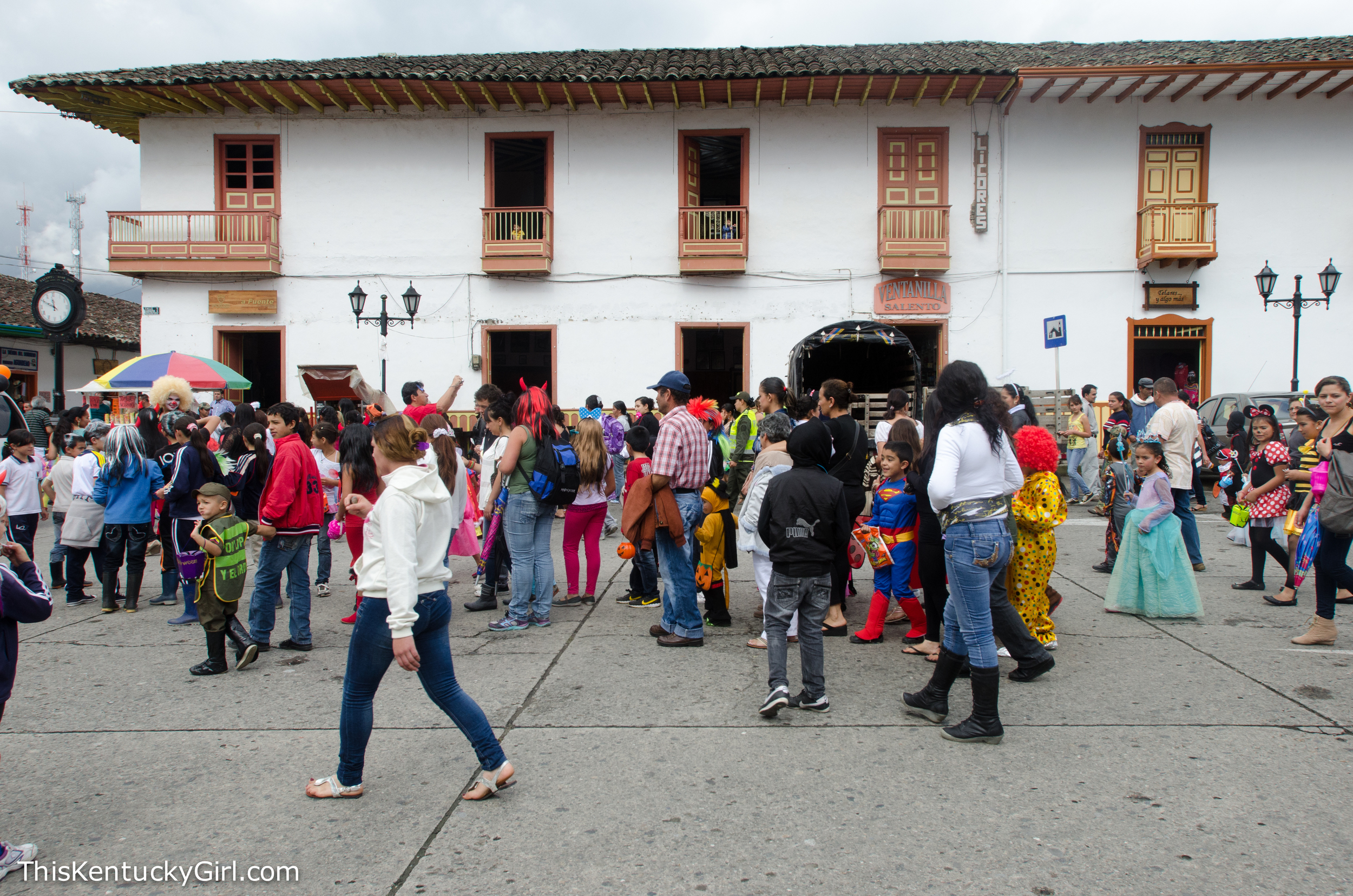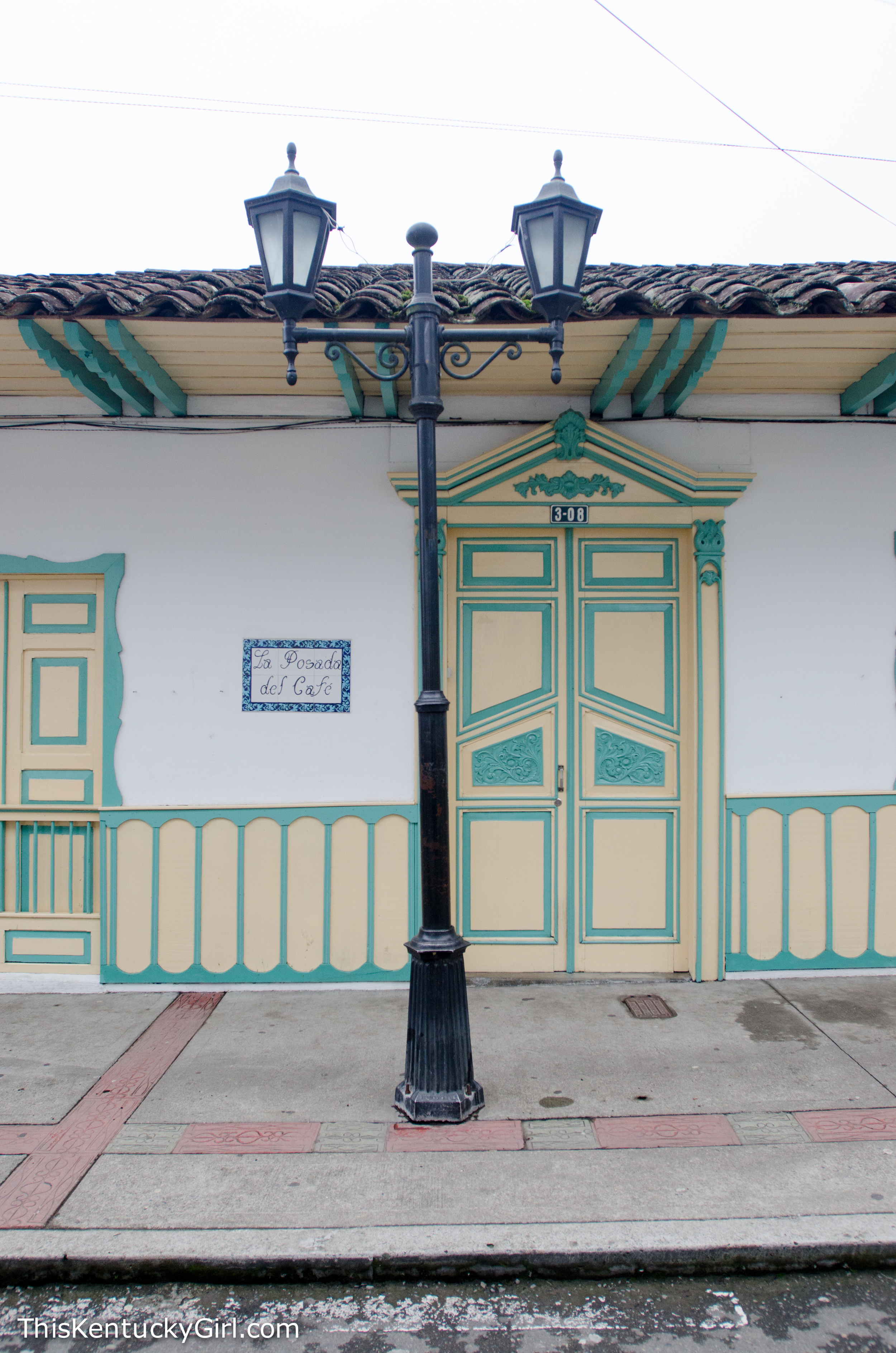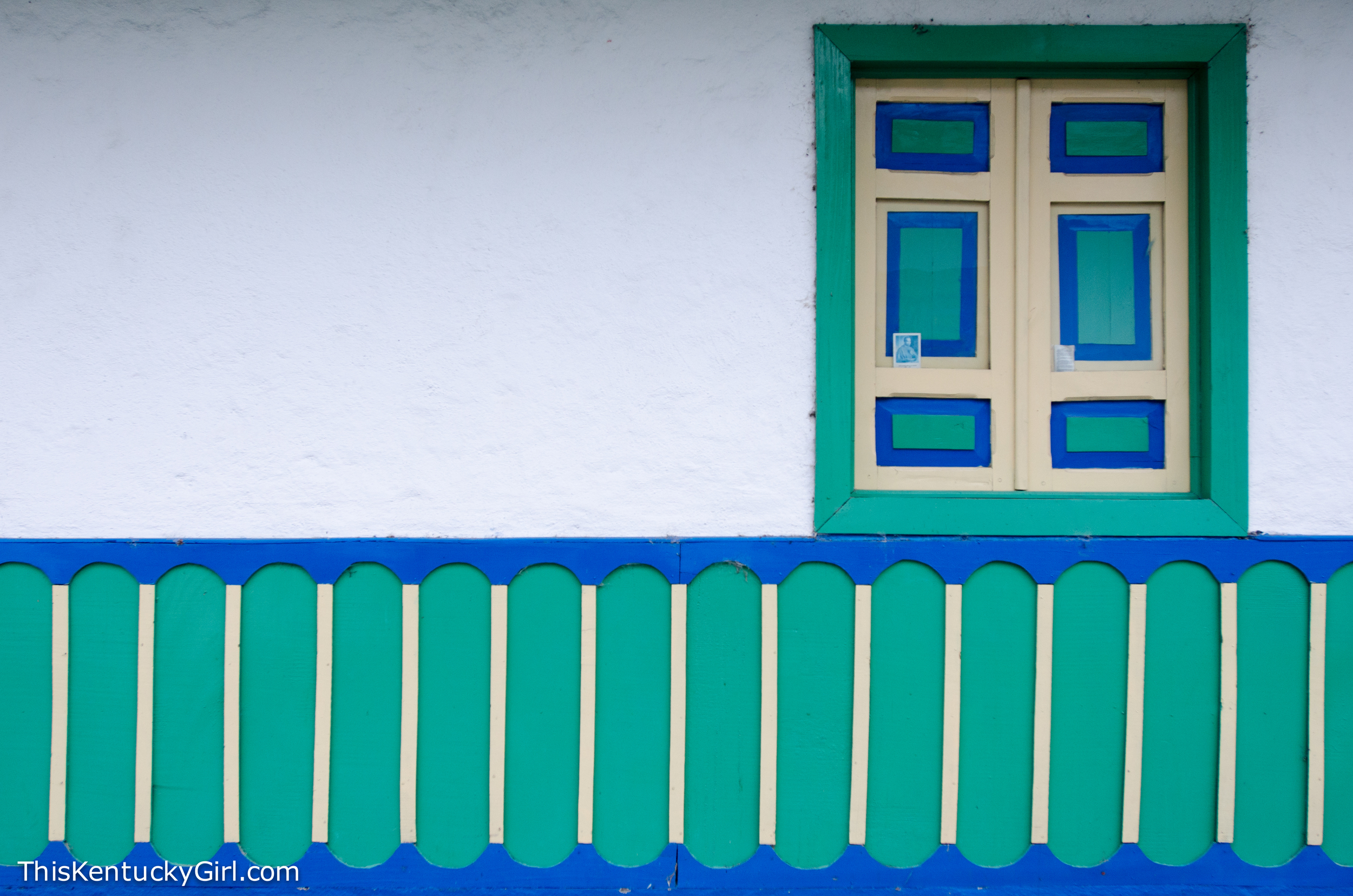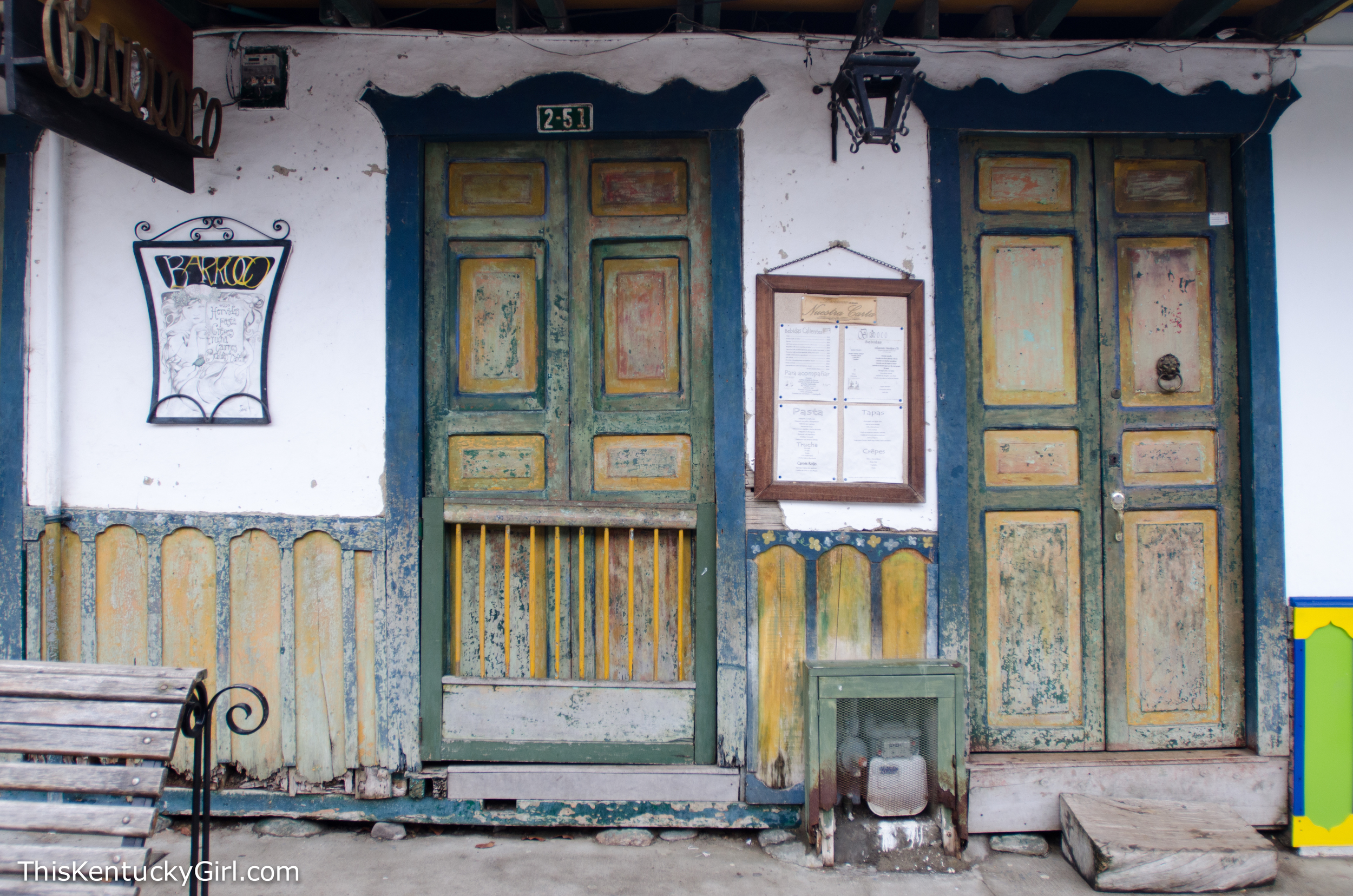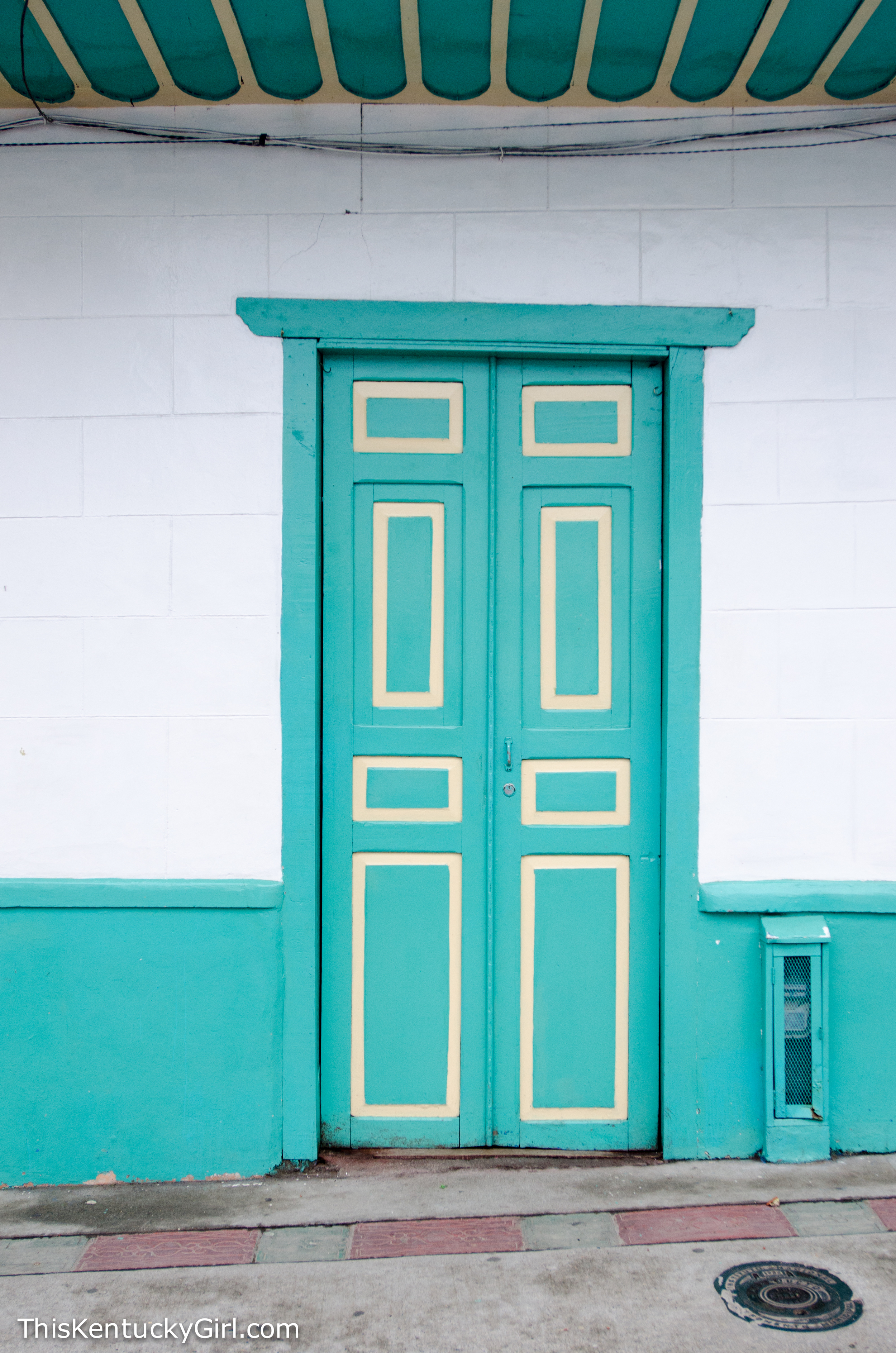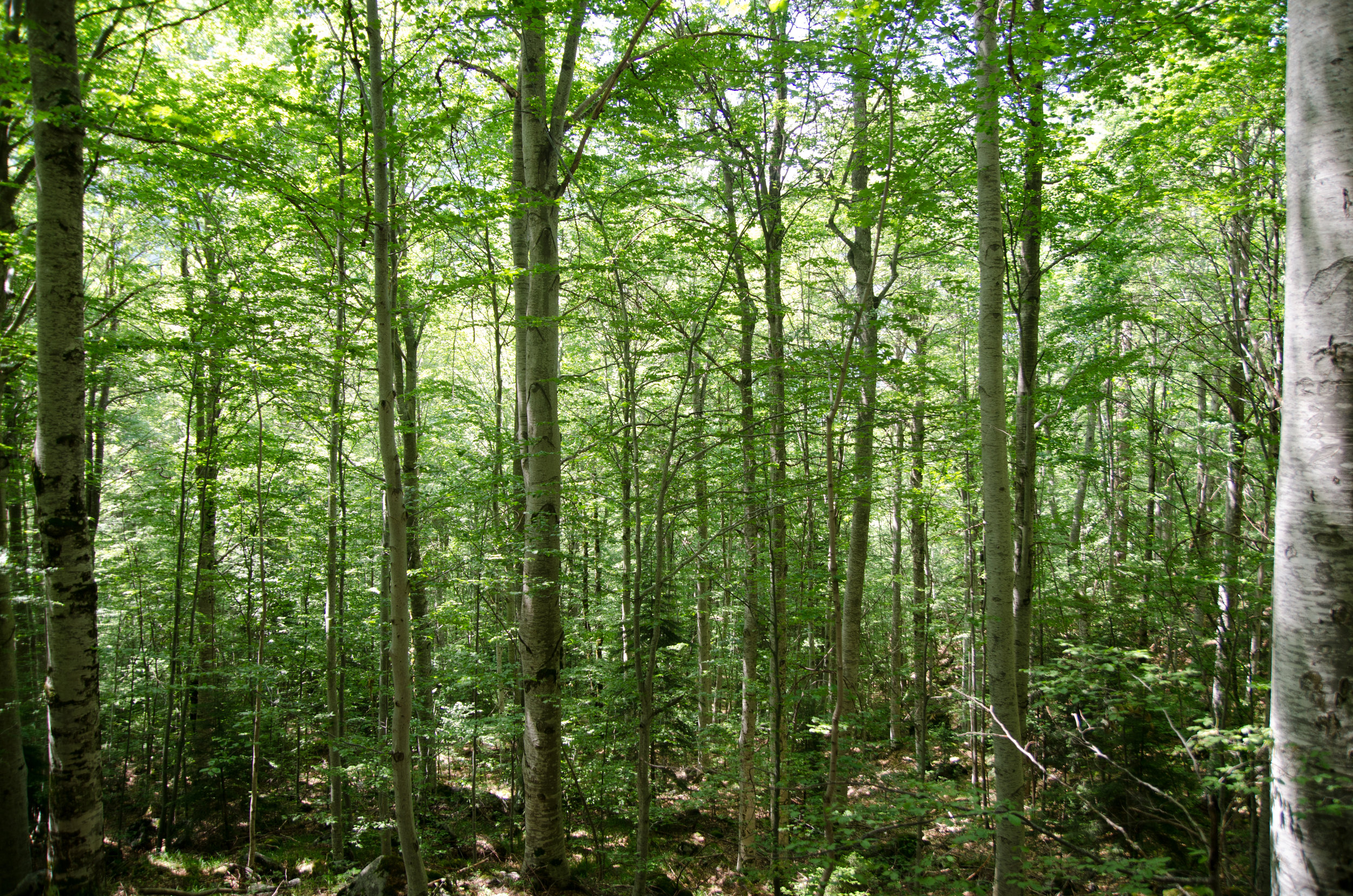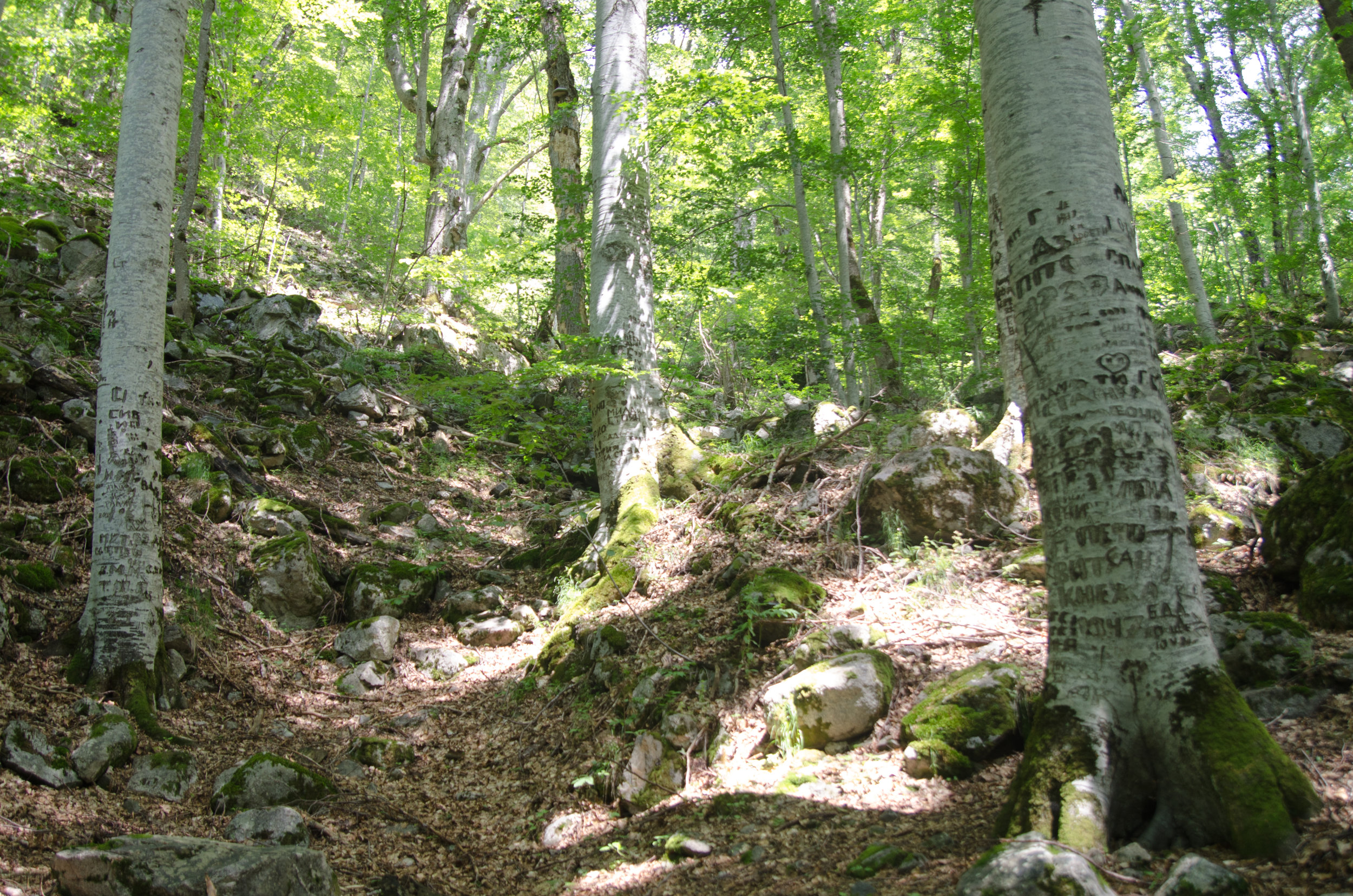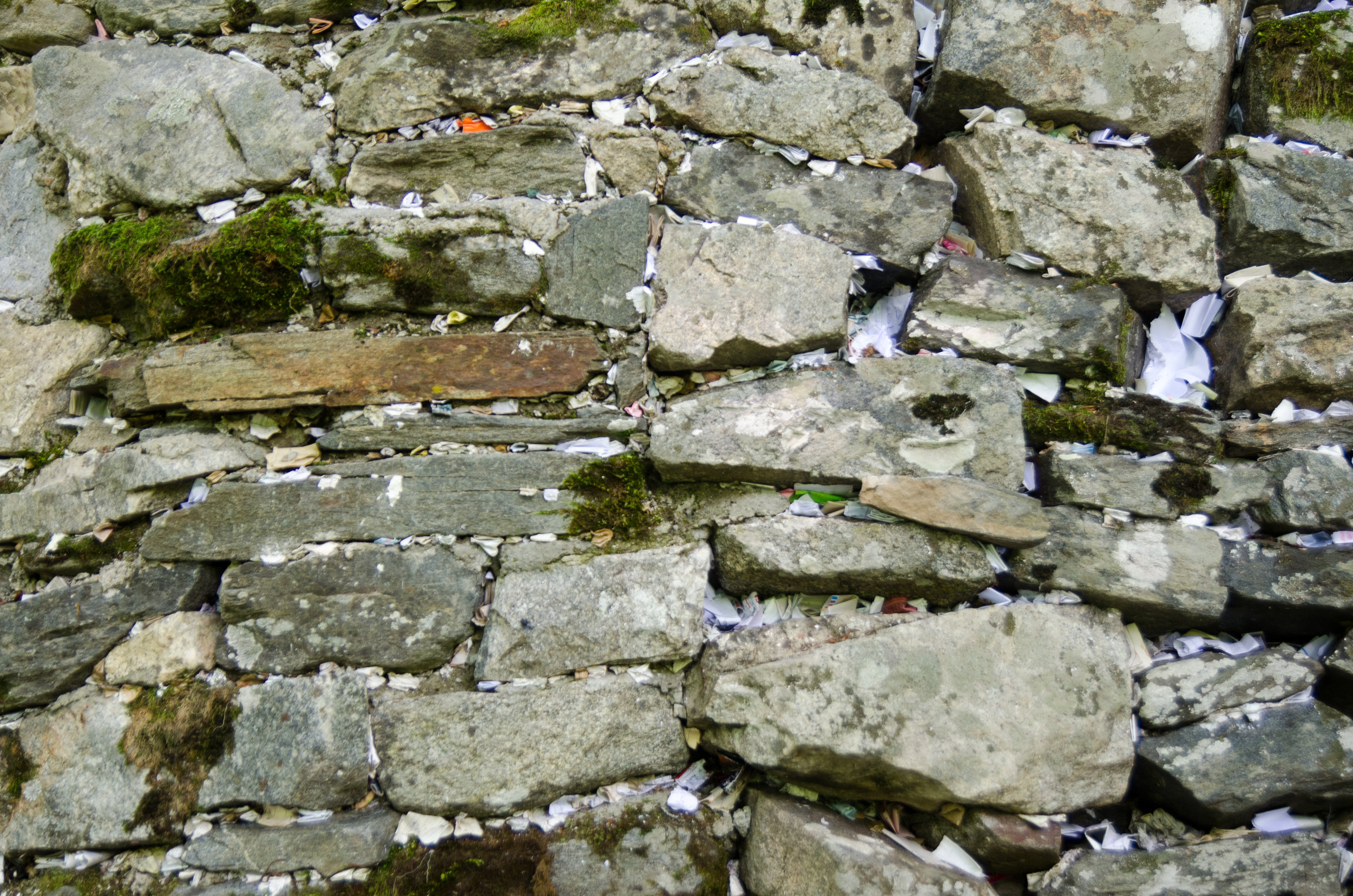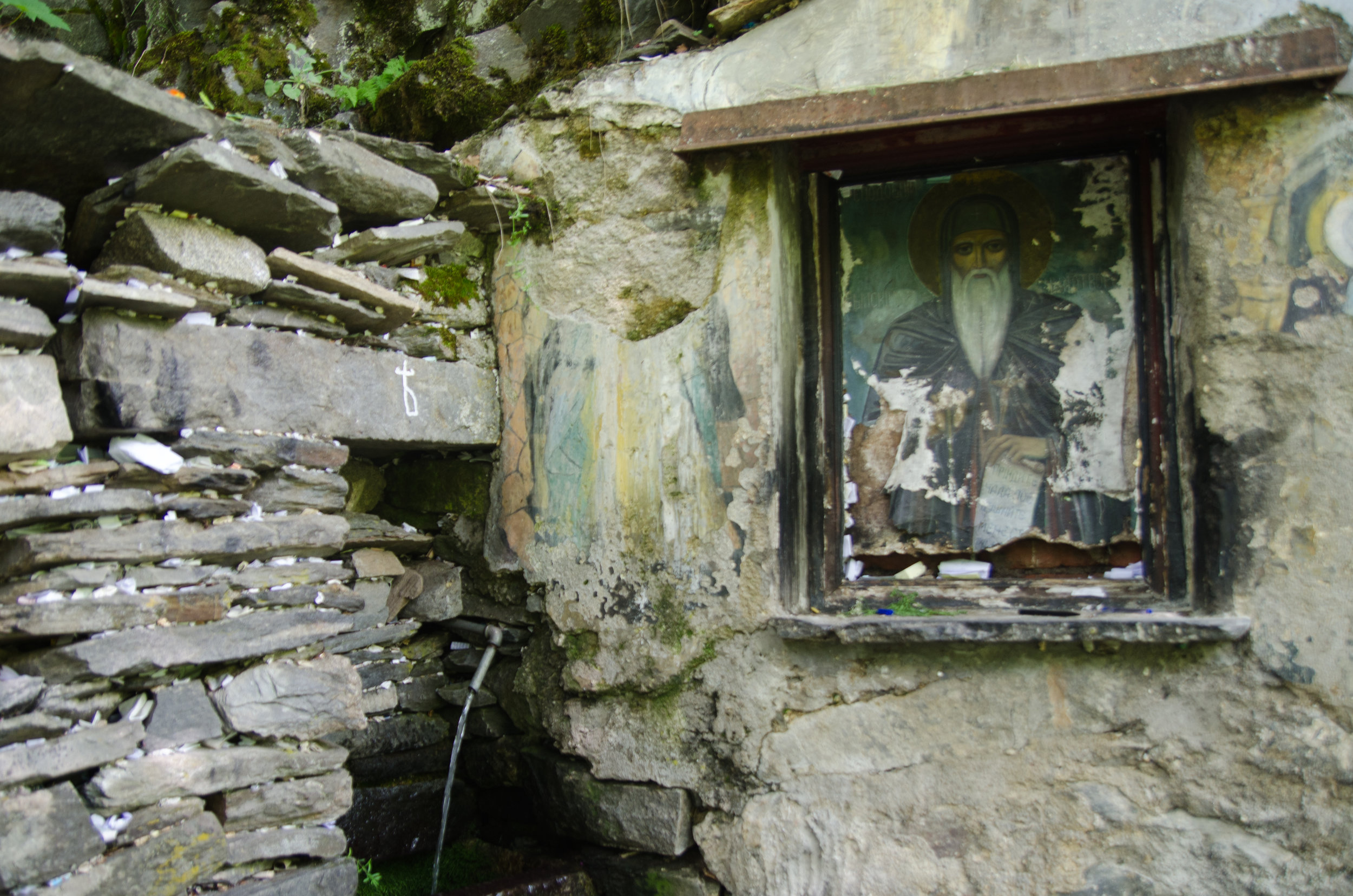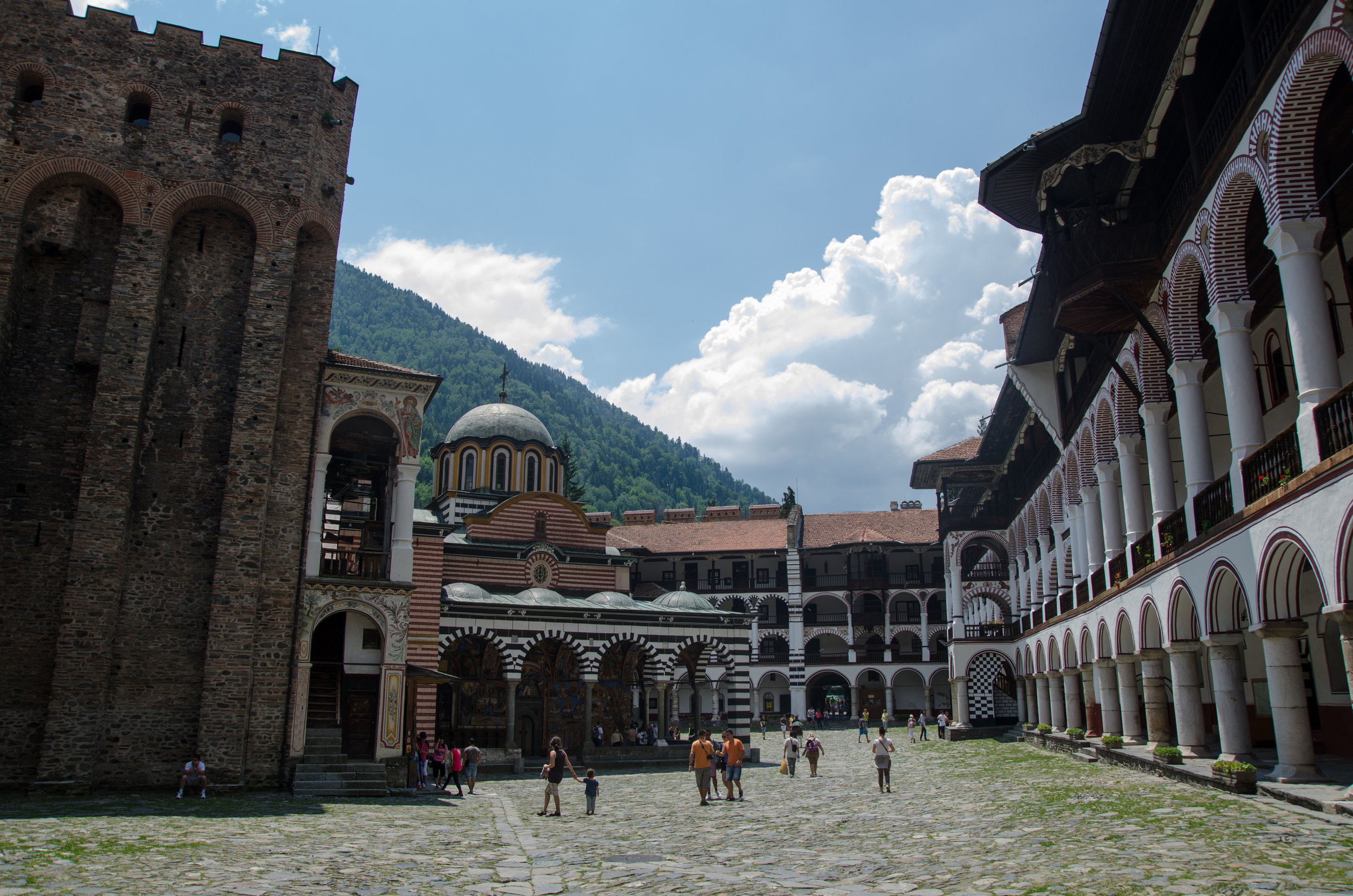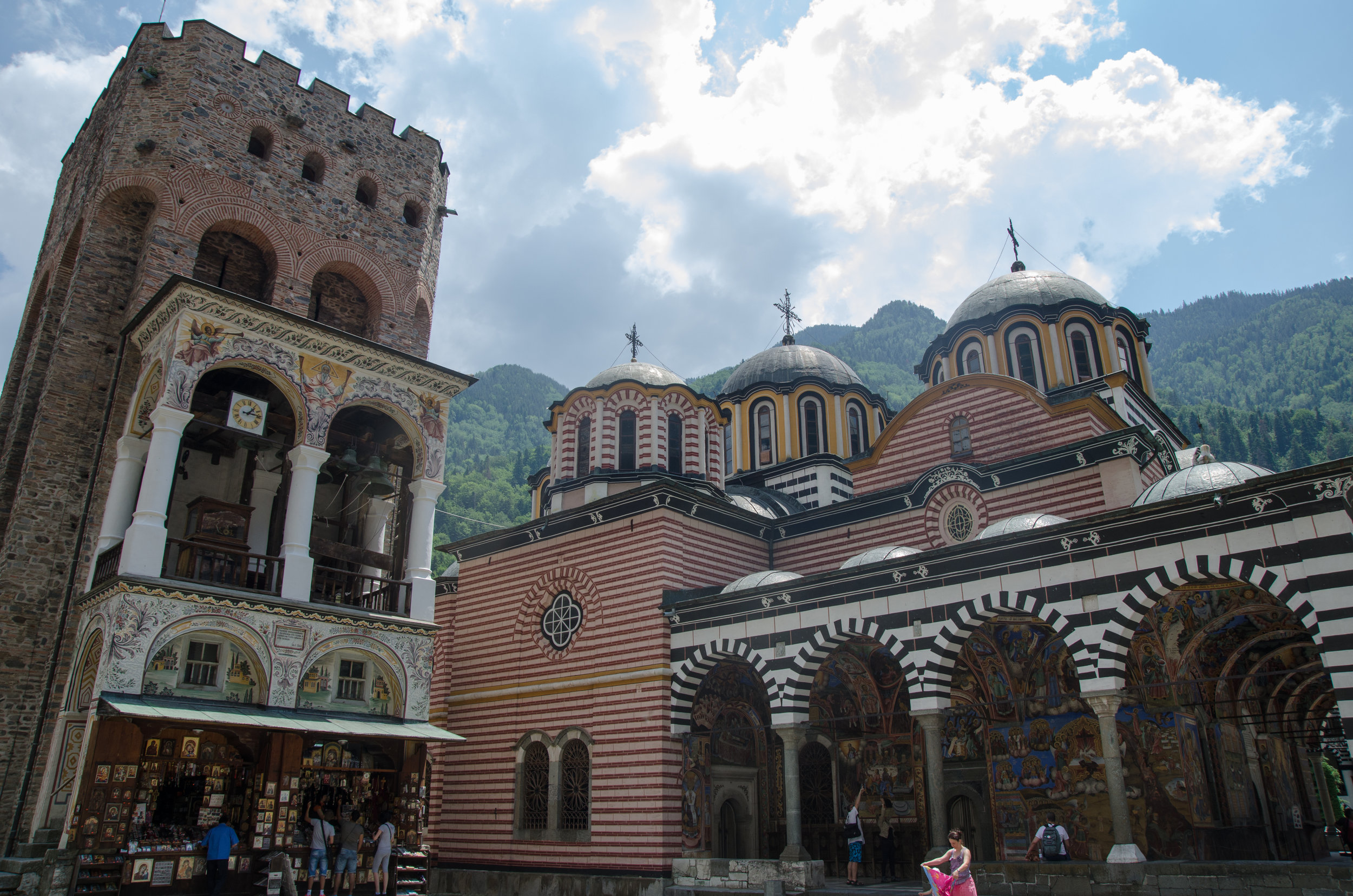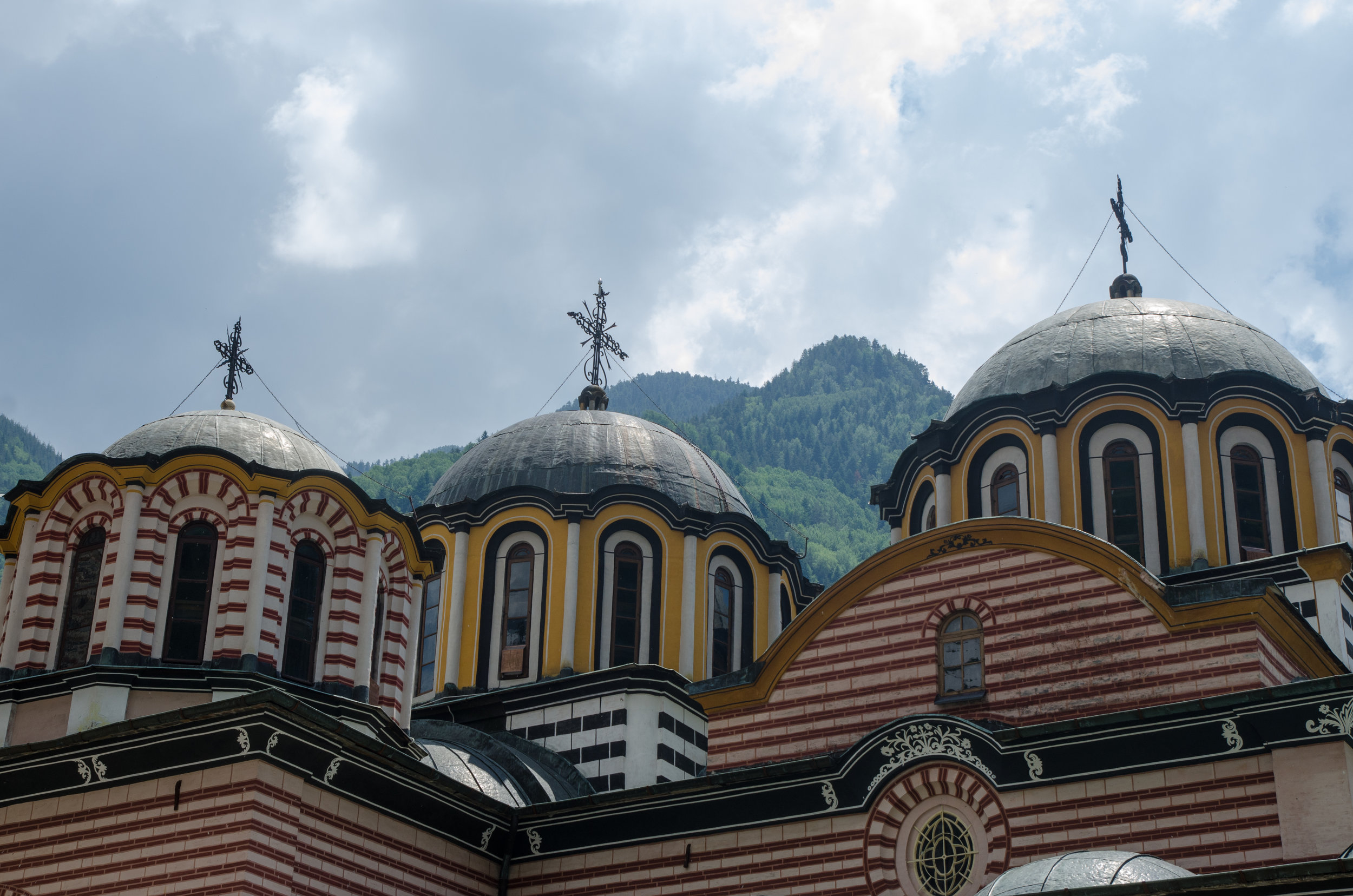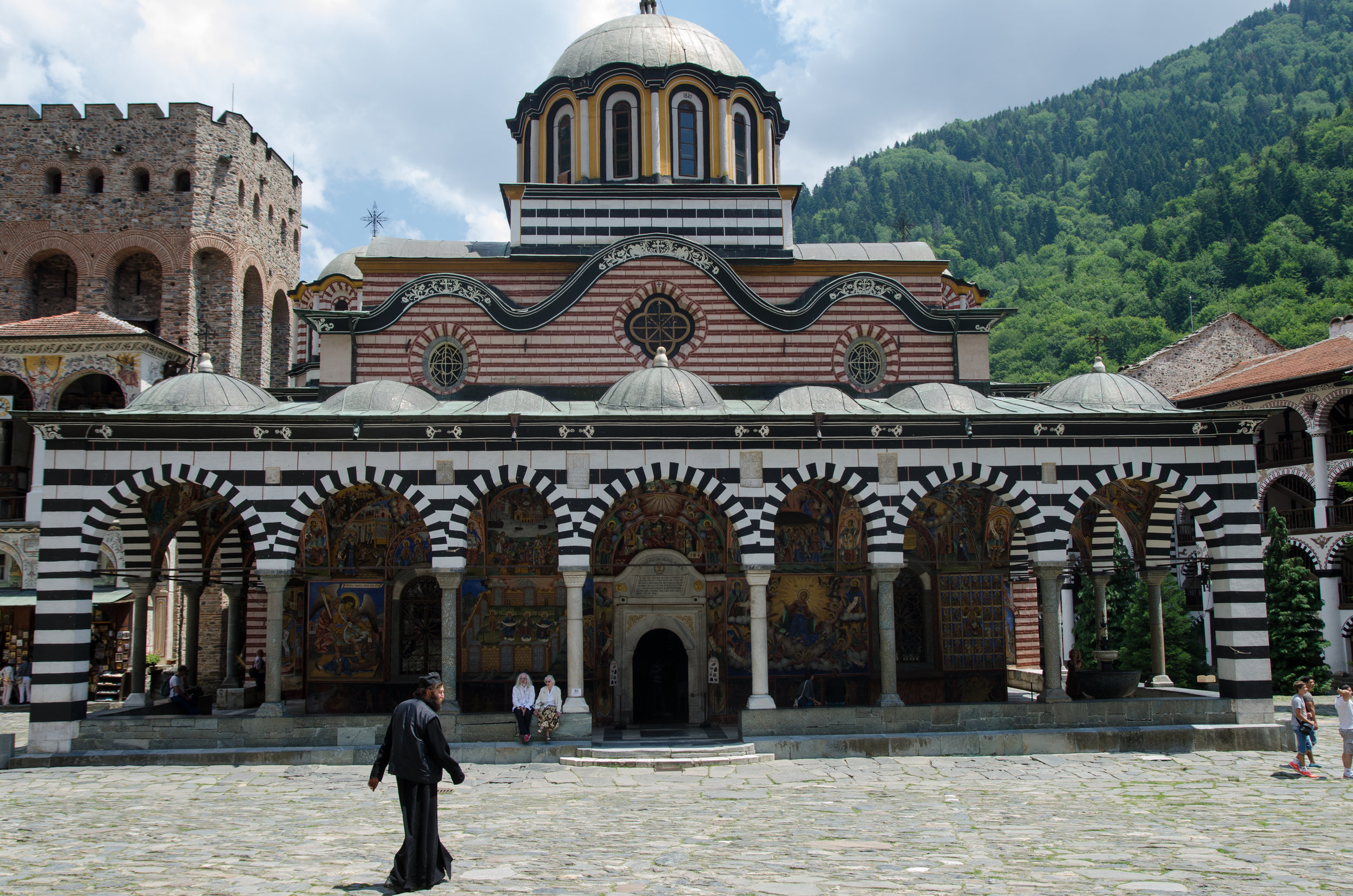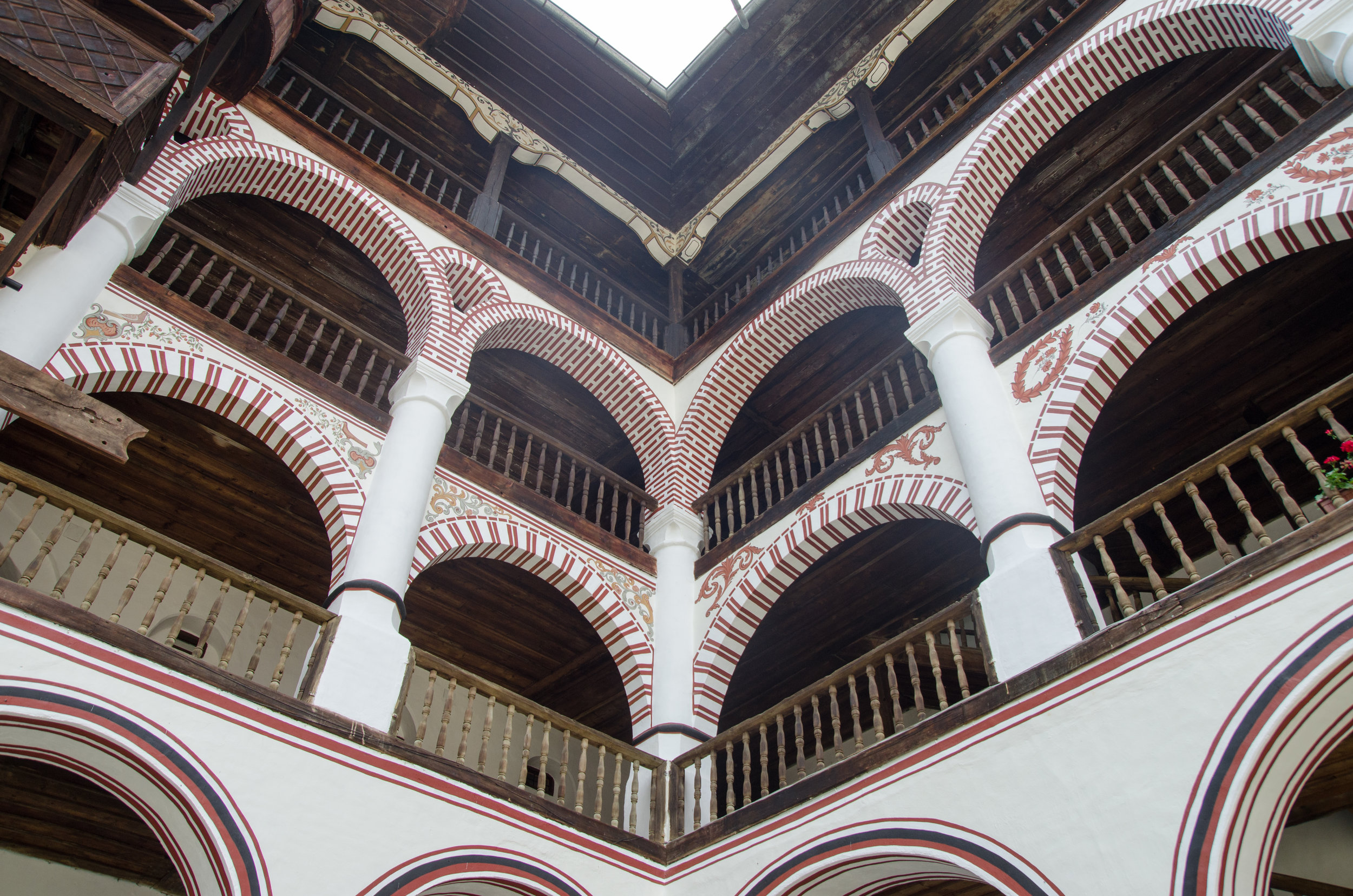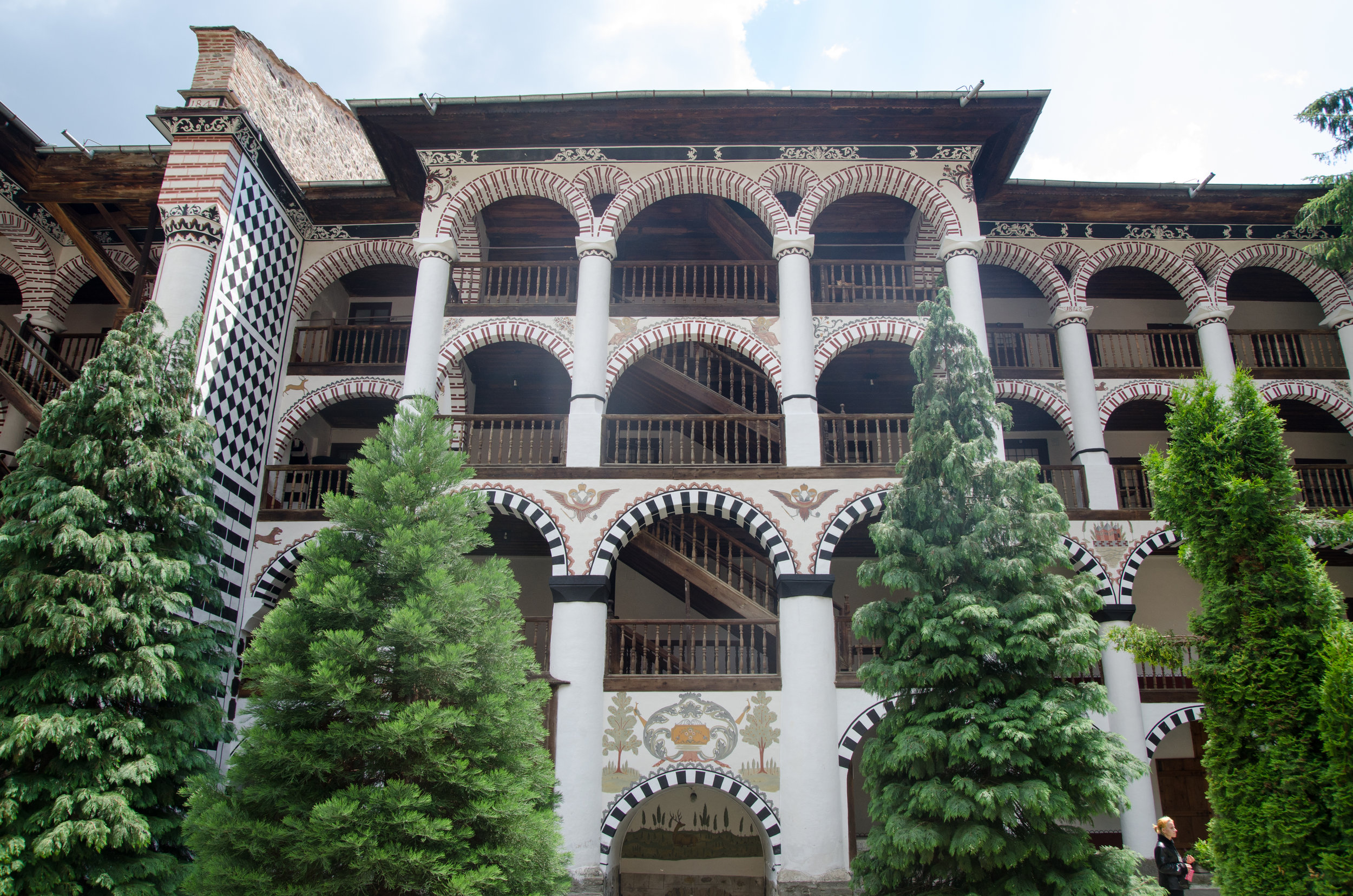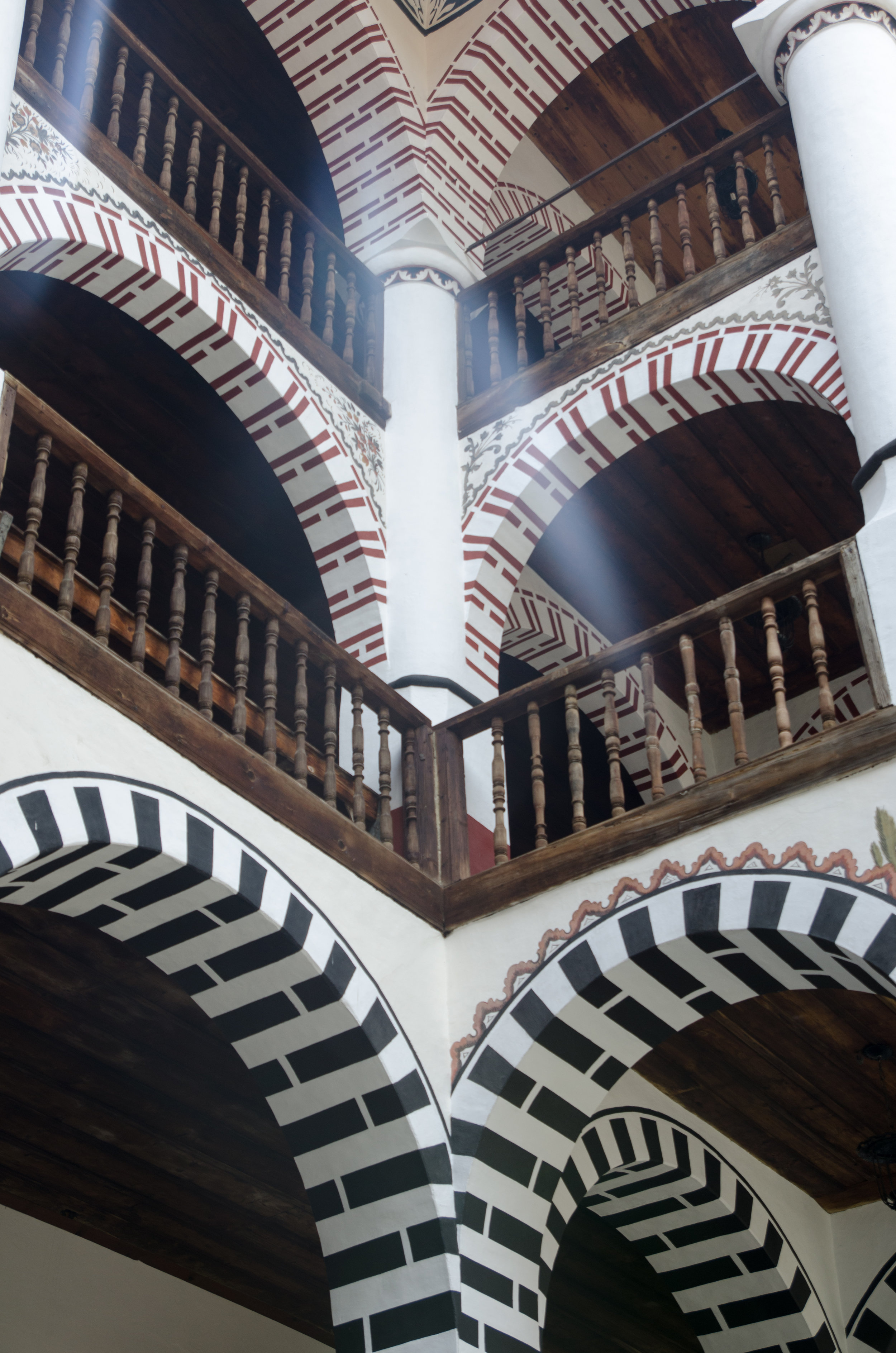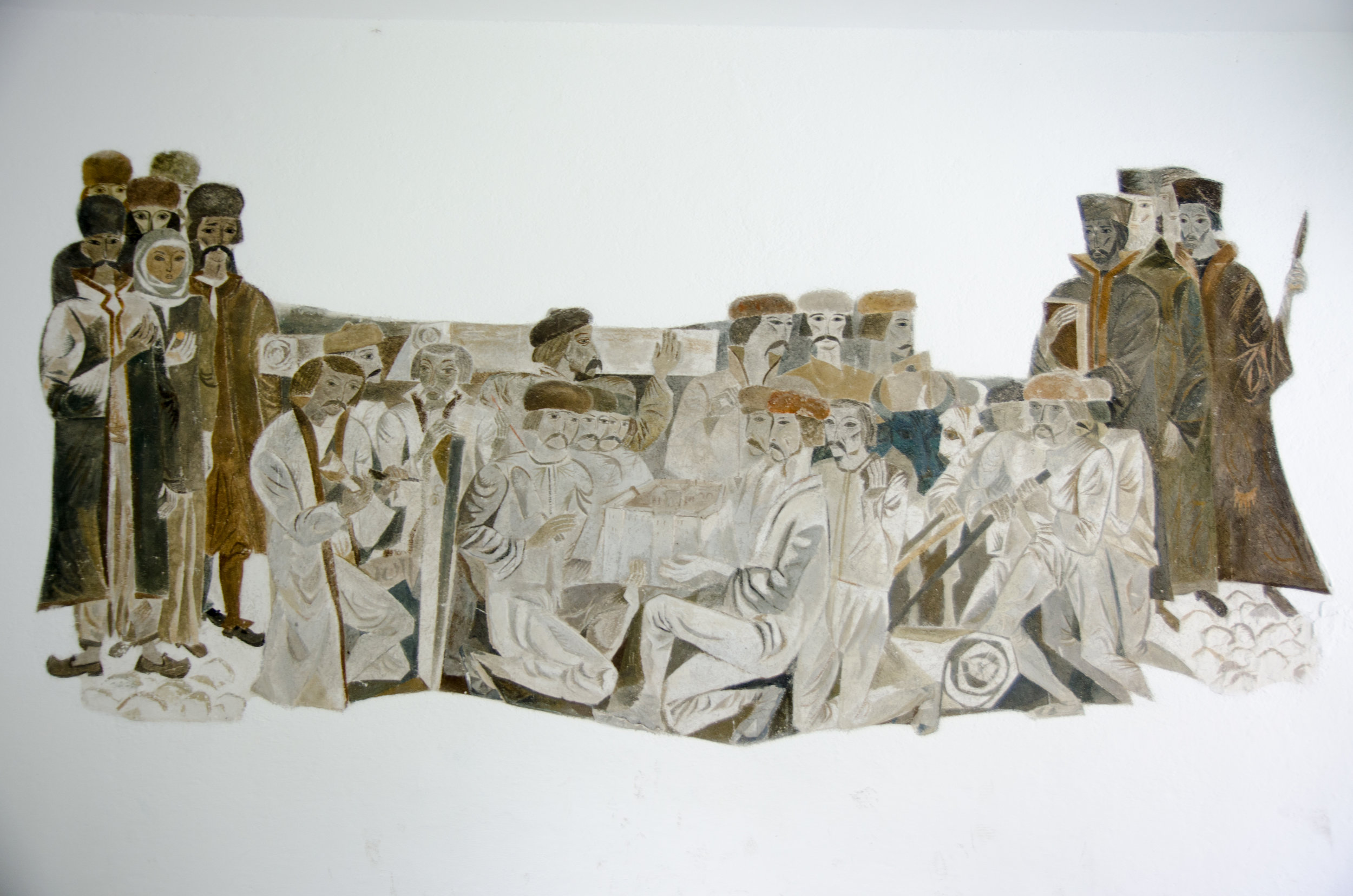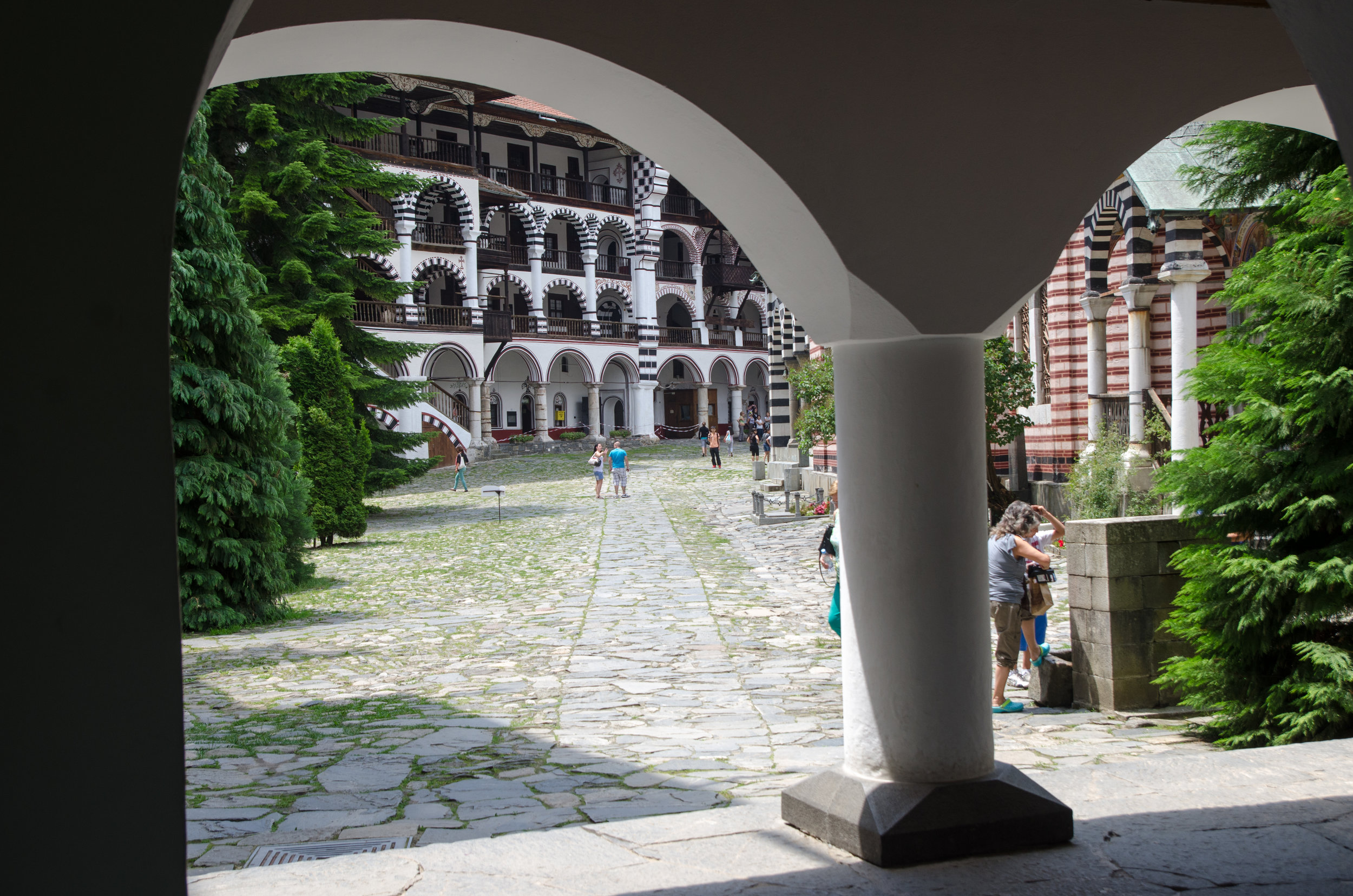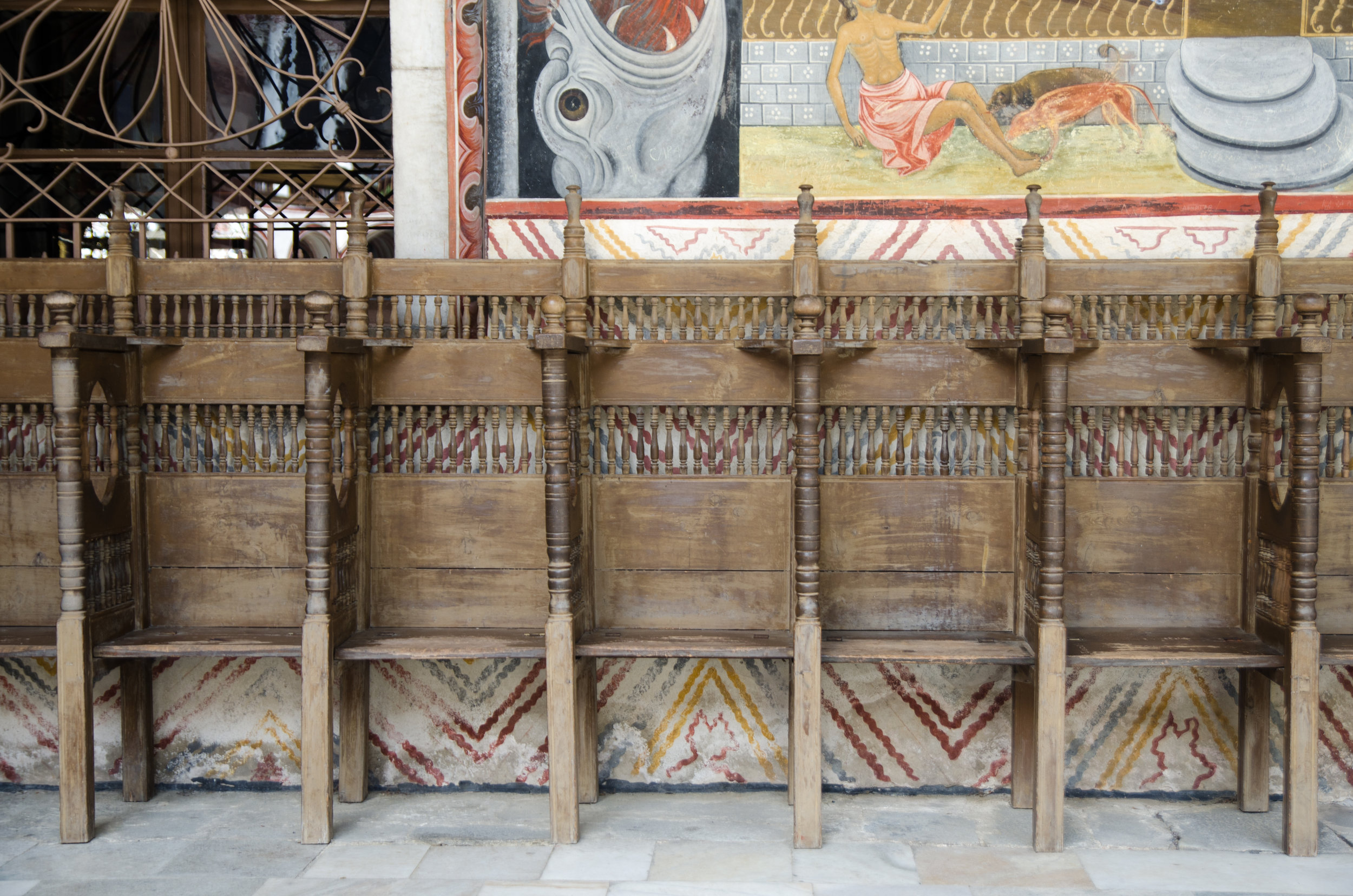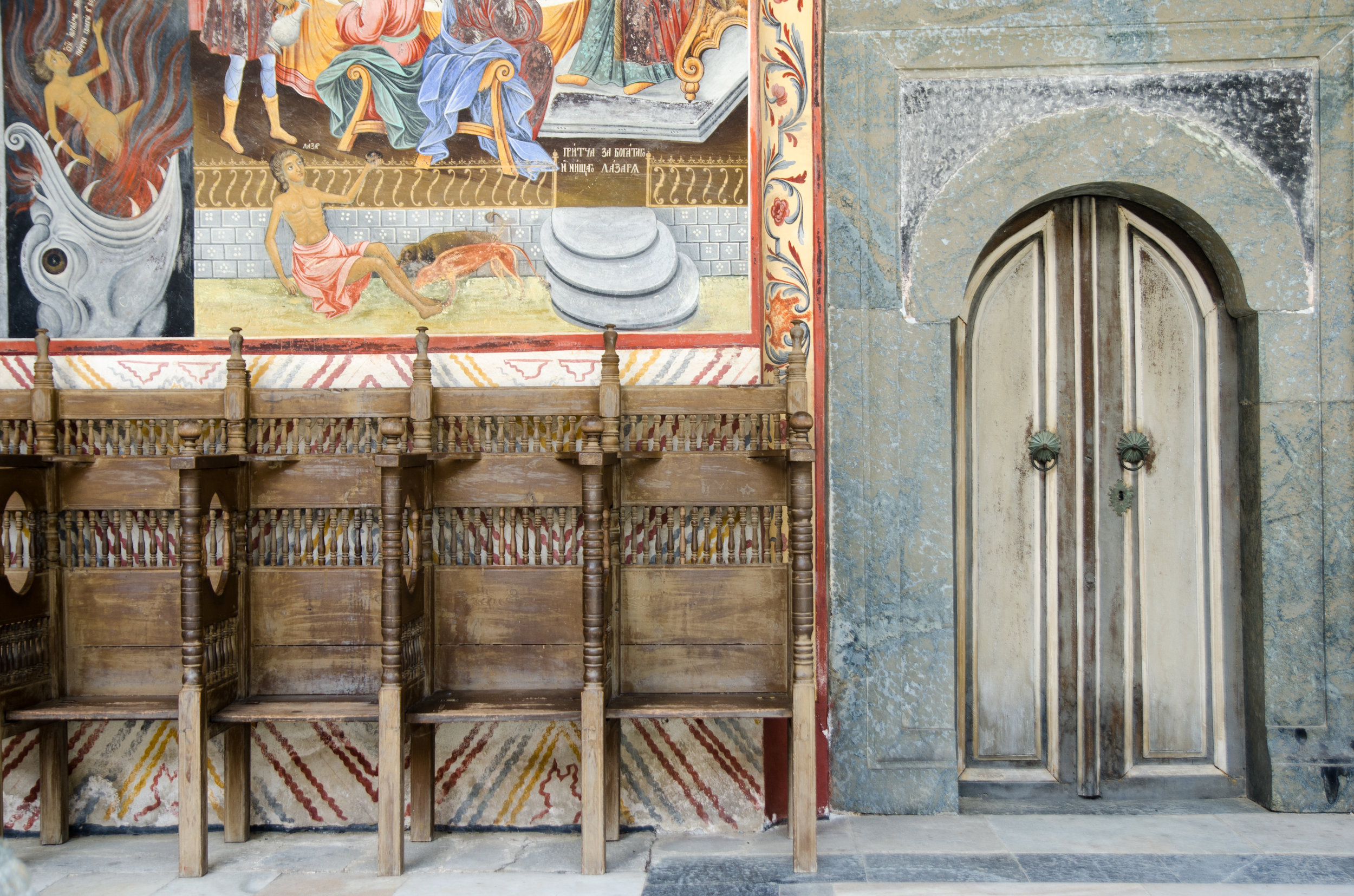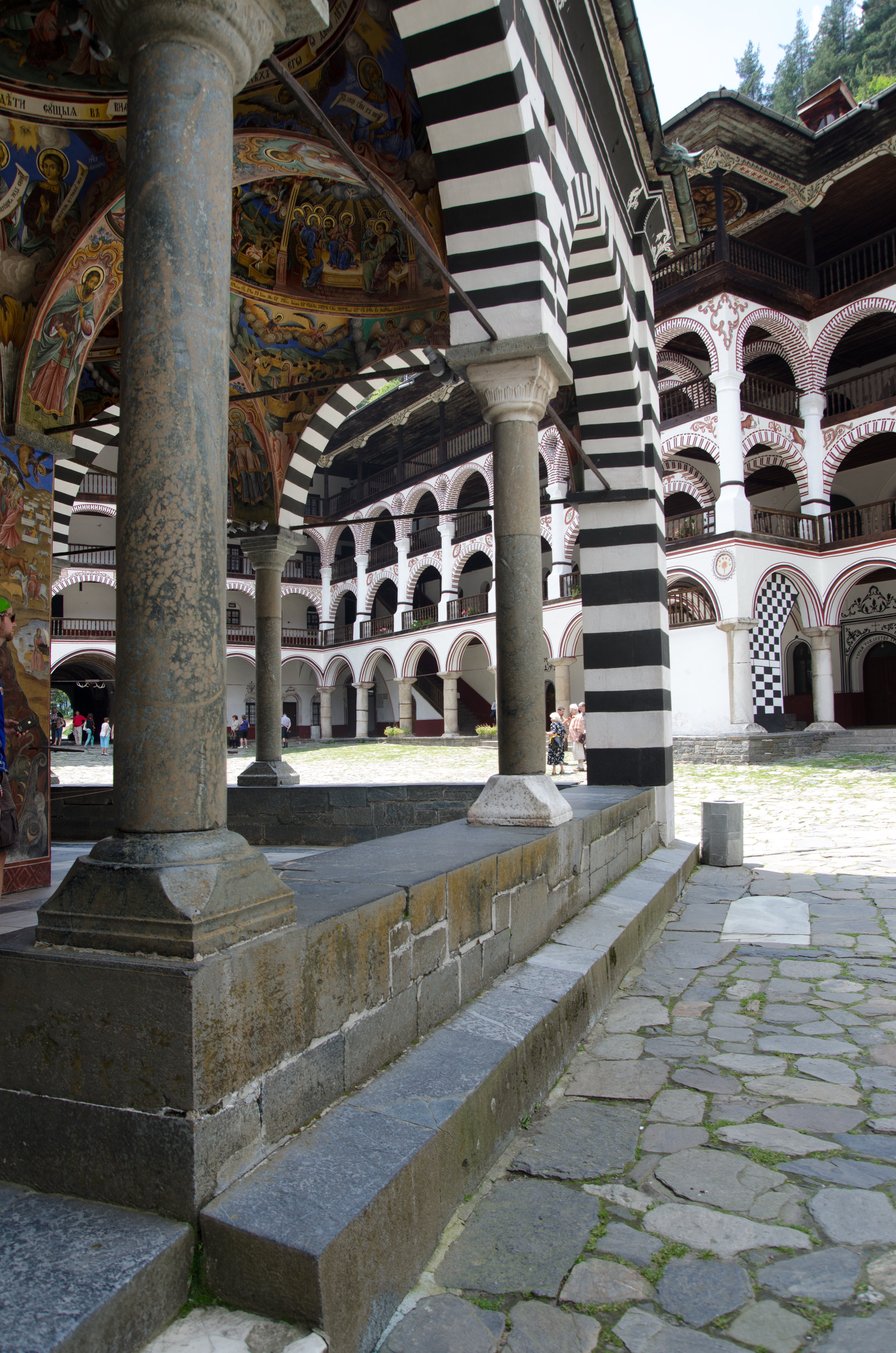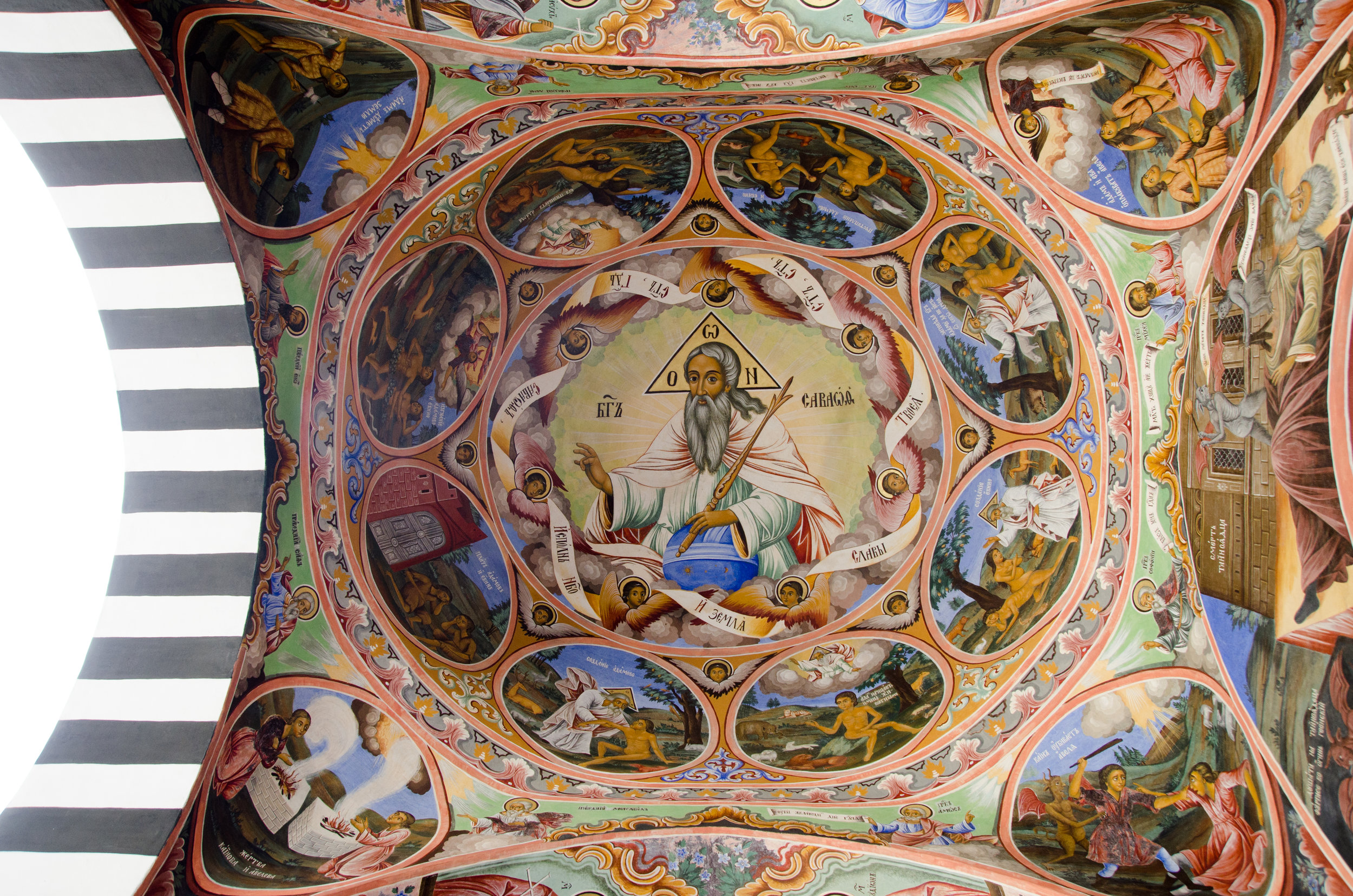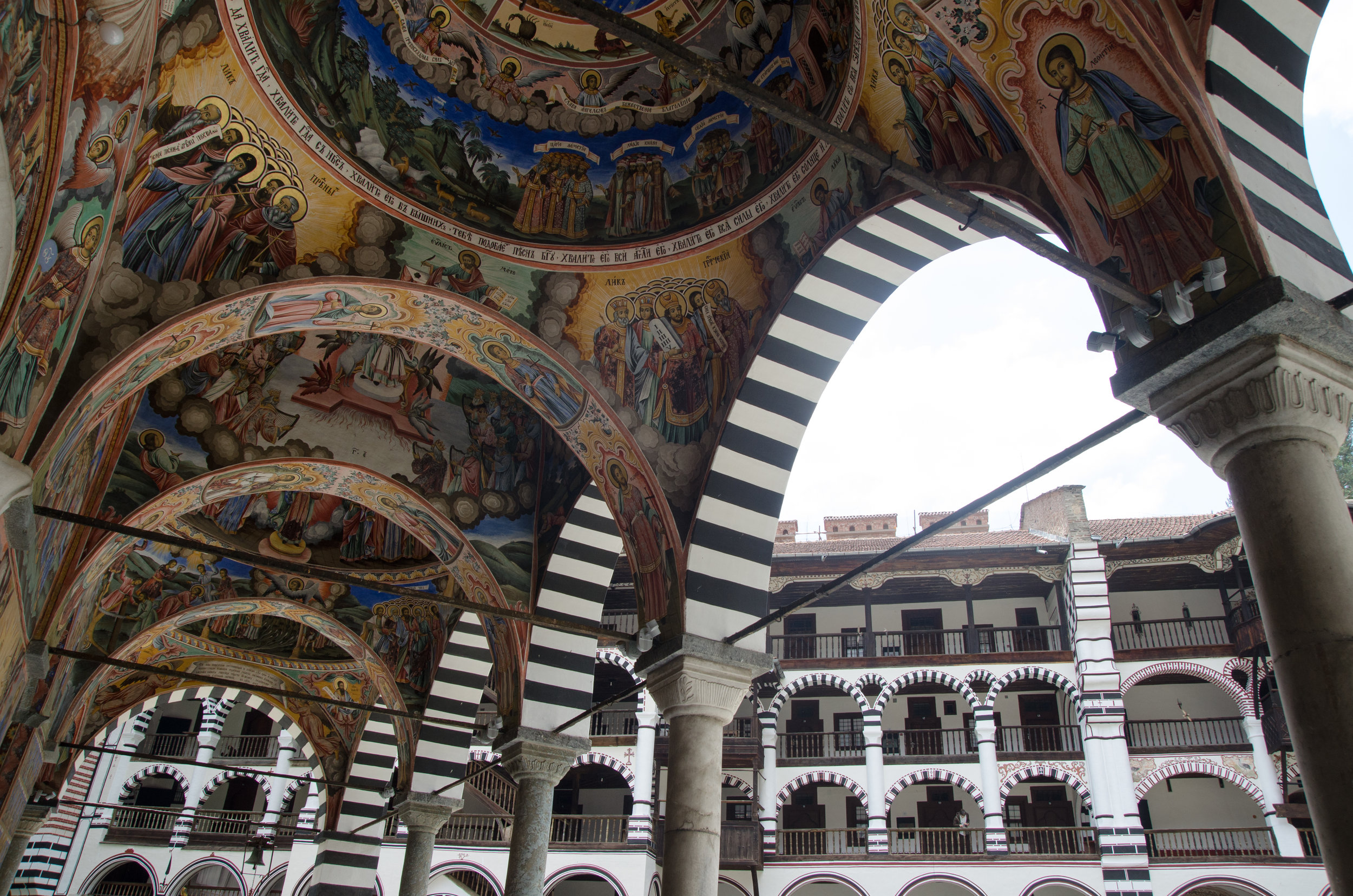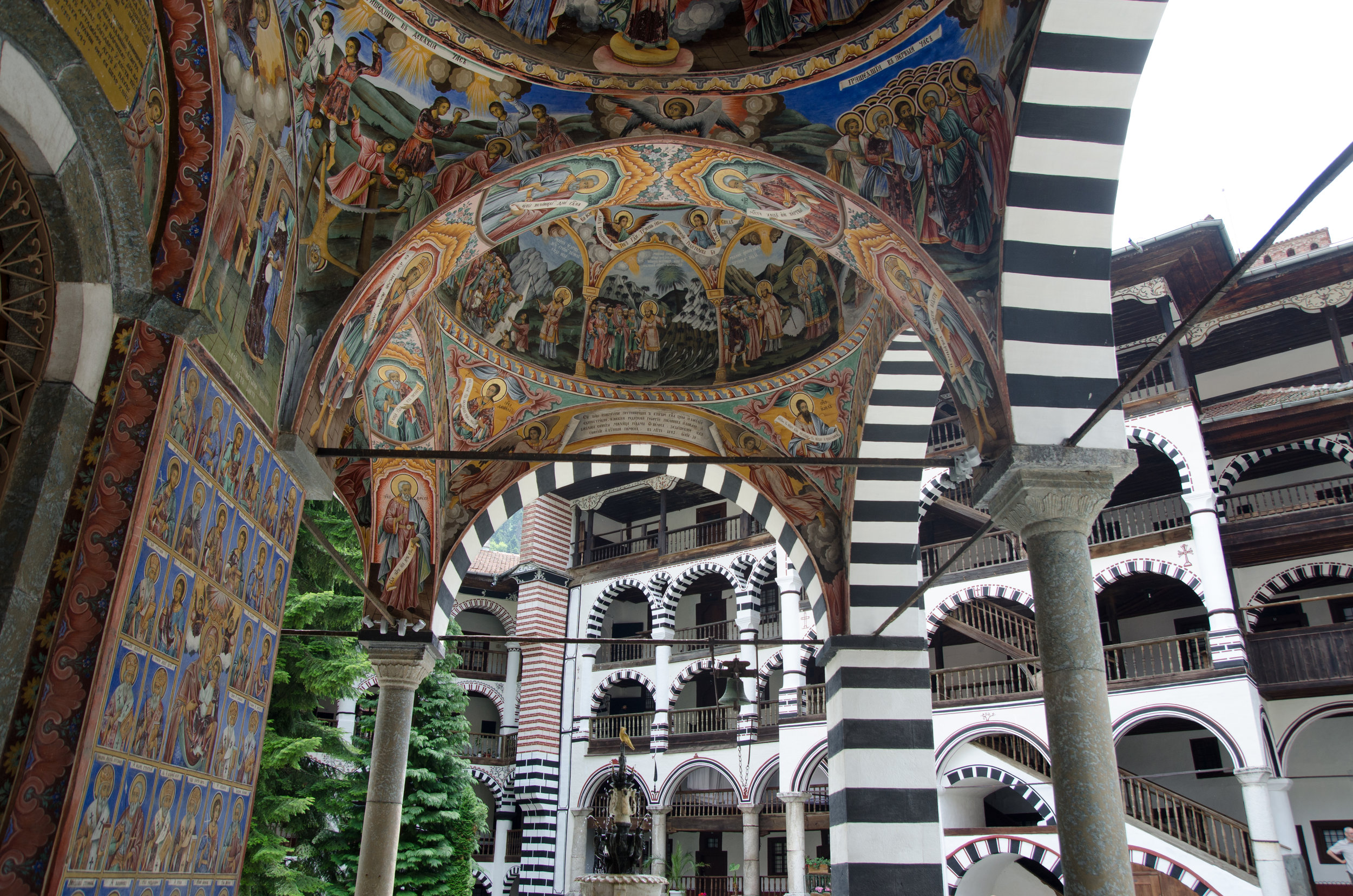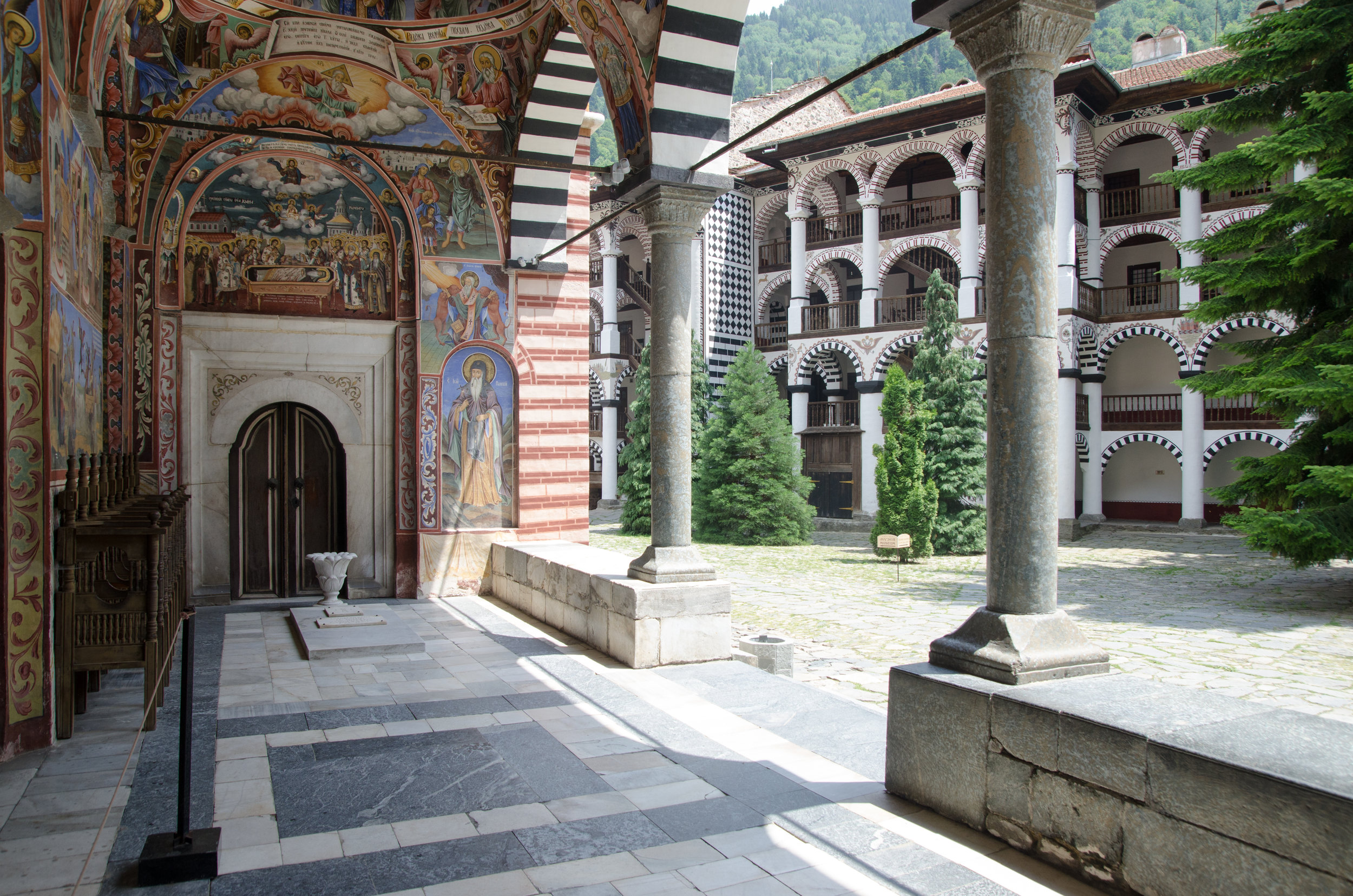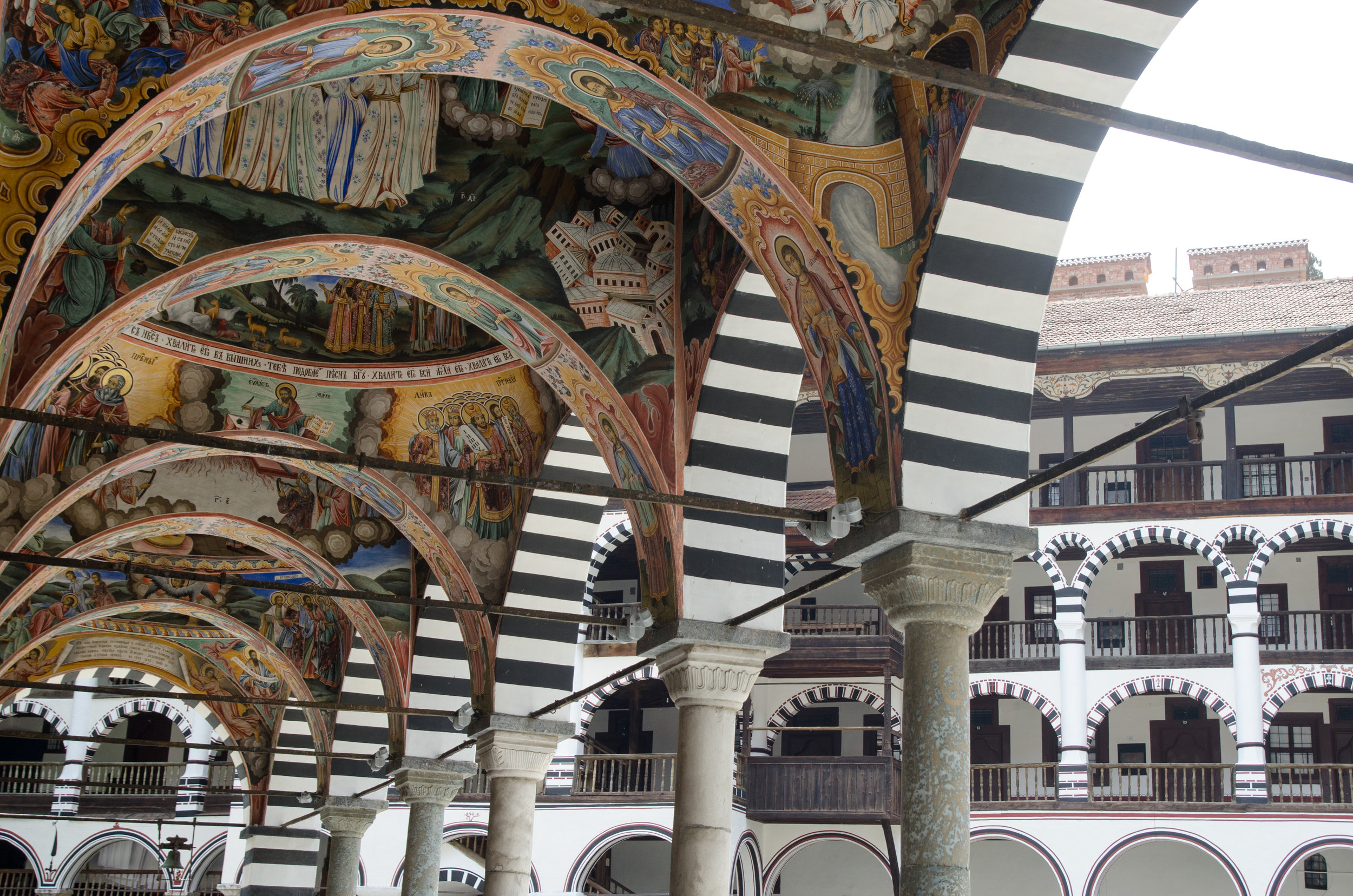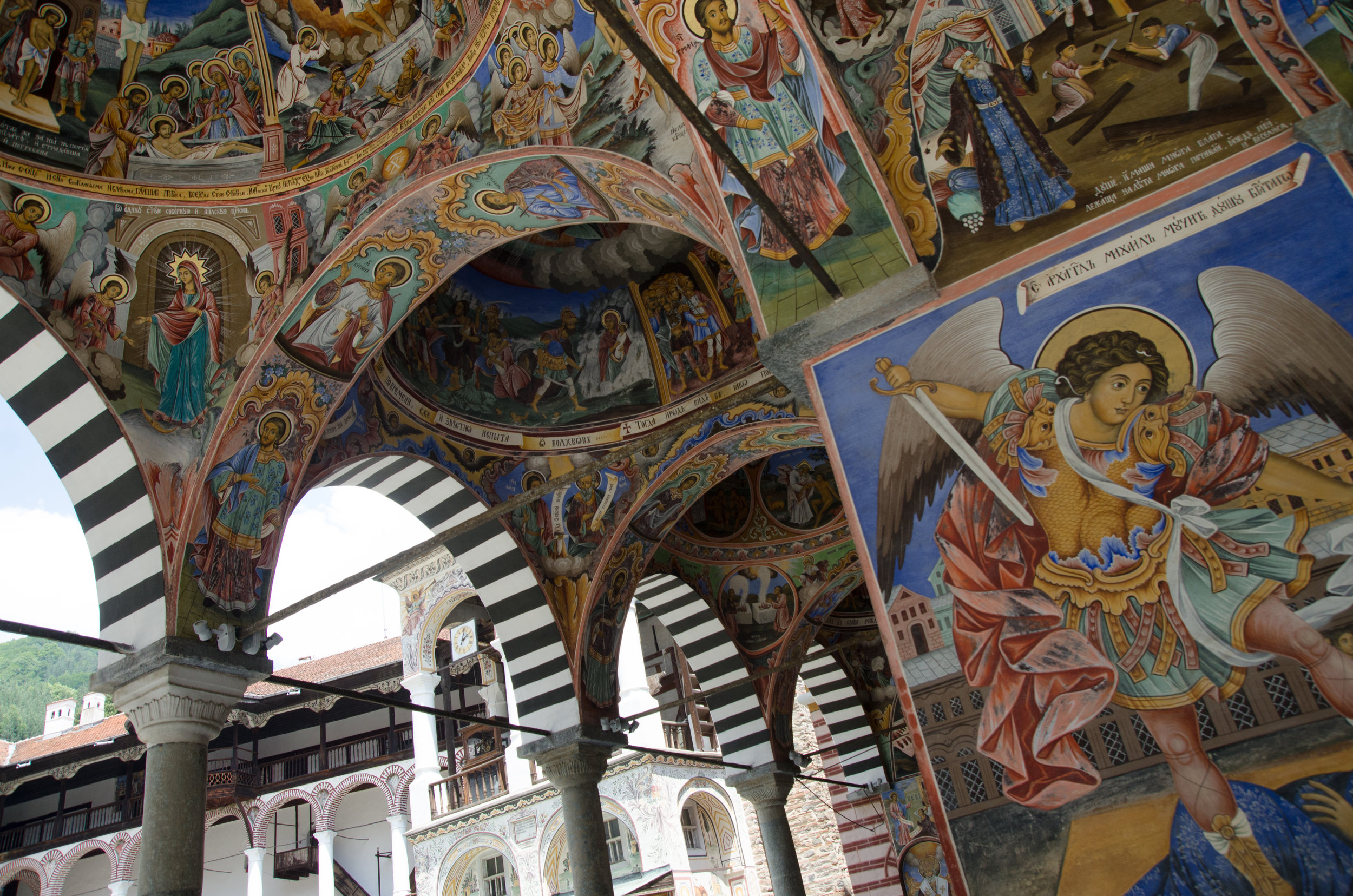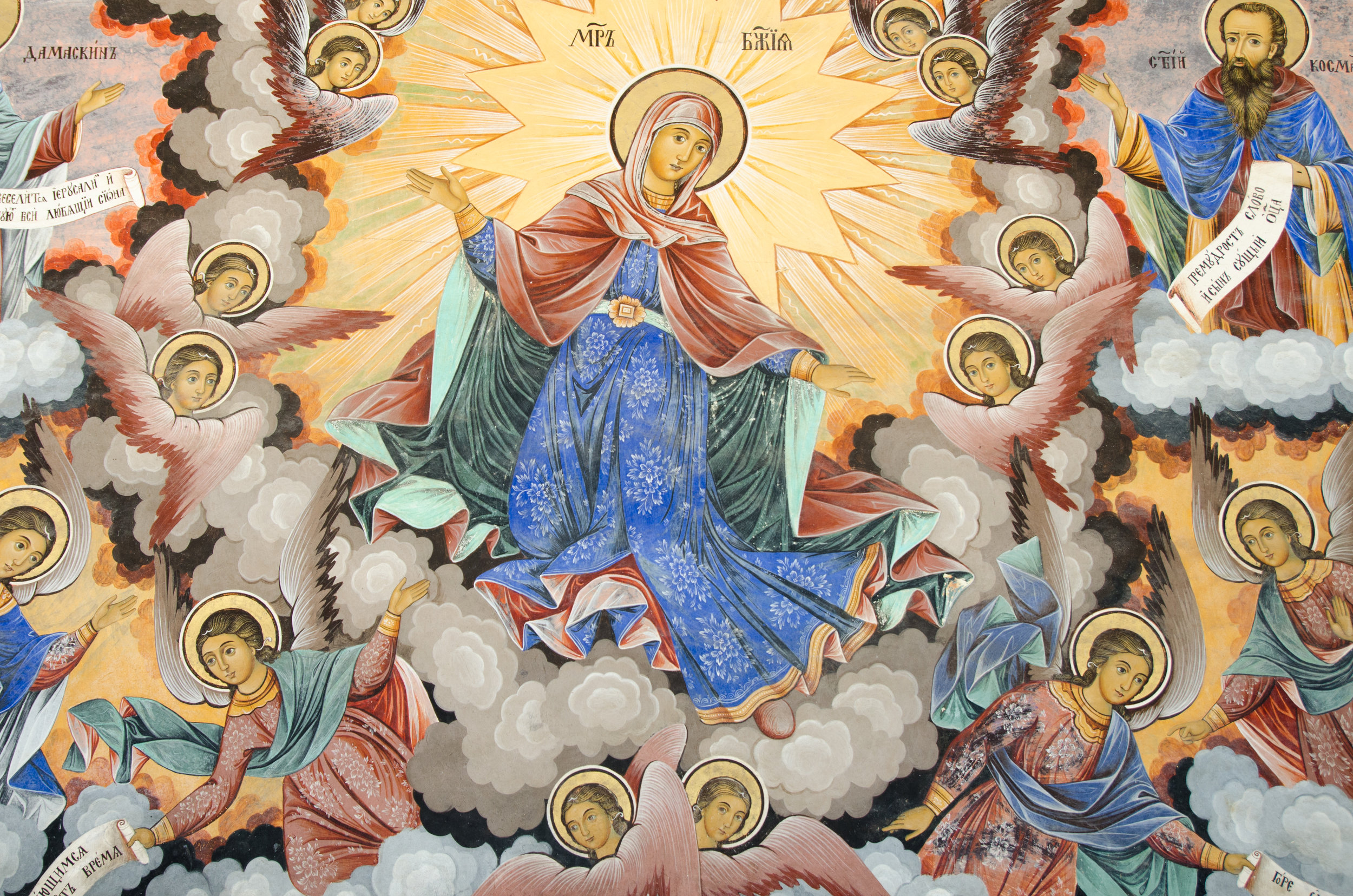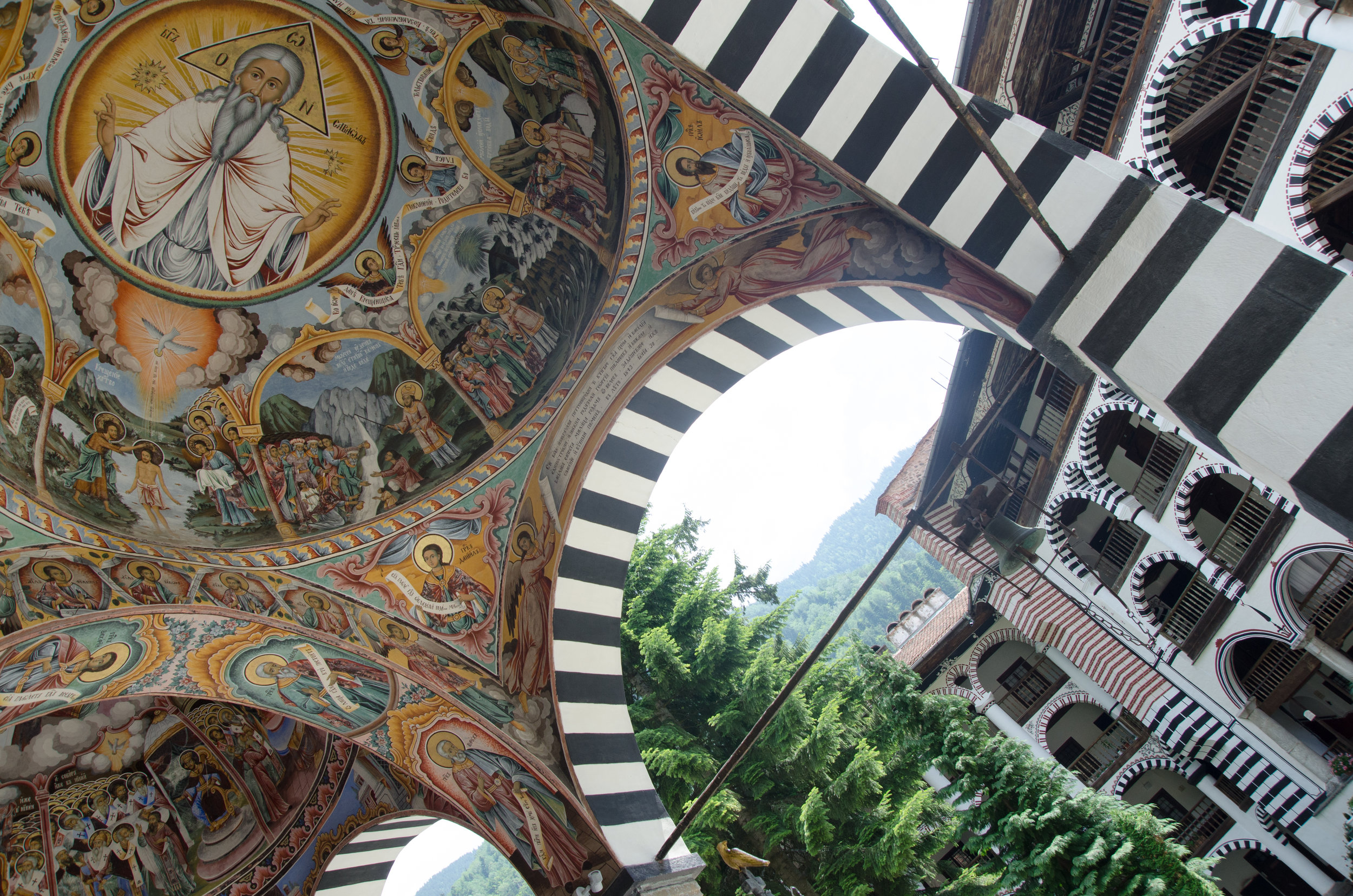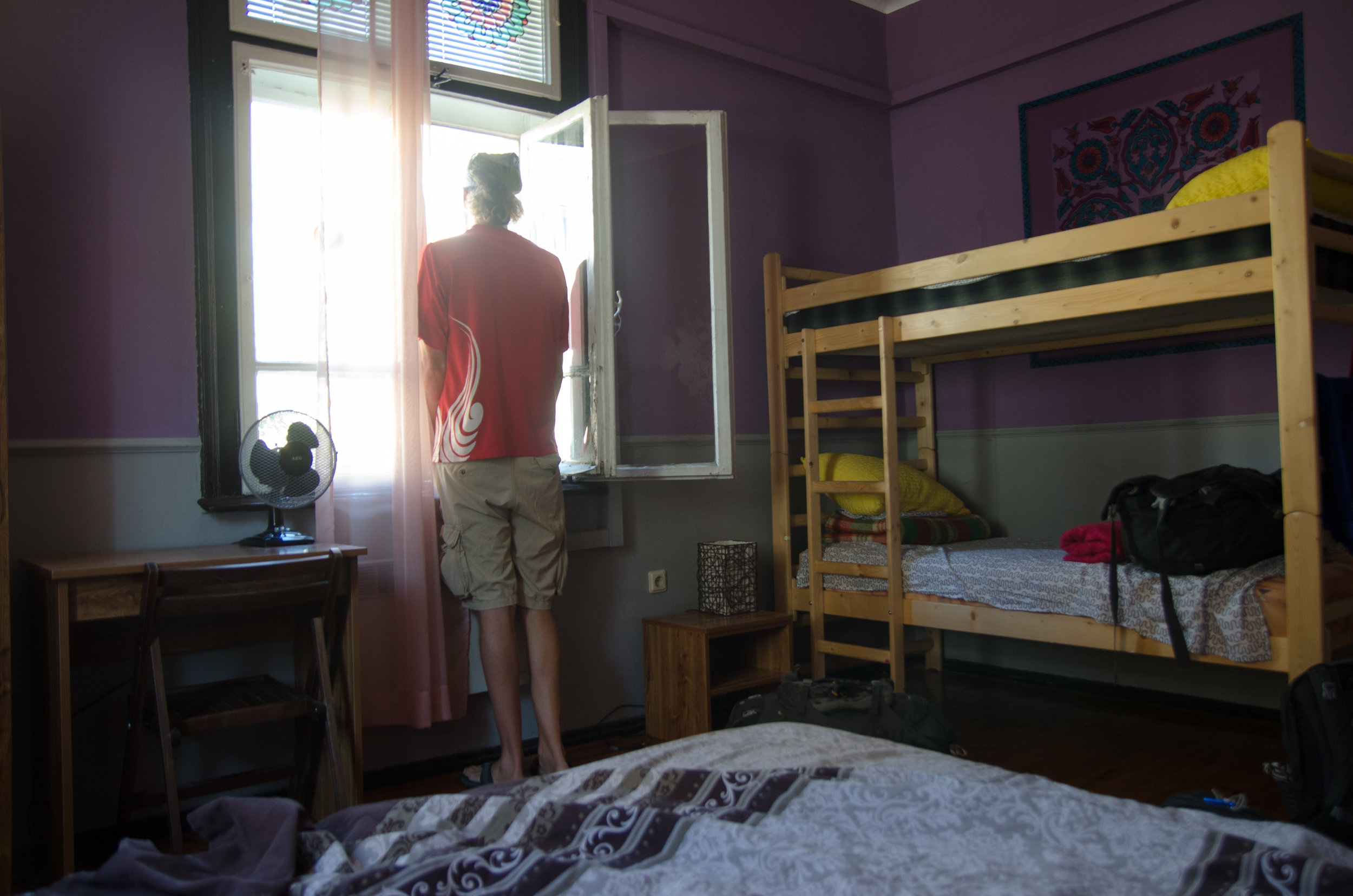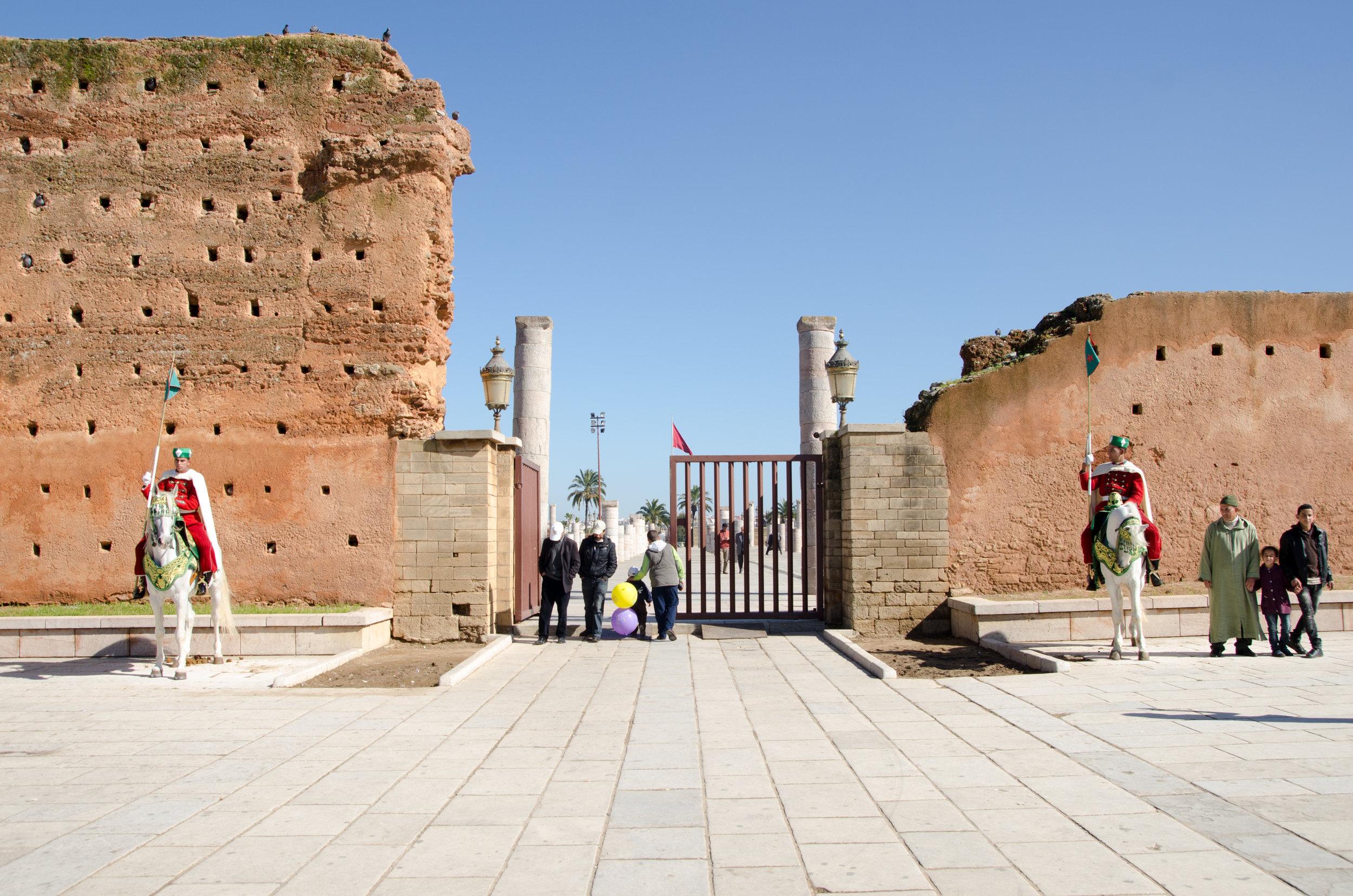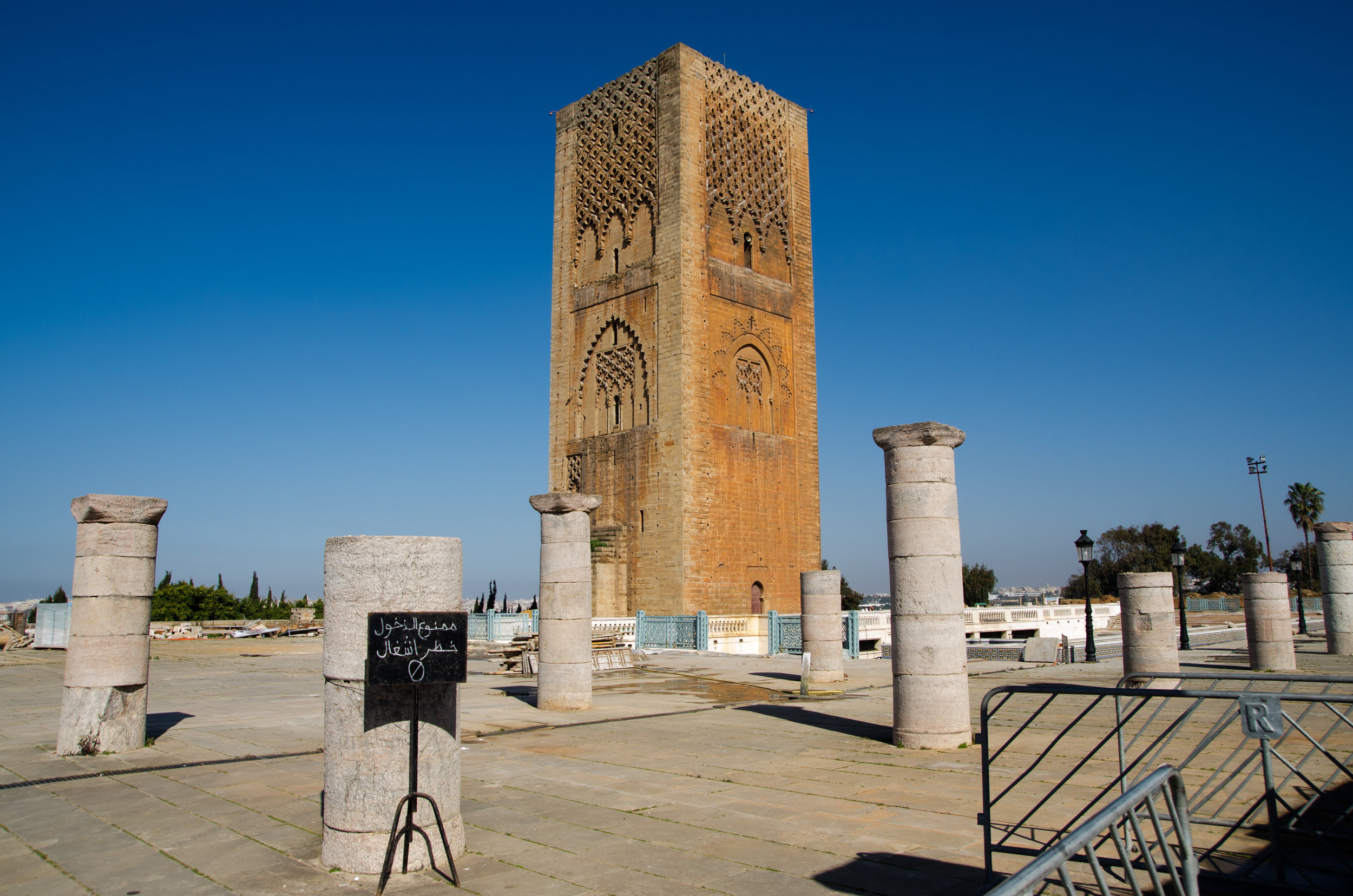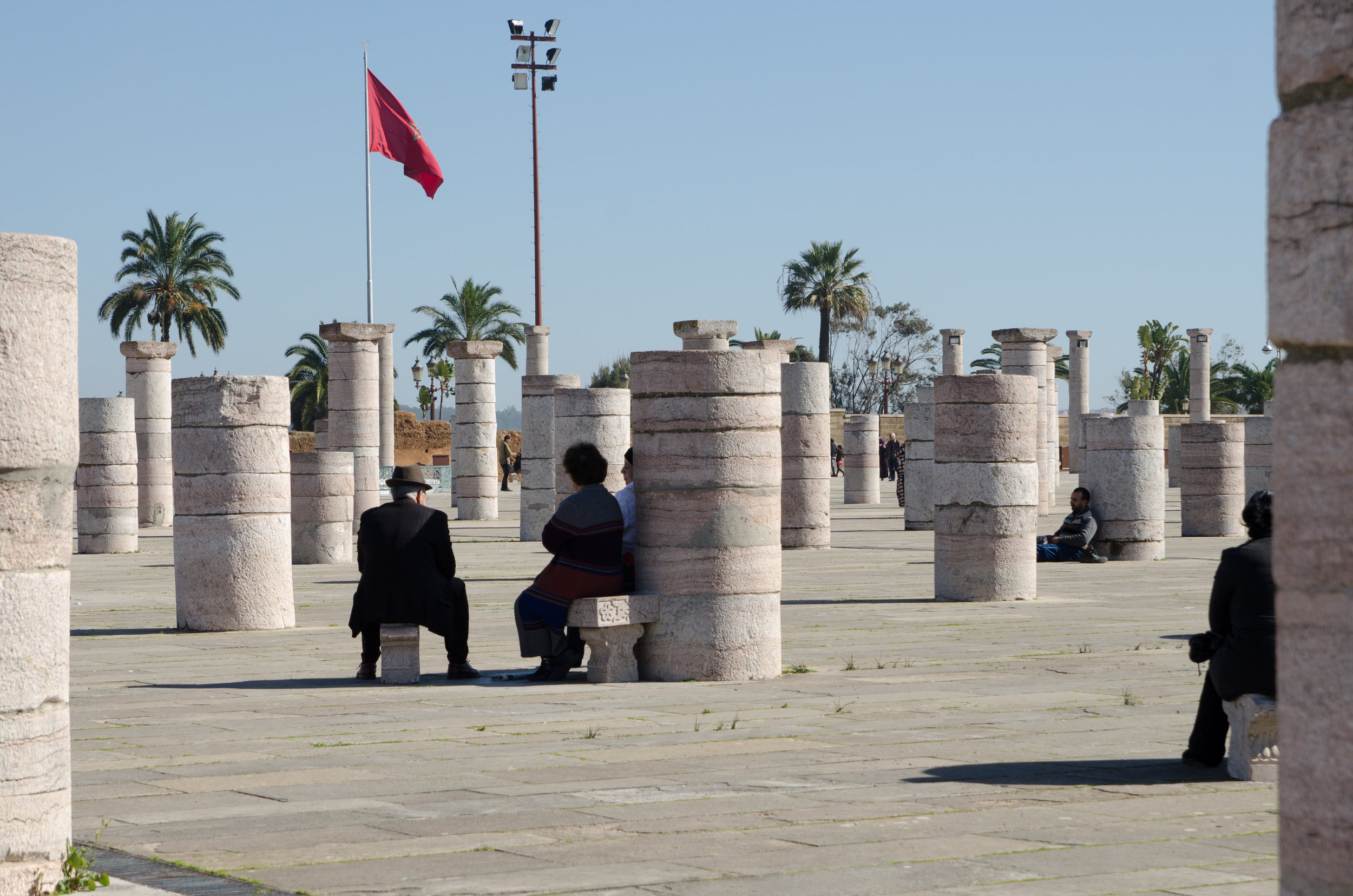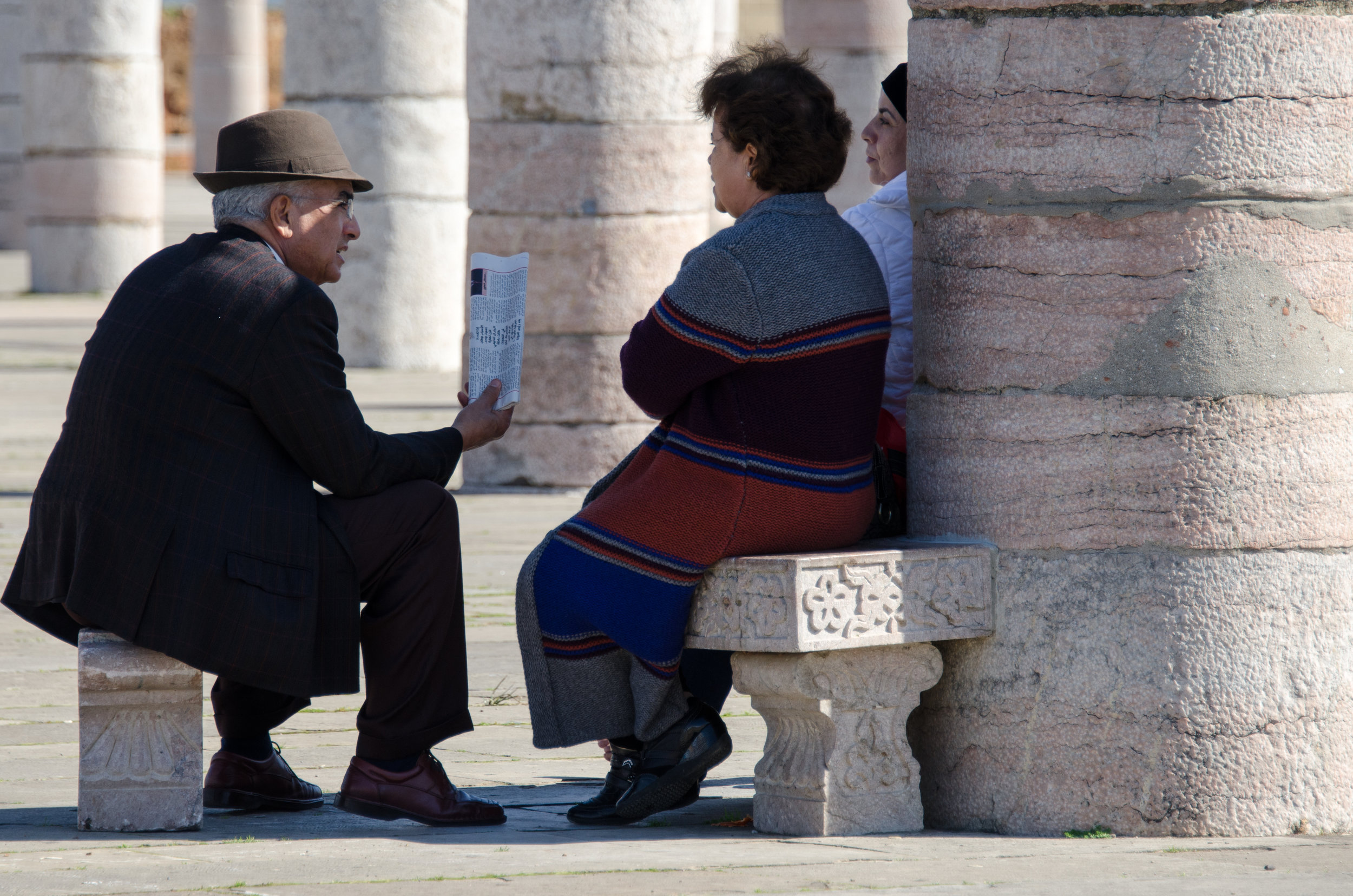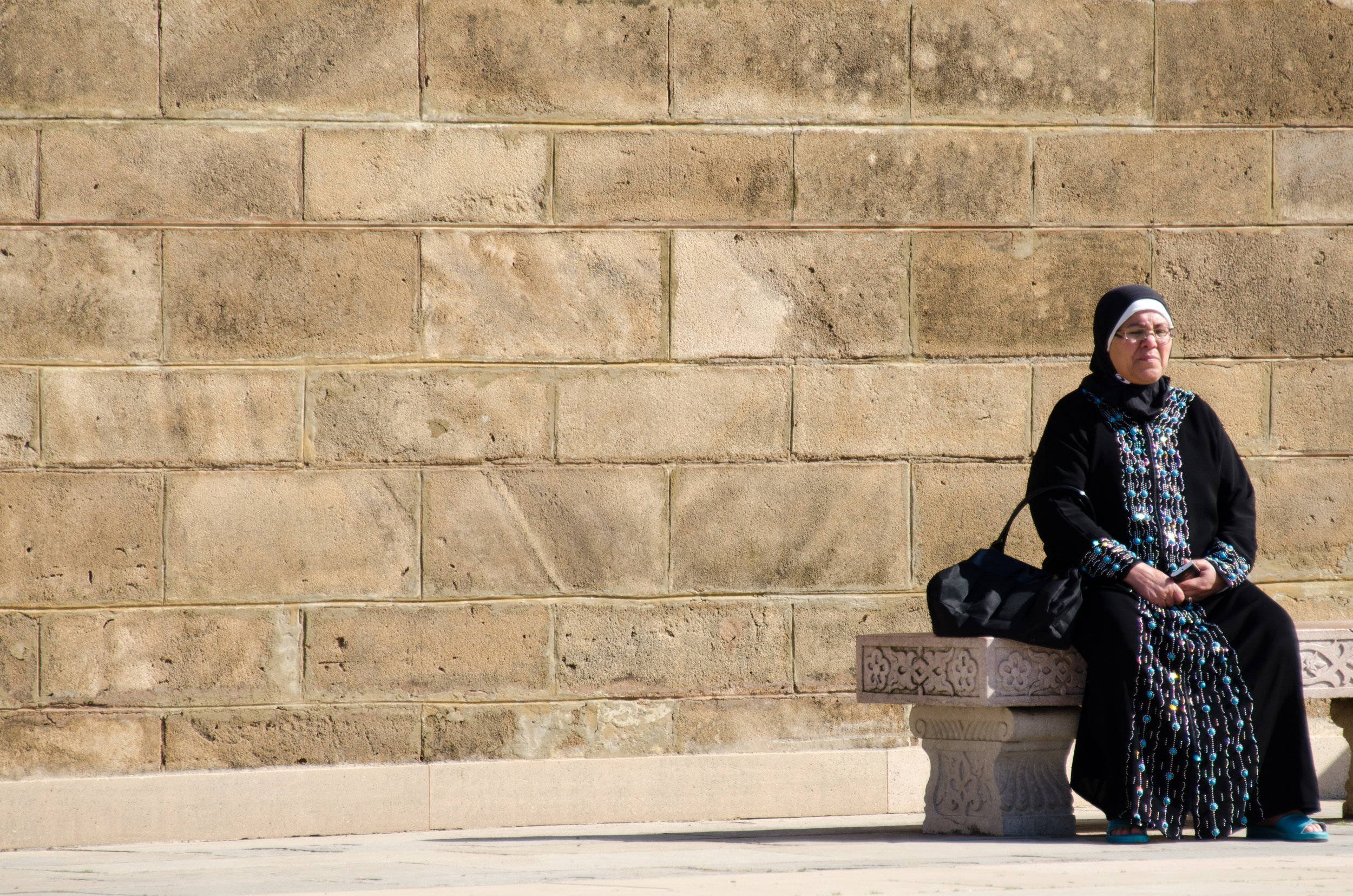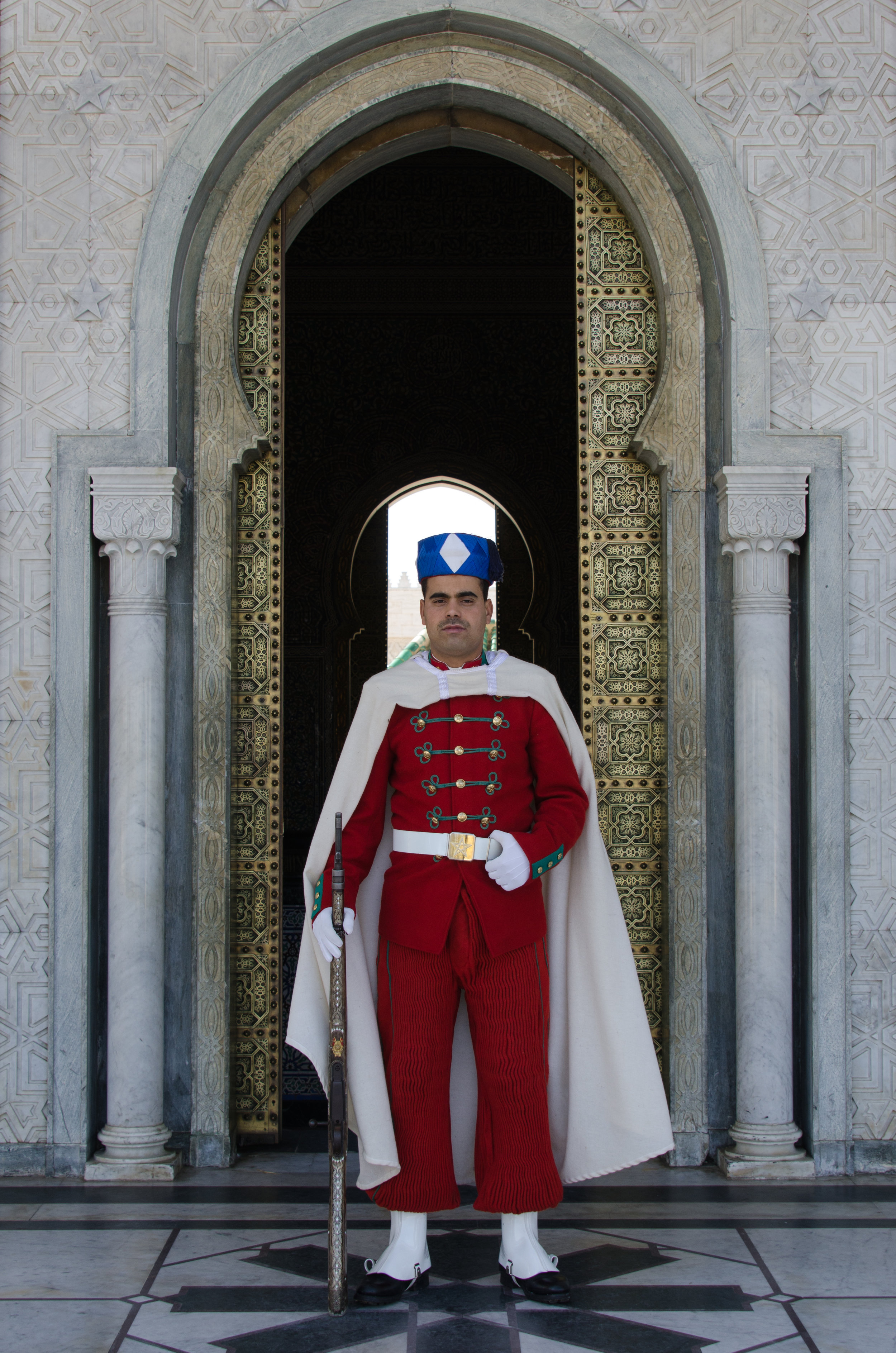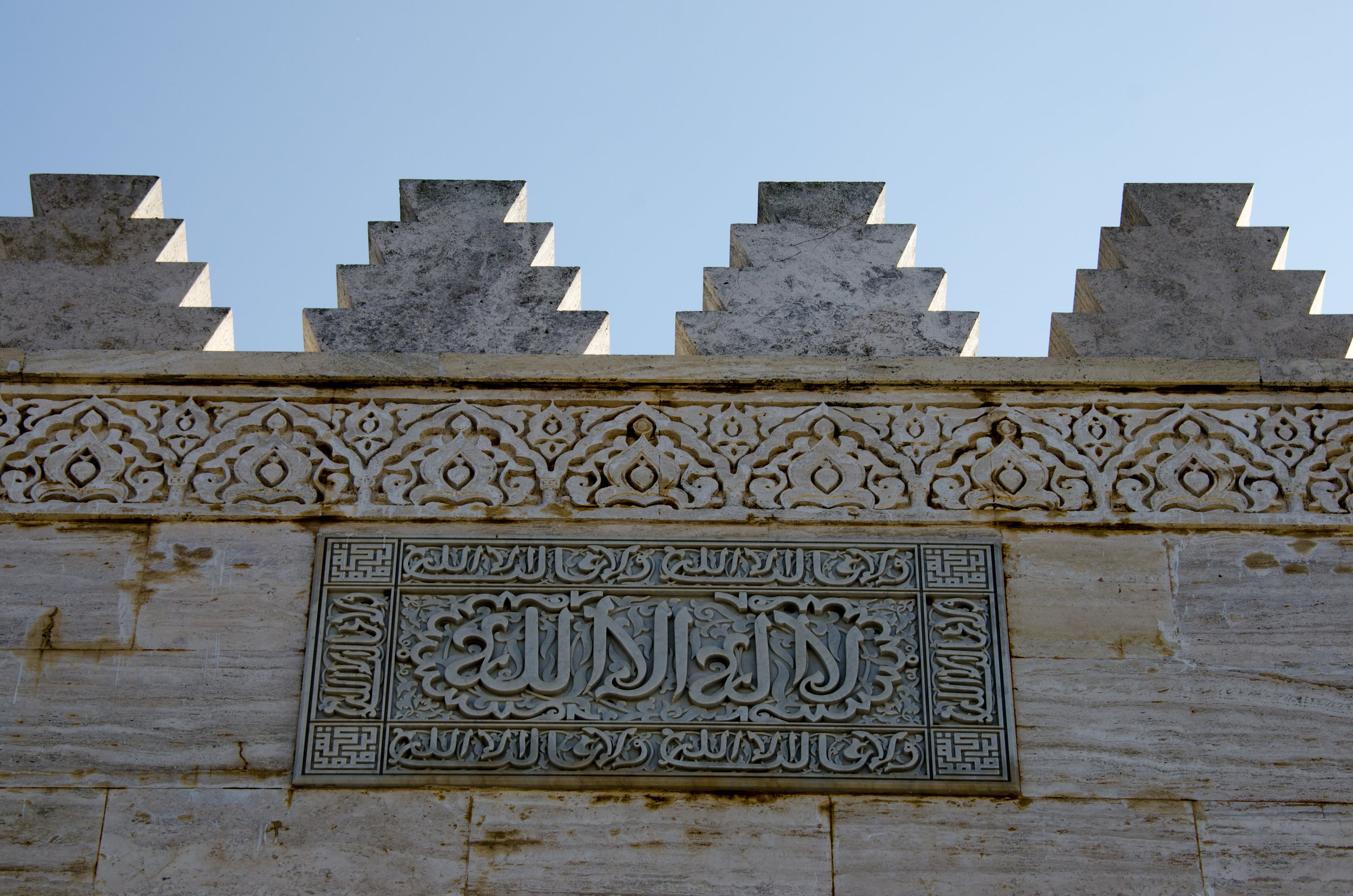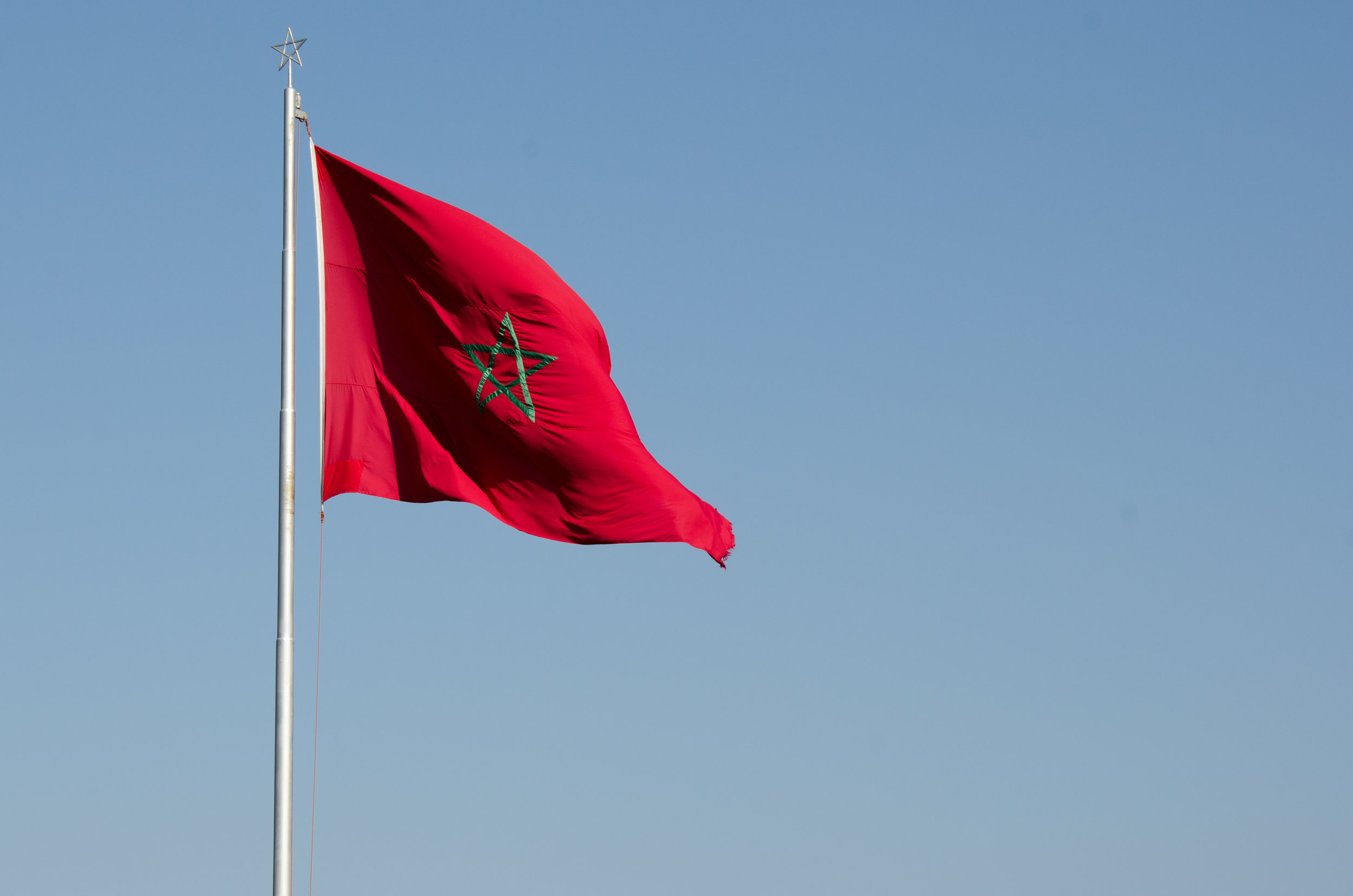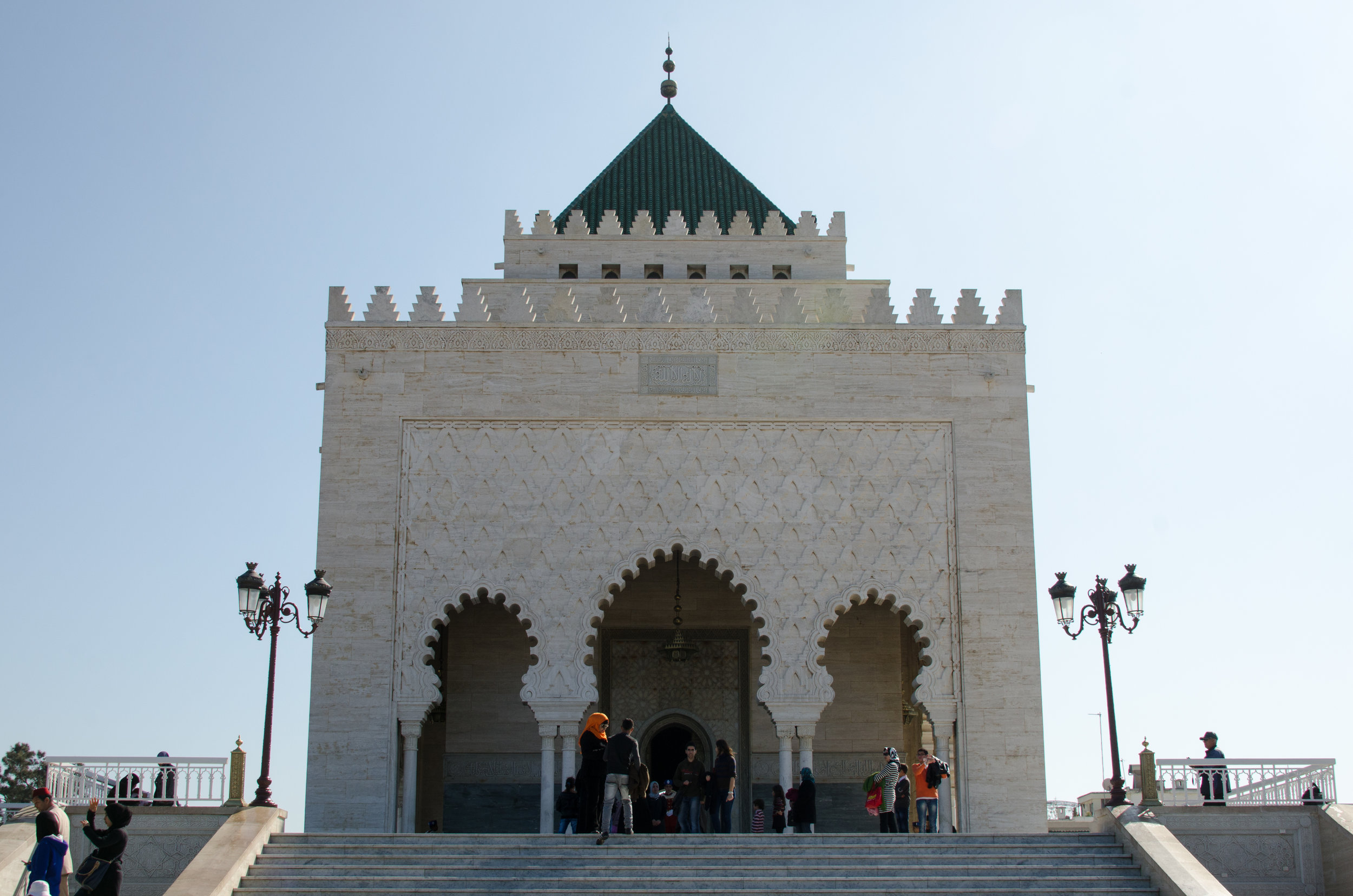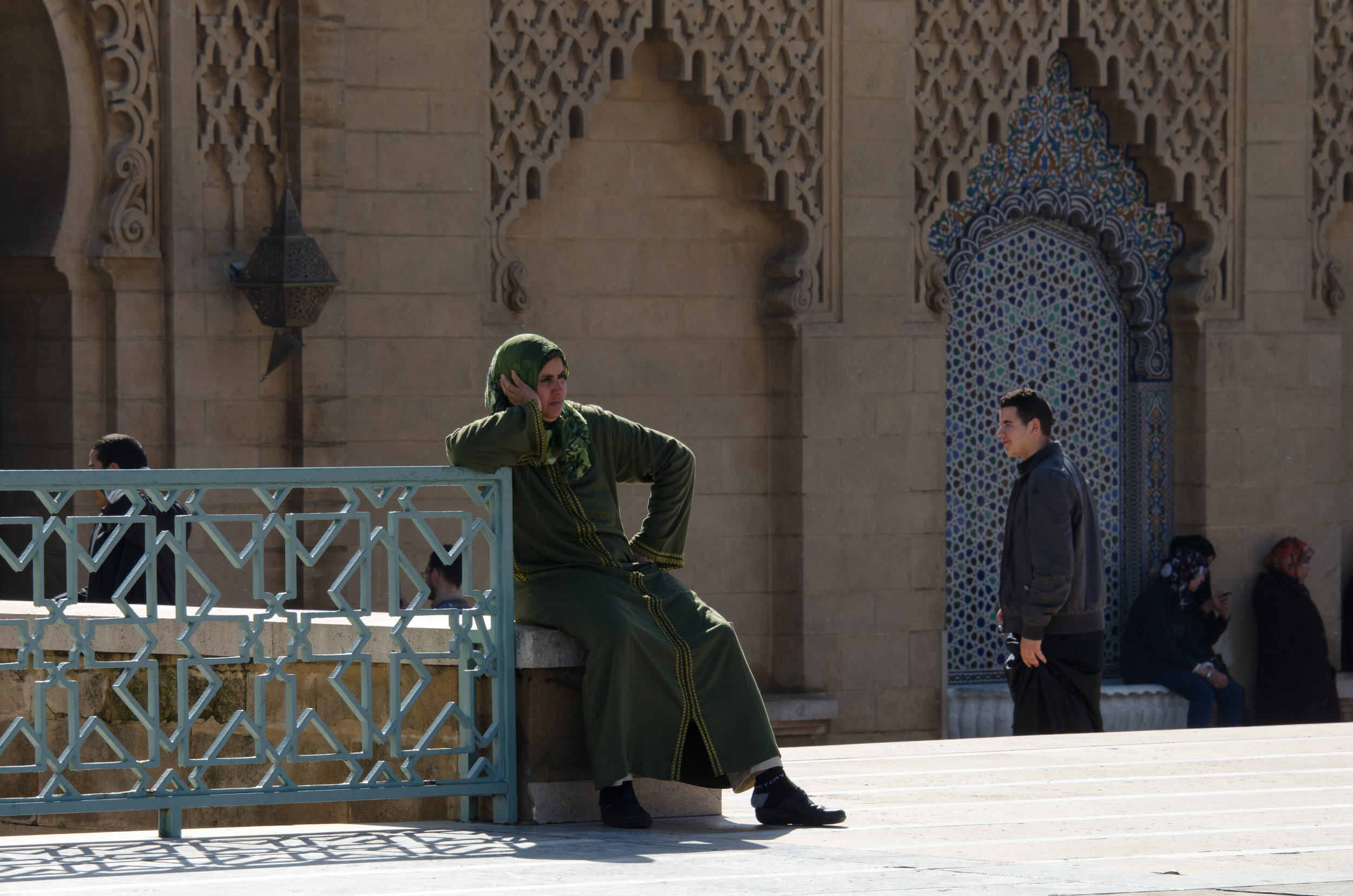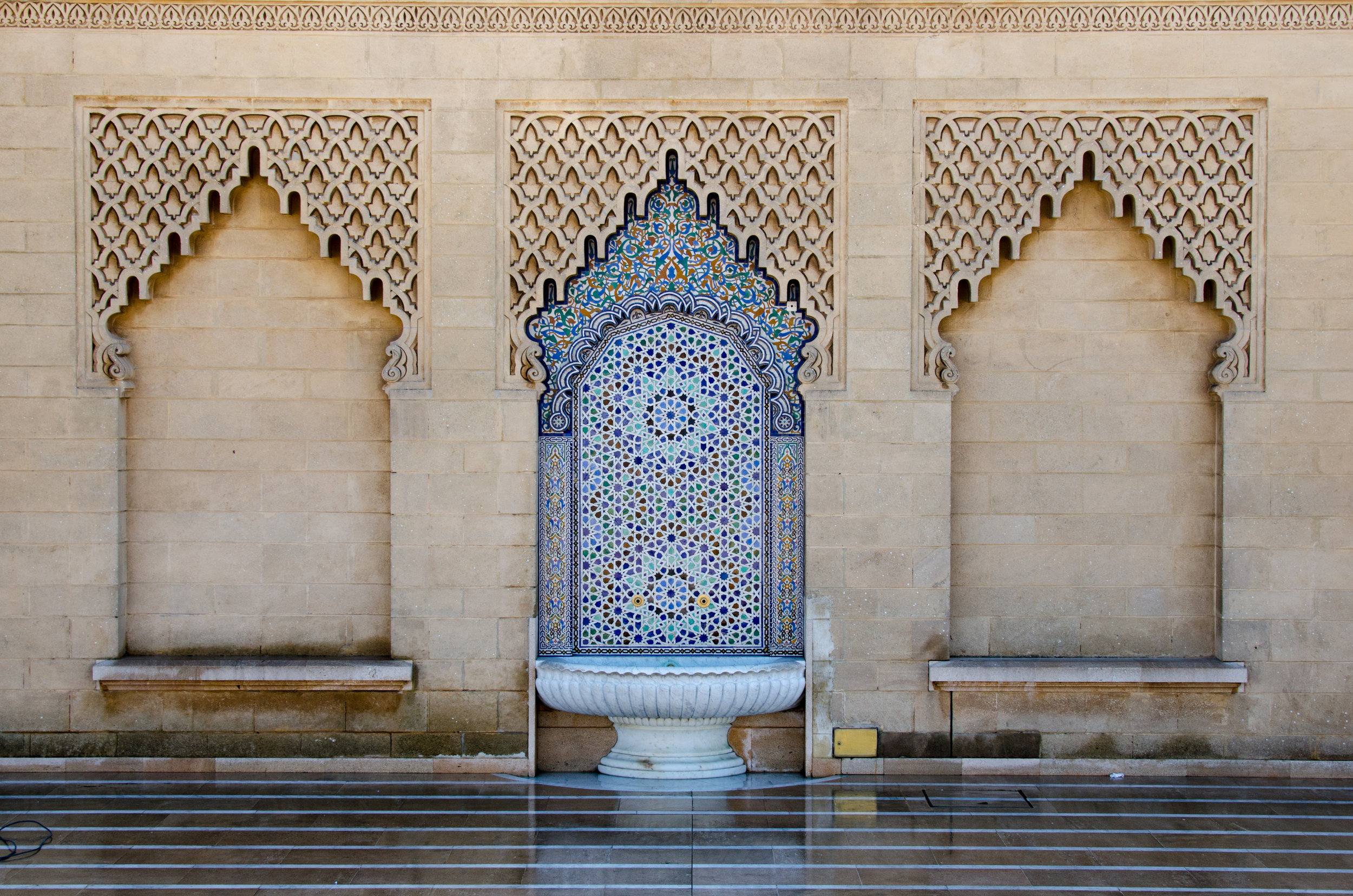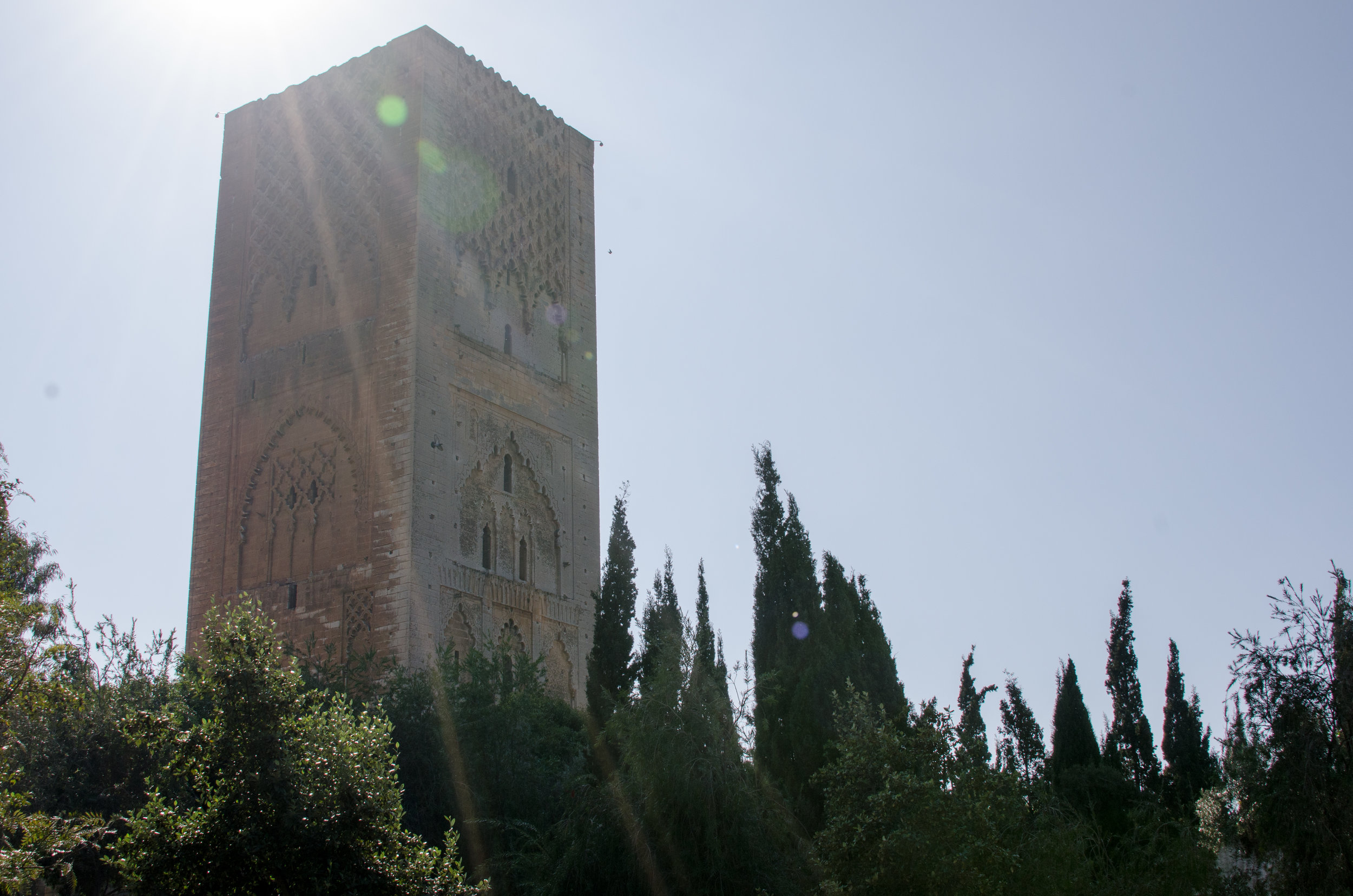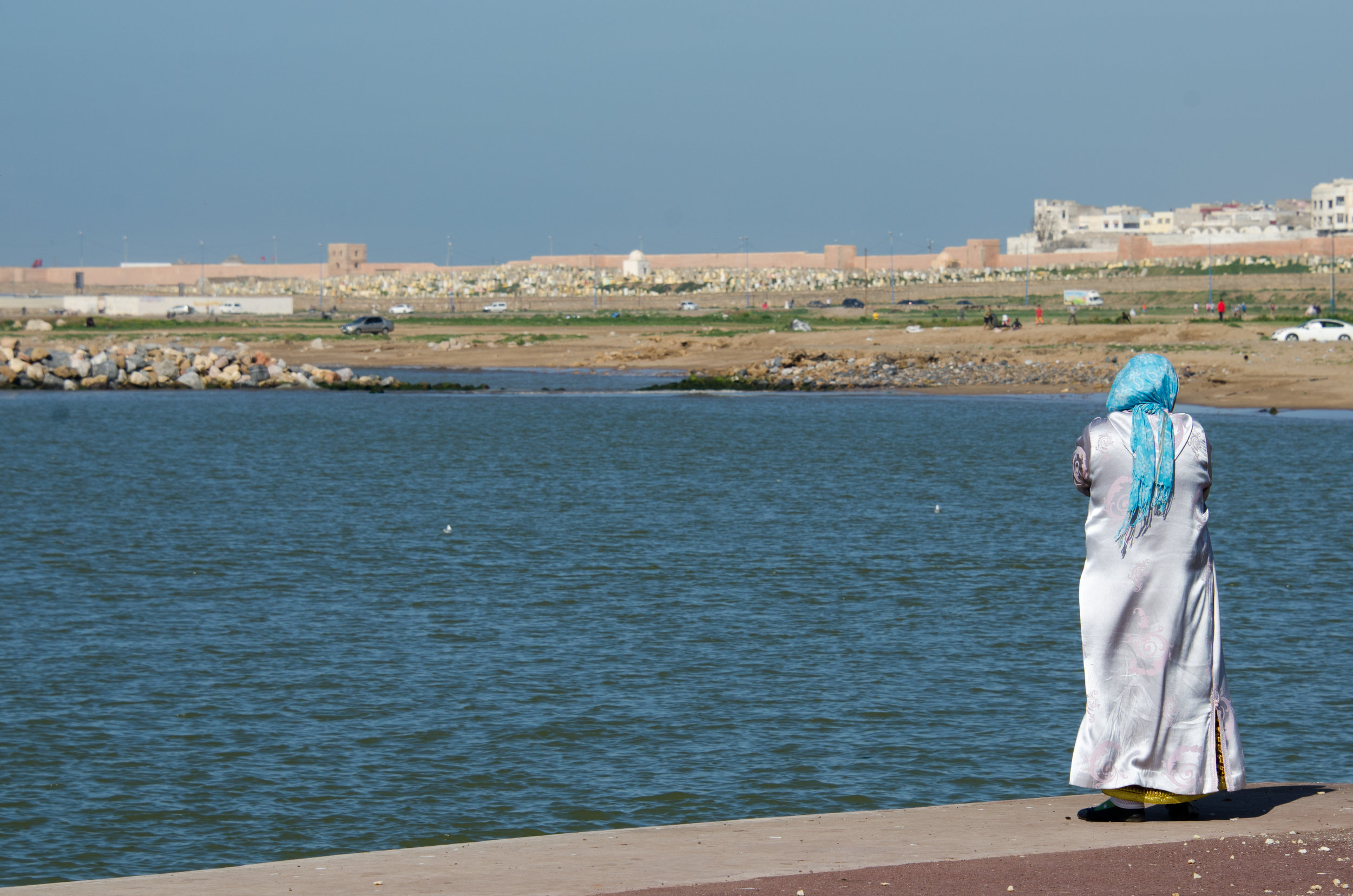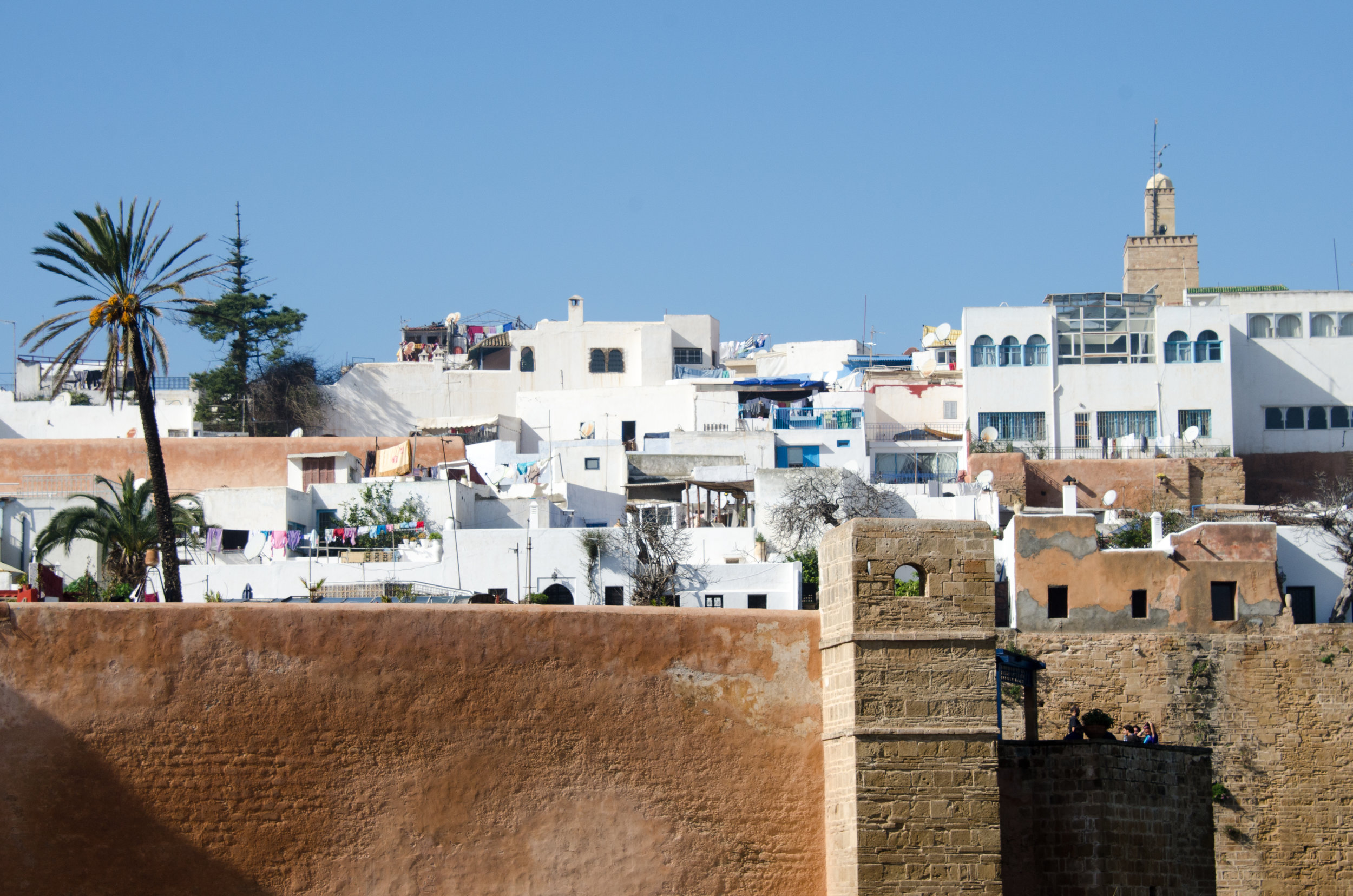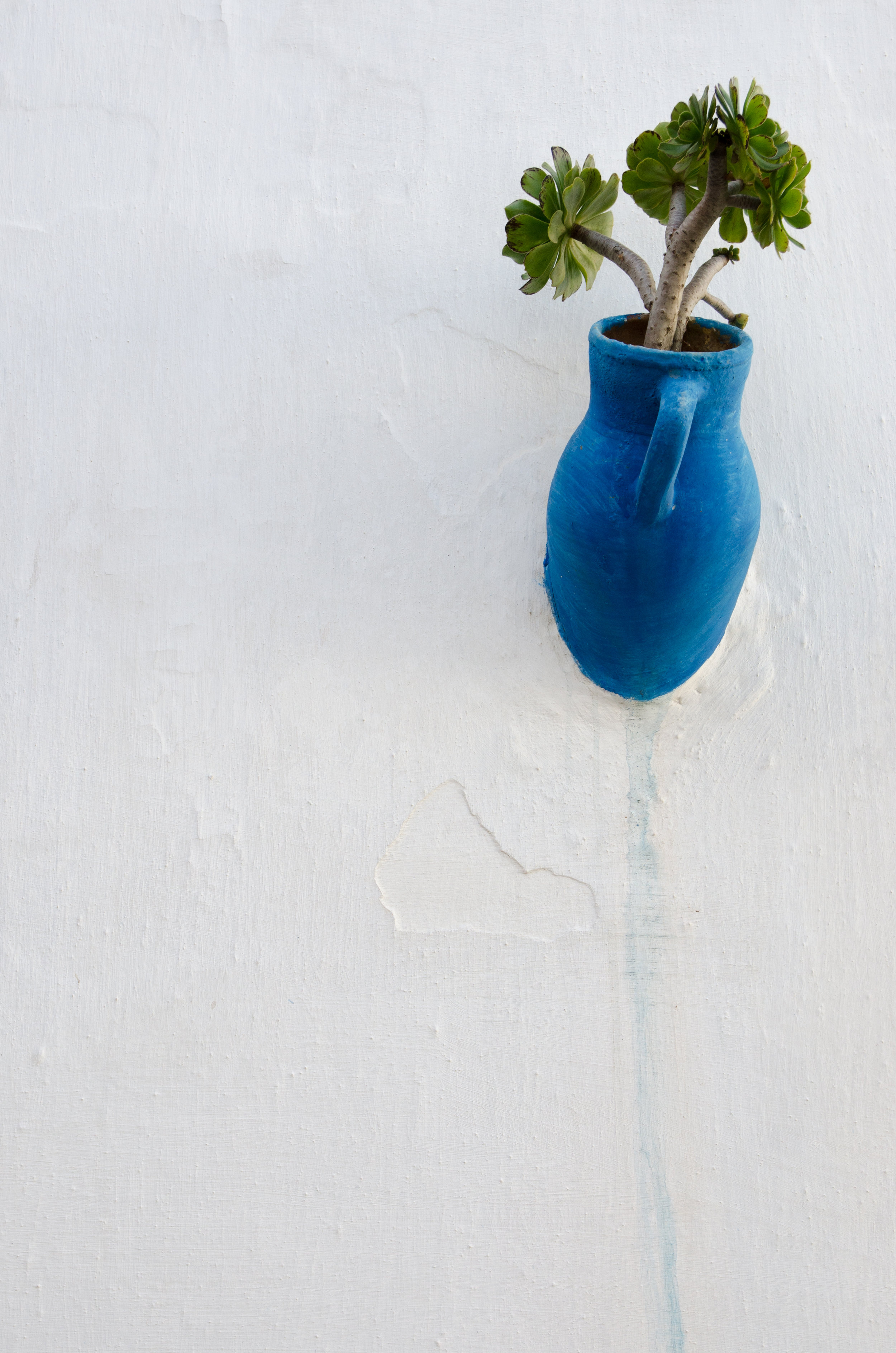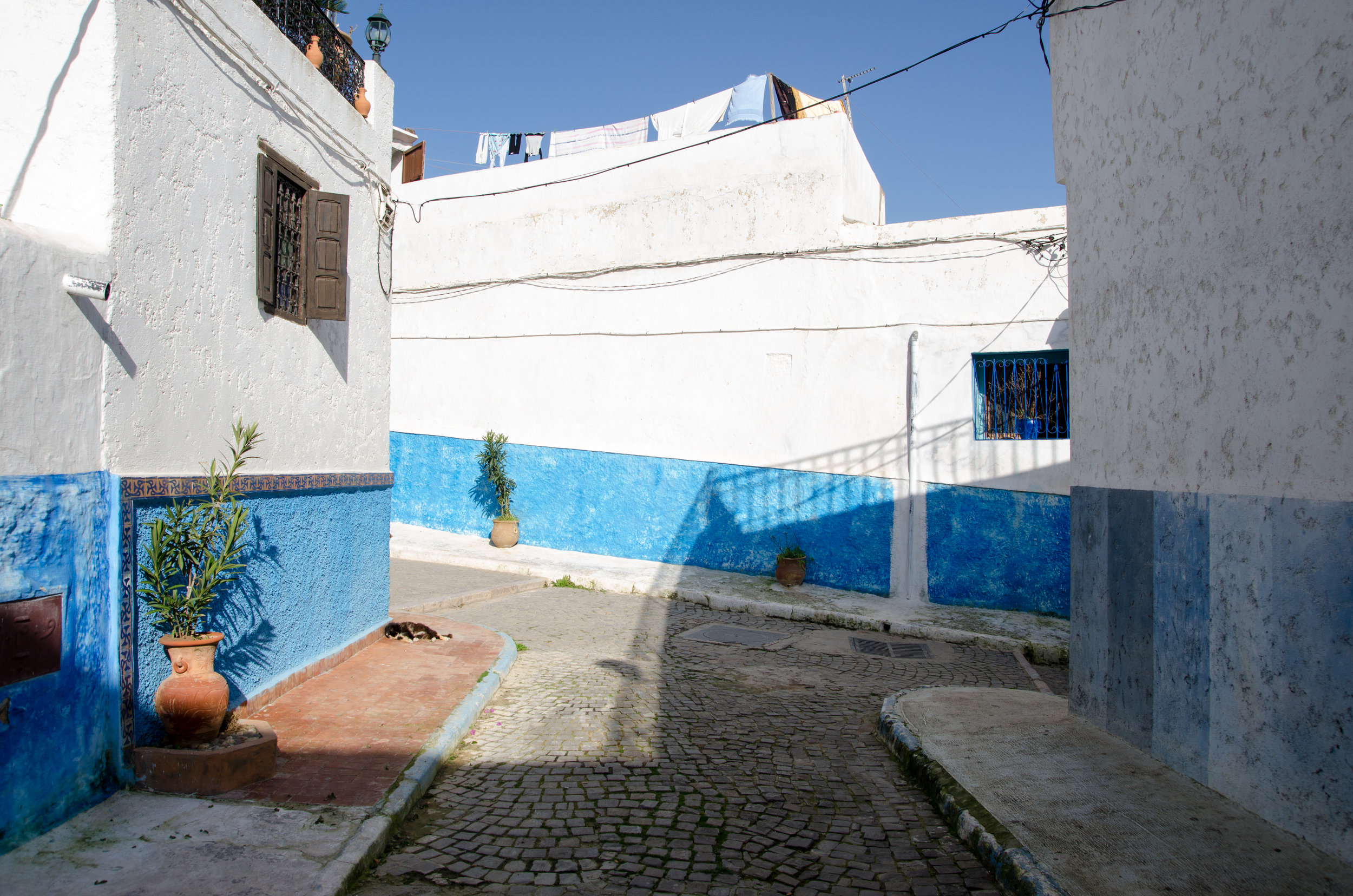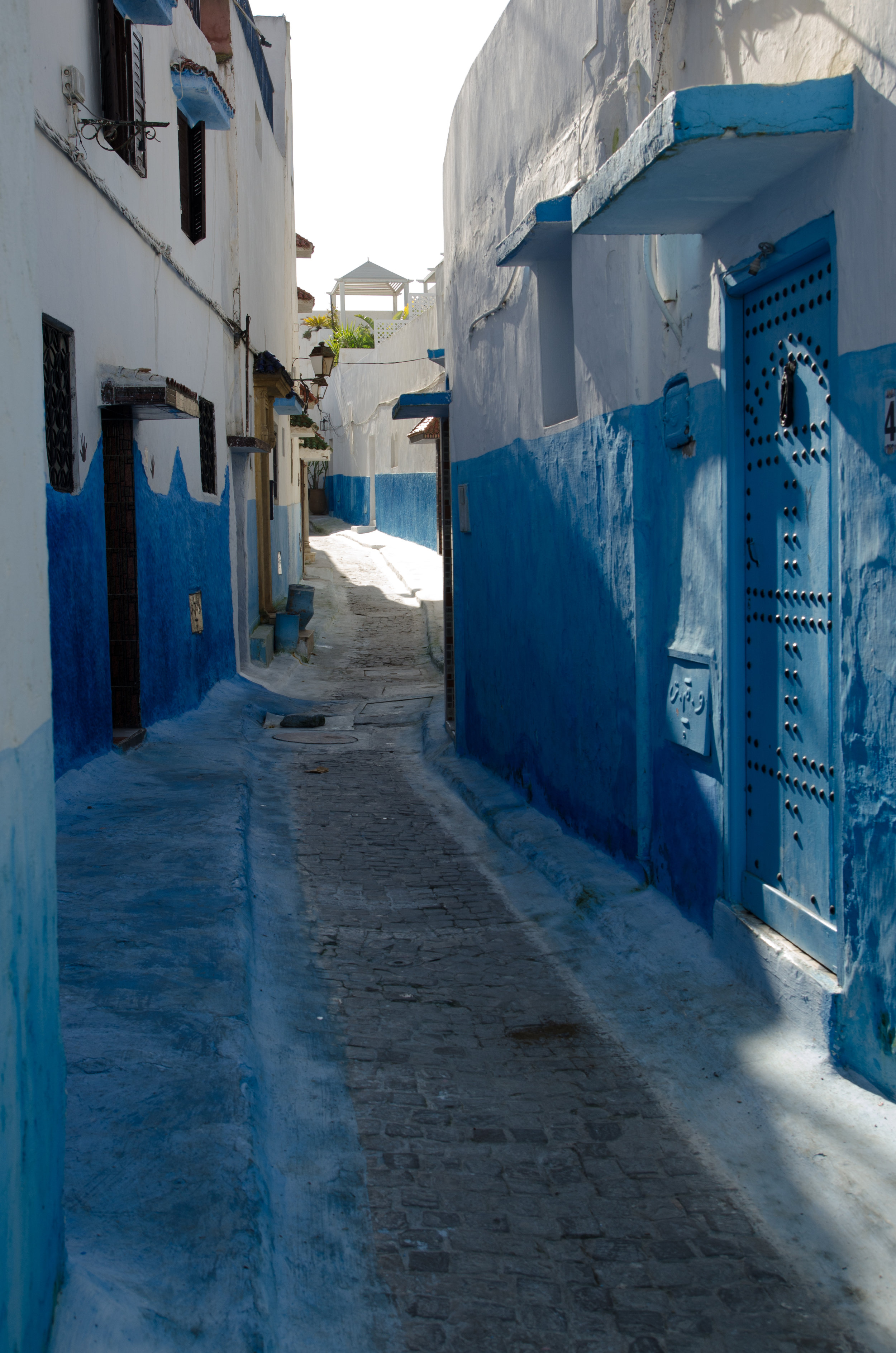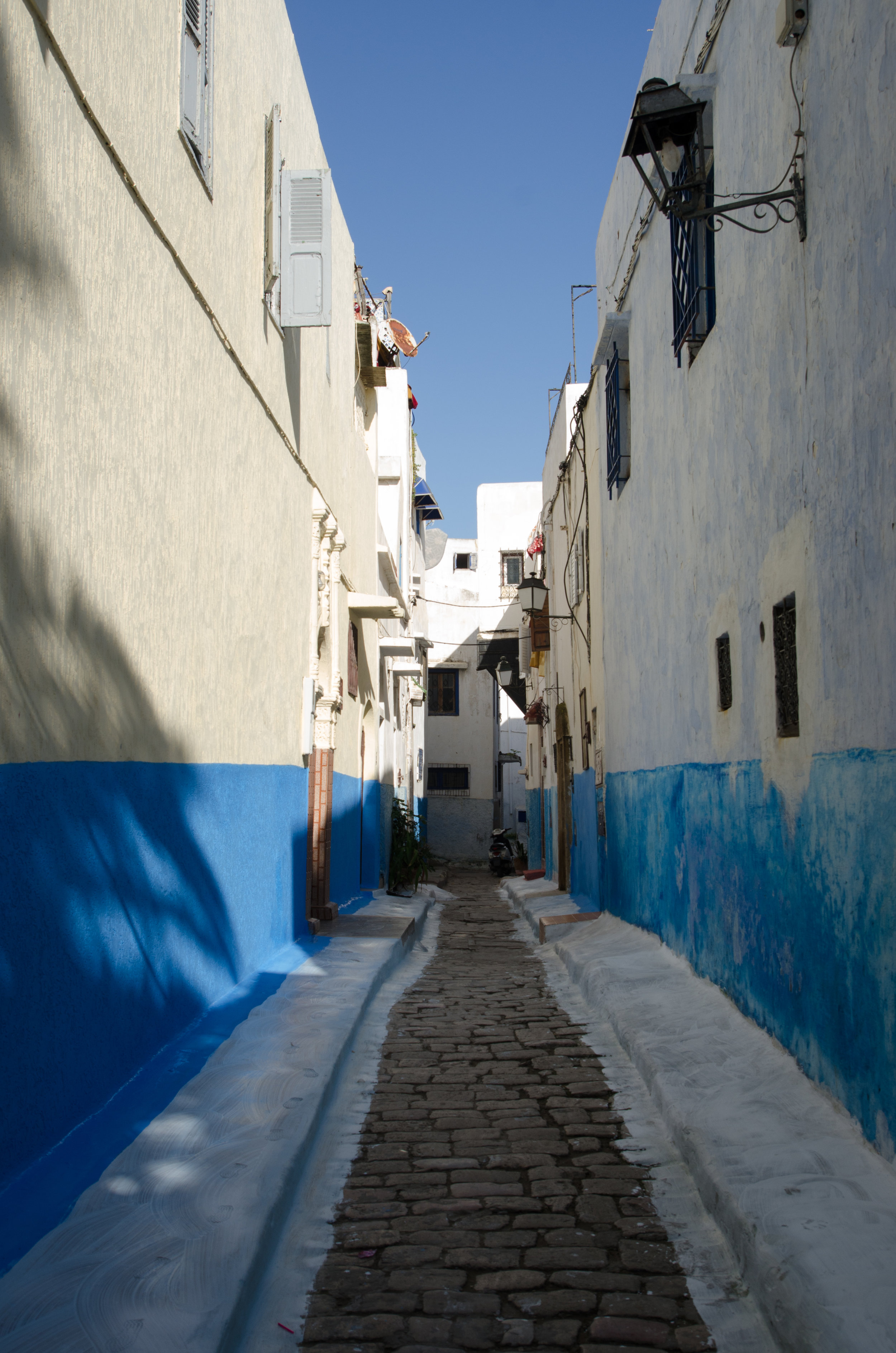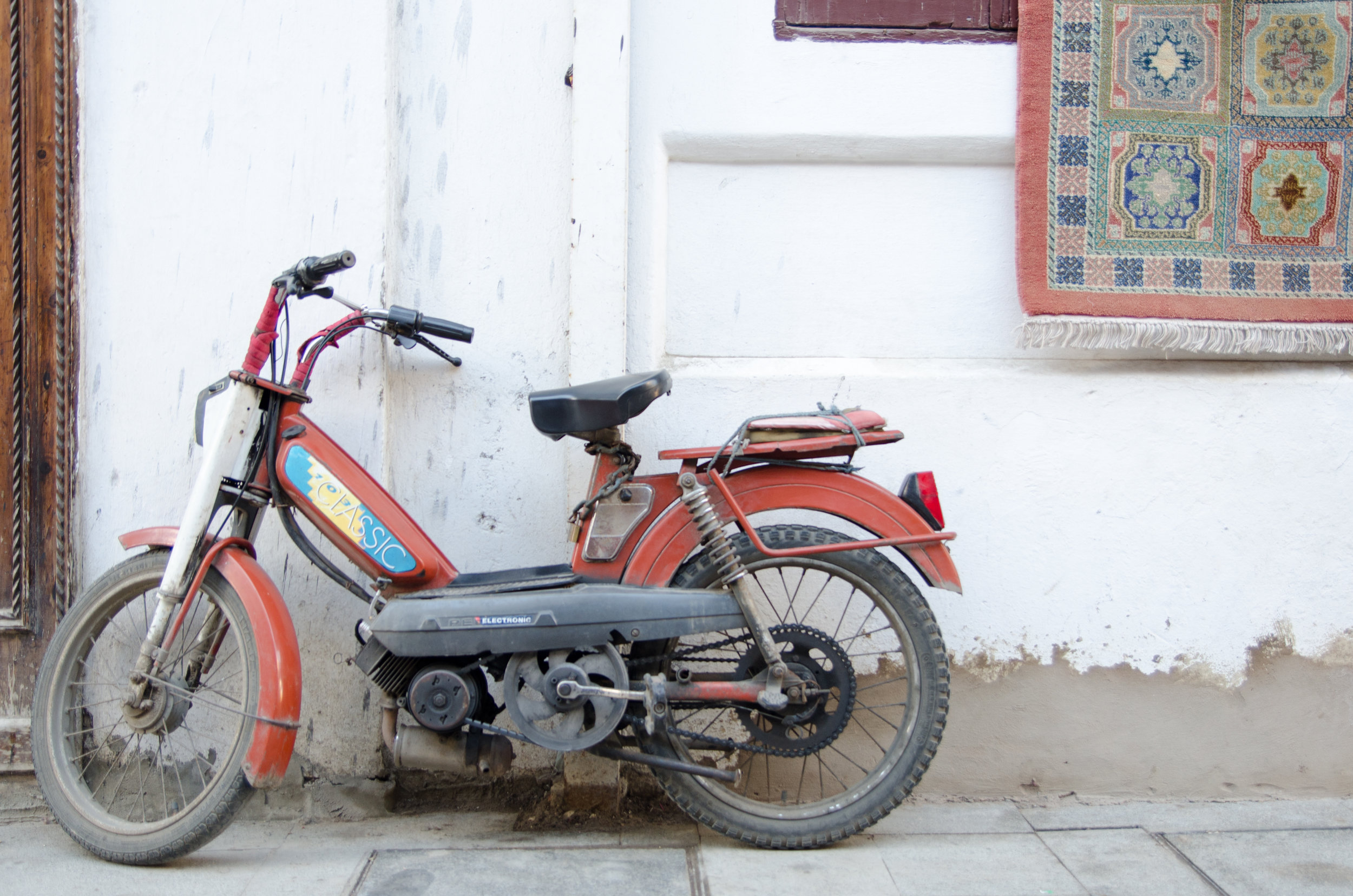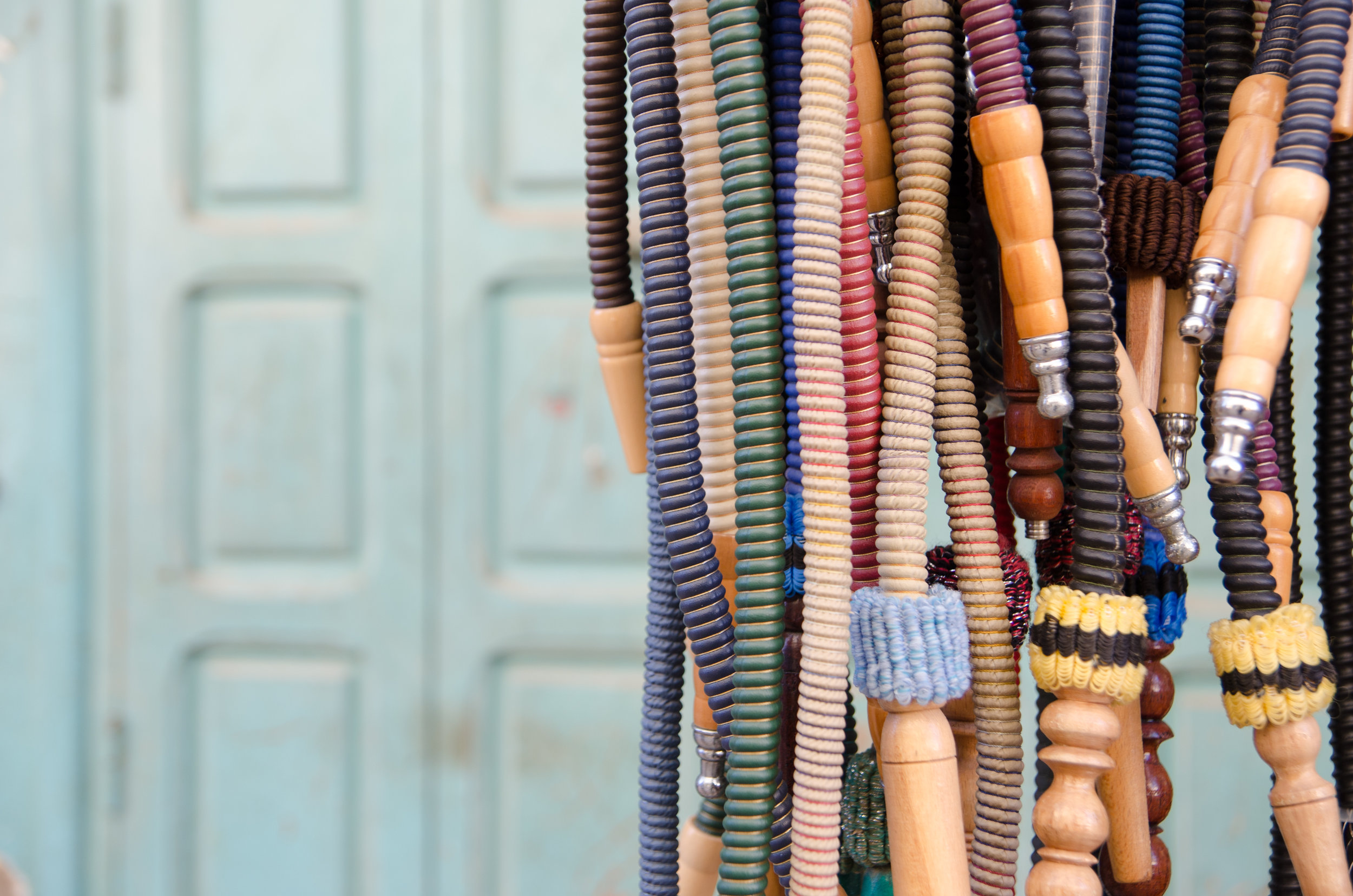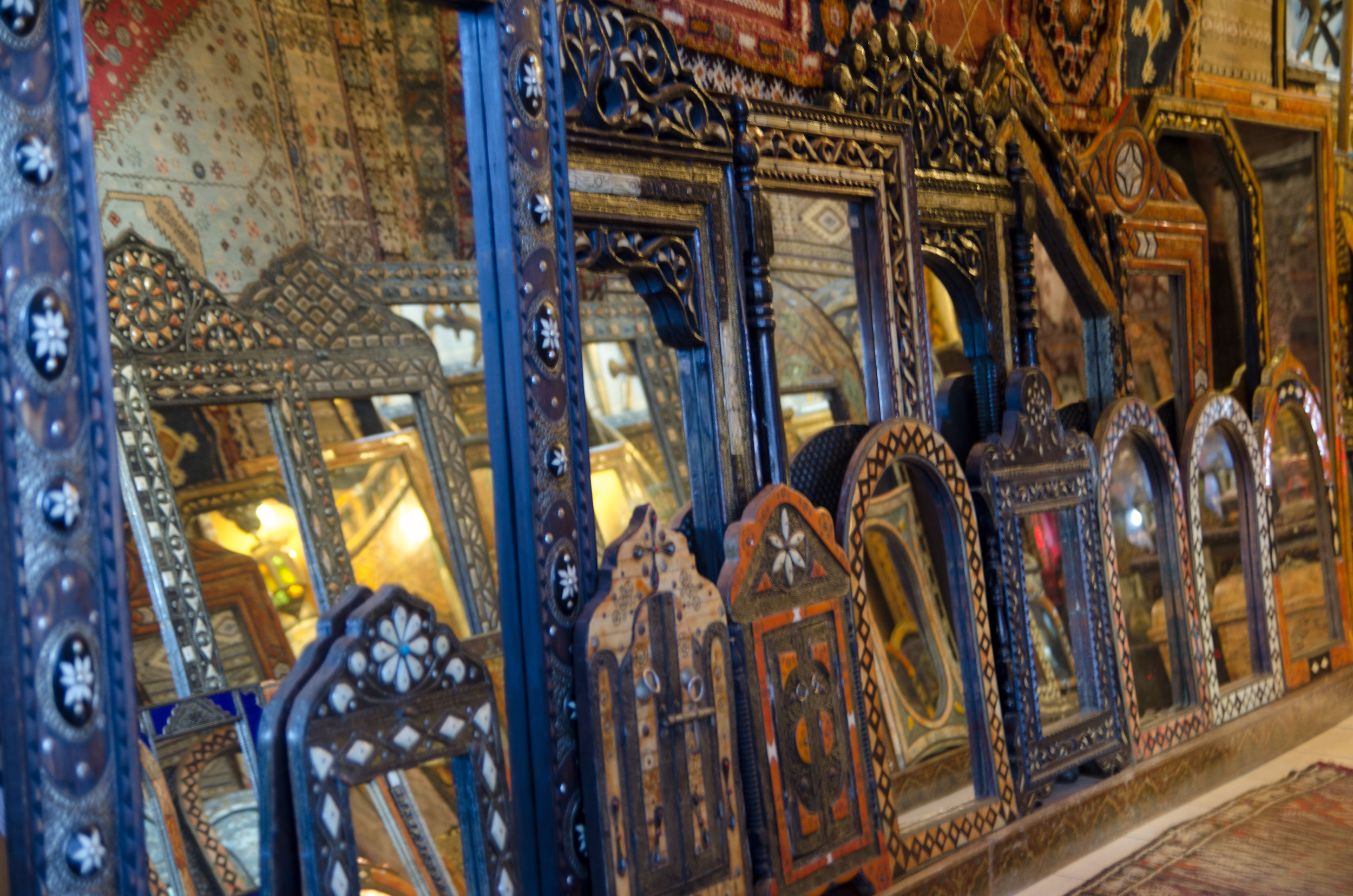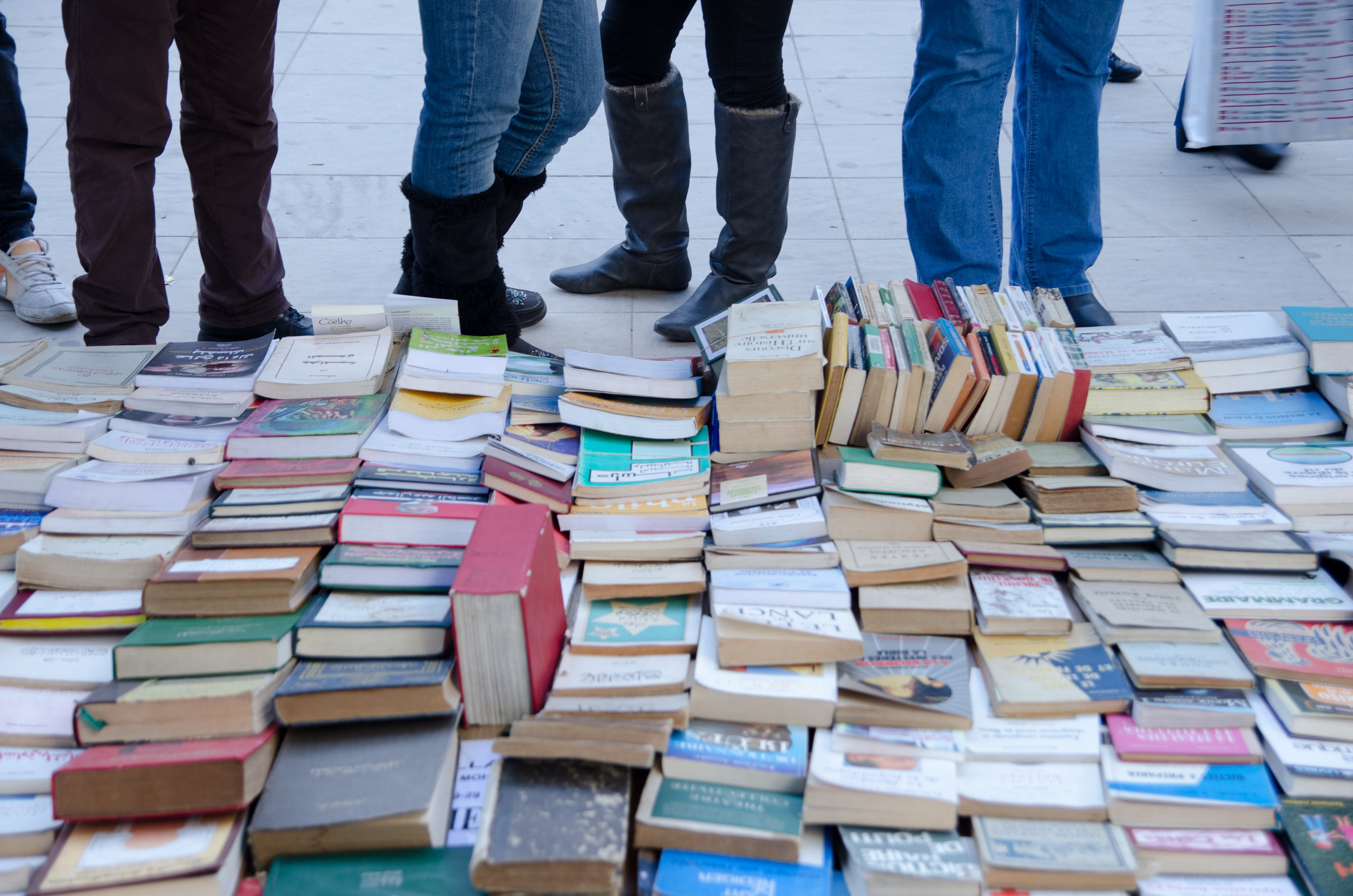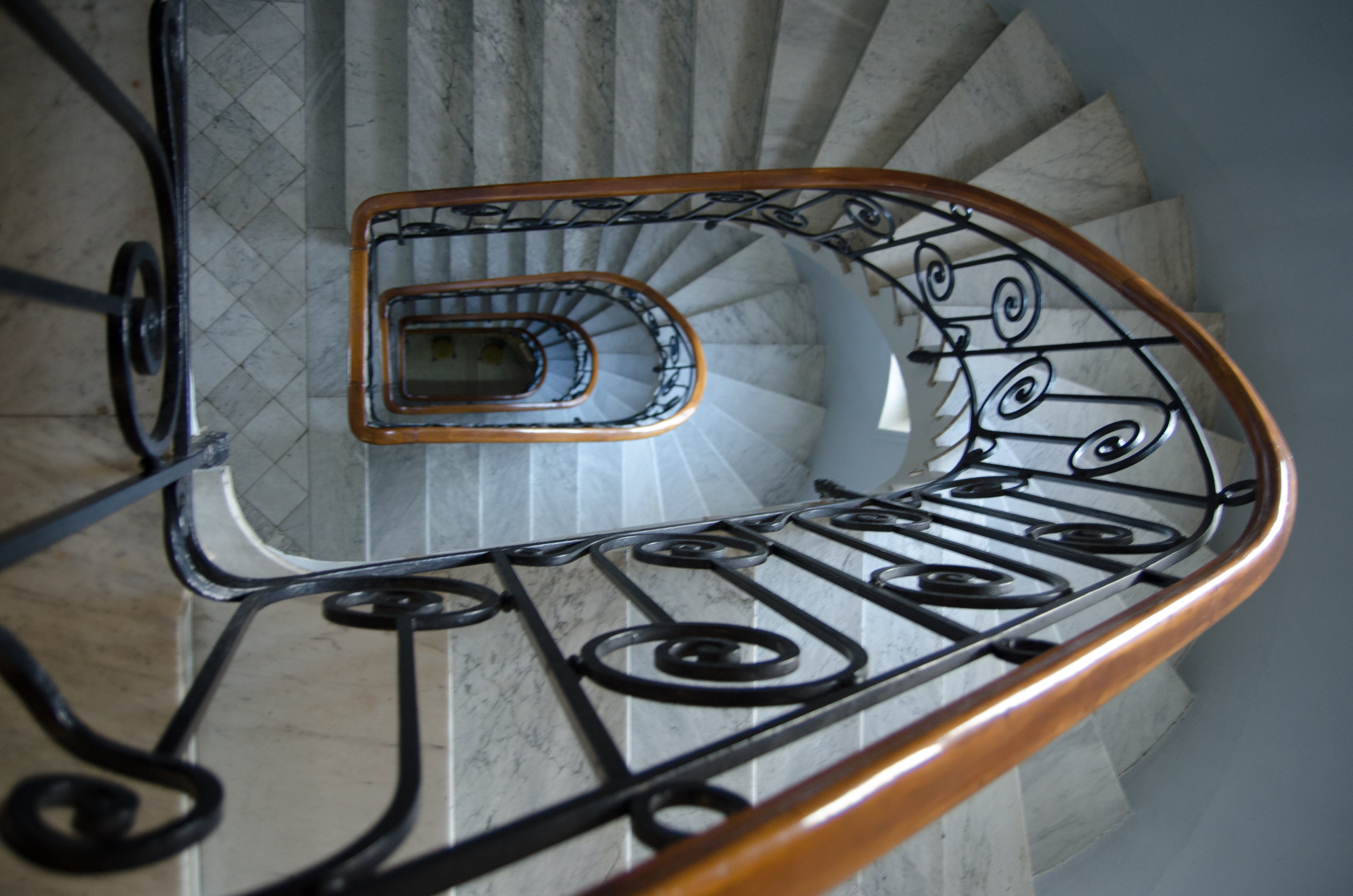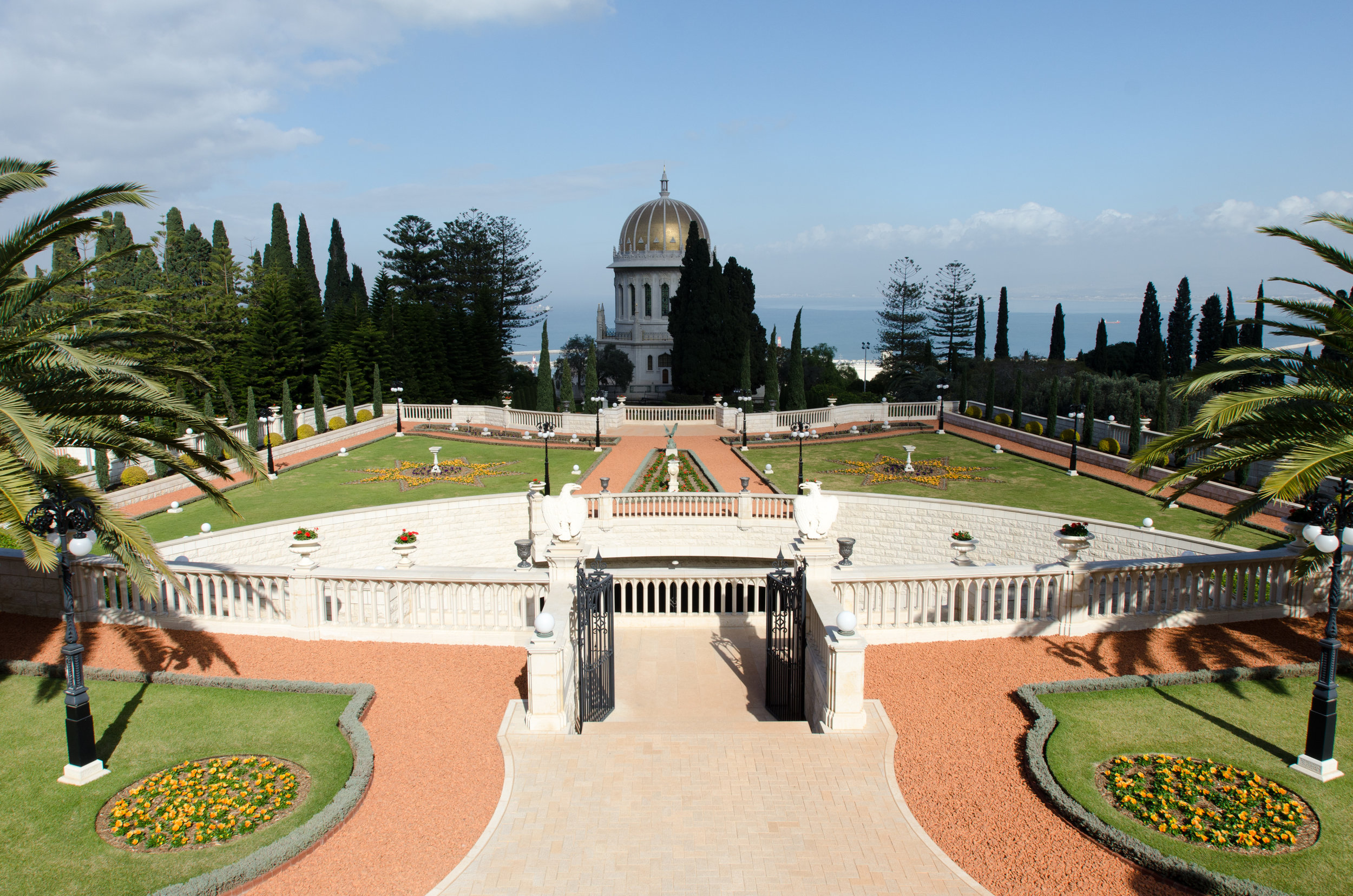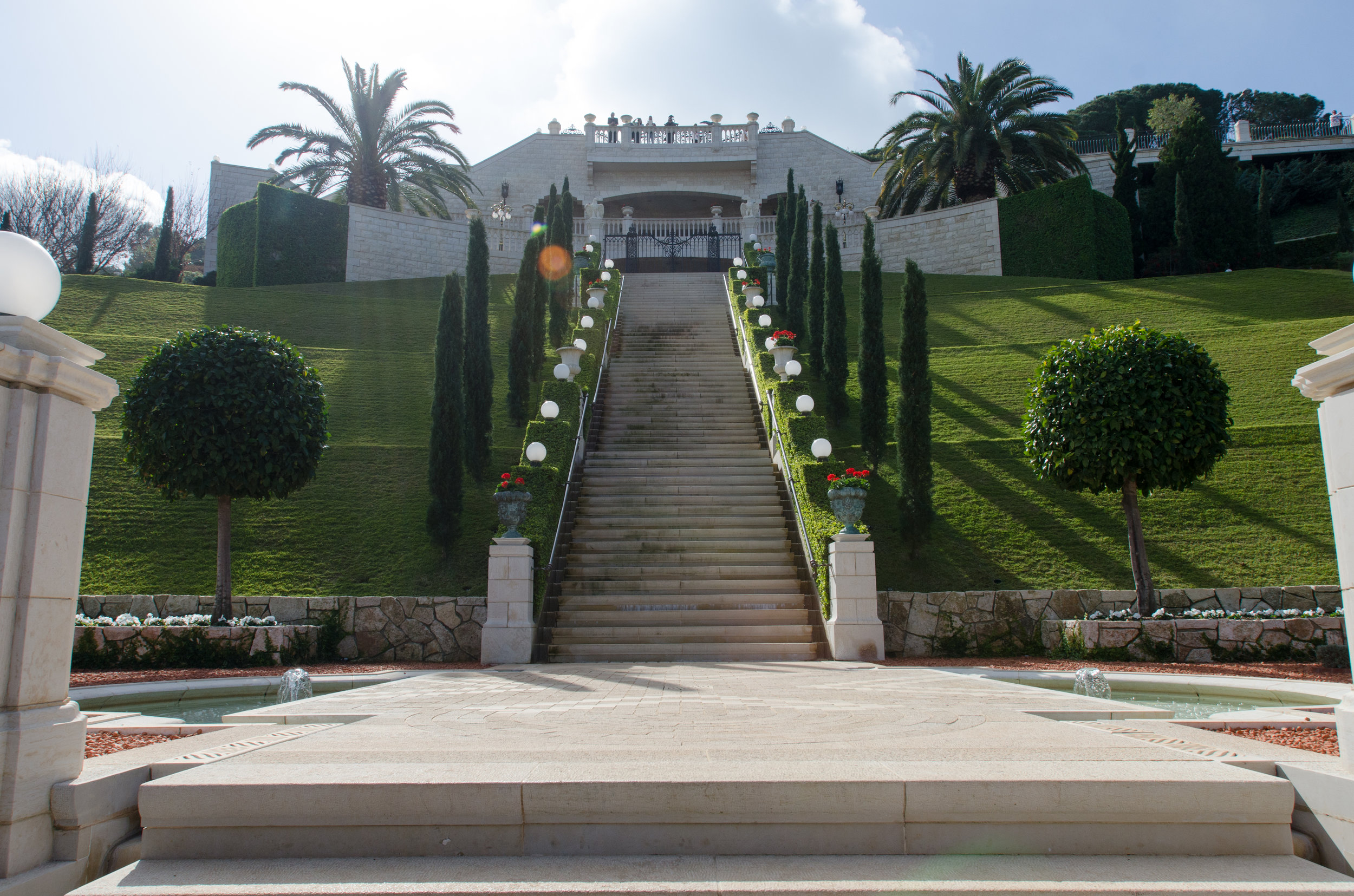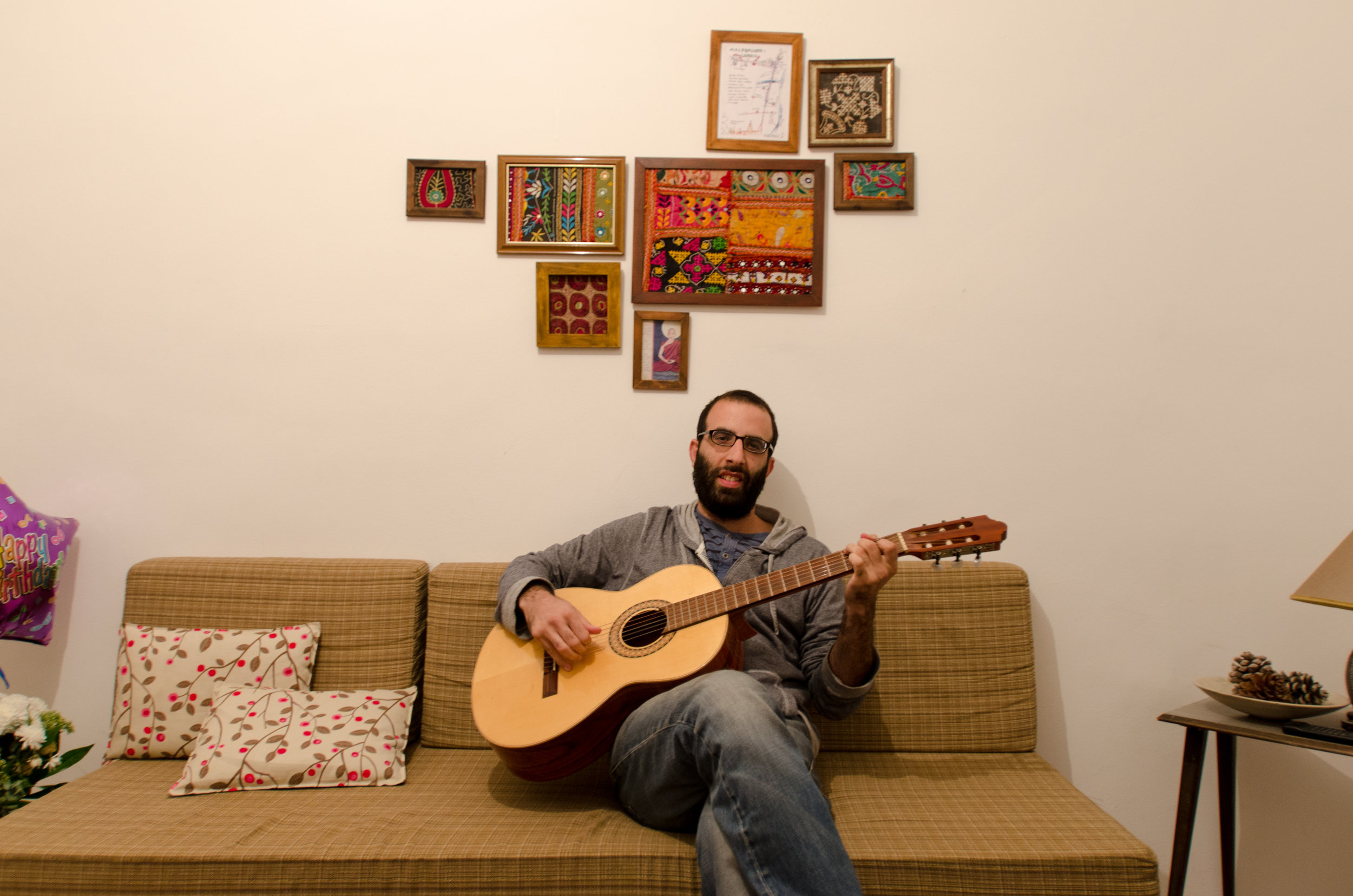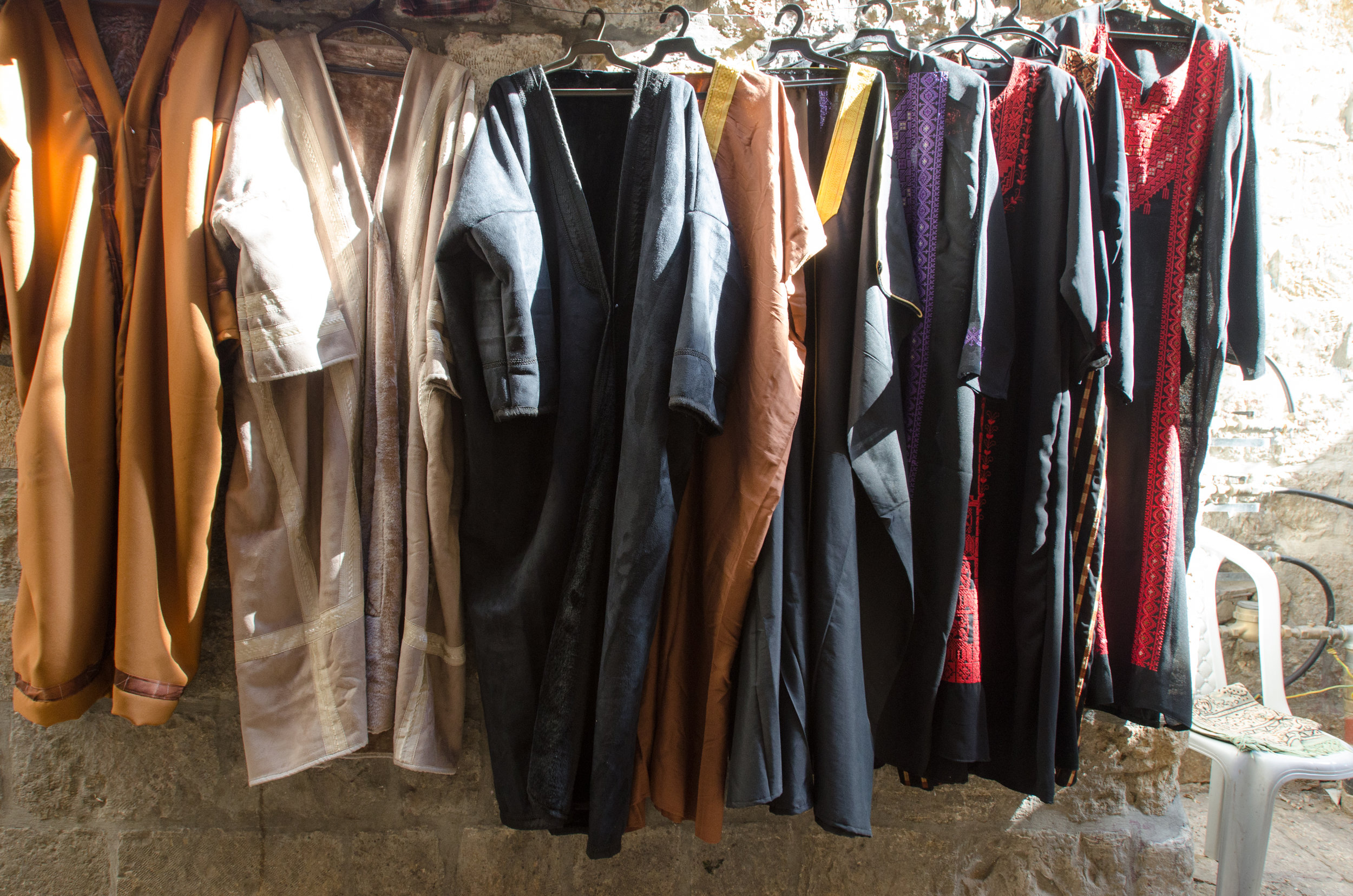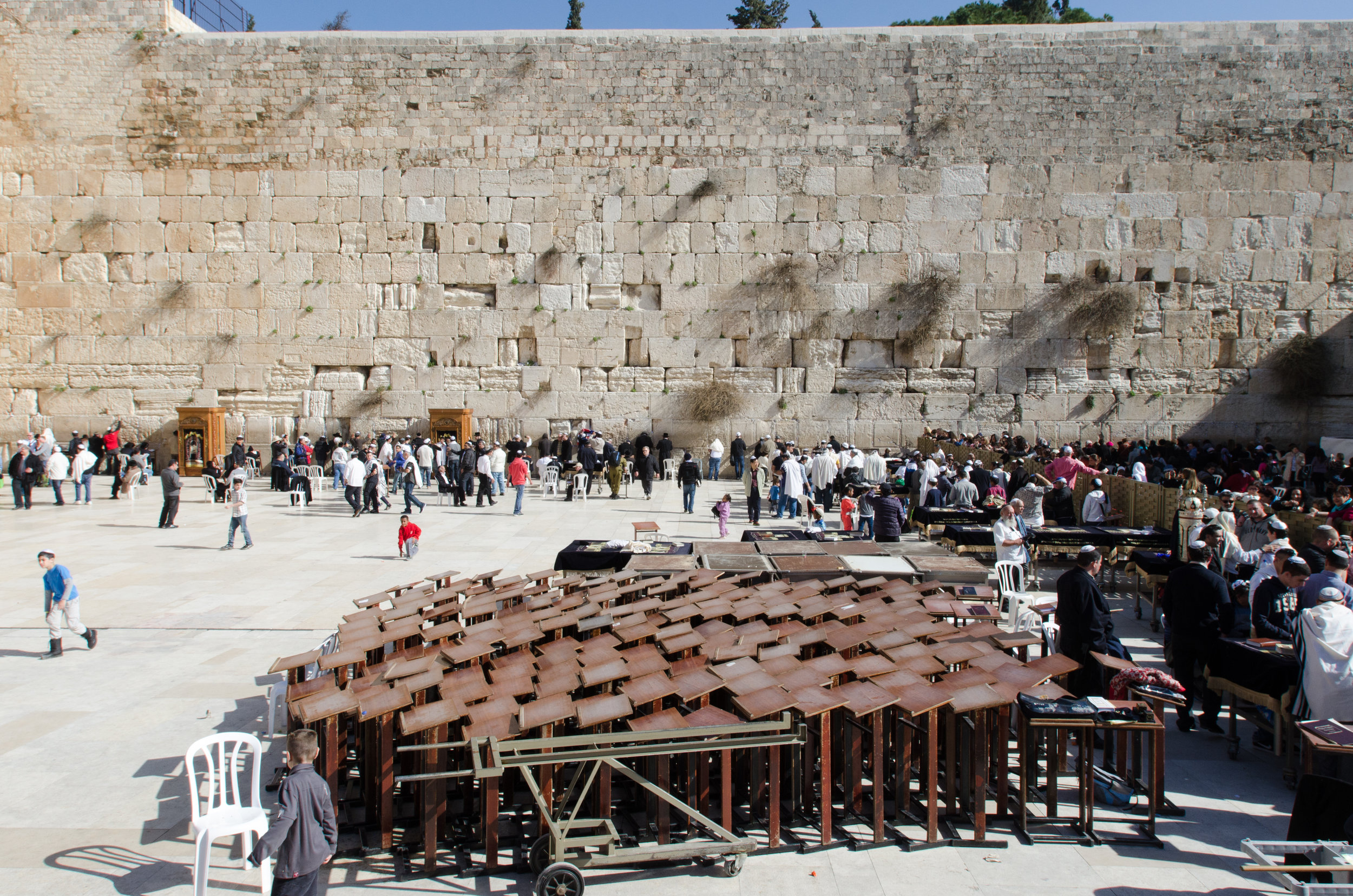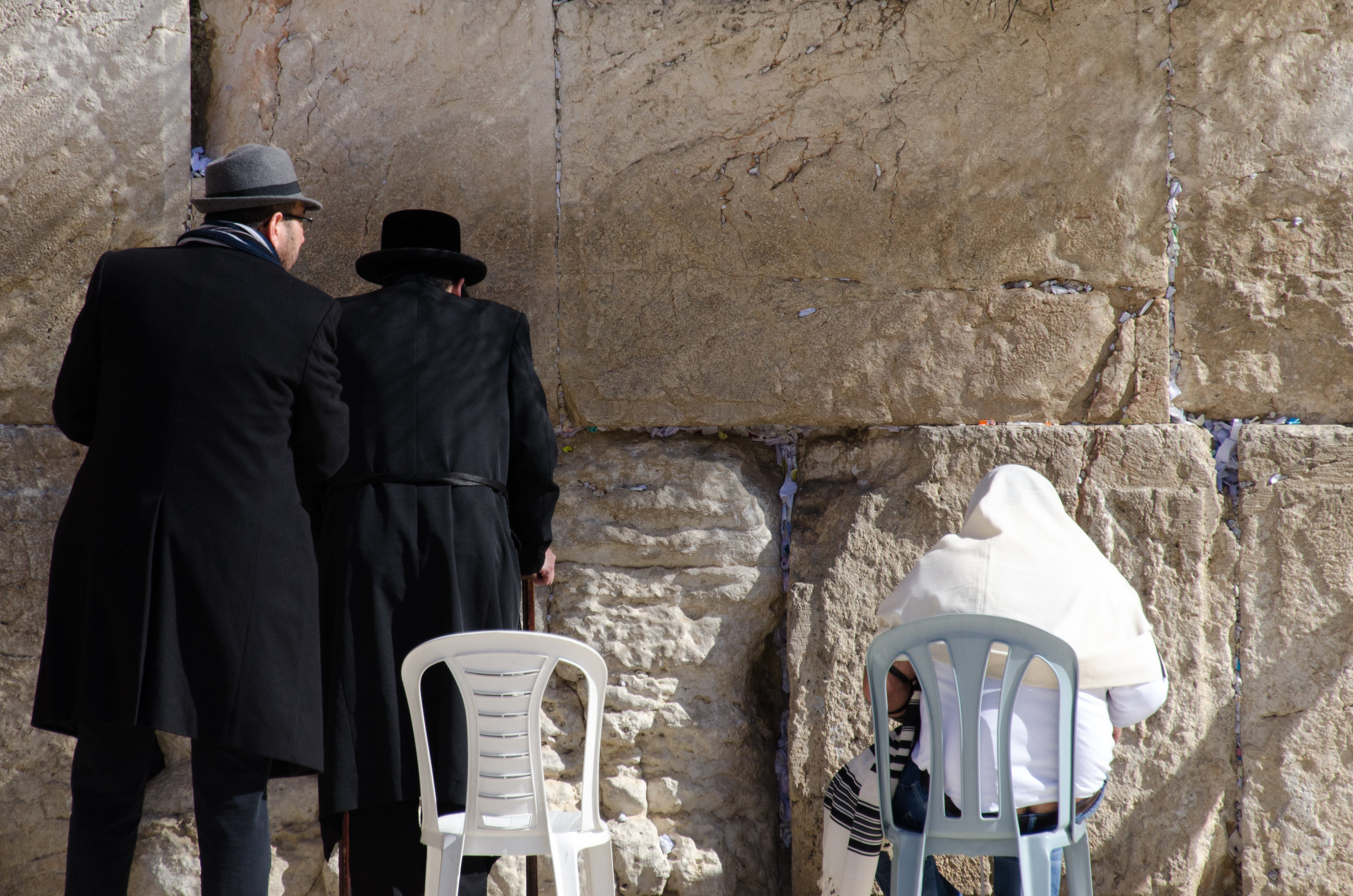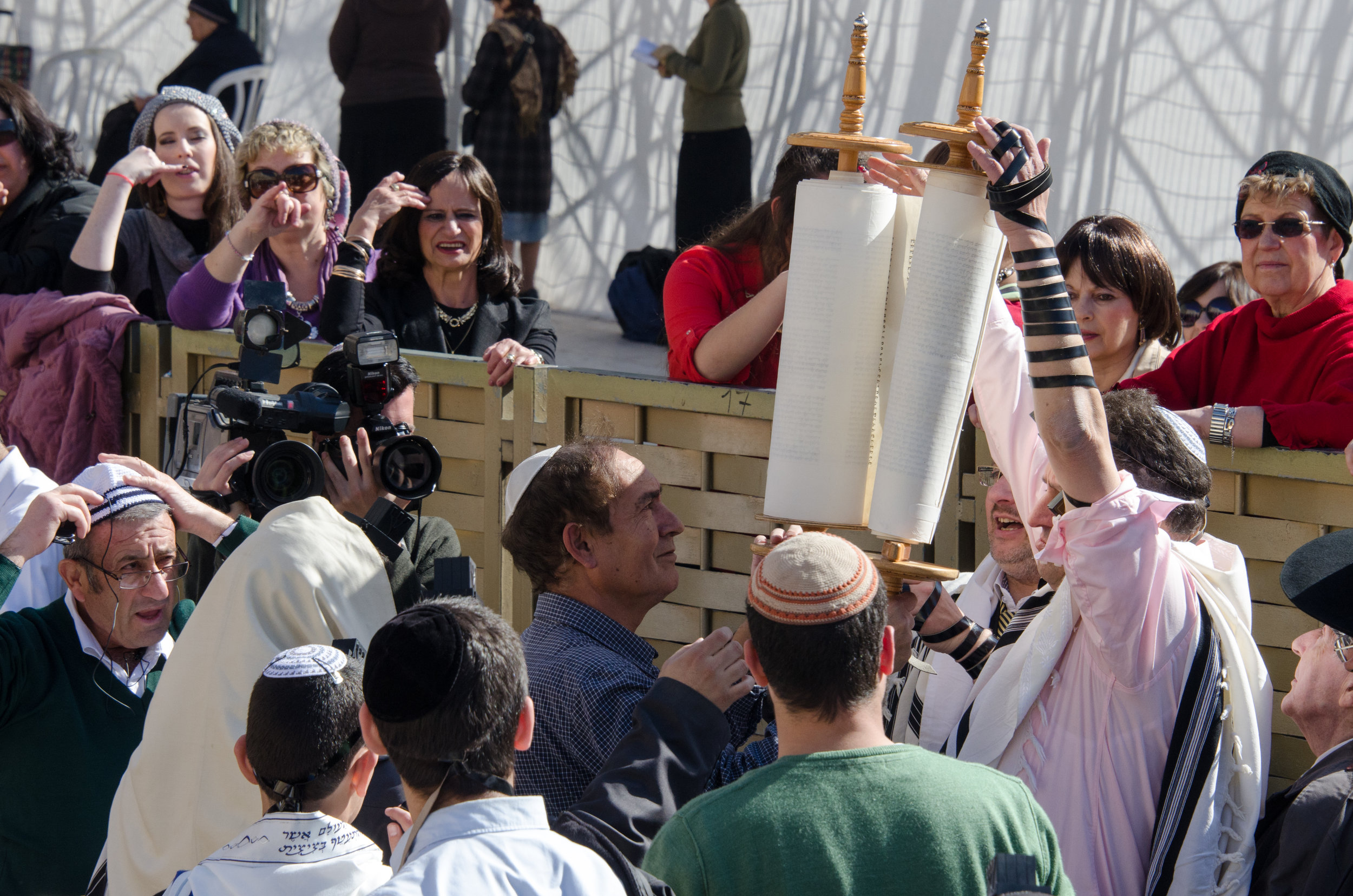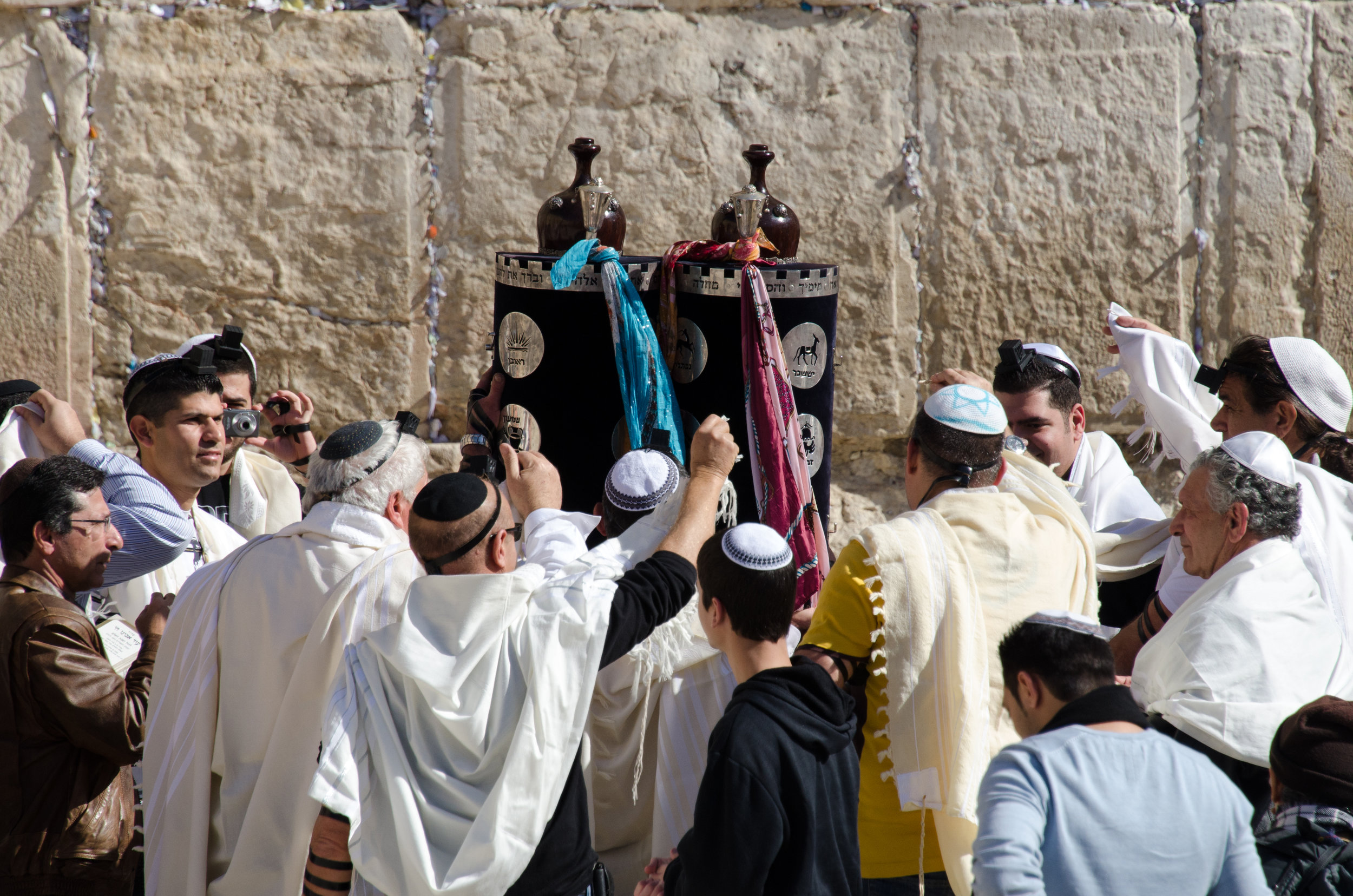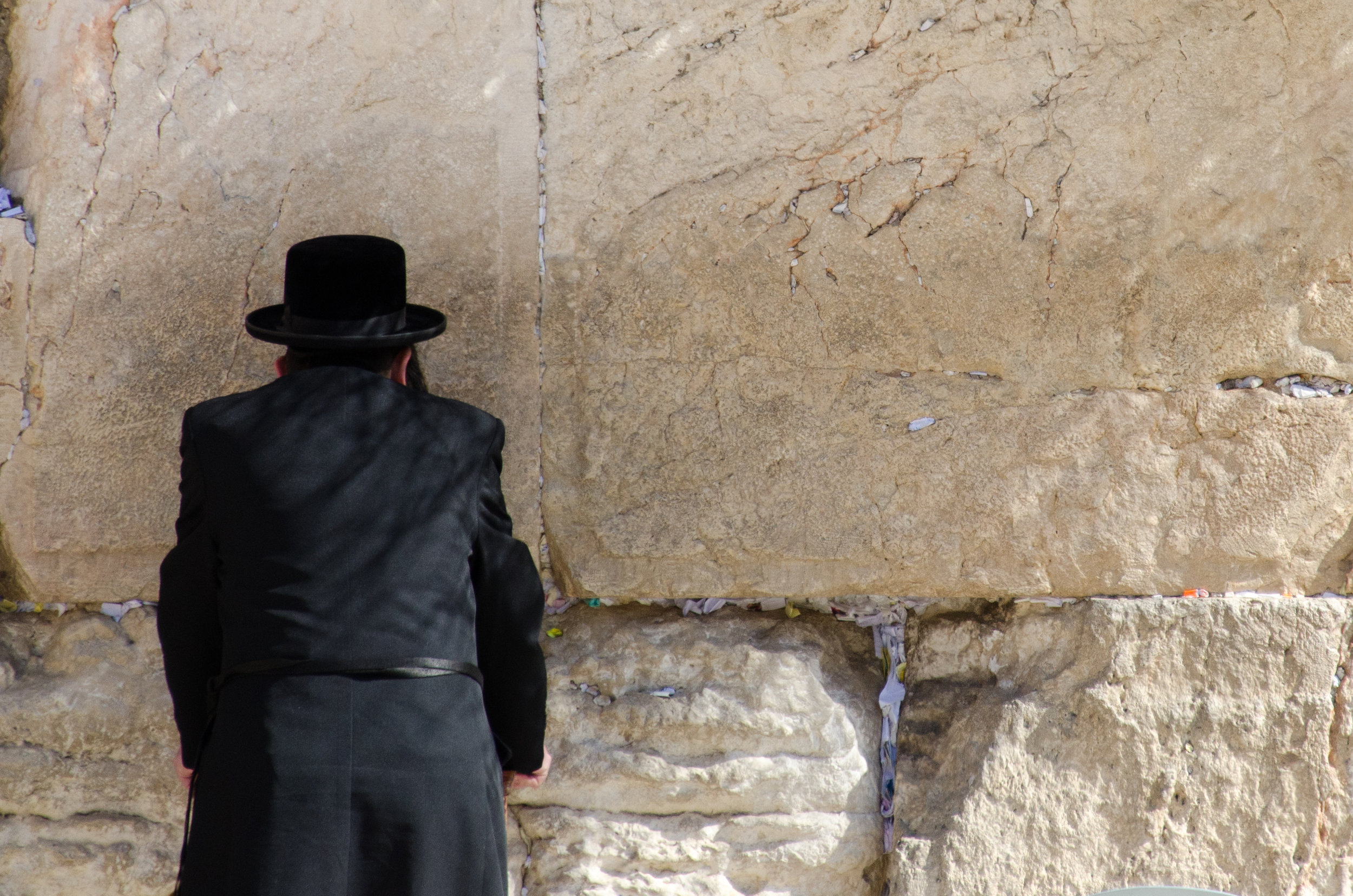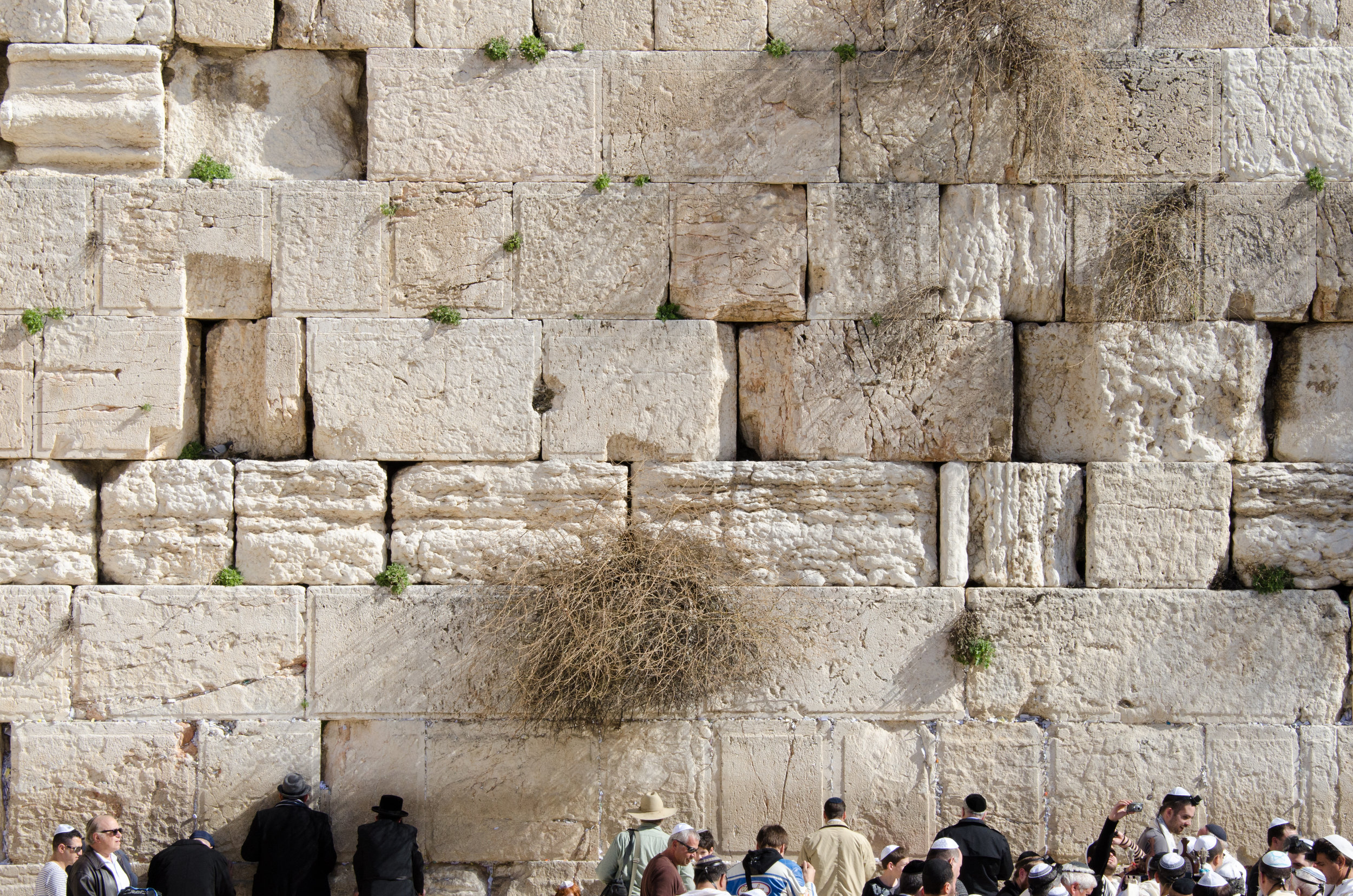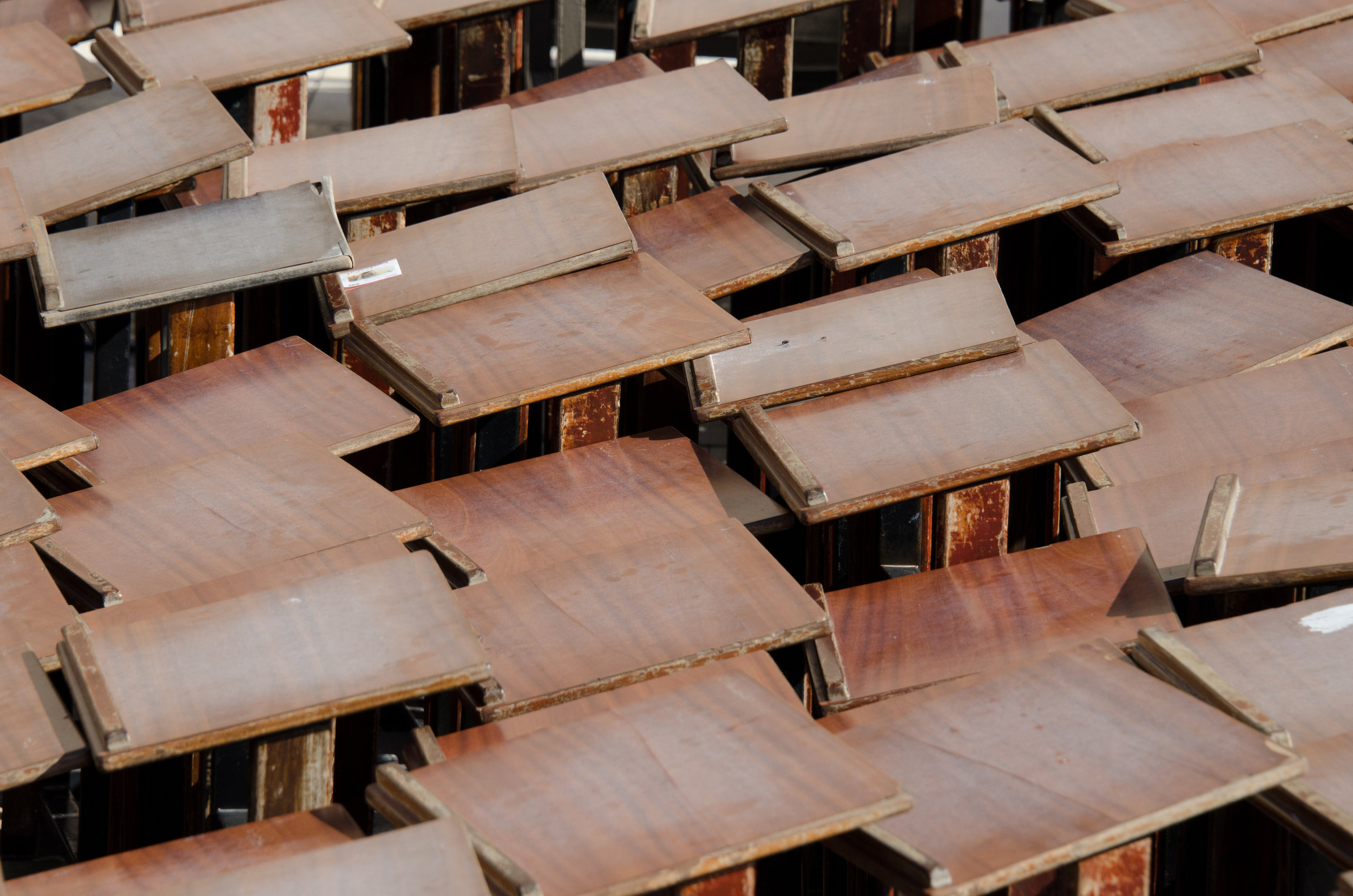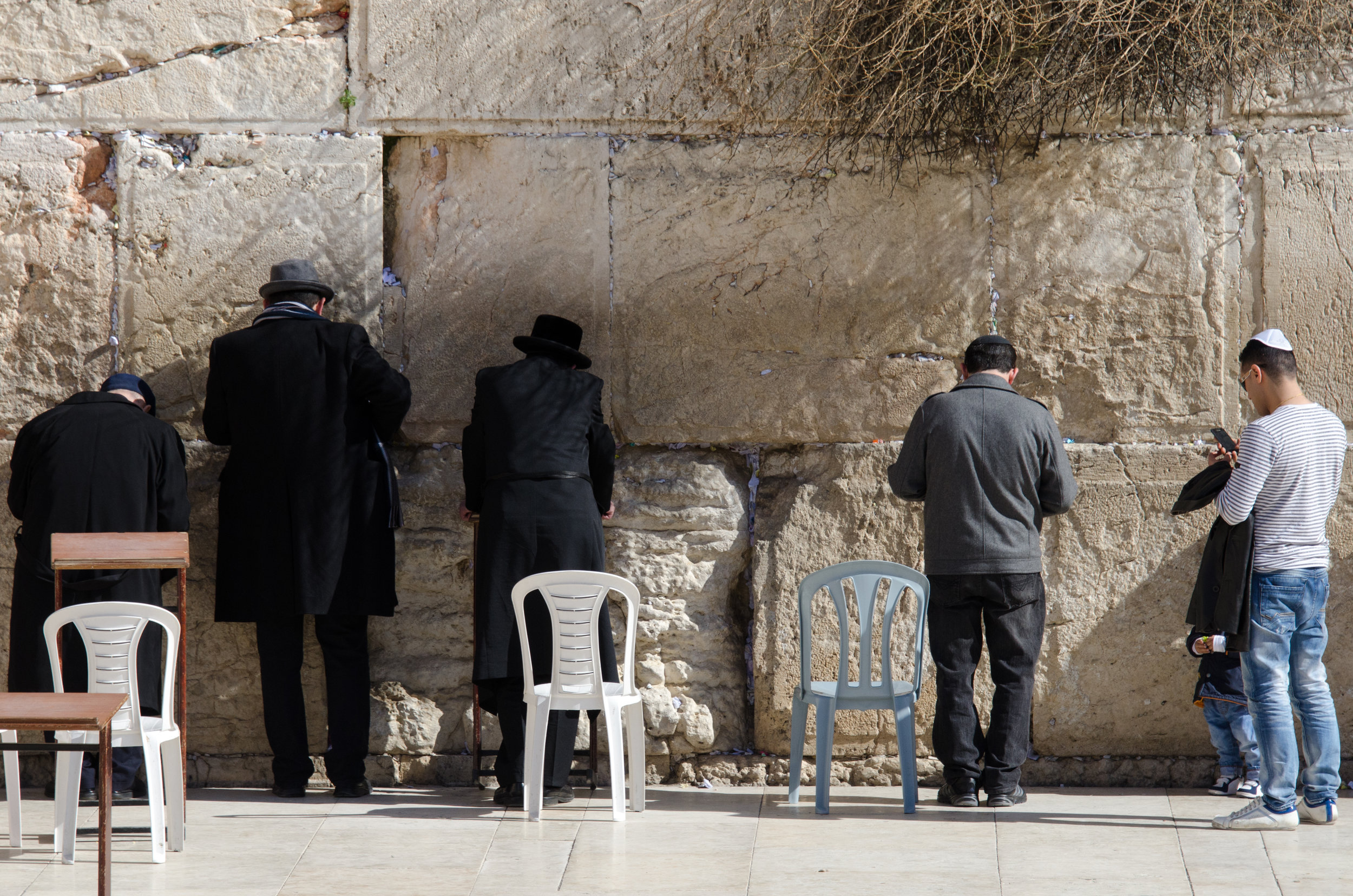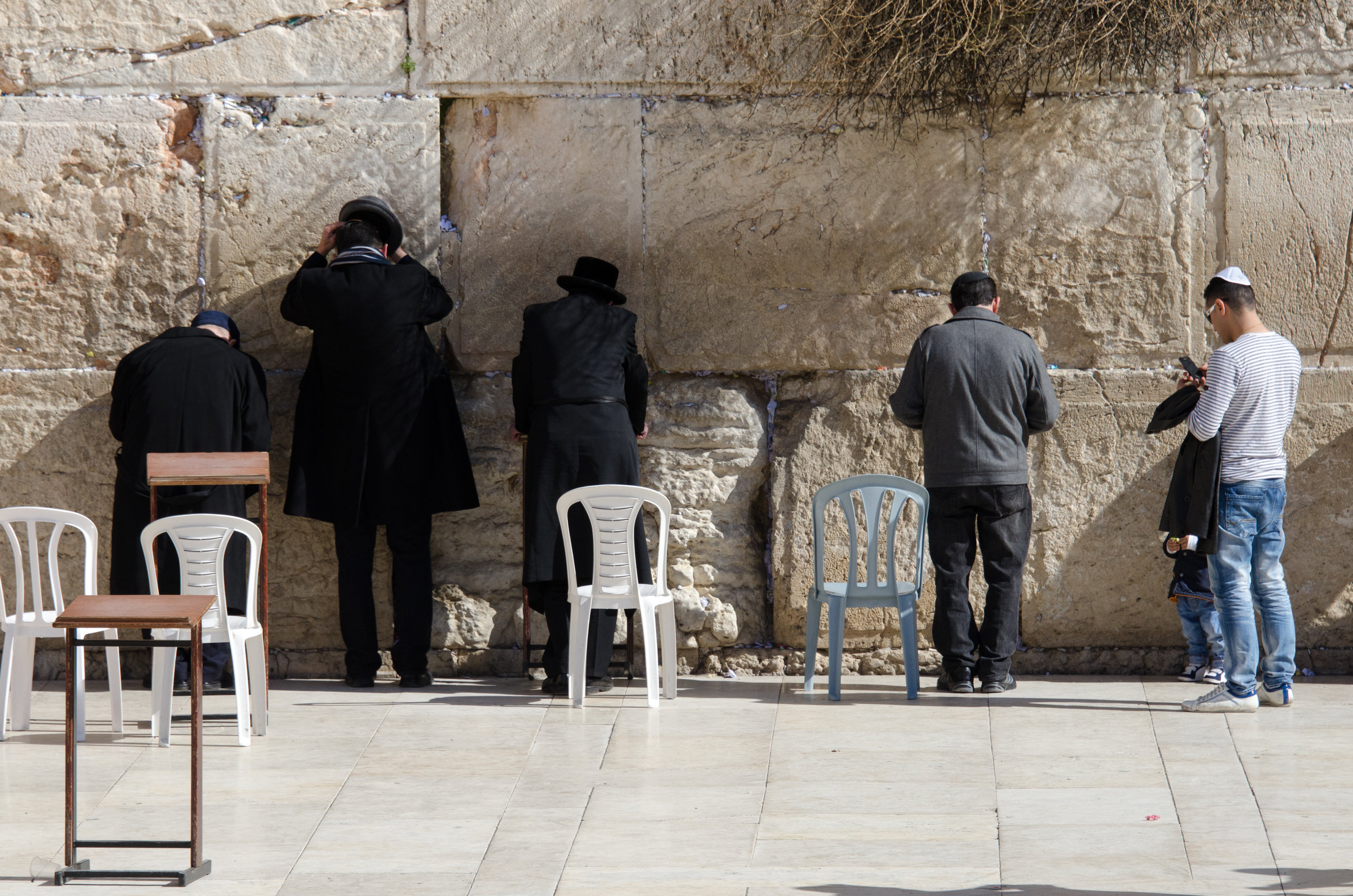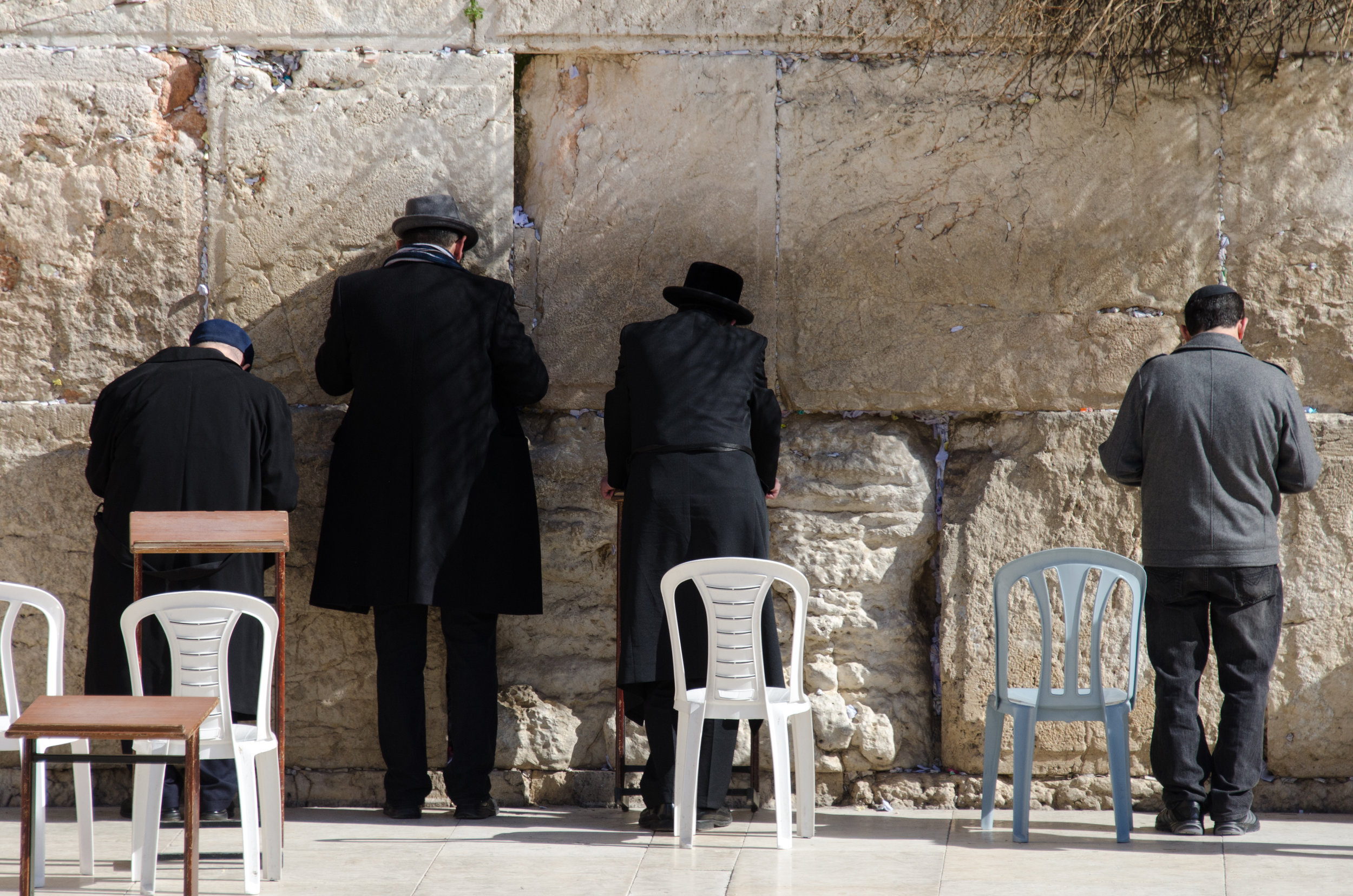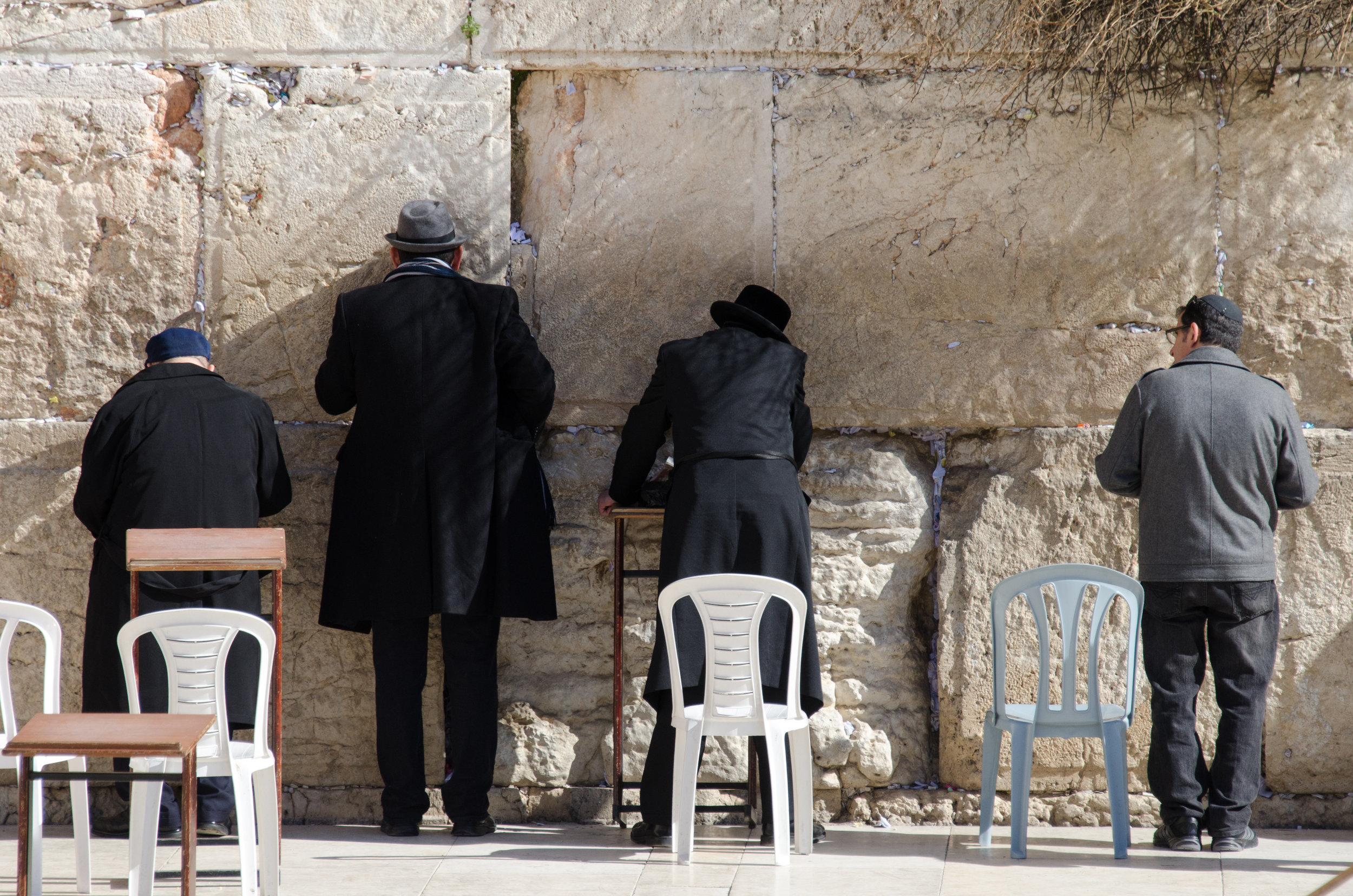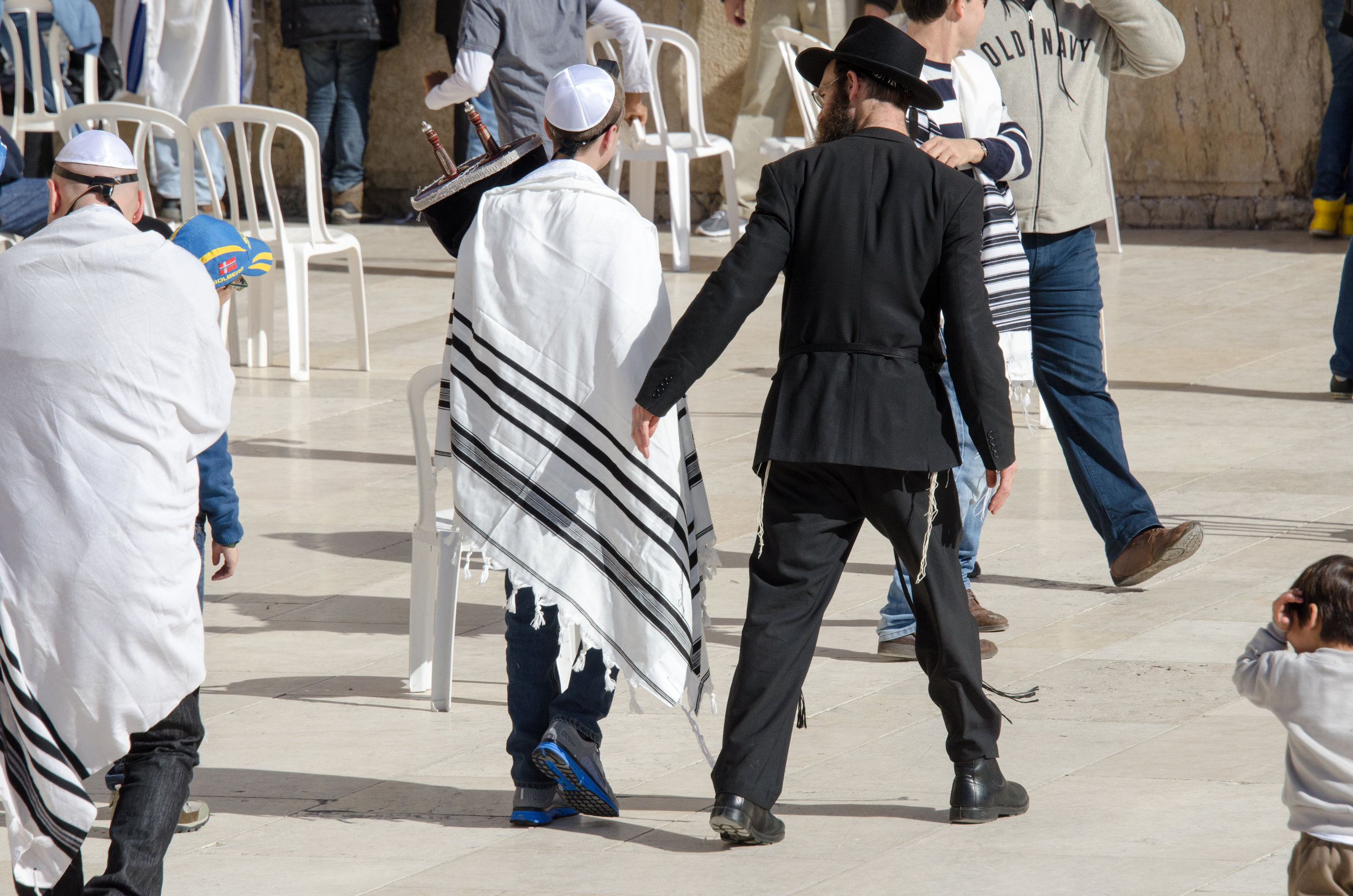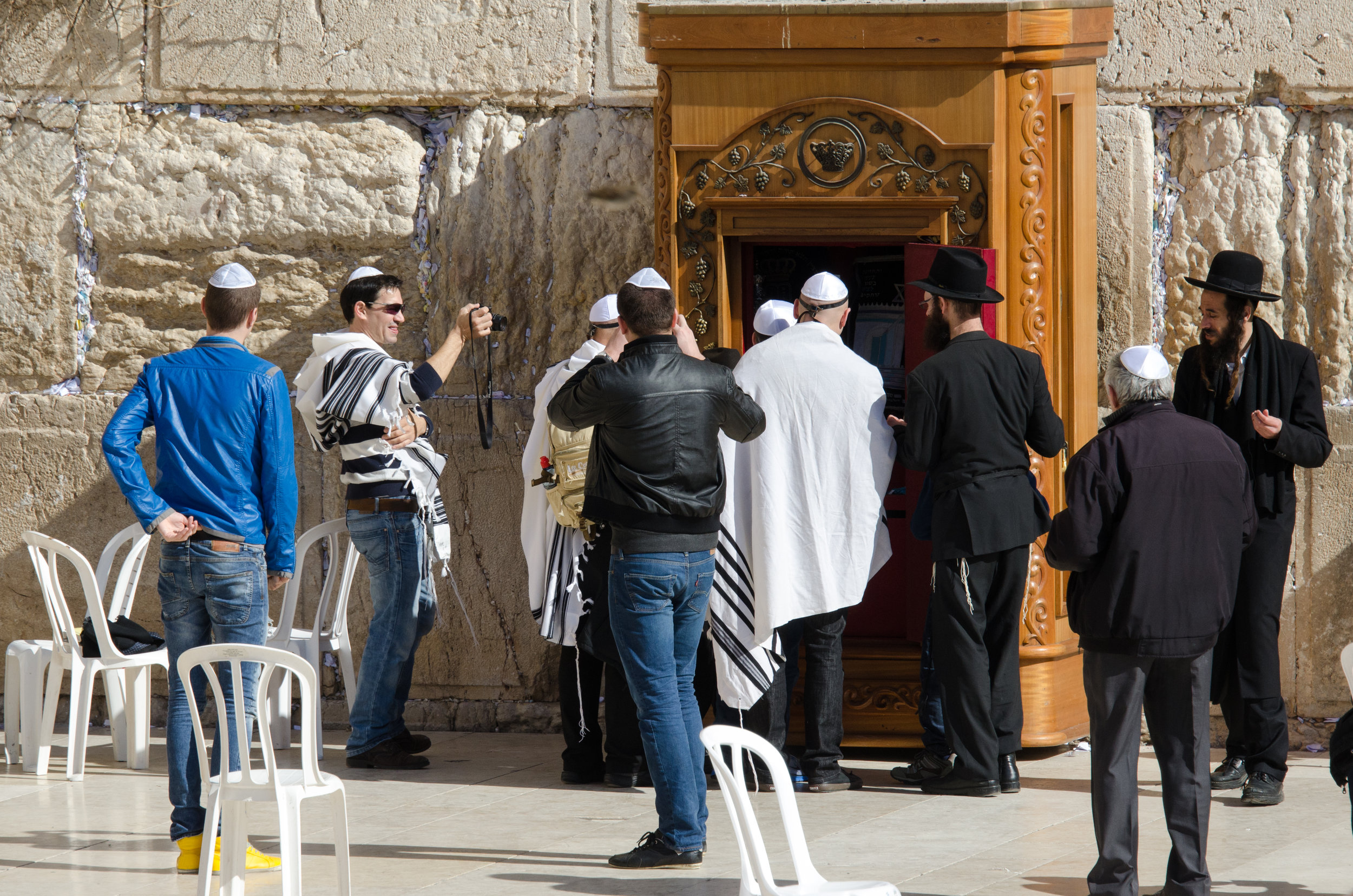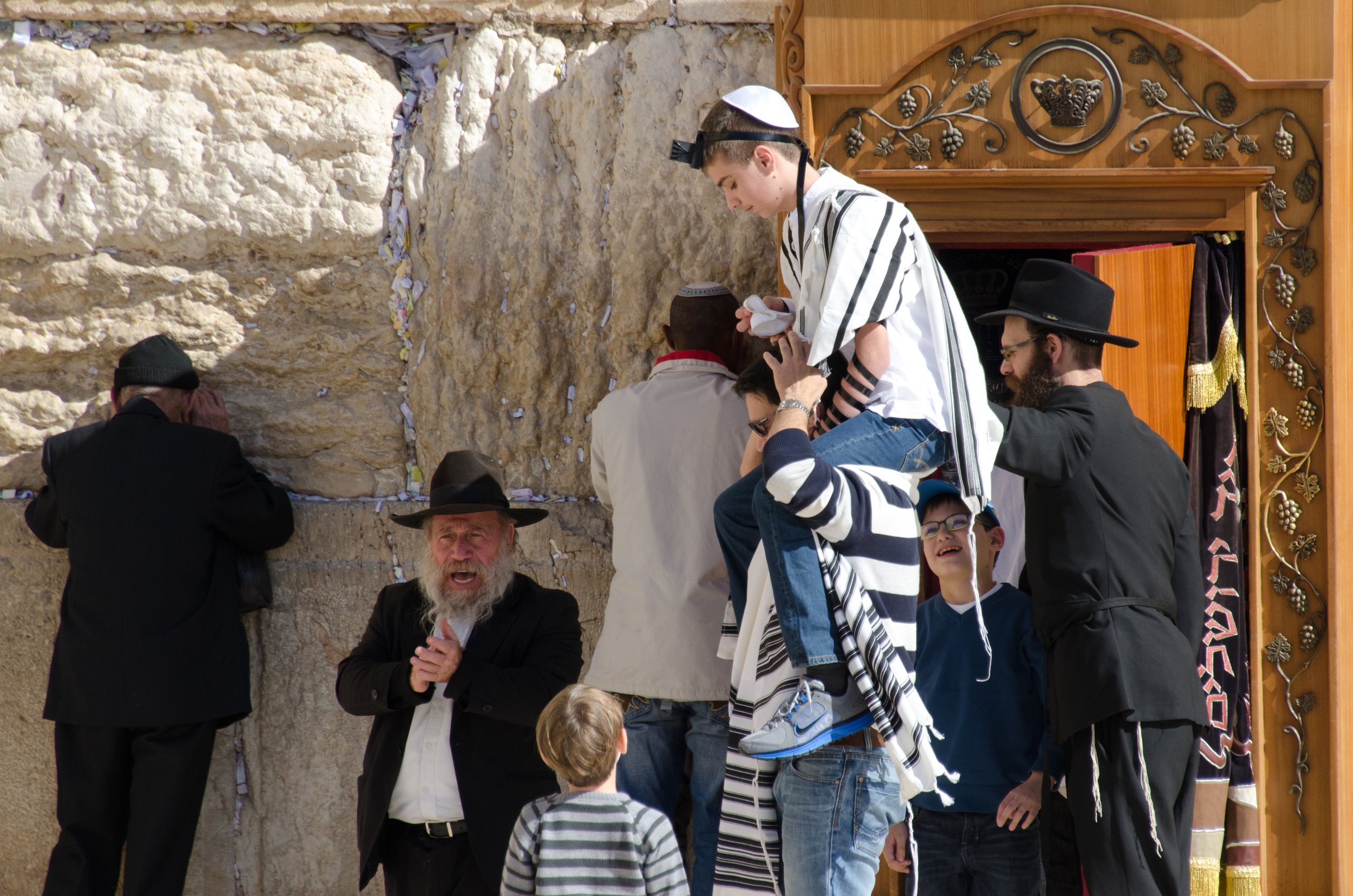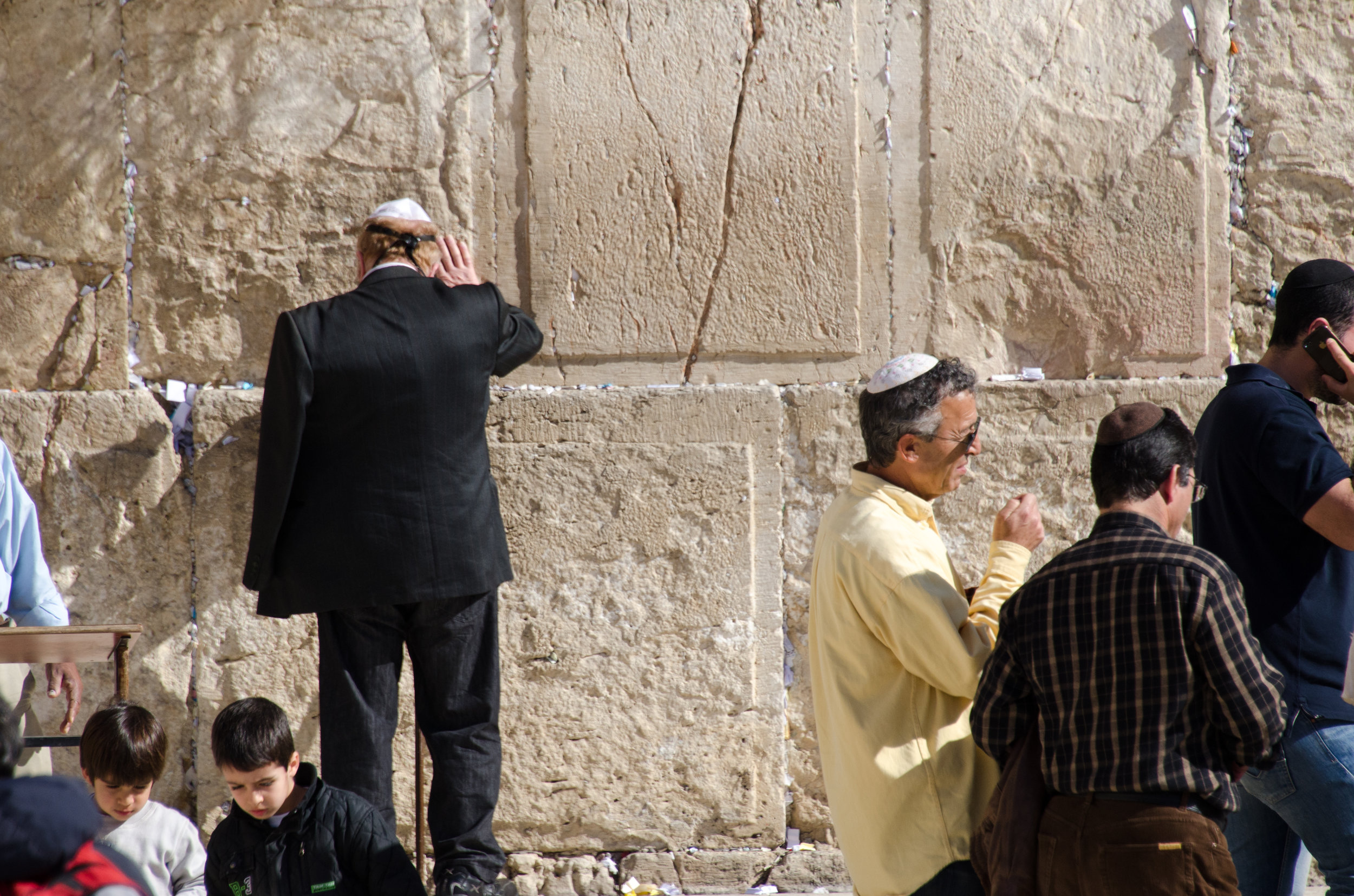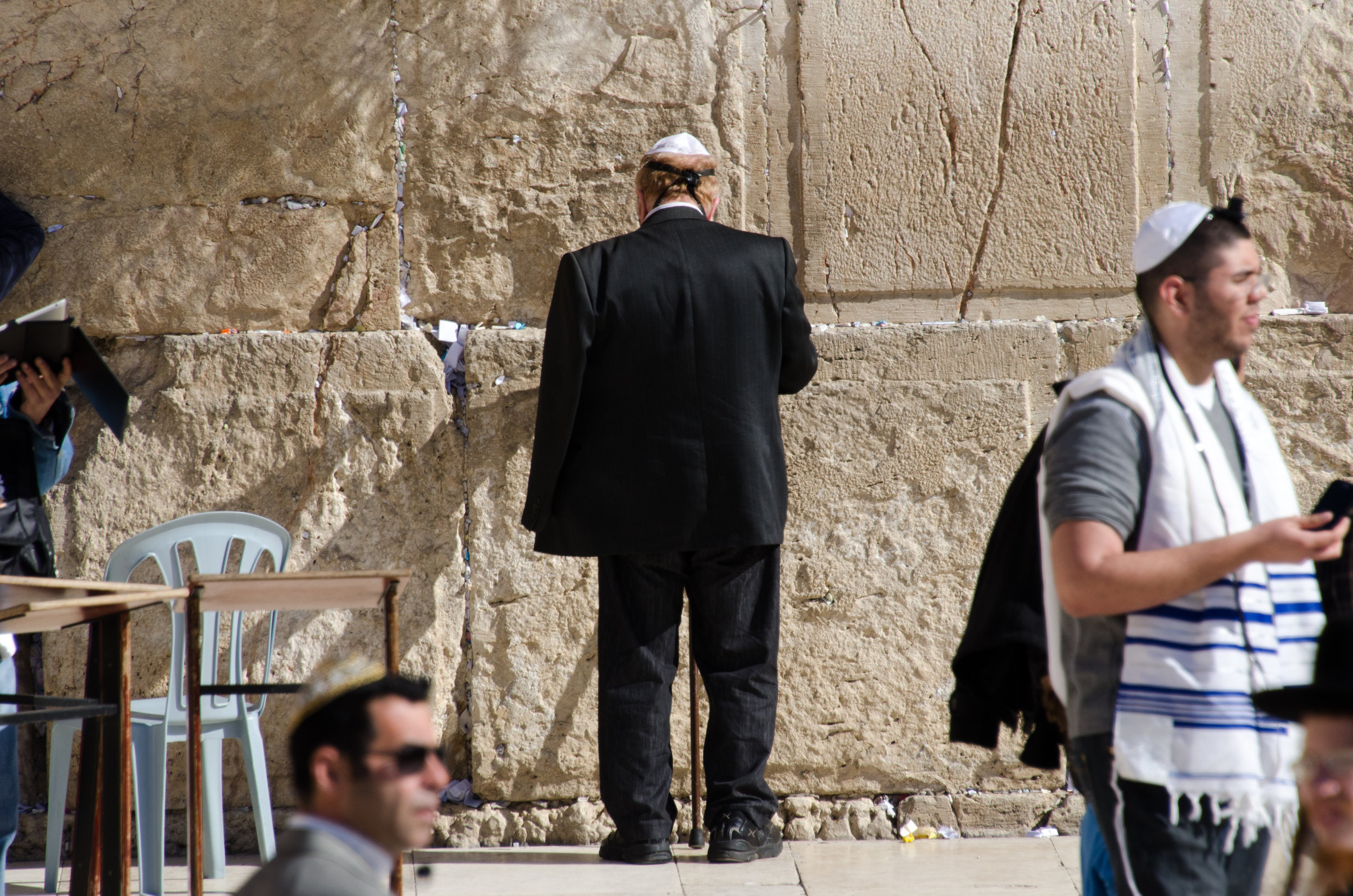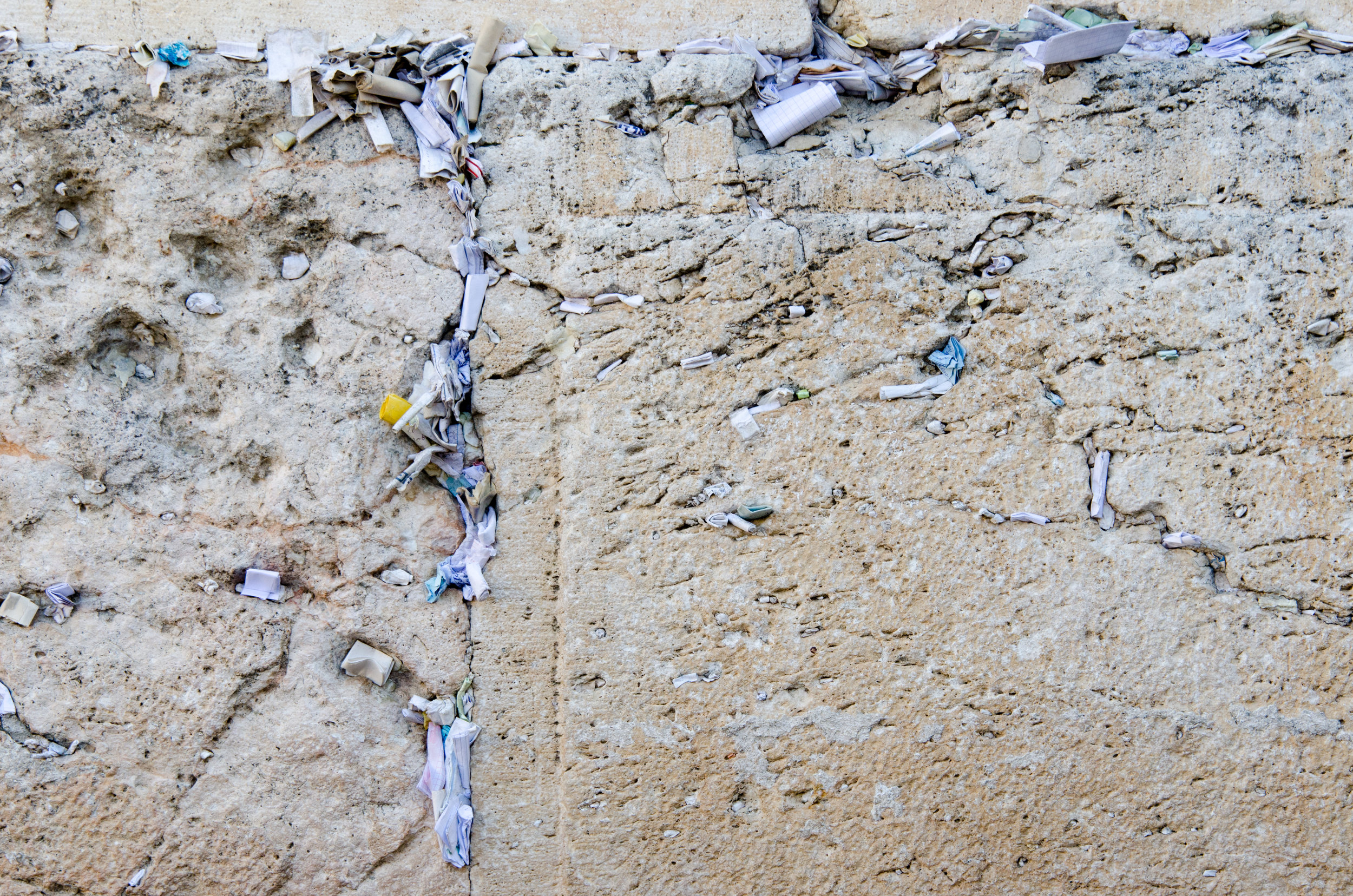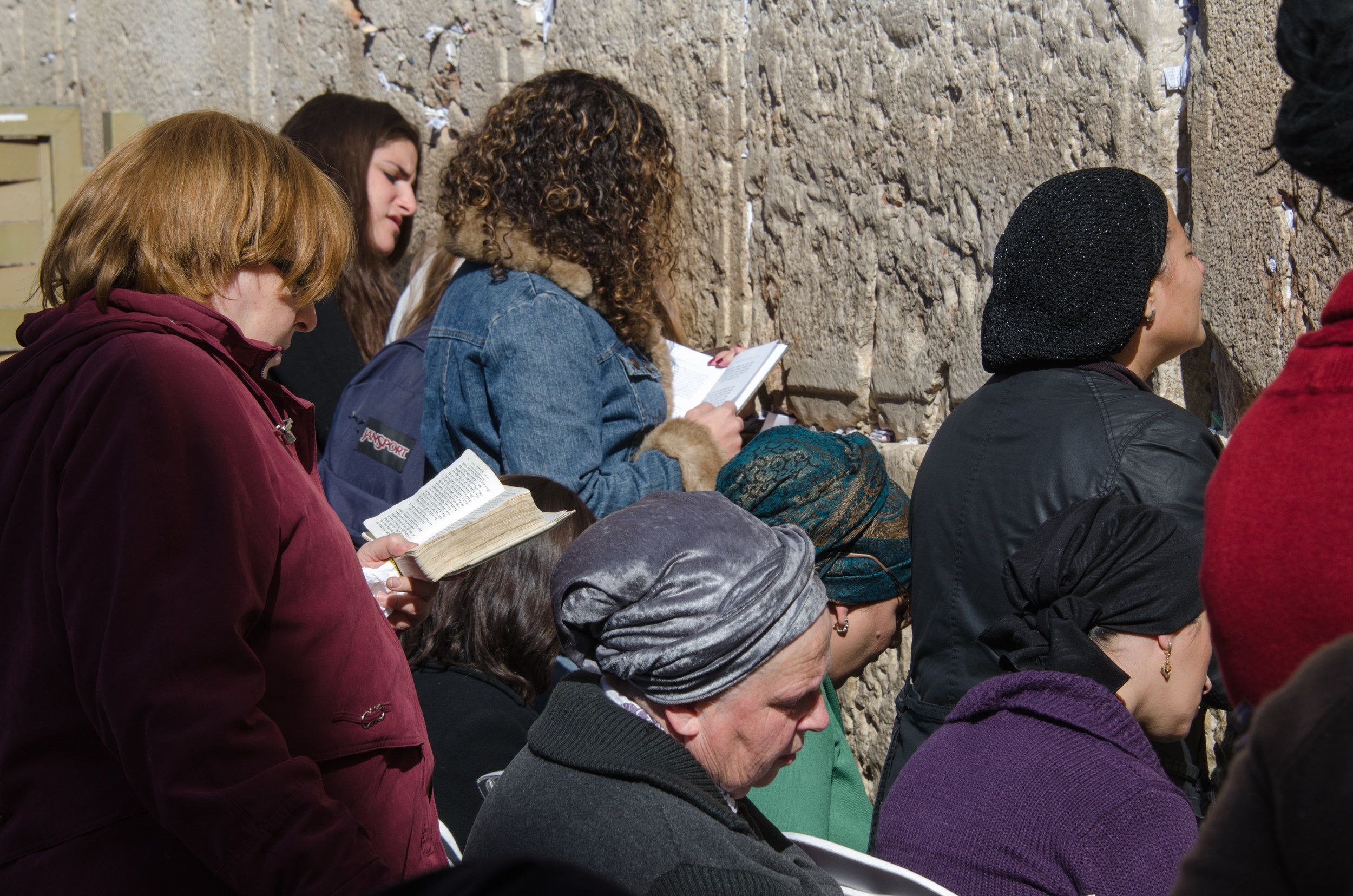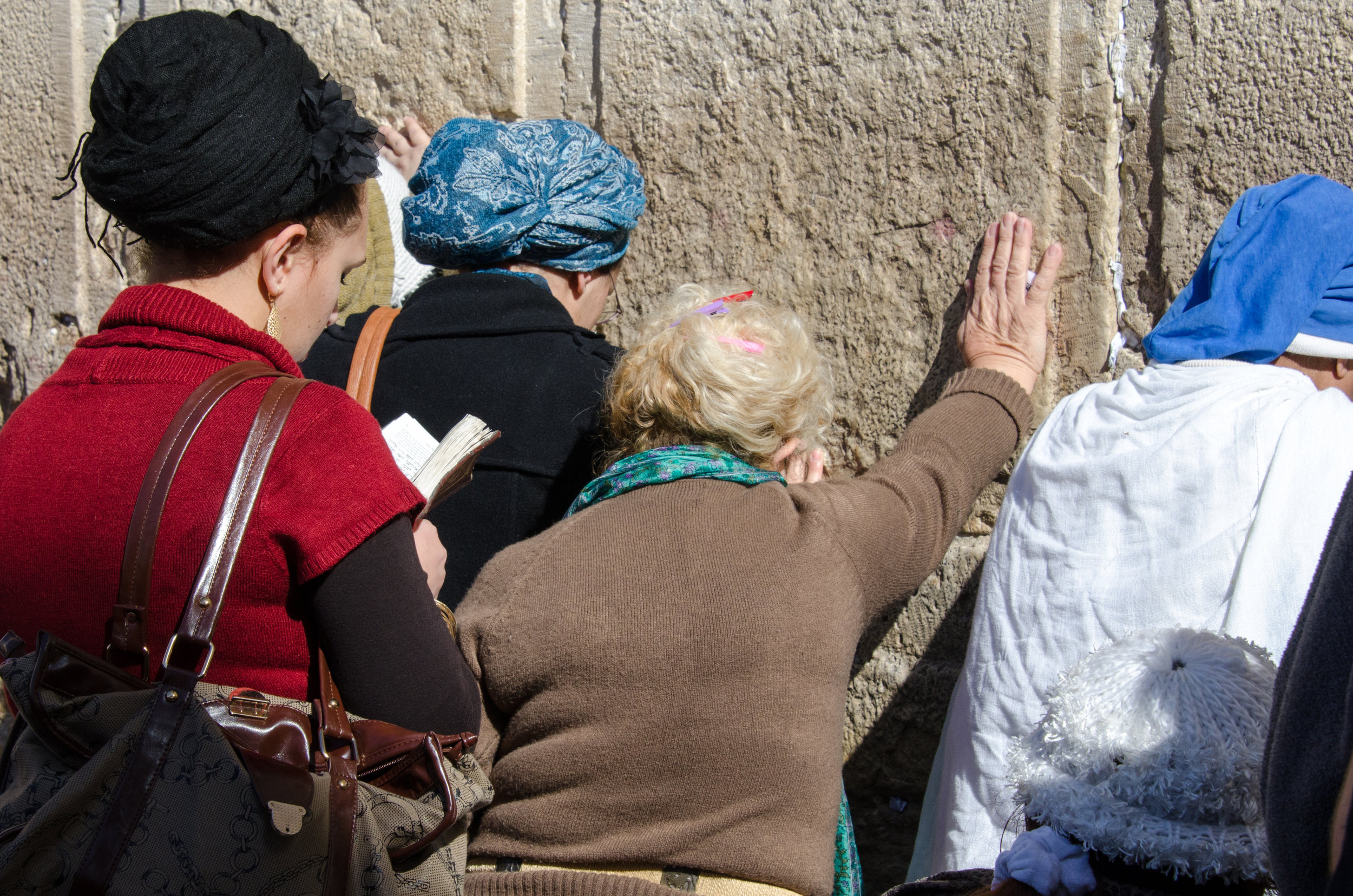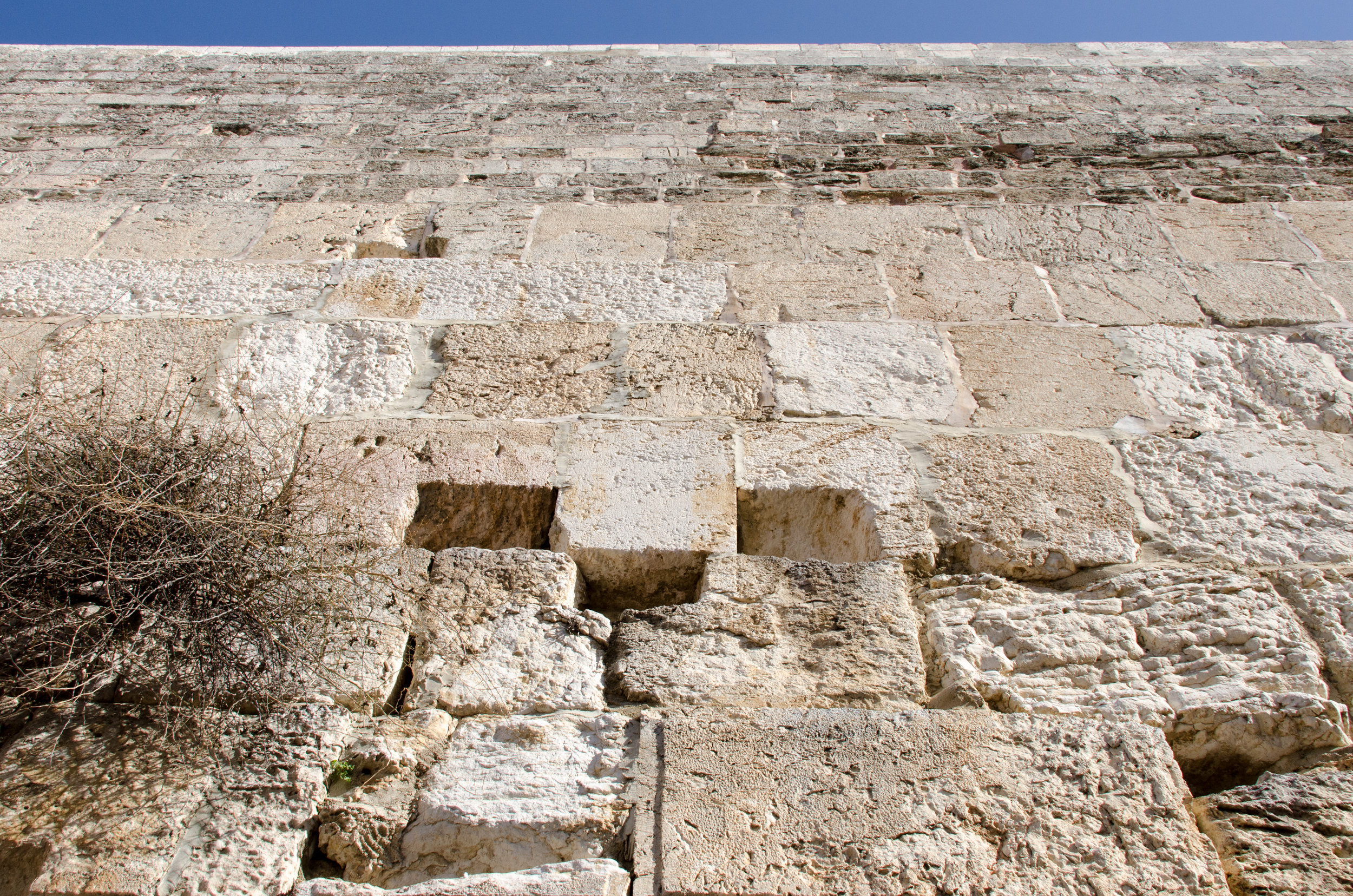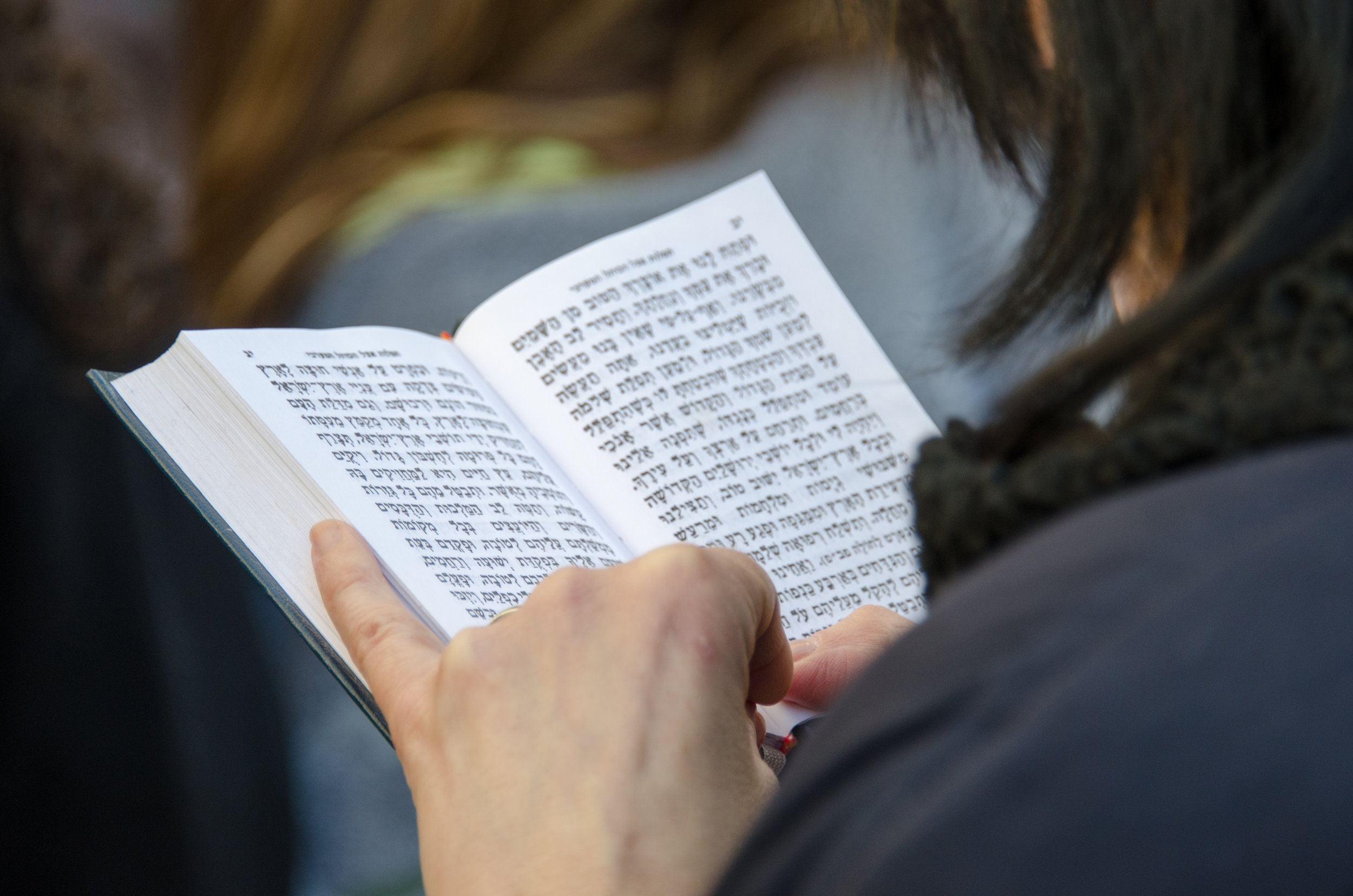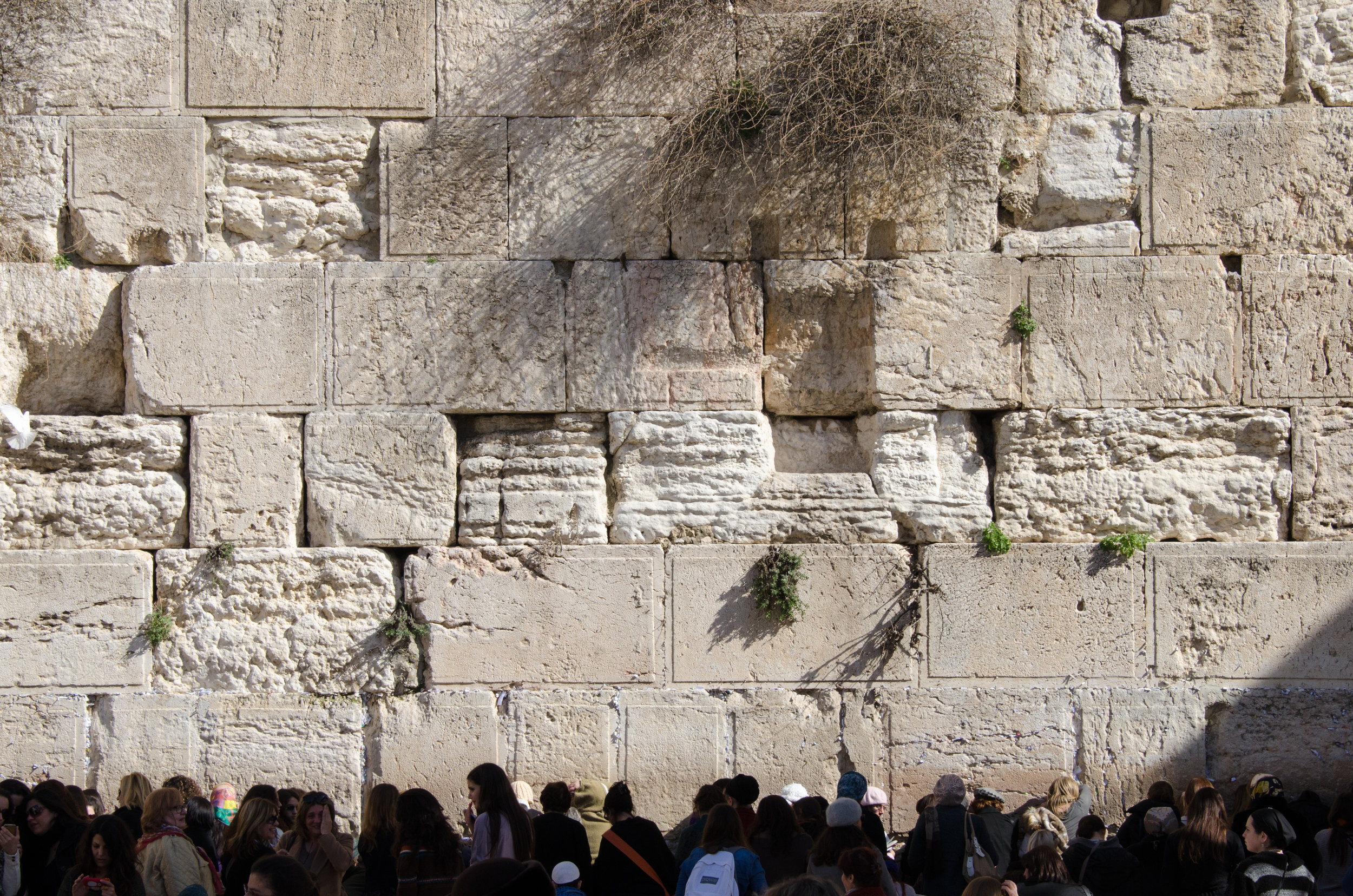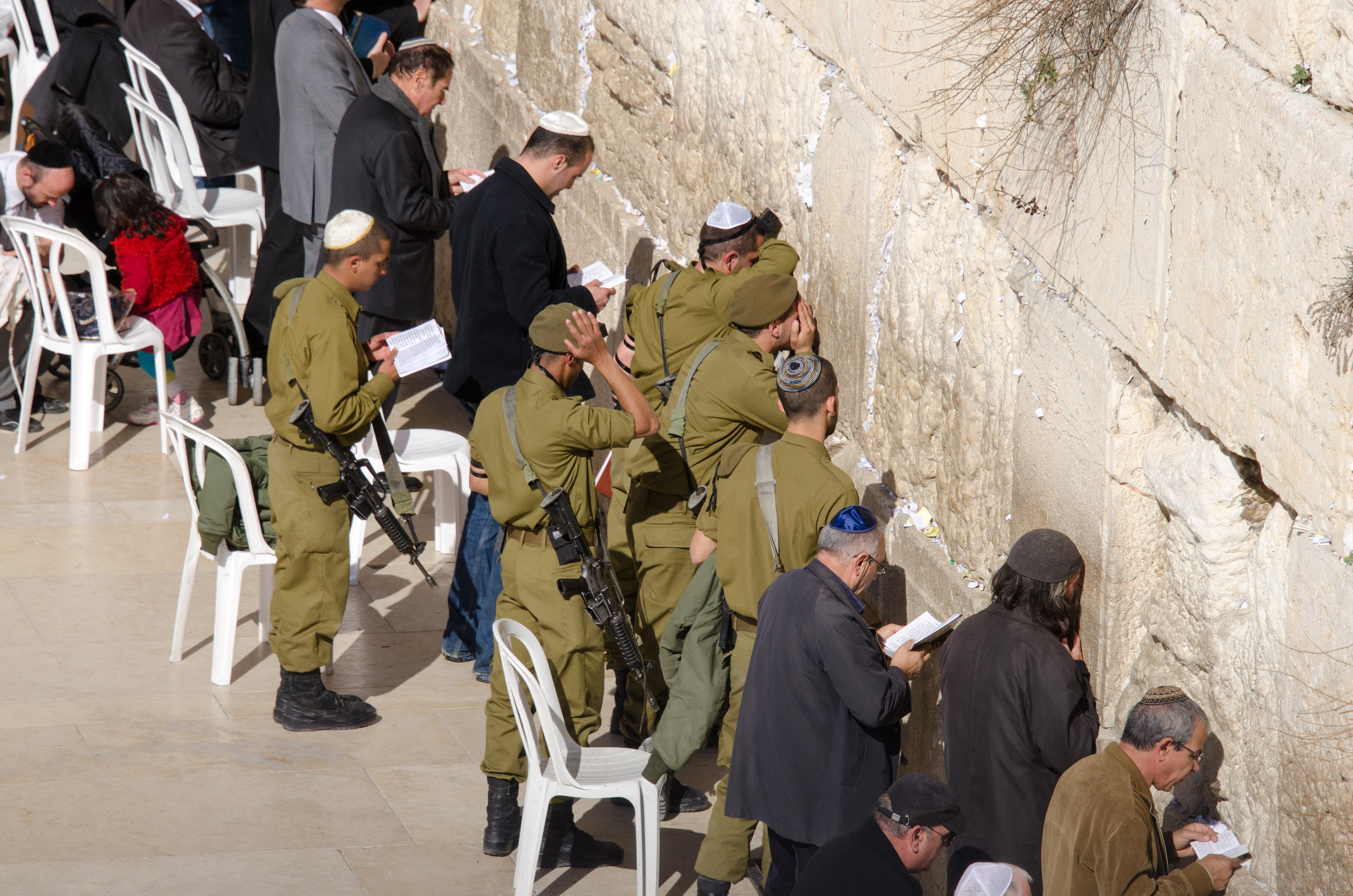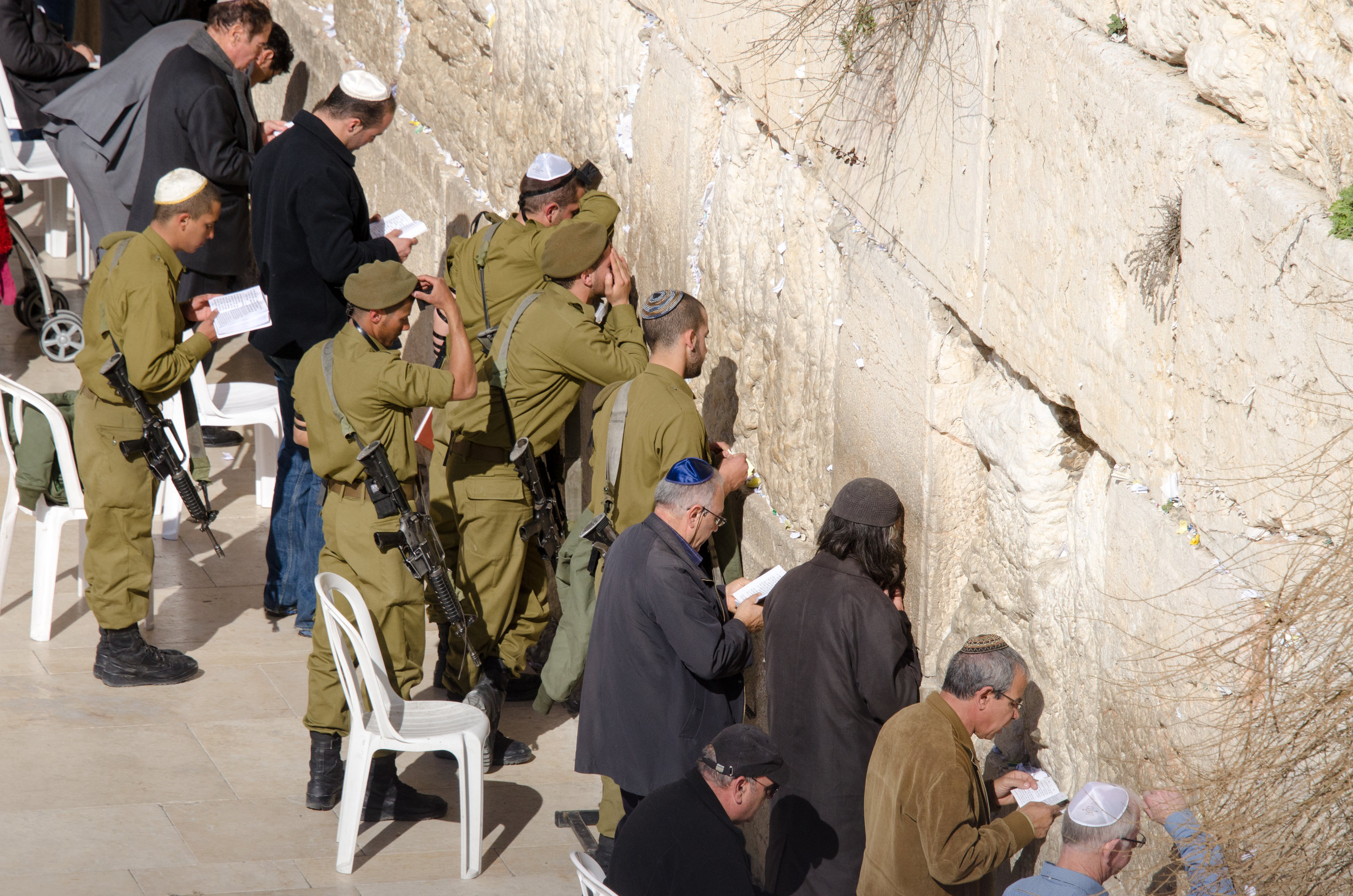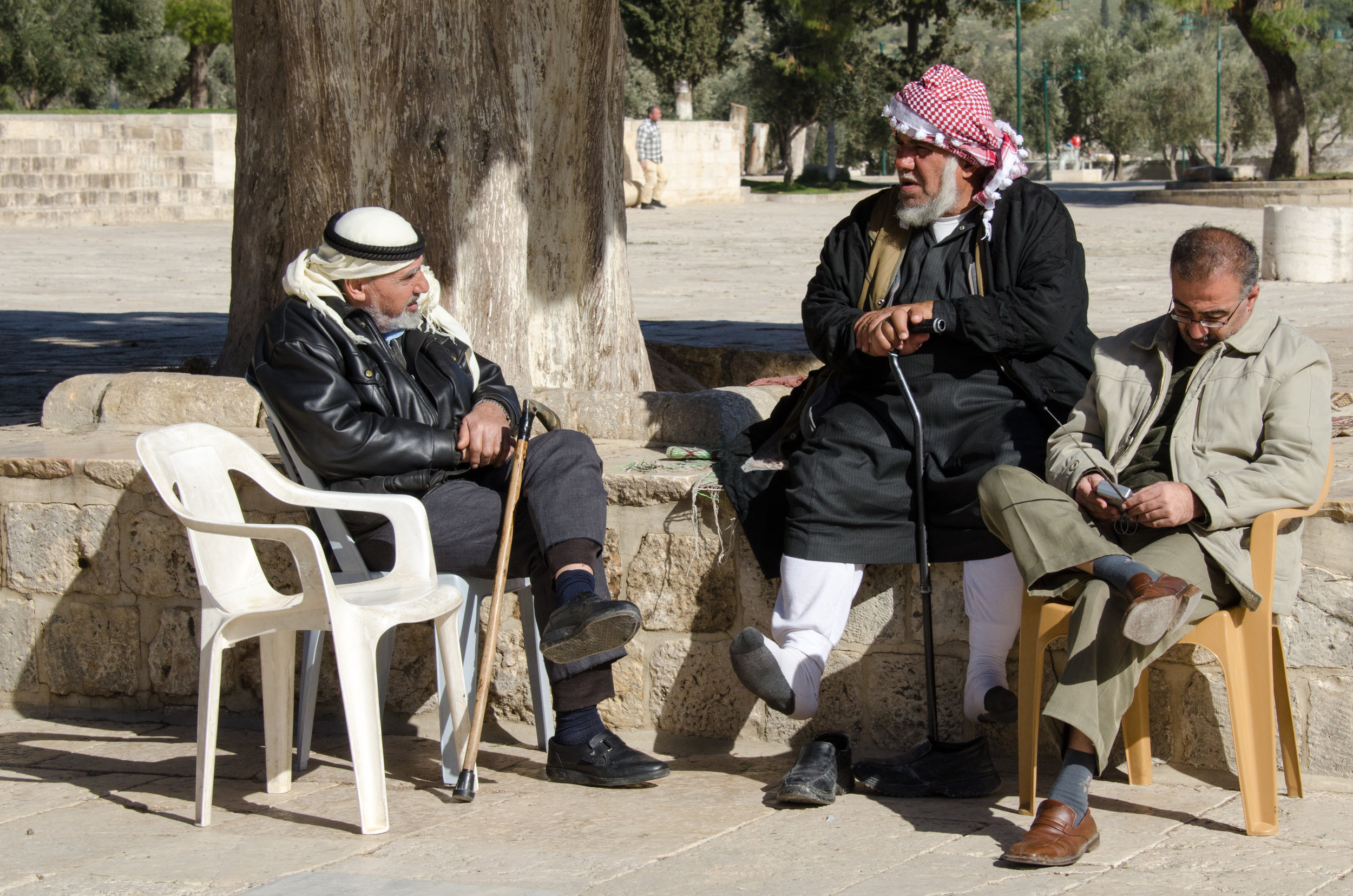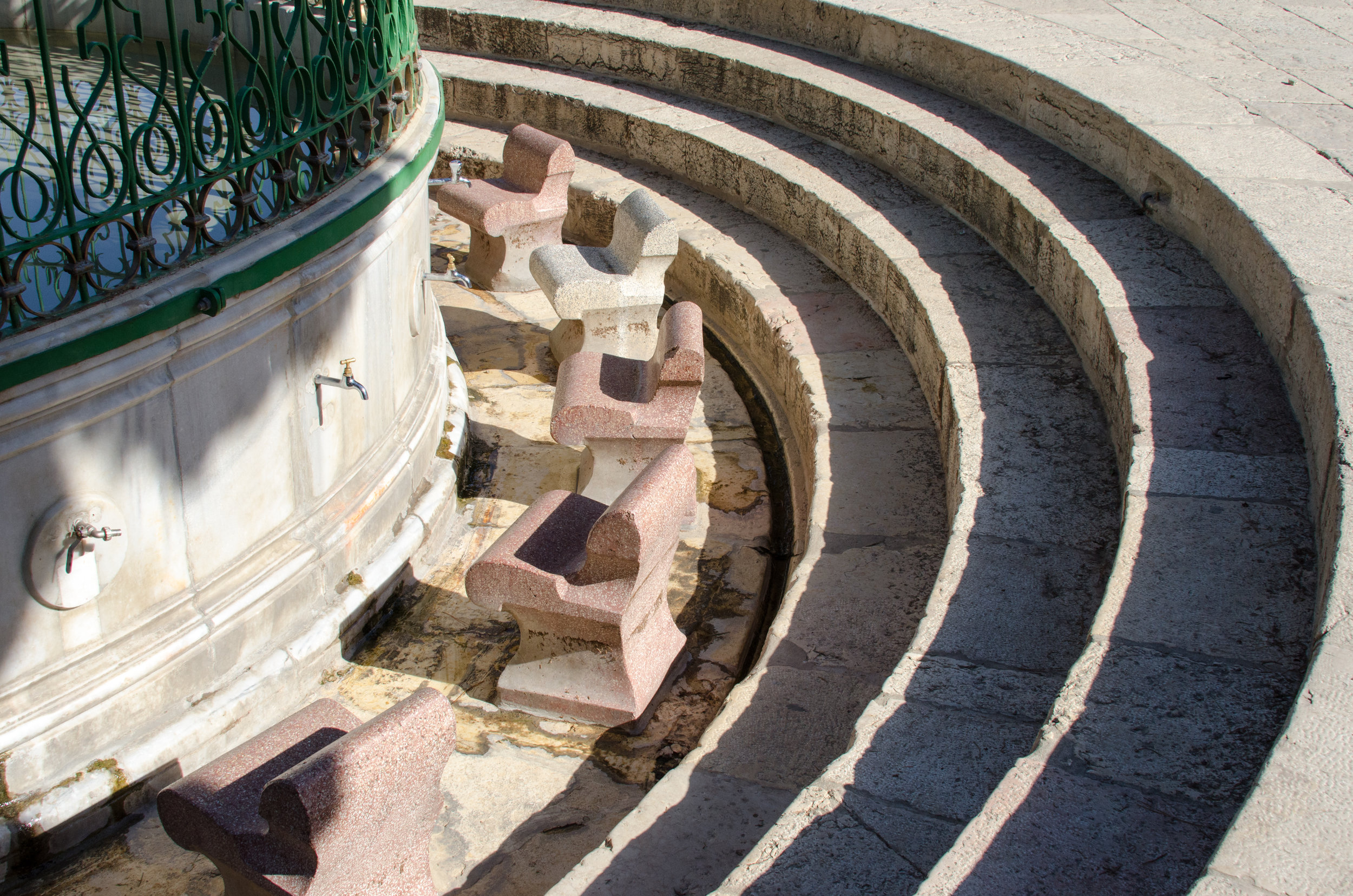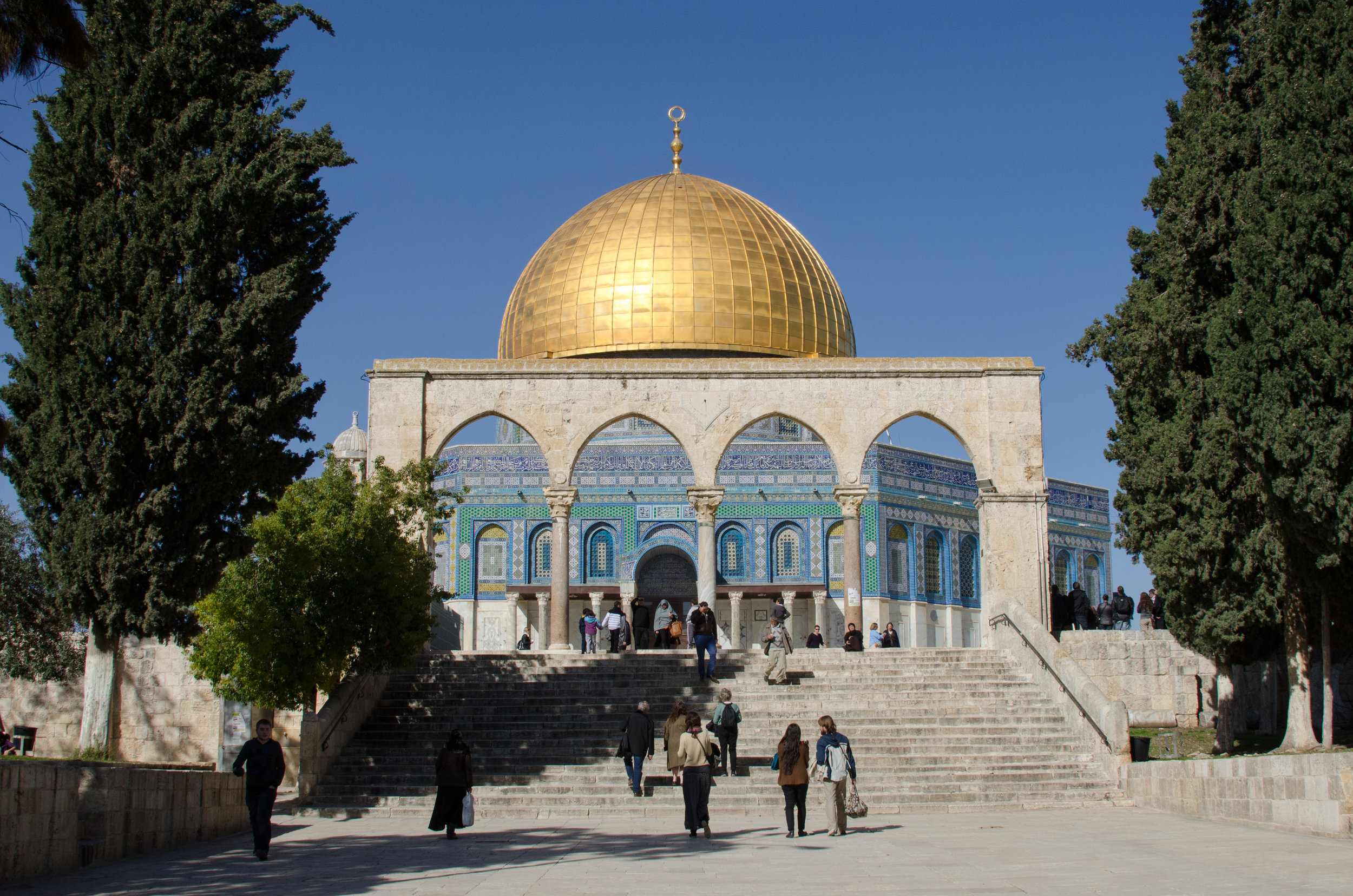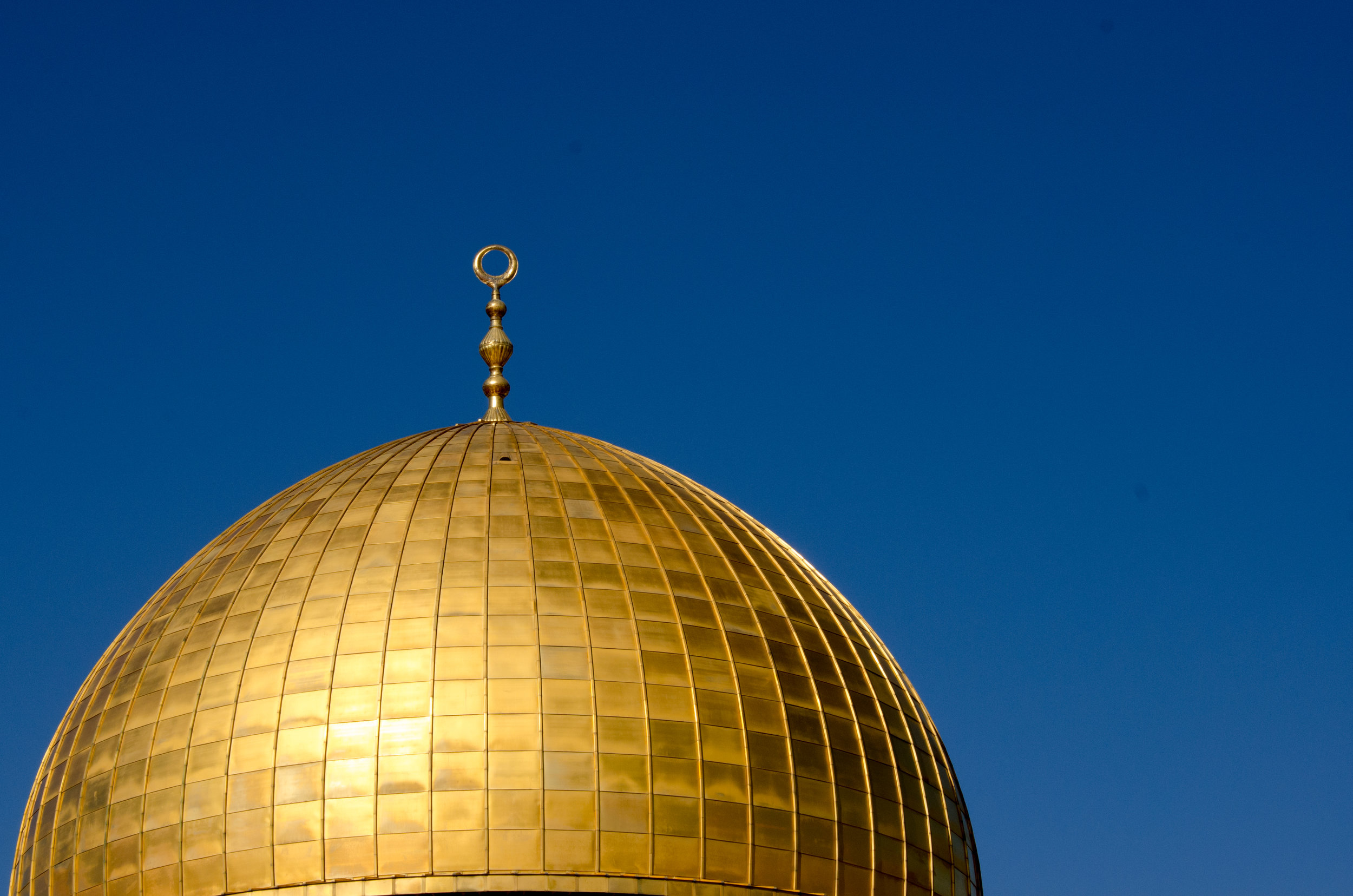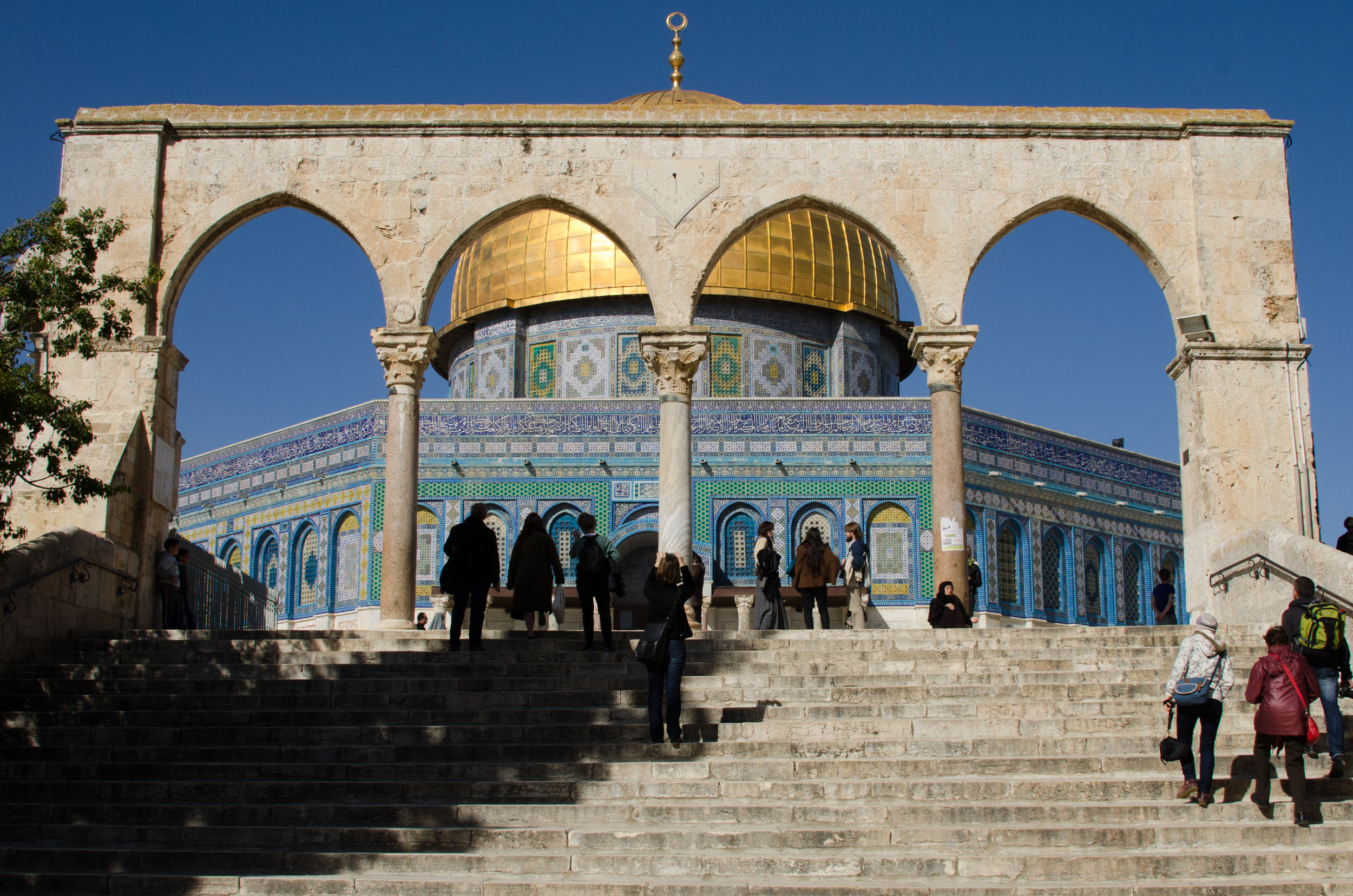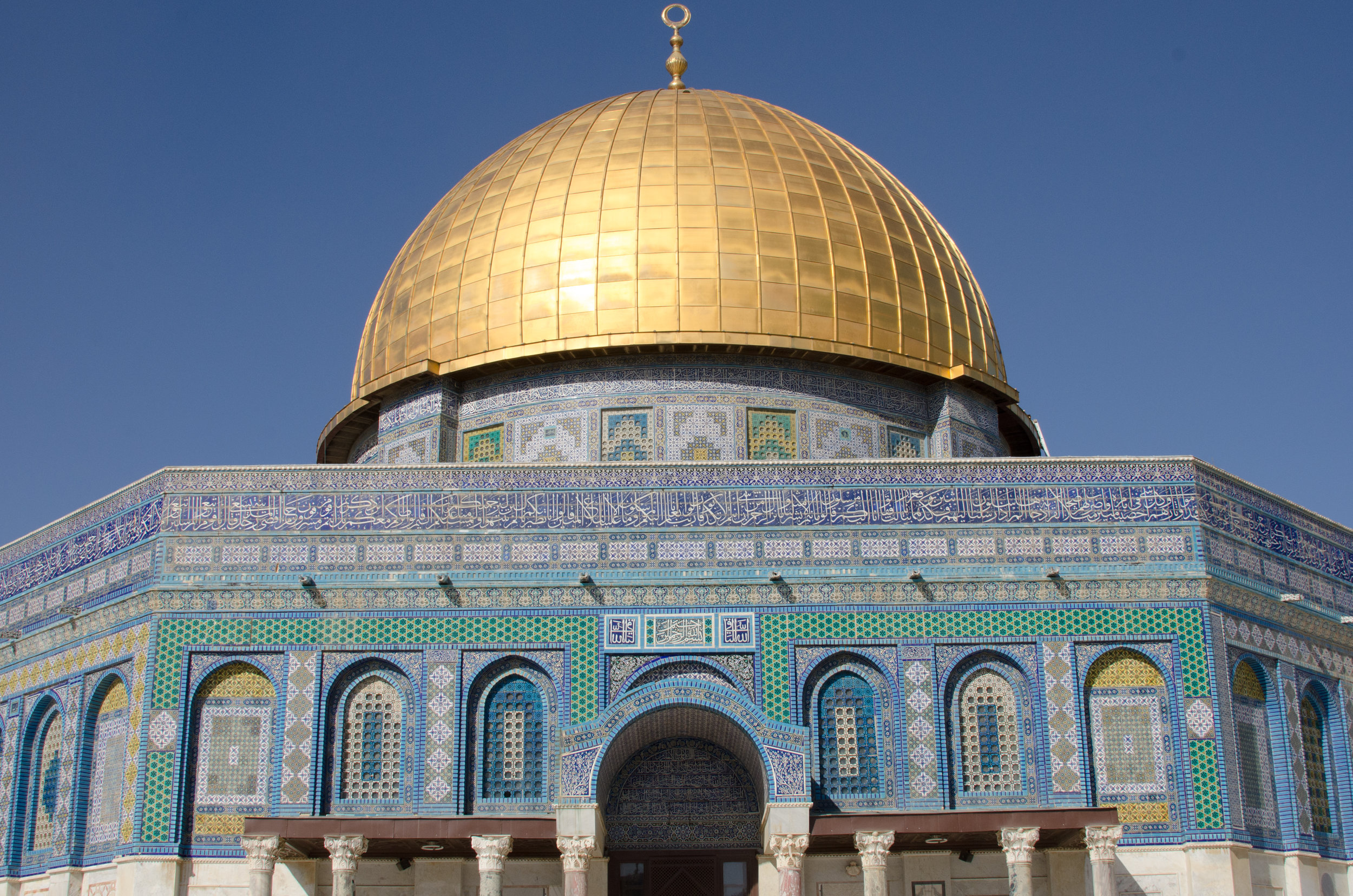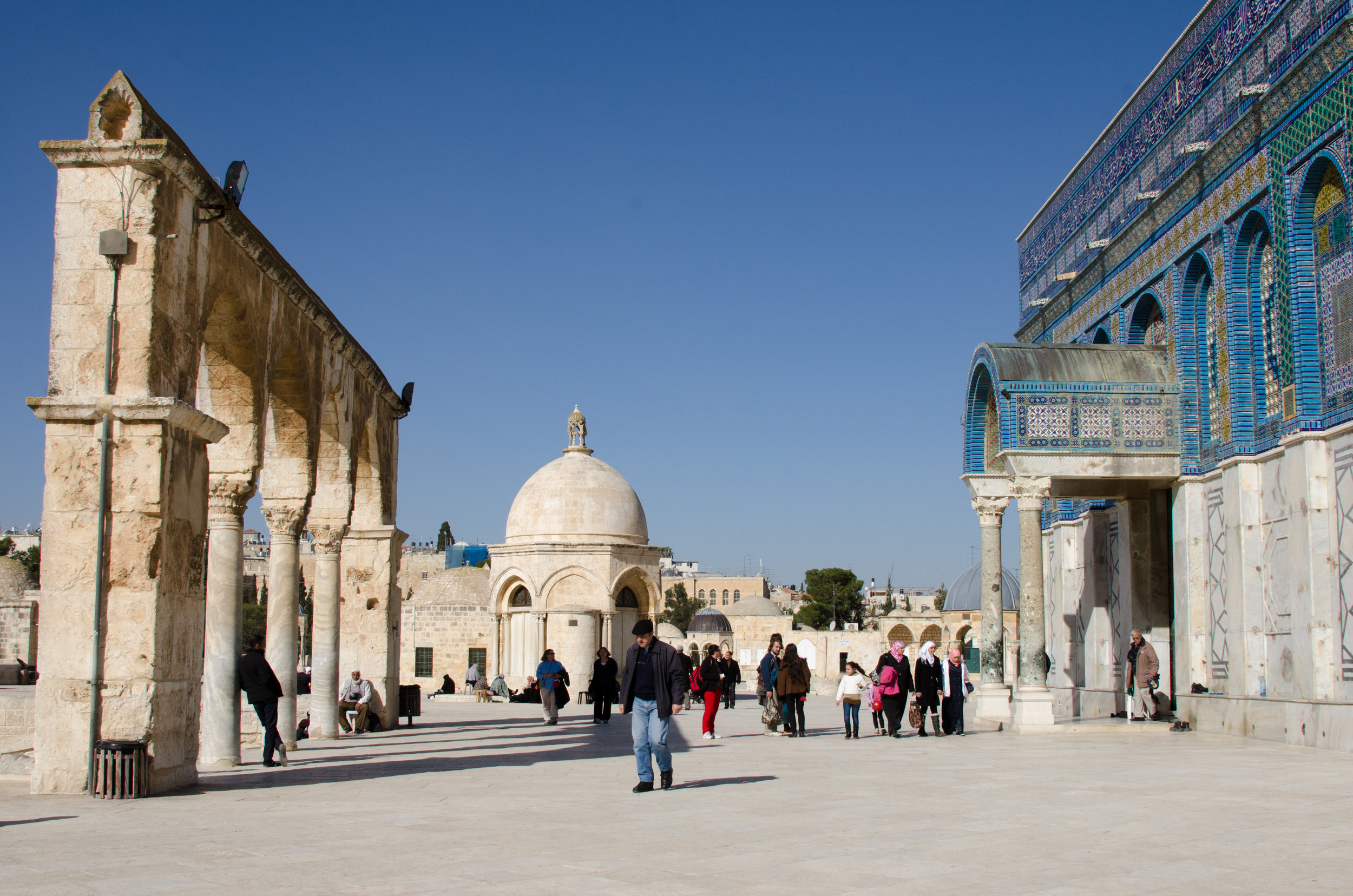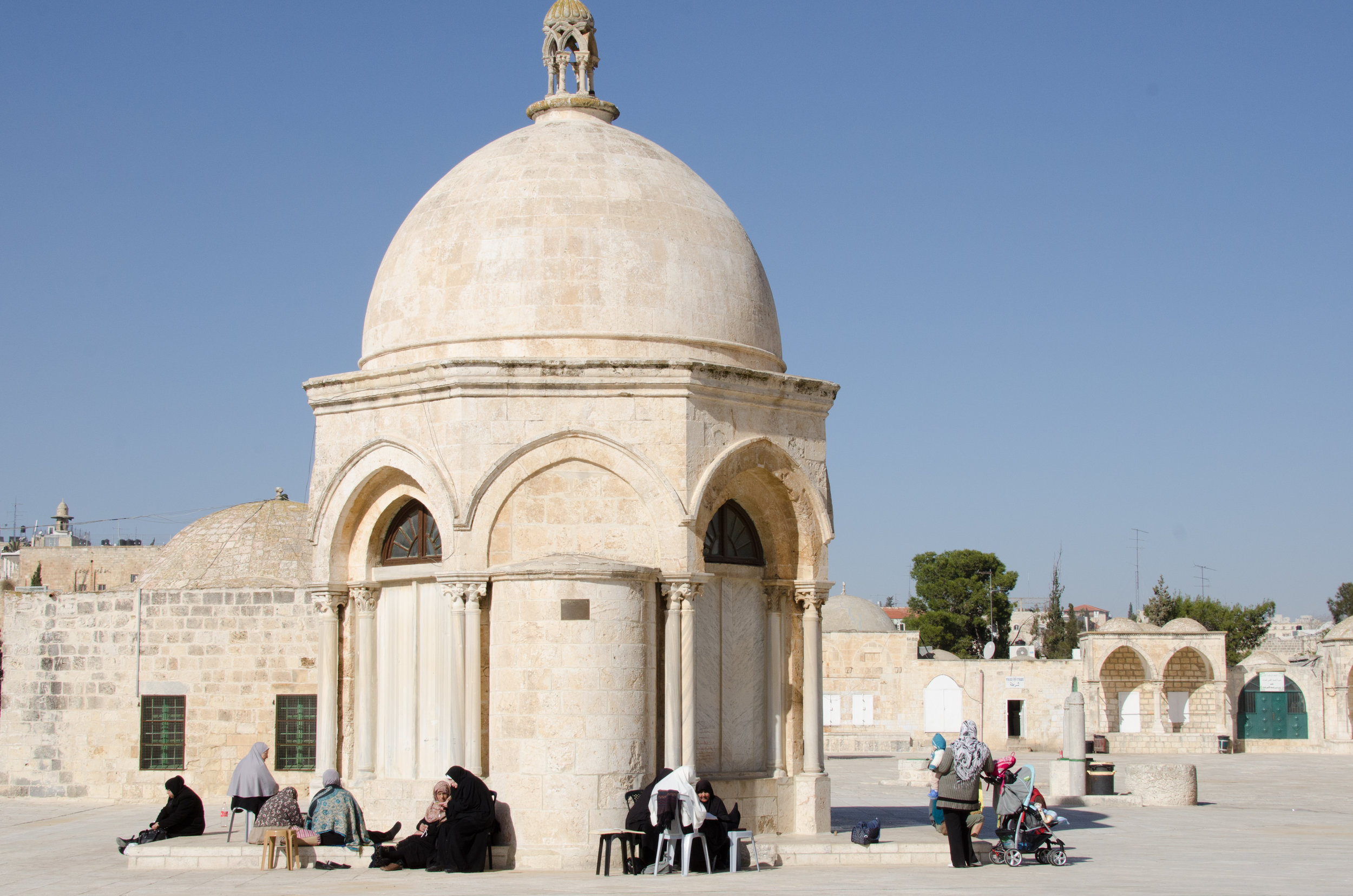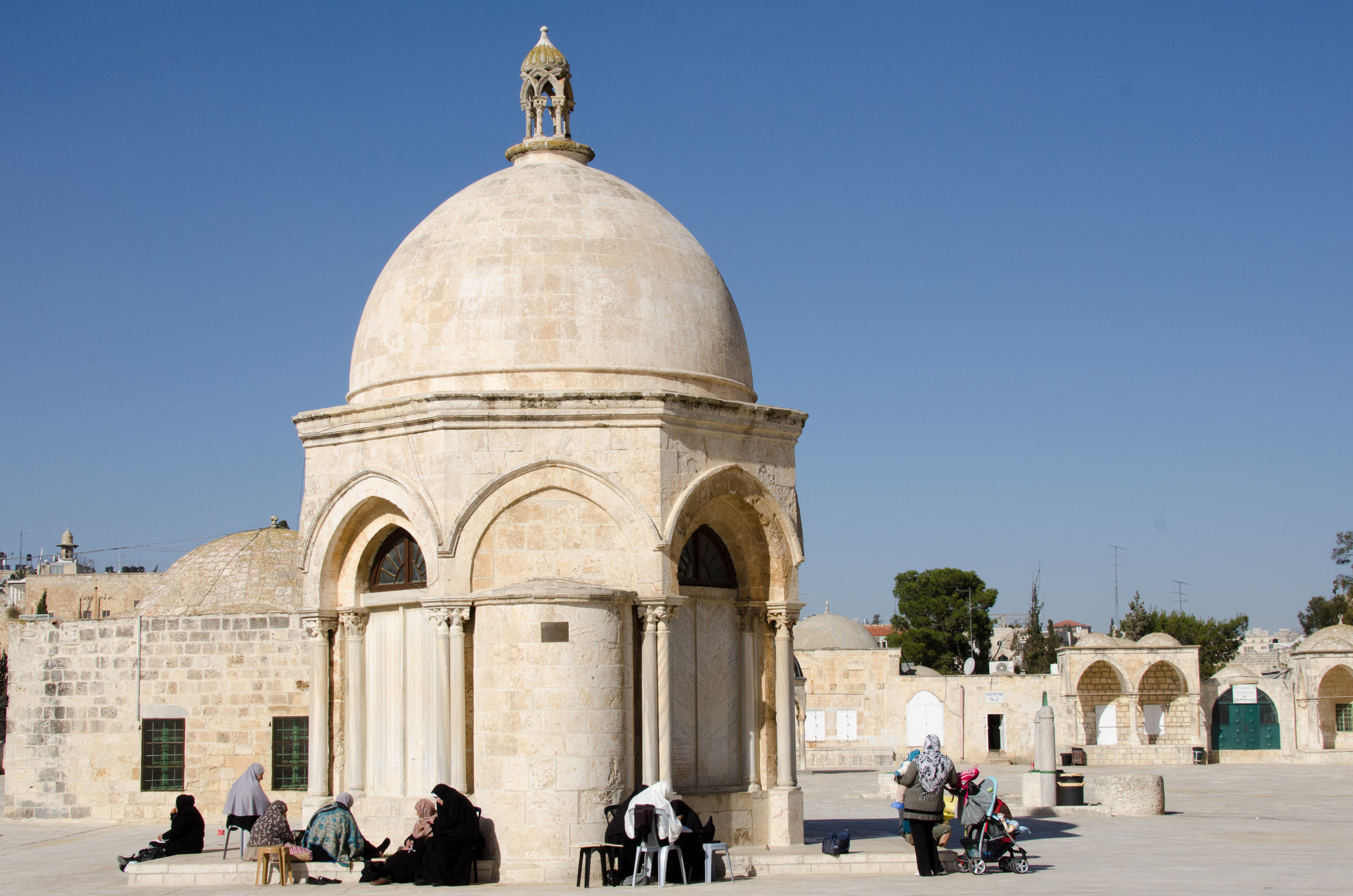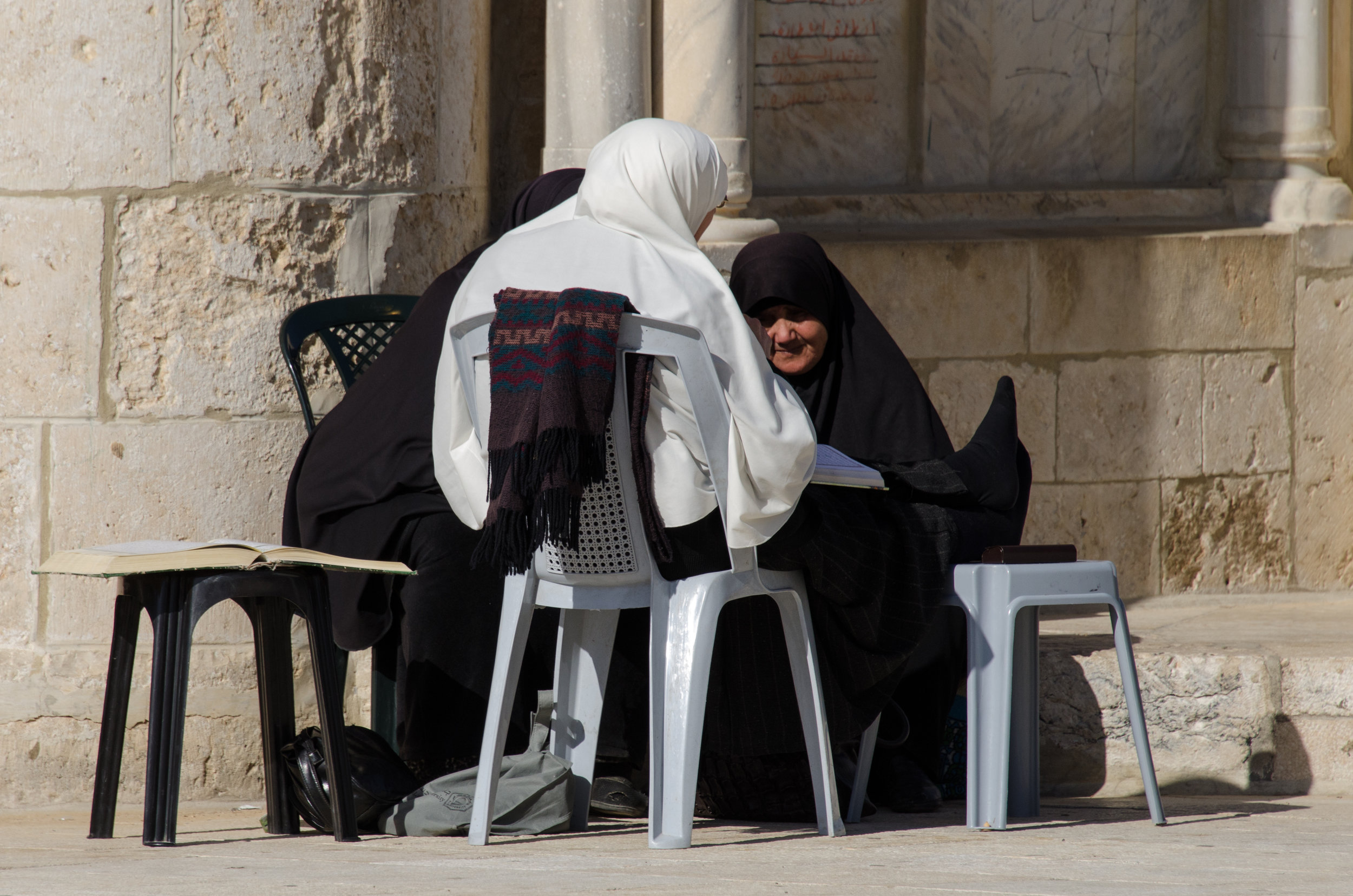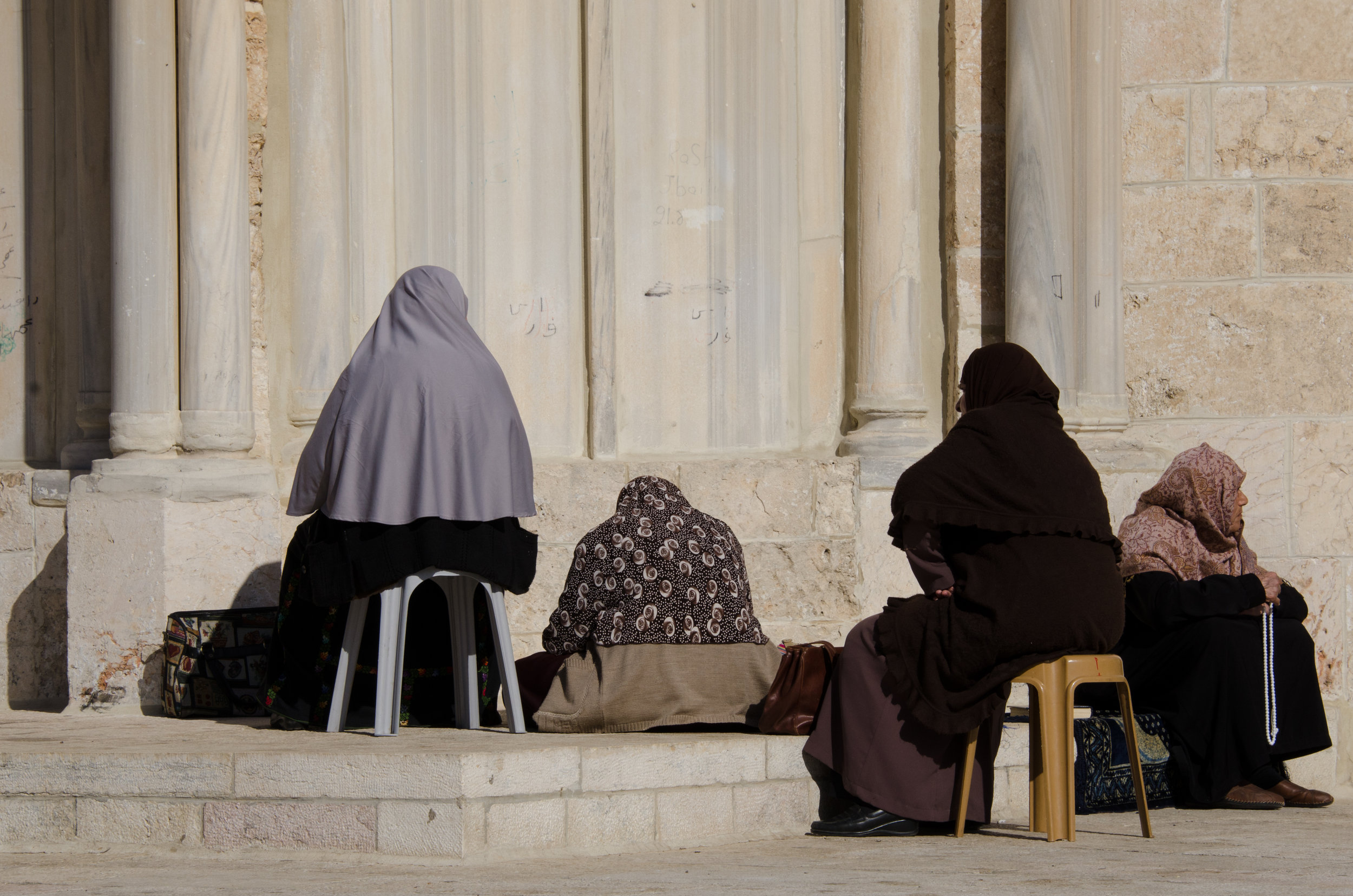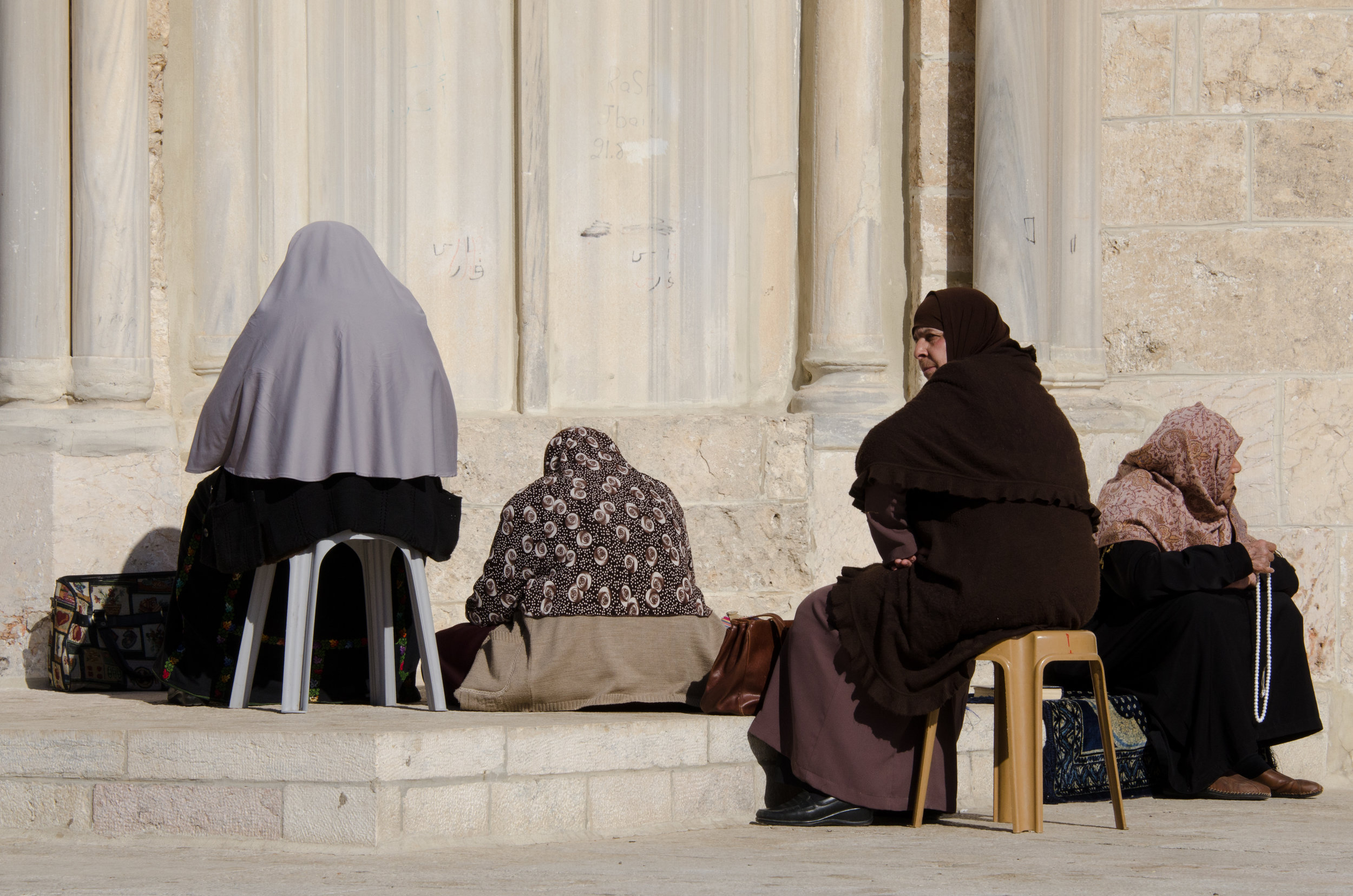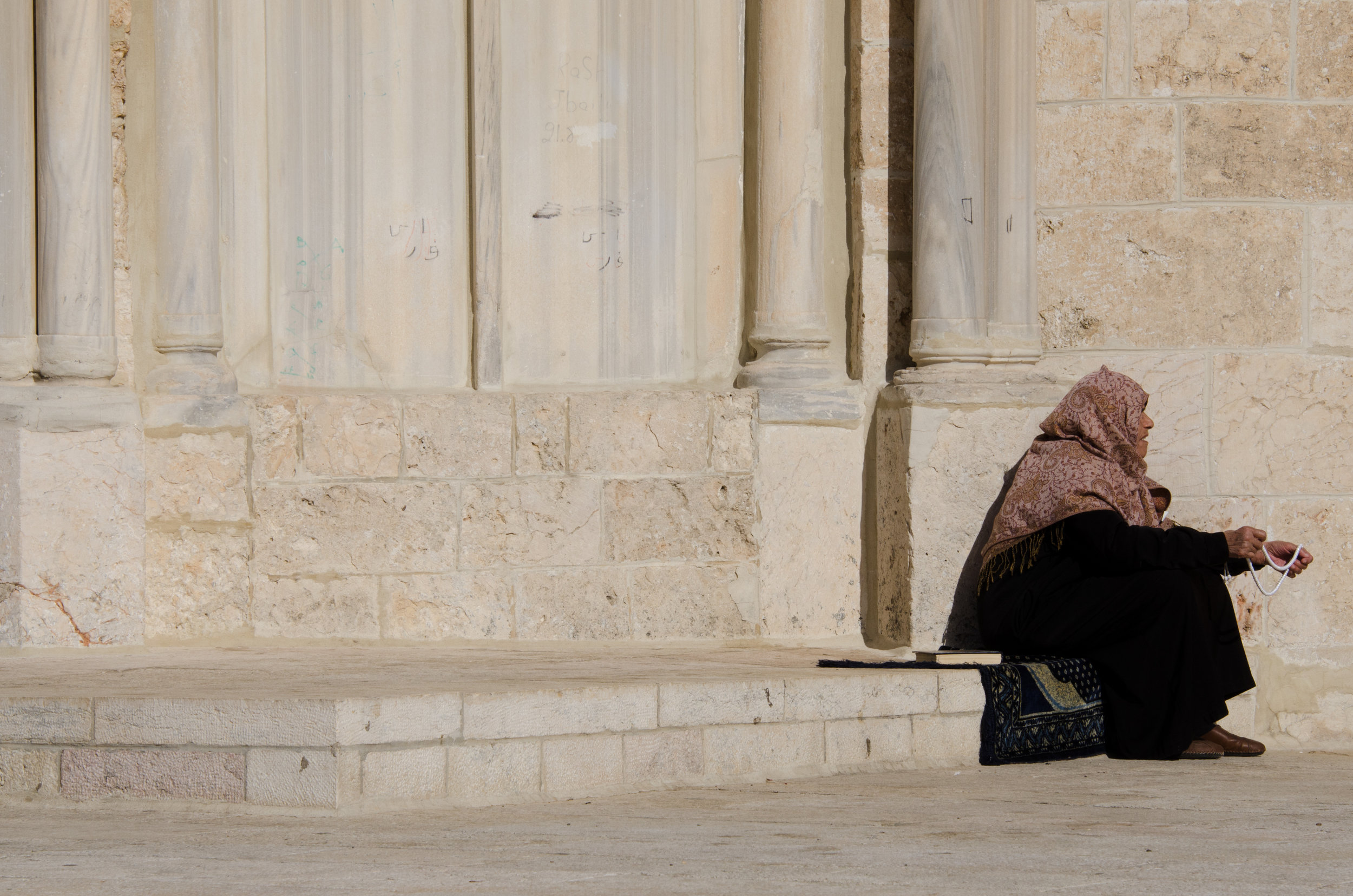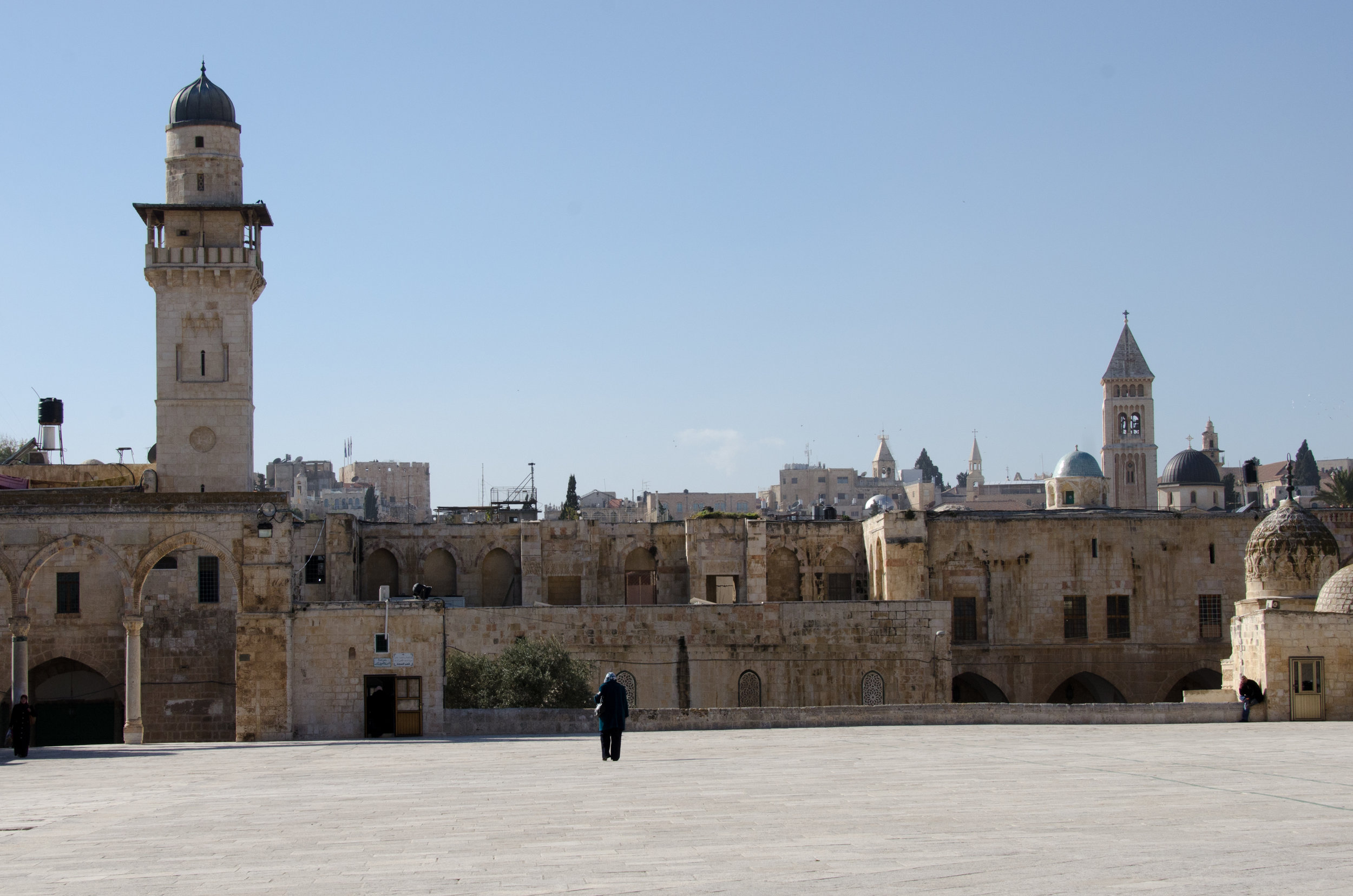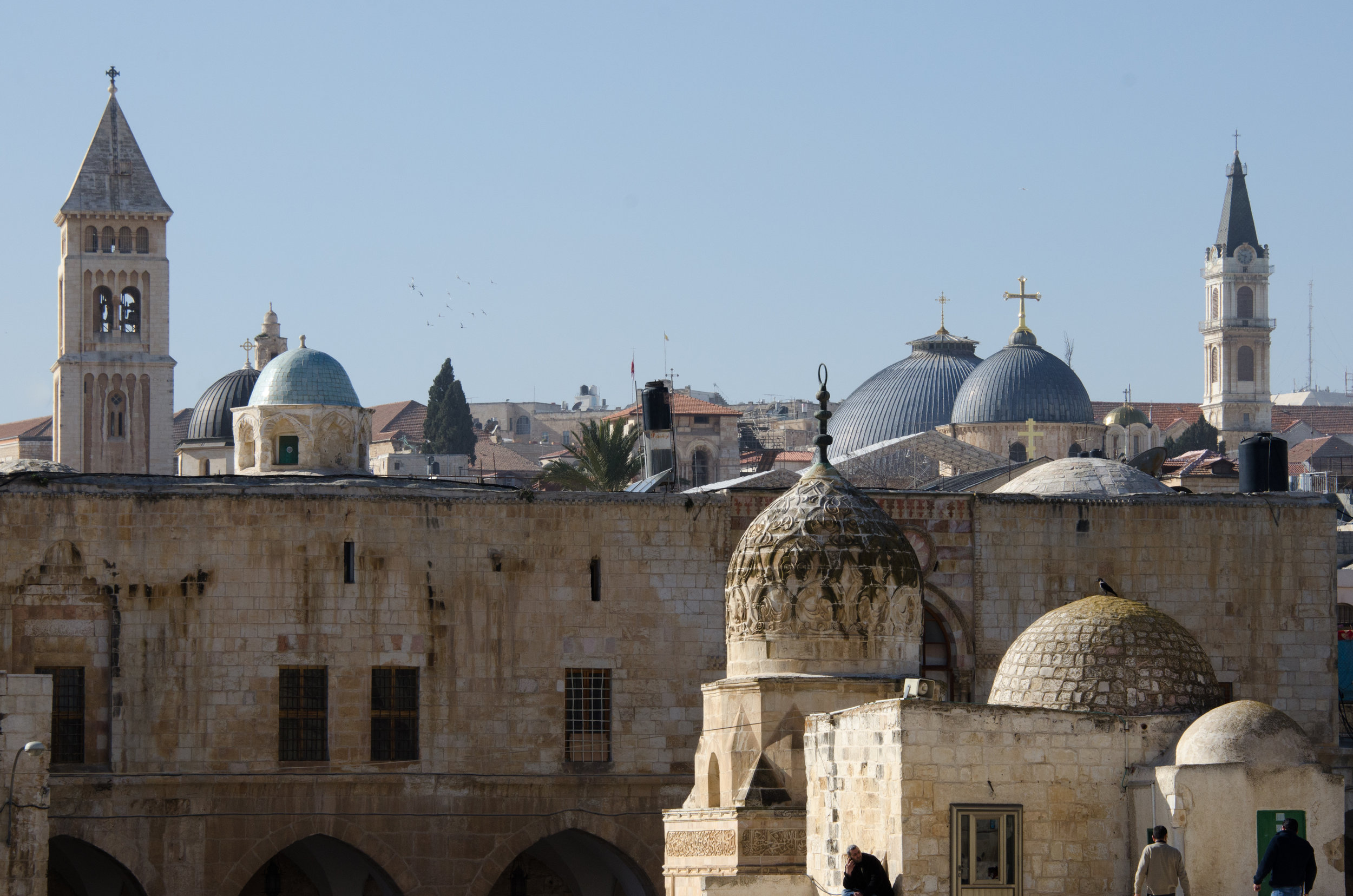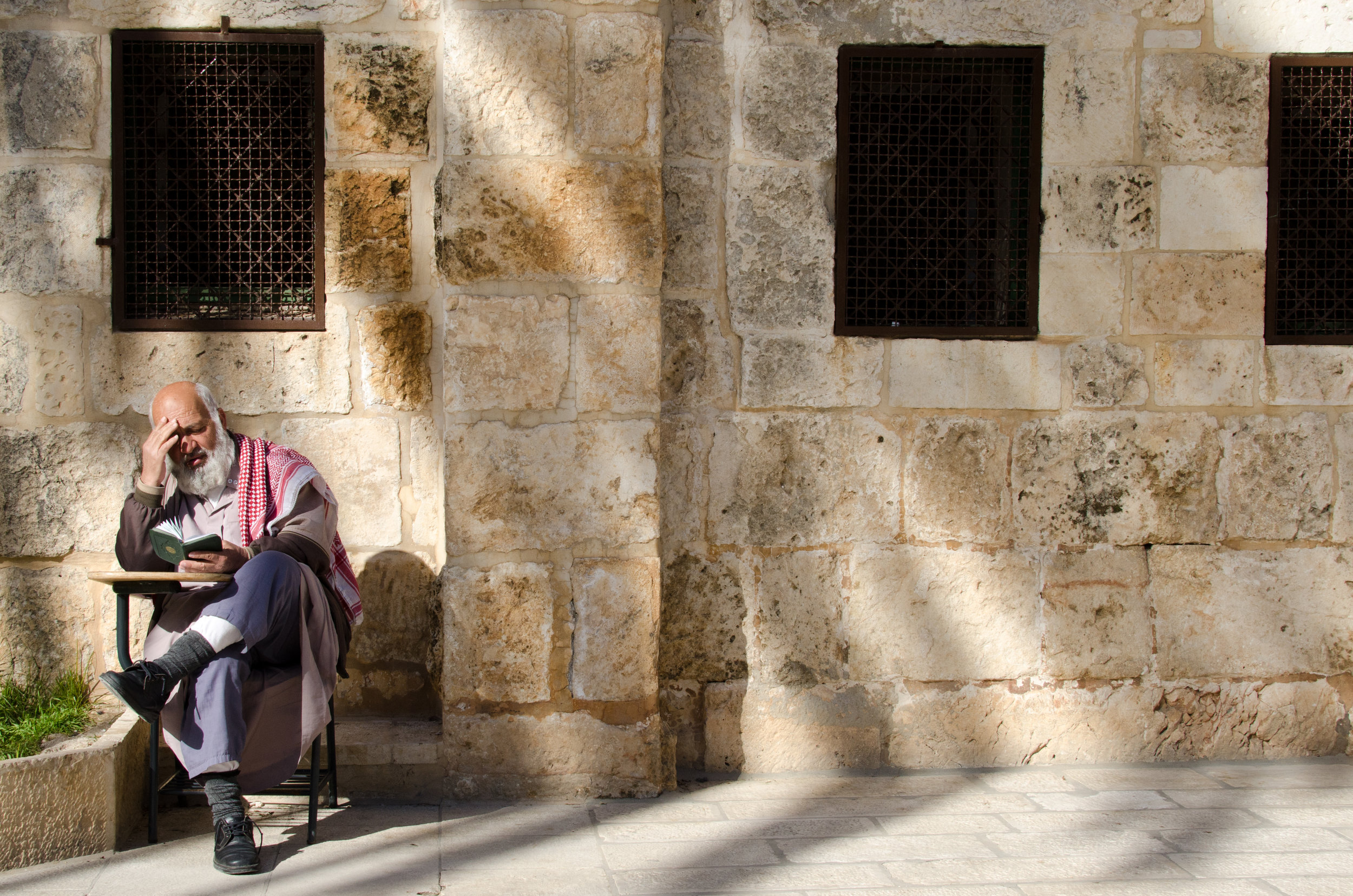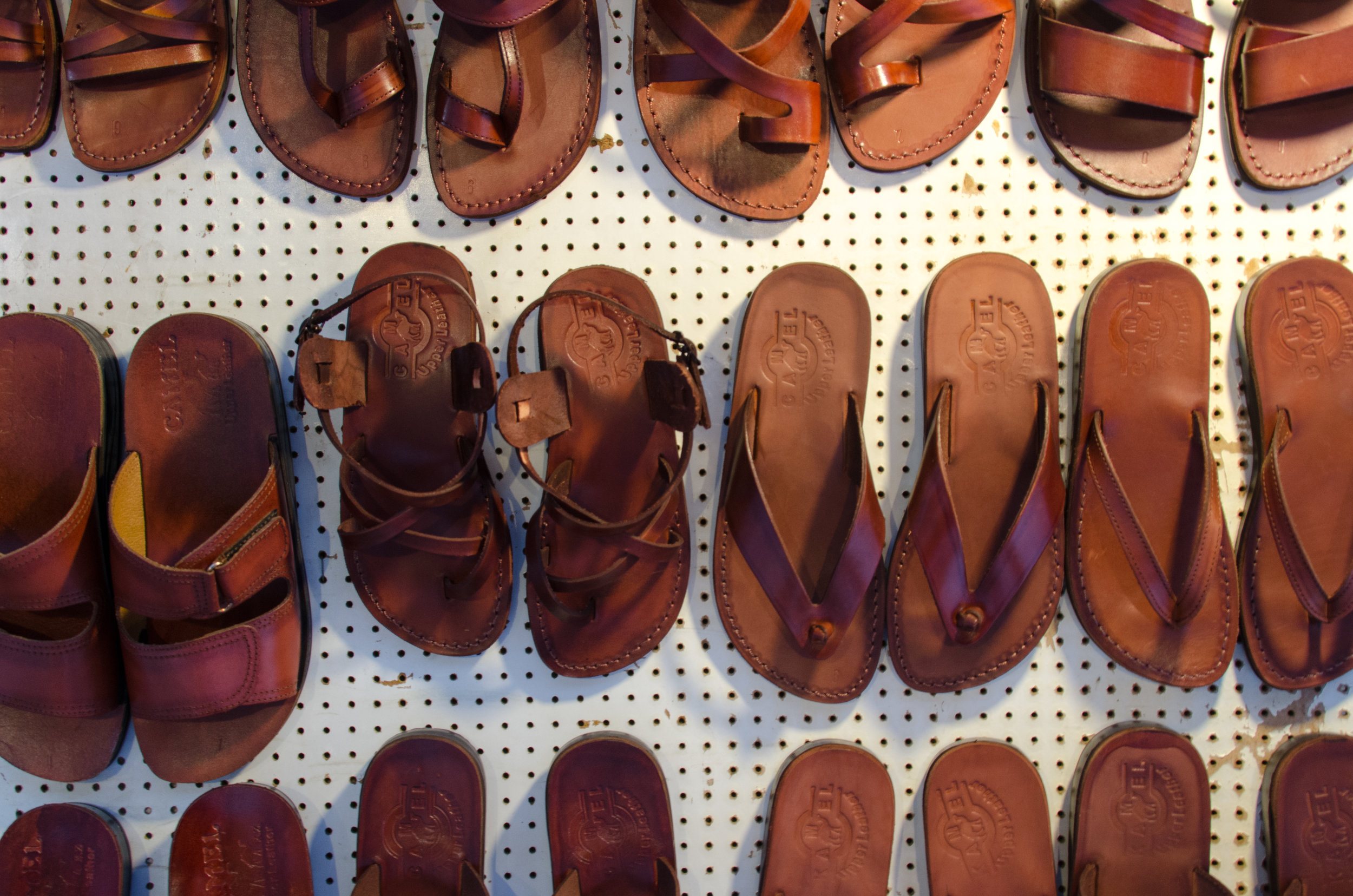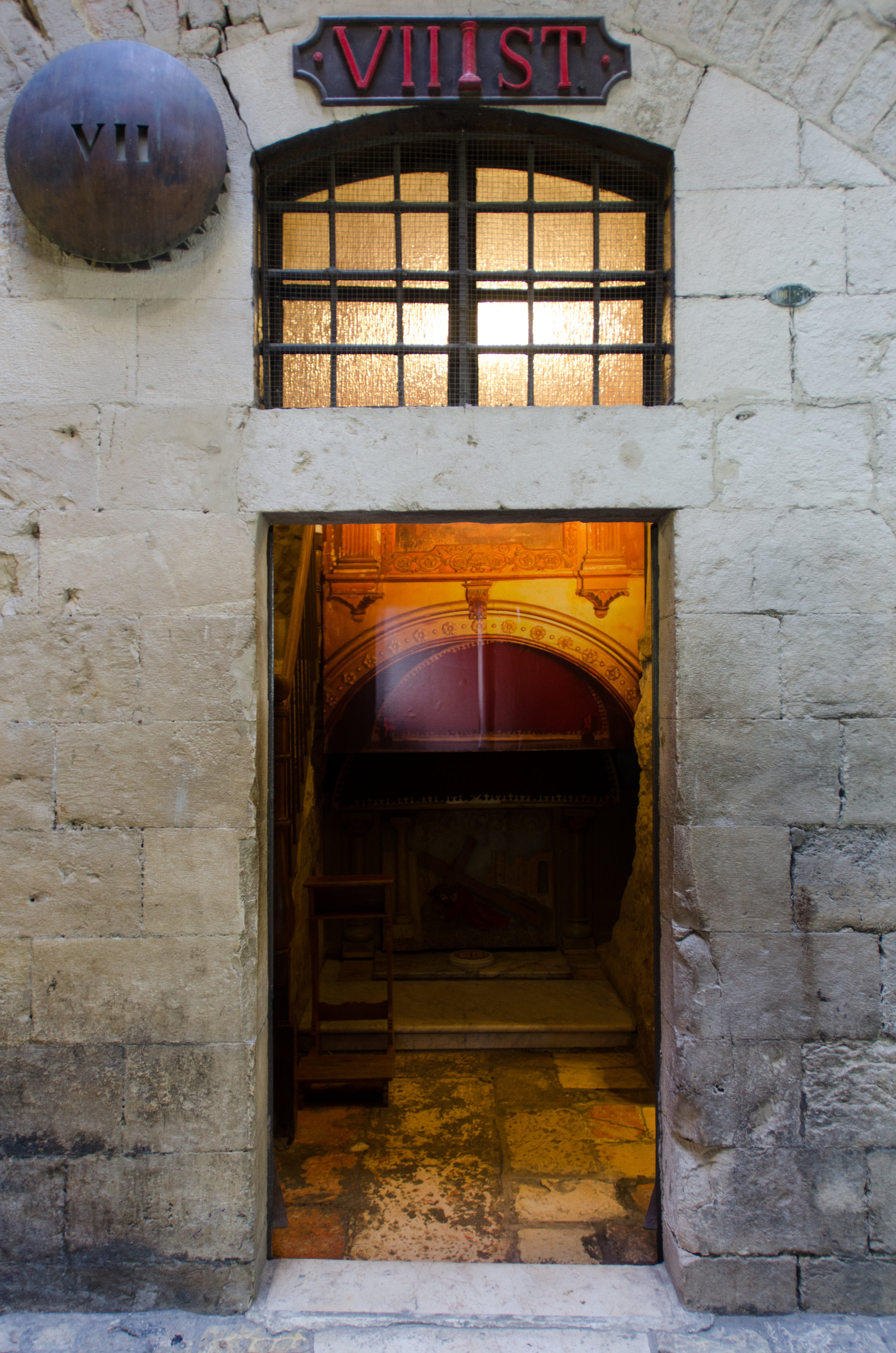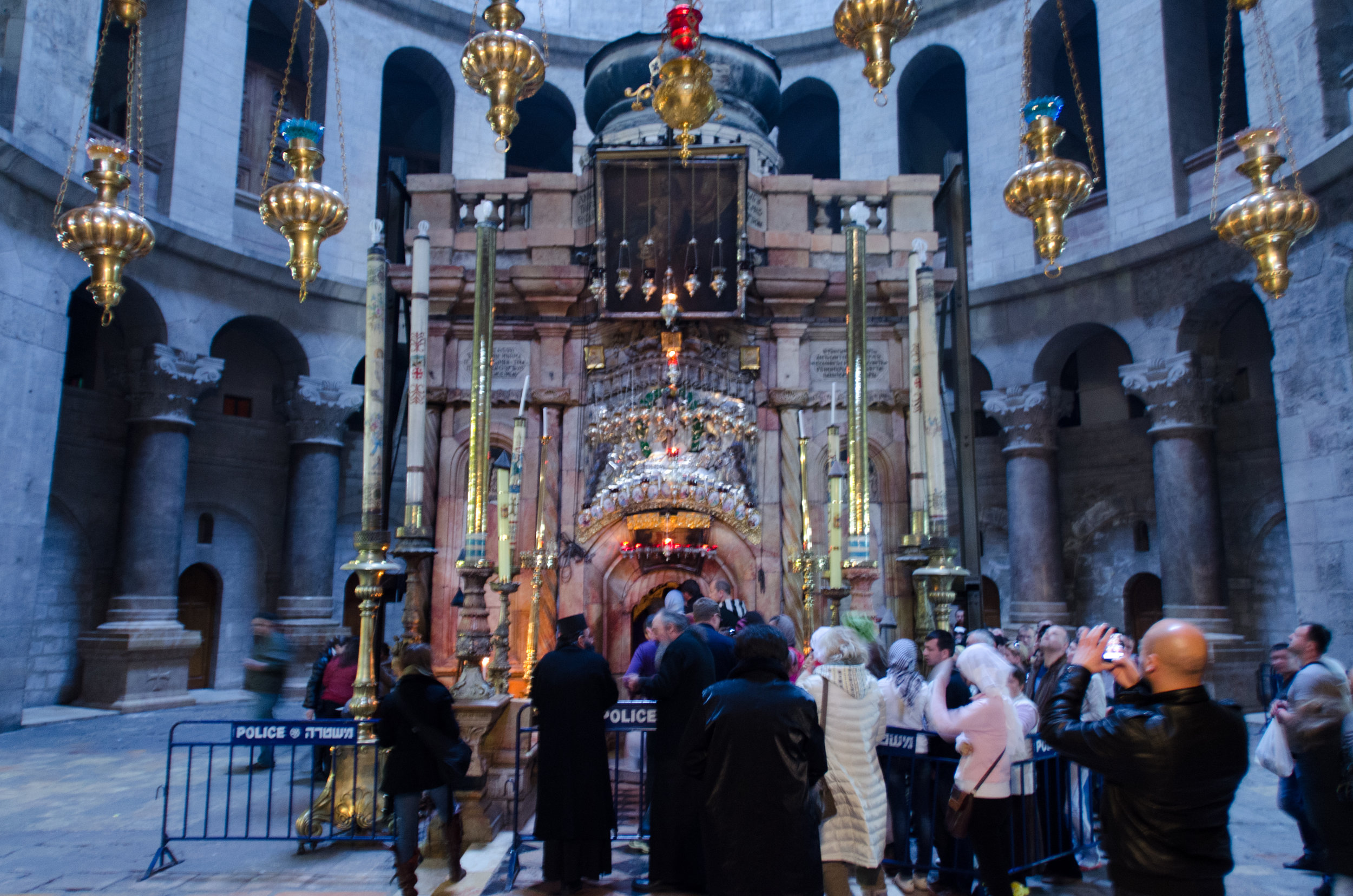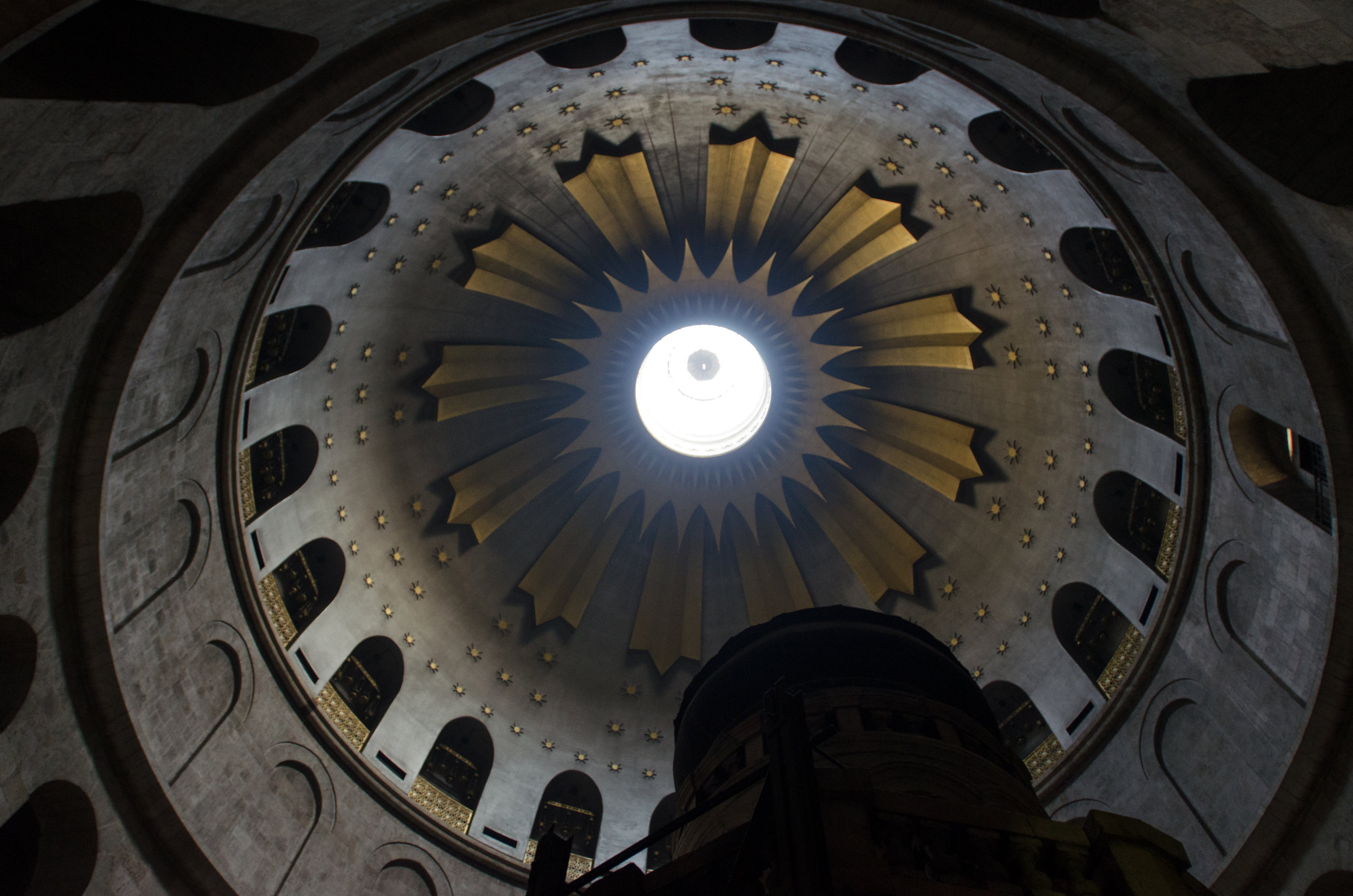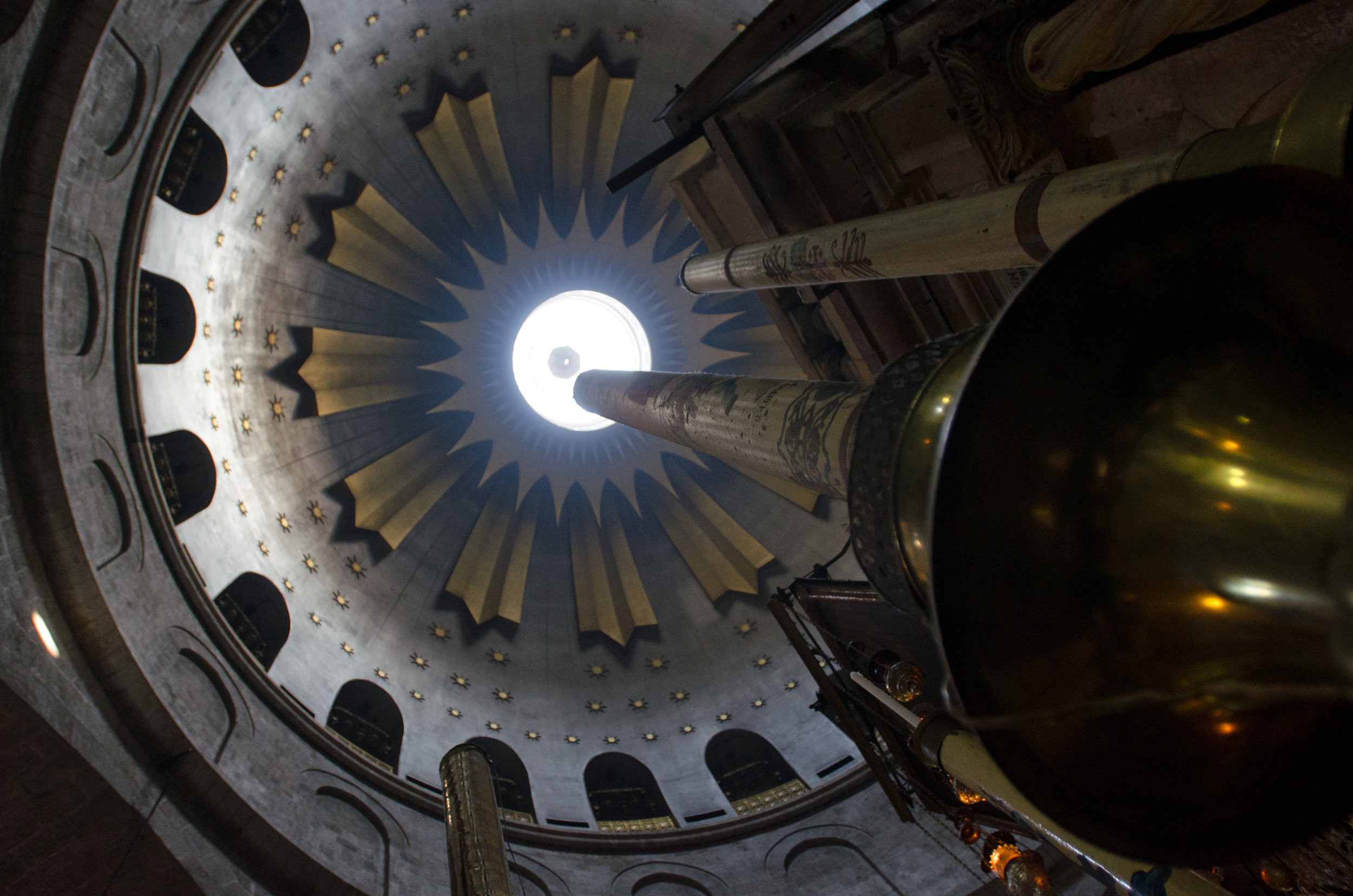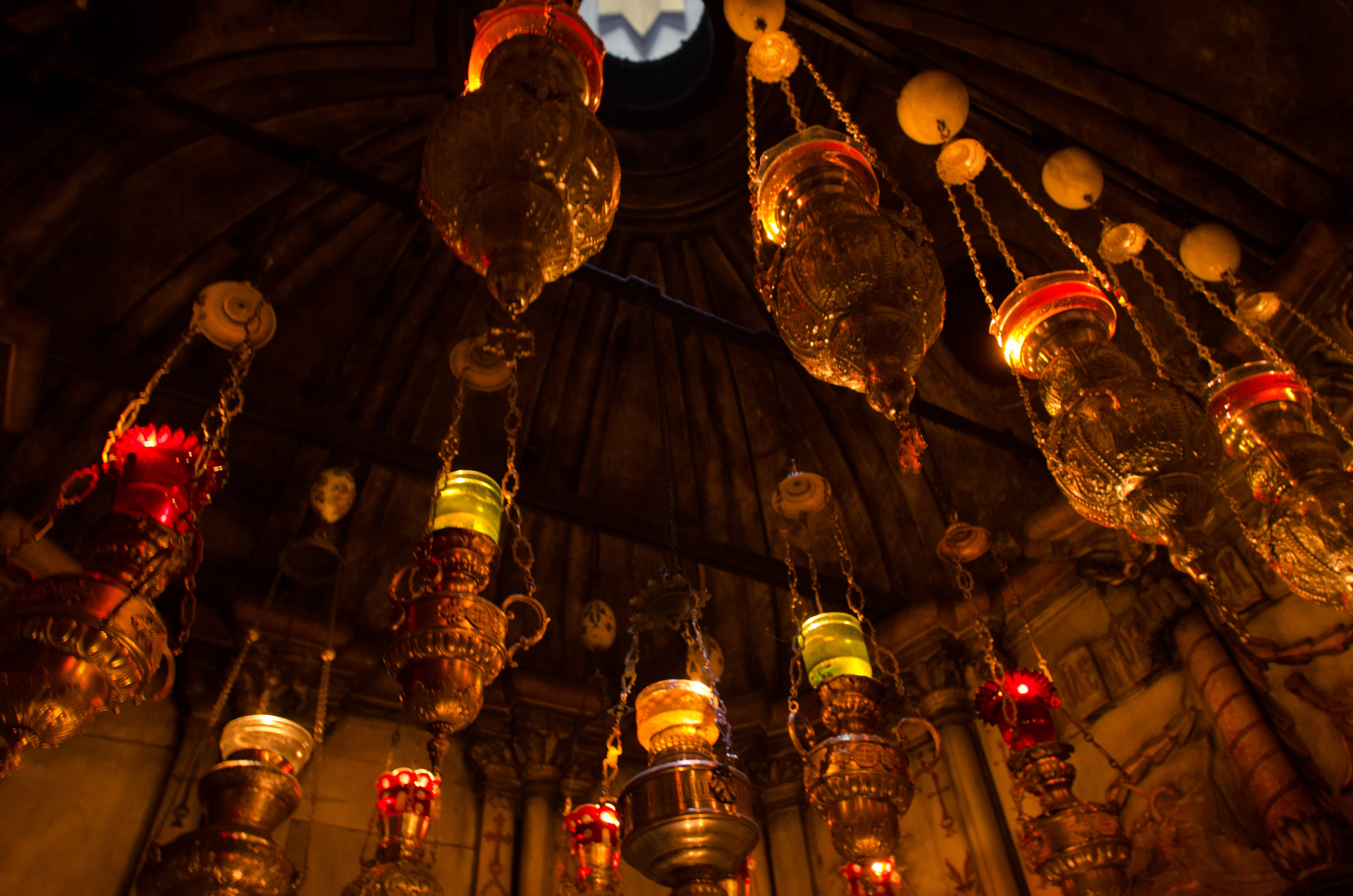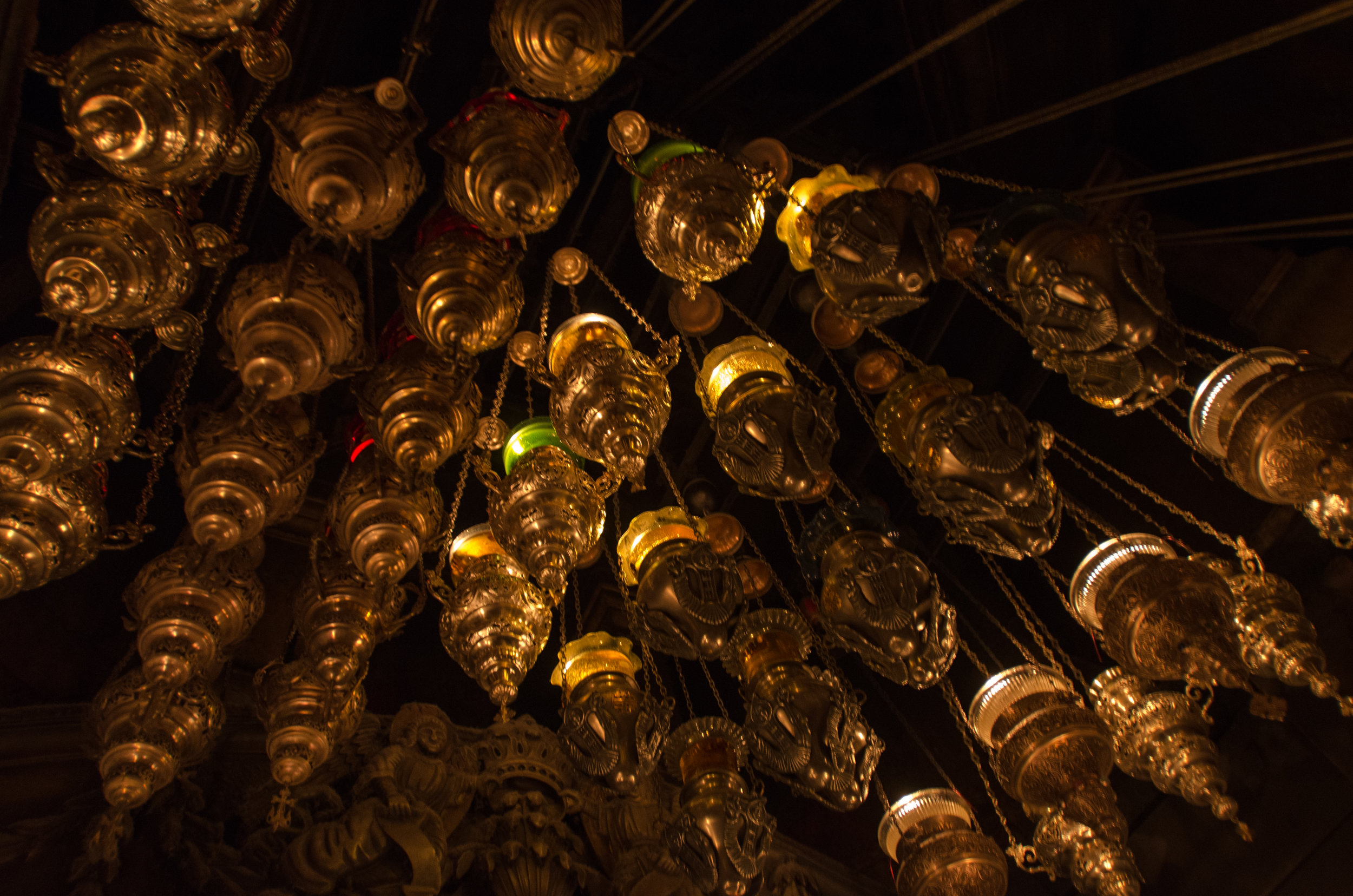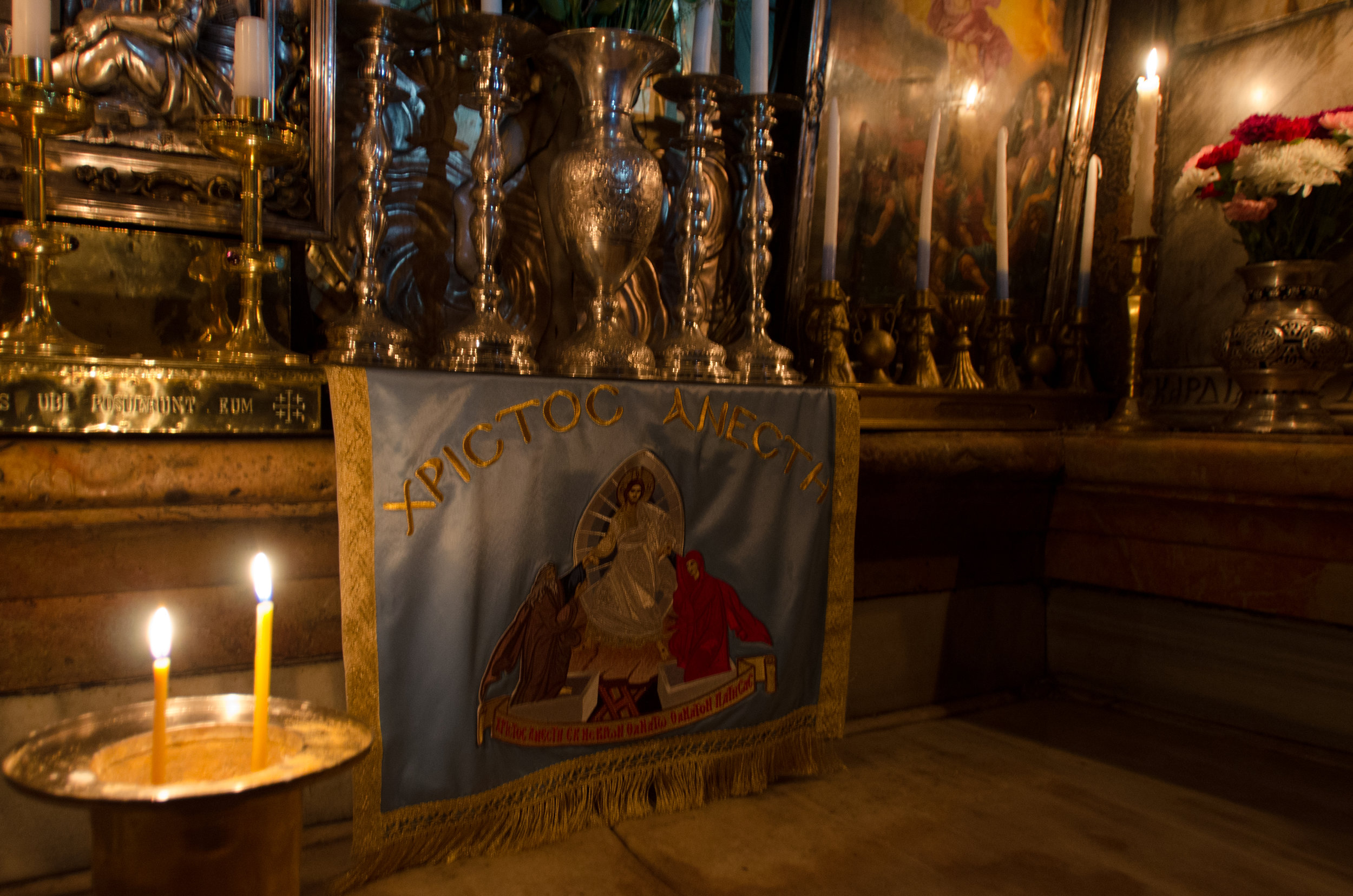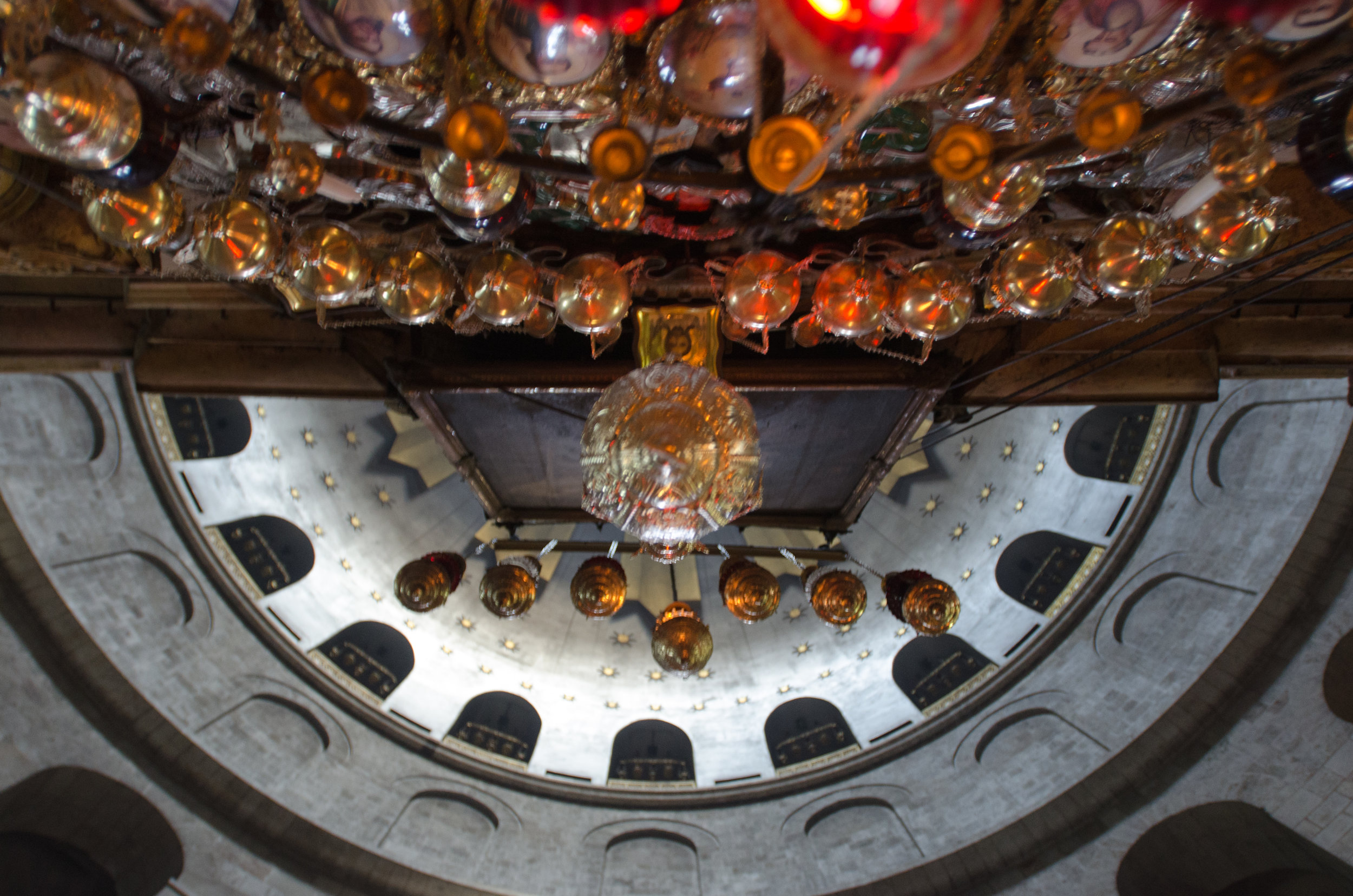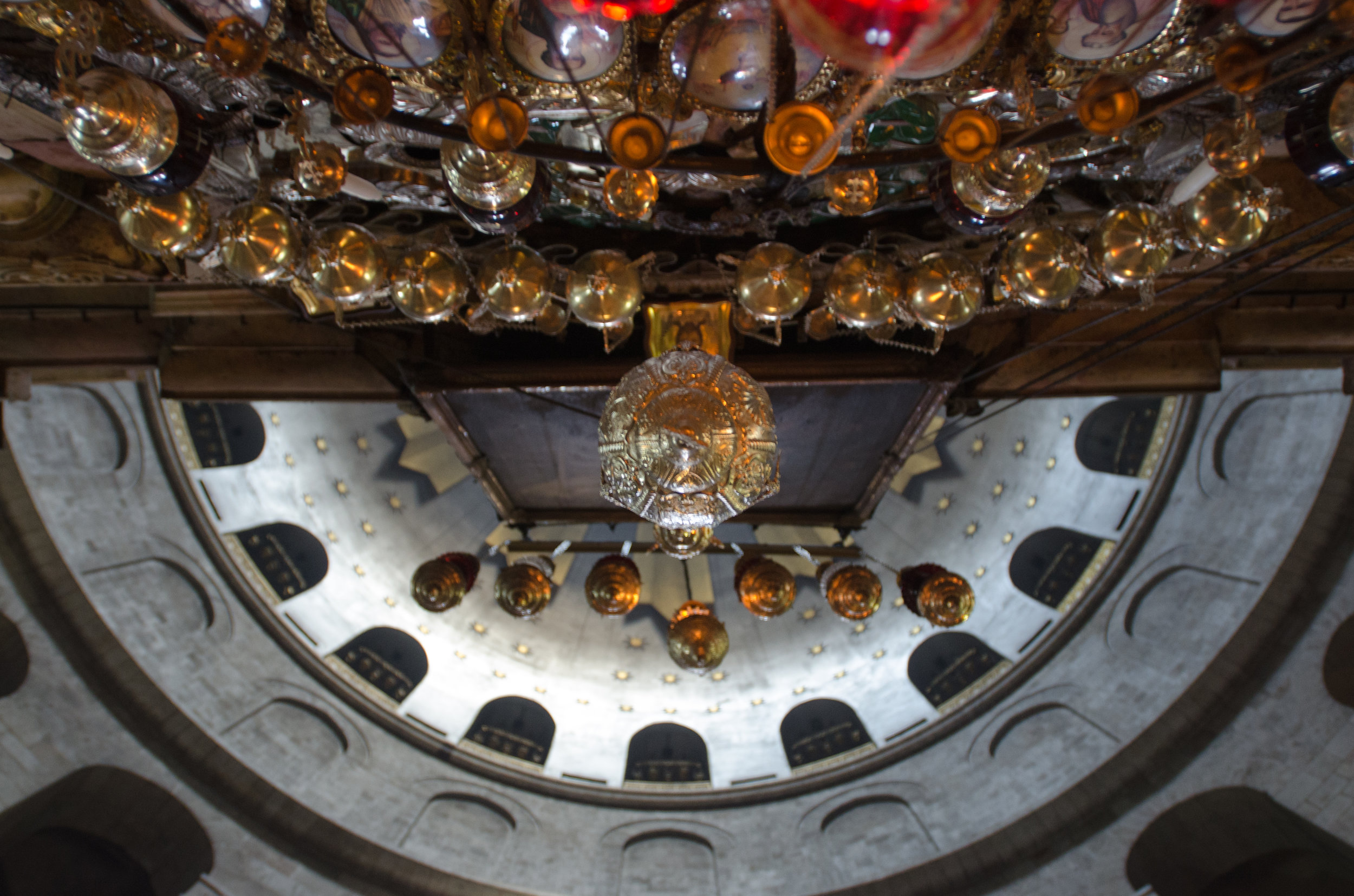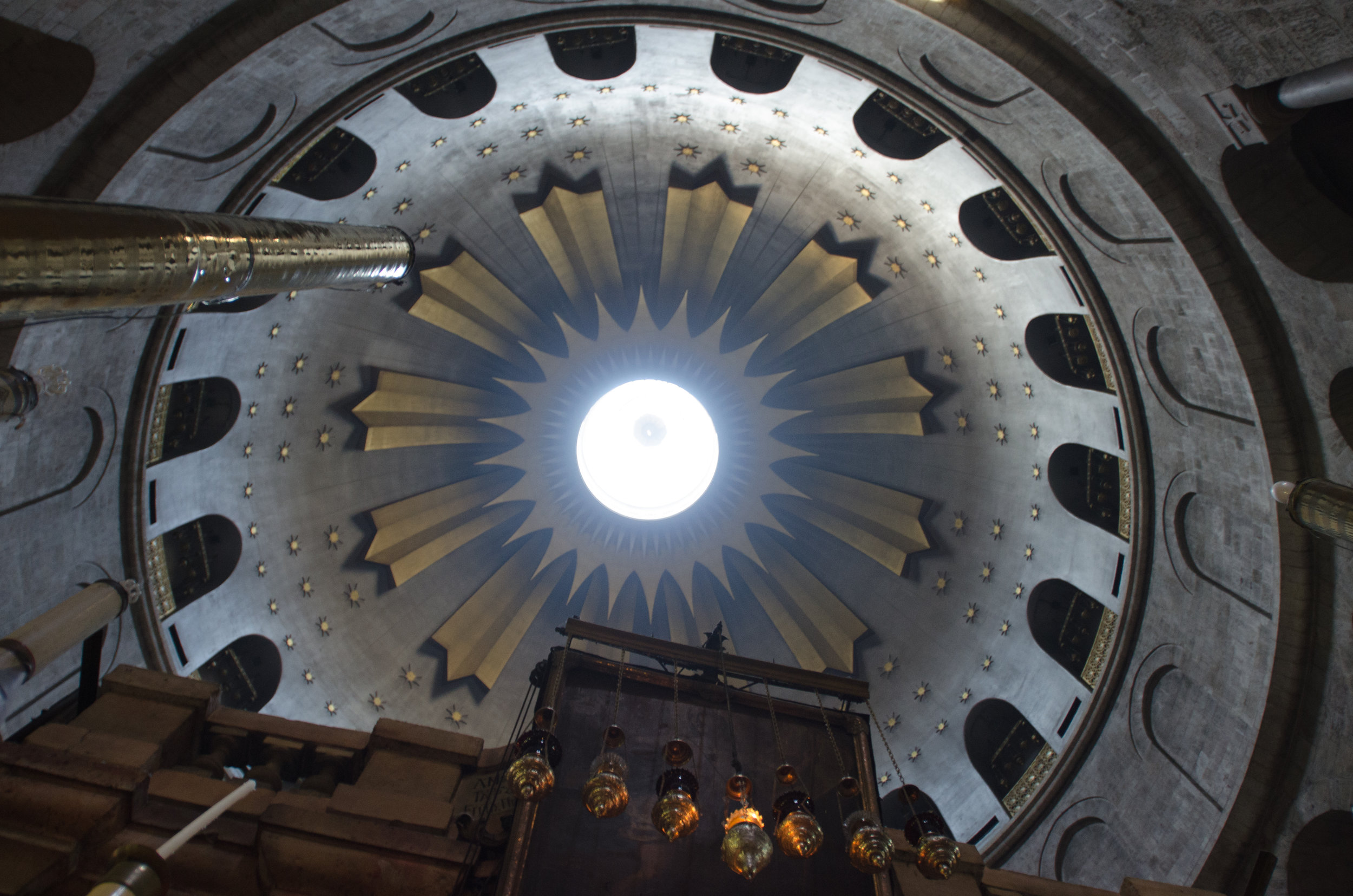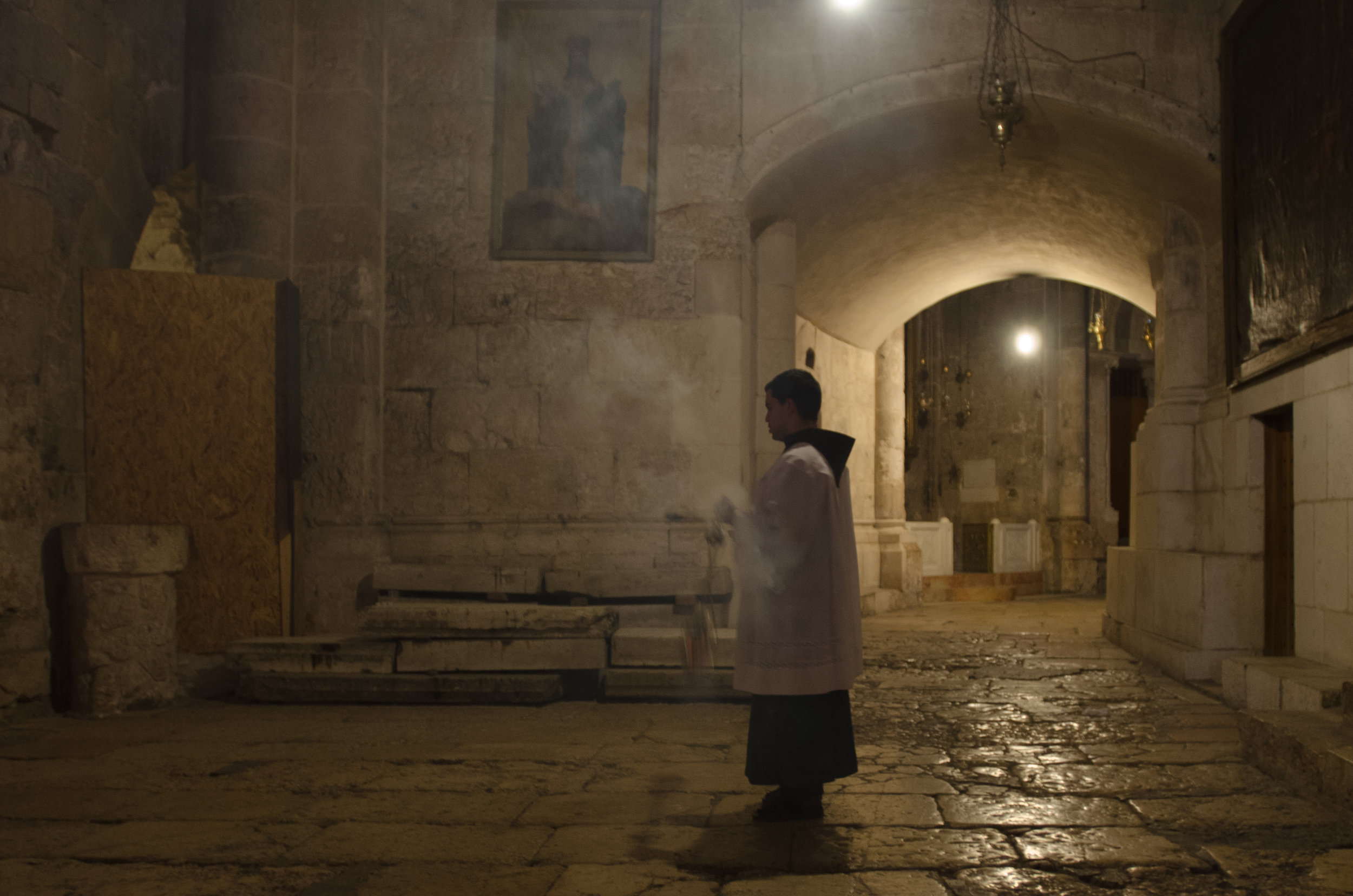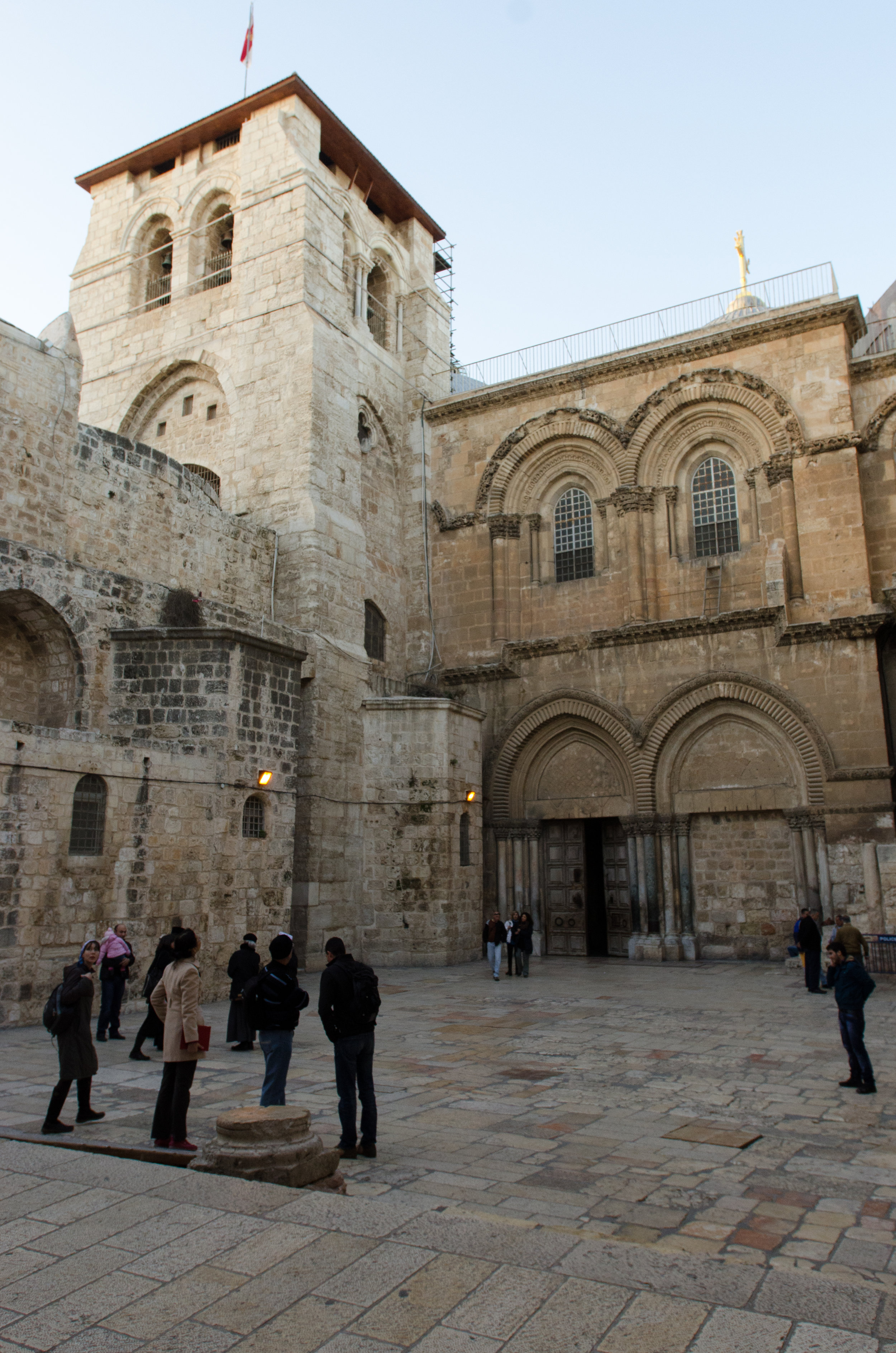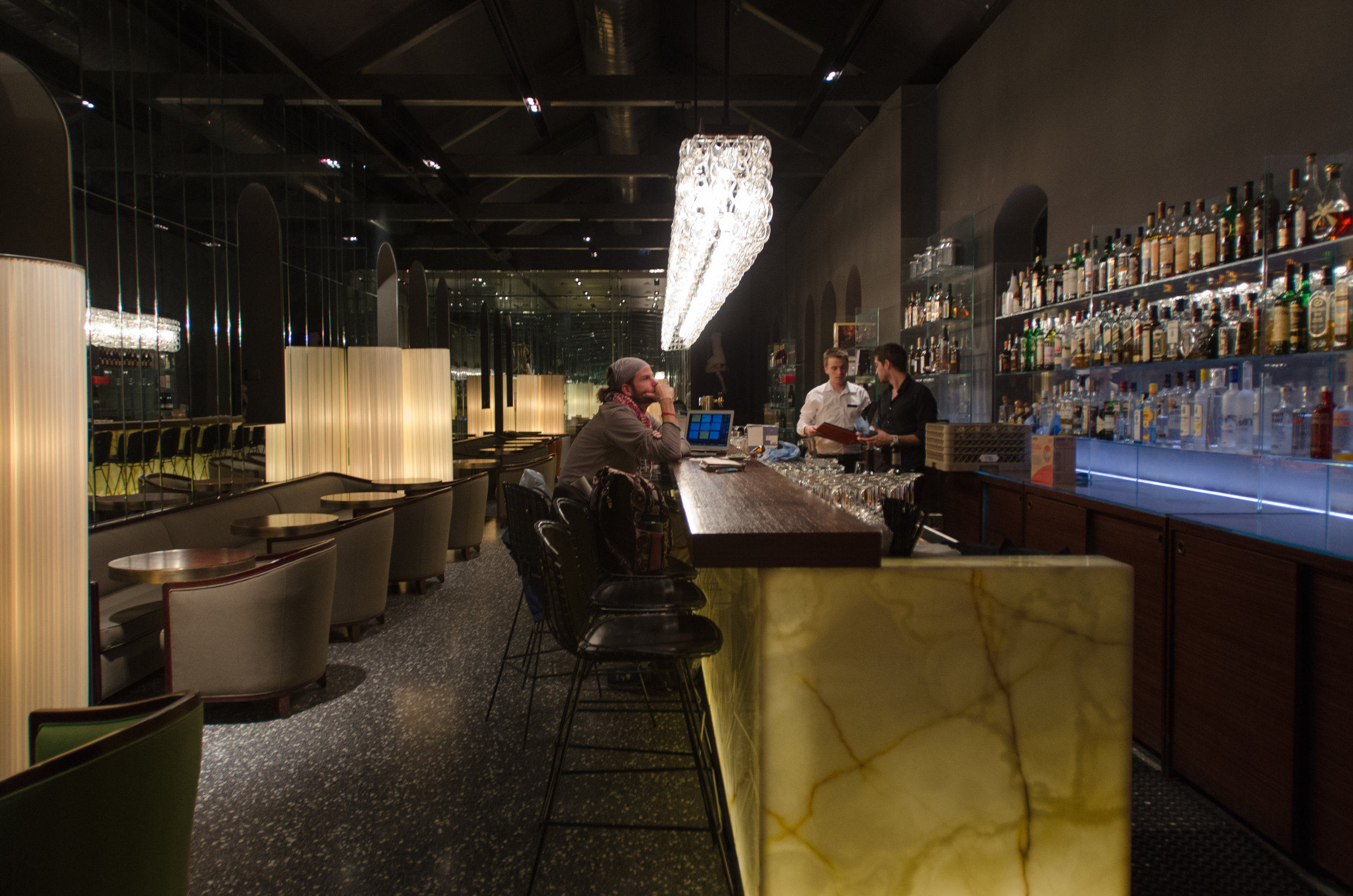We headed to The Western Wall first. It’s the holiest site (right after the Temple Mount) in the Jewish religion as it’s the only remaining wall that surrounded the Jewish Temple’s courtyard. From my understanding, the Jewish Temple and the Temple Mount itself is so important because, according to Judaism, it’s where Adam was created among many other significant events recorded in the Bible. The first temple was built by Solomon (son of David) and then destroyed by the Babylonians. The second temple was built by Zerubbabel and then destroyed by the Romans. It was sometime at the end of this ‘Second Temple era’ that it’s believed the current walls were built by Herod the Great. (I think.) According to (Jewish) TRADITION! (sing it Mom, I did that for you) it’s believed the third and final temple will be built here.
When we arrived at the Wall, Andrew and I stood behind a high dividing wall set up in the middle of the square dividing it into a large section for men and a smaller section off to the right for women. I stood and watched the men for awhile performing lots of Bar Mitzvahs with a few older men praying against the wall. It was full of life. There was singing and dancing and younger boys-turning into men were hoisted on fathers shoulders and led back to their awaiting families, with women on the other side of the wall watching all of the activity.
Obviously I could not go into the men’s side, so when I spied the entrance of the women’s side, I marched right in. There was no singing and dancing and cause for celebration. Instead, I was faced with the reality of the wall’s nickname; The Wailing Wall. Women anxiously pushed (but not in a rude way, just in an urgent I need to pray real bad kinda way) their way towards the wall to reach out and stuff a prayer written down into a crevice or lean up against it as they whispered their prayers into the stones before them.
Some women stood a few rows away from the wall with open prayer books and Bibles (I think, I’m assuming, they were Bibles) crying and praying. Some silently. Some out loud. It was powerful. I haven’t been so surrounded by such fierce prayer since… since… I don’t know when. For someone who hasn’t exactly been practicing, I was surprised by how much it took my breath away. There was a certain charge to the air. I’m sure it was the general energy of all of the women there, but I have to think it was more than just their (our) energy alone. As I walked out a mother and daughter walked backwards out of the designated women’s side to the open square, like they couldn’t turn their back on the Wall. It made me smile as I followed, facing them as we walked out at the same time.
Ok, so what’s confusing to me is that even though the Wall is technically a part of Temple Mount, Jews aren’t even allowed on Temple Mount itself because according to the Torah, it is forbidden due to it’s sacredness. I feel I need to take a course on Judaism and Islam in addition to Buddhism and Hinduism. Can one study all of this out of curiosity? If only…
Fortunately, visitors like myself are allowed to cross over The Western Wall into the designated Temple Mount area. This area is also the site of the Dome of the Rock and Al-Aqsa Mosque. Although it’s under Muslim control, The Rock (which resides in Dome of the Rock), according to Jewish TRADITION! is where Heaven and Earth meet. The (Sunni) Muslims regard Temple Mount as the third holiest site in Islam. It is the ‘Noble Sanctuary’ where Muhammad ascended into heaven. The Dome itself is one of the oldest Islamic structures in the world. This ownership dispute between the Jews and Muslims is at the top of the Arab-Israeli conflict.
So just like that, we were out of intense Jewish TRADITION! and in the middle of a calm Muslim garden and pavilion outside of Dome of the Rock. Not allowed inside the Dome of the Rock, Andrew and I sat in the sun until we were kicked out for prayer time.
Moving onto the third religion of the day, we walked through the Old City to the Christian Quarter. I have to admit, walking through the narrow streets and up the stairs past different Stations of the Cross- like where it was ACTUALLY a Station of the Cross (not just a plaque on a church wall), I felt a wave of “Oh Jesus was a real person?” wash over me. When you grow up in the Catholic Church taught to believe in God, it can feel a bit forced and in a way, mythical at times. Or maybe I’m just a bad Catholic… I mean, obviously, I’m a bad Catholic. A few people I went to high-school with probably already have made a list of reasons to back up this claim.
But being in the Old City in Jerusalem and walking past these clearly marked Stations towards the Church of the Holy Sepulchre makes being a Catholic and the plight of Jesus a bit more real. I’ve gone to a Catholic school my whole life, and I’ve never heard that the Hill of Calvary (where Jesus was crucified) is currently an altar that looks like a mini church built inside the Church of the Holy Sepulchre. It makes everything more believable.
Furthermore, the Sepulchre (tomb) is right at the entrance of the church under a line of candles and more often than not, kneeling pilgrims kissing the rock itself that Jesus is believed to be buried underneath. It is also believed that he will be resurrected at this very spot as well. Today, the Church is shared between Eastern Orthodoxy, Oriental Orthodoxy and Roman Catholics. A Muslim family holds the keys to the Church itself to avoid conflict between the different Christian sects.
Worn out by religion, we headed over to the swanky hotel our couchsurfer host, Meidad was working and told us to meet him. He was full of enthusiasm when he met us and called us out on looking worn out. I think he thought it was from the four and a half months of travel, even though it was more from the day making sense of three different religions and one history. He poured us a much needed glass of wine, directed us to the rooftop restaurant for some warm bread and a beautiful view of the city, and then took us home with him at the end of his shift.
